

17 Best Places to Visit in Vietnam
Written by Jess Lee Updated Aug 30, 2023
Vietnam is an astonishing mix of natural highlights and cultural diversity.
The scenery ranges from jagged peaks seen from winding mountain passes down to verdant paddy fields painted every shade of green in the palette, while Vietnam's long history and multicultural population (with over 50 ethnic minority groups) make a trip here rich in heritage.
Outdoor lovers can get their teeth into the countryside within the numerous national parks, where hiking, biking, and kayaking are popular things to do, but Vietnam's most famous natural tourist attraction, the spectacular karst seascape of Halong Bay, is one natural sight that even the more slothful can experience up close on a cruise.
While the rural areas brim with lush panoramas, the big cities buzz with contemporary life and provide ample opportunities to get stuck into Vietnam's tasty culinary highlights.
This fascinating country is full of surprises and is one of Southeast Asia's most underrated destinations. Plan your sightseeing with our list of the best places to visit in Vietnam.
1. Halong Bay
2. ho chi minh city, 4. phong nha-ke bang national park, 7. sapa countryside, 9. nha trang, 10. cu chi tunnels, 11. ba be national park, 12. mekong delta, 13. cat ba island, 14. ha giang, 15. phu quoc island, 16. con dao islands, frequently asked questions, when is the best time to visit vietnam.
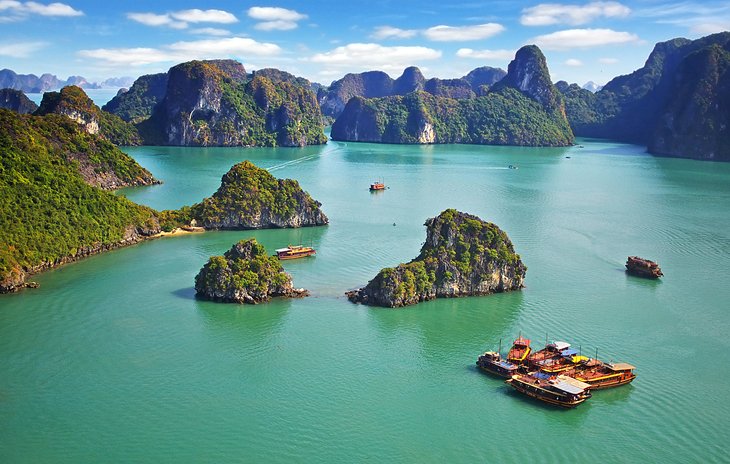
The karst seascape of Halong Bay is one of the best places to visit in the world for spellbinding sea views and is a UNESCO World Heritage Site.
Thousands of limestone islands sit within this bay in the Gulf of Tonkin, eroded into jagged pinnacles by wind and water action over millennia.
With the bay's scenery best seen by boat, this is prime cruising territory. Opt for at least an overnight tour to see Halong Bay's iconic views as a day trip doesn't do it justice.
There are plenty of caves in the bay that can be entered including the Hang Sung Sot, with three mammoth caverns, and the Hang Dao Go, with superbly weird stalagmites and stalactites. For most people though, the highlight is simply cruising amid the karsts and soaking up the changing scenery of pinnacles as you pass by.
There are plenty of different cruise tours to choose from. Check the different itineraries offered before booking as many travelers have left Halong Bay underwhelmed by their cruise.
Author's Tip: If possible, book a tour that takes in neighboring Lan Ha Bay as well as Halong Bay. The karst scenery is just as dramatic here but fewer cruise trips visit. And check if your cruise offers included activities such as guided kayaking (which allows you to experience an up-close view of the scenery).
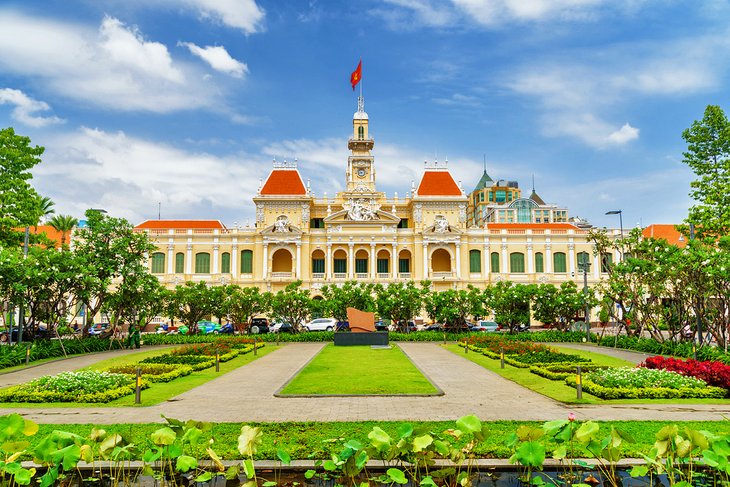
For big city fans, no visit to Vietnam is really complete without a visit to Ho Chi Minh City, the buzzing commercial hub of the country.
The streets are an insane clog of motorbikes and cars, the restaurant and café scene is incredibly cosmopolitan, and the shopping is the best in the country.
At its center is Dong Khoi, a relatively small and easily navigable central district, which holds most of the city's sights.
Here, you'll find the HCMC Museum, with a brilliant collection of artifacts that weaves together the story of the city, and the grand Notre Dame Cathedral, built in the late 19th century.
Check out the old district of Da Kao nearby for some of the best surviving examples of the city's French colonial architecture and also to visit the Jade Emperor Pagoda with its dazzling array of Buddhist and Taoist religious iconography.
Afterwards, the History Museum is a must-do for history fans with stacks of relics on display from various archaeological sites.
For many visitors, the two big-hitter tourist attractions not to miss are just a little out of the center, along Nguyen Thi Minh Khai Street. The Reunification Palace, then known as Independence Palace, was the residence for South Vietnam's president. It's chiefly famous as the spot where North Vietnam's tanks stopped on 30 April 1975, officially ending the war. It's a completely fascinating place to visit complete with 1960s furnishings still in situ.
Nearby is the War Remnants Museum, which although very obviously biased, paints a disturbing picture of the brutality of war and the many atrocities committed by US Forces during their Vietnam campaign.
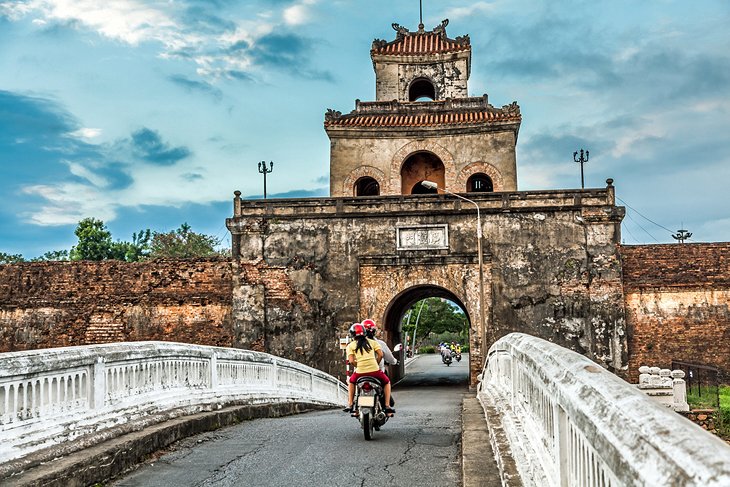
One of Vietnam's most historic towns, Hue is packed to the brim with relics from the reign of the 19th-century Nguyen emperors.
Sitting along the banks of the gorgeous Perfume River, the Imperial Enclosure is a huge site set within walls that sprawl for 2.5 kilometers.
While touring the grounds check out the gorgeous Ngo Mon Gate, the Thai Hoa Palace with its finely lacquered interior detailing, the Dien Tho Residence where the Queen Mothers would live, and the Halls of Mandarins with its preserved ceiling murals.
A dazzling number of historic sites lie outside the Imperial Enclosure walls as well.
One of the nicest ways of visiting a collection of outlying sites is by taking a riverboat cruise on the Perfume River. A day cruise can take you to visit several royal tombs along with some pagodas.
If you're short on time, the best tomb to visit is the Tomb of Tu Doc and the most important pagoda in the area is the Thien Mu Pagoda, with its tower that soars for 21 meters high.
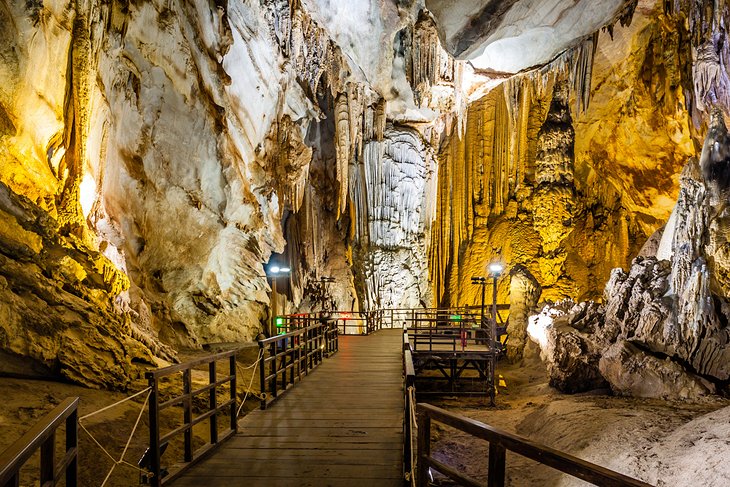
One of the best places to visit in Vietnam for caving, World Heritage-listed Phong Nha-Ke Bang National Park is a dramatic karst mountain formation honeycombed with huge caverns, which are home to superb stalactite and stalagmite displays.
It's best known for its caving activities , which range from multi-day hiking and caving tours for the more adventurous, to simpler half-day trips to caves with easy access provided by boat trips and modern boardwalks, but the national park also offers mountain biking and trekking activities.
The most popular destinations within the park are the Paradise Cave , which extends for a staggering 31 kilometers below ground, and the Phong Nha Cave, where the interior is accessed by boat. Half-day tours can be easily arranged once you're in the area.
The national park's most renowned caverns though are Son Doong Cave (the world's largest cave) , and the Tu Lan Cave with its cavern river system. Access to these, and to certain other caves in the park are restricted to organized tours (ranging from one-day to multi-day expeditions) which are all run by Phong Nha's expert adventure tour company Oxalis . It's well worth booking in advance to secure your spot.
To make the most of your time here, time your visit for outside the rainy season, which runs from October to December, when many of the national park's caves are closed to the public.
You can access Phong Nha-Ke Bang National Park from Son Trach (also known as Phong Nha village).
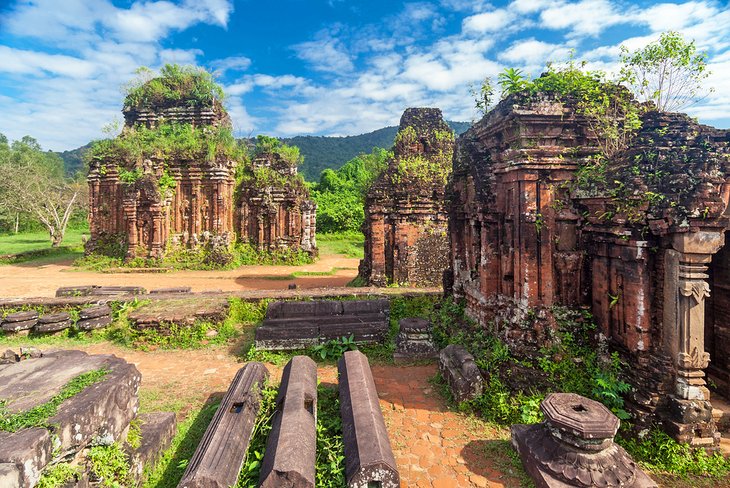
Surrounded by lush jungle-covered mountains, My Son is a ruined Cham era temple city that dates from the 4th century.
This old Hindu religious center was still very much in use during the 7th to 10th centuries and only fell into complete decline and abandonment during the 13th century.
There are around 20 temple structures still standing here, all built of brick or sandstone blocks and showing interesting influences from various Asian empires, including Indian and Malay.
Note that the temples of Group B are the oldest, while Group A once contained the site's most important monument but was destroyed deliberately by US forces during the Vietnam War.
A good museum on-site houses plenty of information on the Cham.
Access to My Son is from Hoi An.
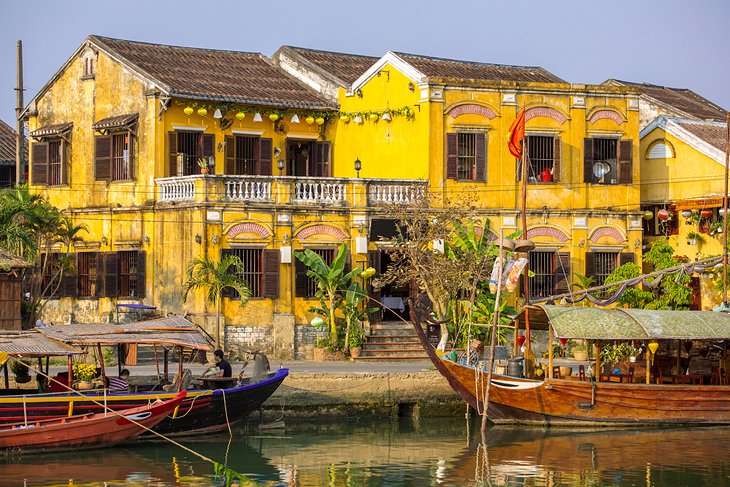
Beautiful Hoi An is the most atmospheric city in Vietnam, with bags of surviving historic architecture.
The old town quarter is a joy to explore, packed to the brim with well-preserved merchant houses that hark back to Hoi An's trading center heyday of the 15th century, when the town was a major meeting point for Japanese and Chinese merchants who flocked here for the local silks.
Plenty of the old merchant houses have been opened to the public, so you can get a taste of these times. The best is 17th-century Tan Ky House, with fascinating architectural and decorative elements.
Hoi An's major symbol is the delightful Japanese Bridge at the western end of Tran Phu Street, while nearby, the Assembly Hall of the Fujian Chinese Congregation is the old town's most highly decorated temple.
There are numerous small pagodas and museums dotted about town, but Hoi An's true charm is found in simply rambling the old town streets admiring the well-preserved facades.
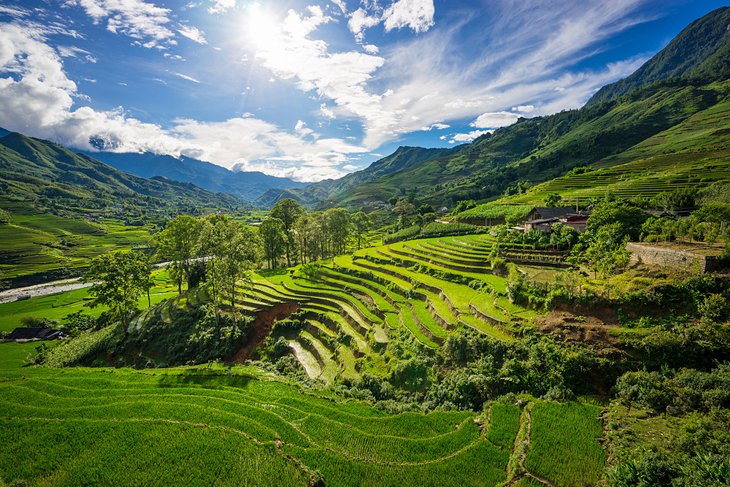
The verdant rice field countryside surrounding Sapa, bordered by the jagged peaks of the Hoang Lien Mountains (often still known by their French colonial era name of the Tonkinese Alps), are home to Vietnam's most beautiful rural vistas.
The deep valleys here are home to a diverse mix of the country's ethnic minorities, including the Hmong, Giay, and Red Dzao people, while the rippling hills are terraced with rice fields and overlooked by the country's tallest peak, Fansipan Mountain.
This is the top trekking destination in Vietnam with oodles of options to trek or day hike between tiny villages and experience the staggering mountain views.
Sapa itself is the main base here - an old hill station and now a bustling and forever growing tourist center that is a stark contrast to the sumptuous tranquil countryside right on its doorstep.
Author's Tip: Keen trekkers looking for more of northern Vietnam's lush mountain vistas may want to skip the busy Sapa scene completely and nudge further 95 kilometers northwest to Bac Ha , where the terraced hill views on hikes between hill villages are just as beautiful. Bac Ha's Sunday market is also a very popular day trip from Sapa.
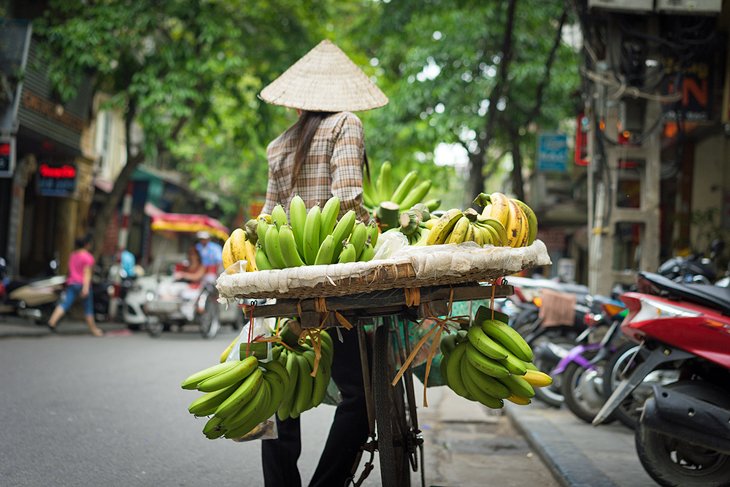
Vietnam's capital is the frenetic heartbeat of the nation and a place that befuddles travelers as much as it charms them.
The motorbike frenzy, pollution, and constant clamor of street vendors can get too much for some travelers, but if you want to dive into Vietnamese city life, Hanoi is the place to do it.
The old town quarter has plenty of dilapidated charm on offer, while history fans should make a beeline here simply to see the bundle of excellent museums.
The Vietnam Museum of Ethnology and Vietnam Fine Art Museum are both brilliant introductions to the diverse artistry of the country, while the Ho Chi Minh Mausoleum is an important tribute to the founder of modern Vietnam.
Author's Tip: It's well worth adding extra time into your itinerary to use Hanoi as a base for exploring the many sights within day tripping distance. In particular, the Tay Phuong and Thay Pagodas (30 kilometers west from the central city), Co Loa Citadel (24 kilometers northeast), and the Huong Pagoda (also known as the Perfume Pagoda; 60 kilometers southwest).
- Read More: Top-Rated Tourist Attractions in Hanoi
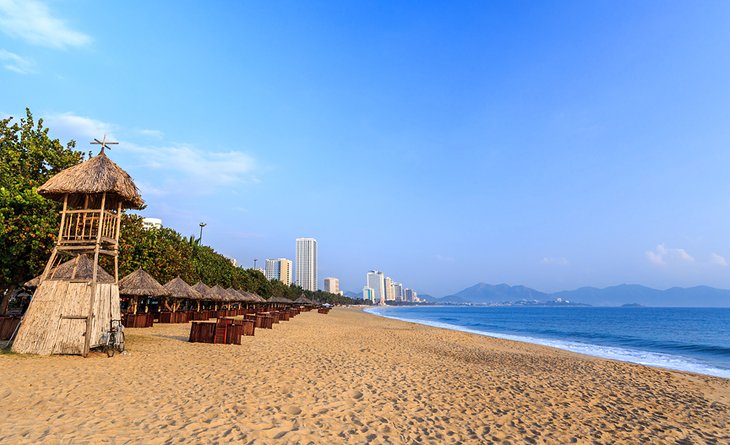
For sandy fun in Vietnam, Nha Trang is king. The well-maintained beach trundles for six kilometers along the shoreline of central Nha Trang city and during summer is jam-packed with local families on vacation, as well as foreign visitors.
There is excellent swimming here with designated swimming areas and manicured lounging areas that make this a great option for relaxing days soaking up the sun and sand.
If you do get bored of sunbathing, the ancient Po Nagar Cham Towers are just to the north across the Xom Bong Bridge and have been used as a place of worship here since at least the 7th century (with some historians saying the site itself has been a place of active worship since much earlier).
There is also an excellent museum dedicated to the work of Alexandre Yersin who discovered the cause of the bubonic plague and founded Nha Trang's Pasteur Institute (which still carries out vaccination programs in Vietnam today).
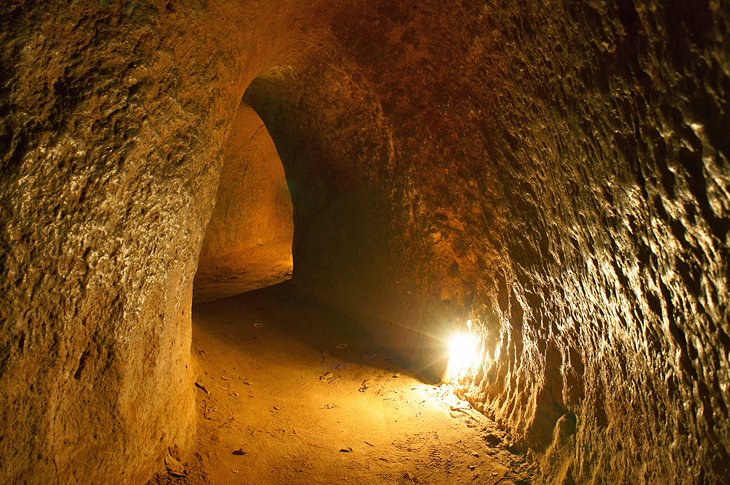
An absolutely fascinating experience for all travelers, not just those interested in Vietnam's modern military history, the Cu Chi Tunnels are an extensive tunnel network that during the war, stretched for more than 250 kilometers, allowing VC troops to operate and communicate in the area surrounding Ho Chi Minh City.
Two short sections of the network can be visited with a guide who'll take you down into the narrow unlit confines, which definitely are not for claustrophobia sufferers.
You will literally be crawling on your hands and knees and some points. You can access the tunnels at either Ben Dinh village (the more popular choice) or Ben Duoc village.
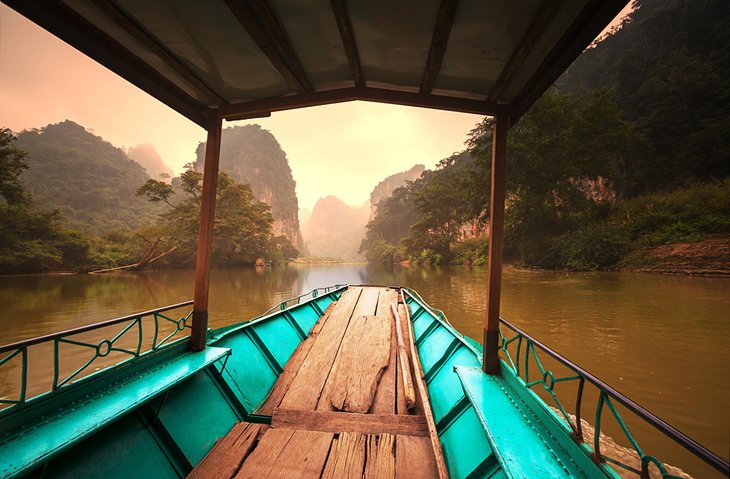
Tranquil Ba Be National Park is absolutely stunning with the three interlinked Ba Be Lakes at its heart, rimmed by jagged karst peaks and thickly forested slopes.
Most visitors come here to take peaceful boat trips or kayak on the lake and explore the caves full of stalactites and stalagmites in the vicinity, but for the more active, there's also excellent hiking and trekking in the hills here between ethnic minority villages.
This is one of the most peaceful spots in Vietnam, and travelers who spend the night here sleep in traditional stilt-house homestay accommodation along the lakeshore, allowing an experience of simple rural life.
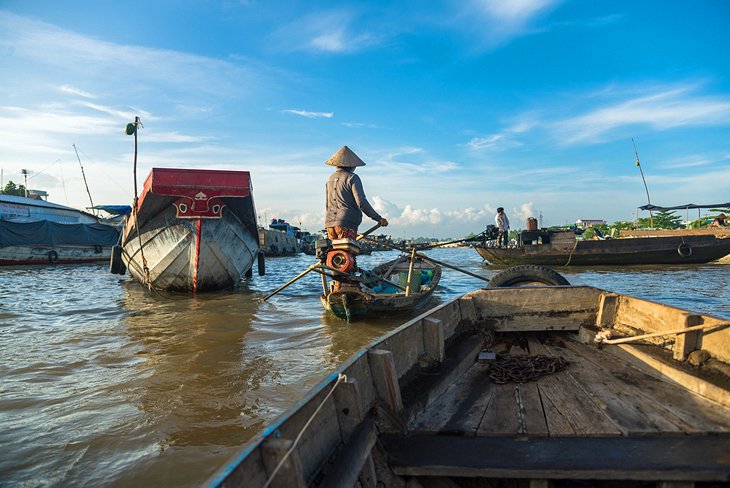
The far south of Vietnam is where the mighty Mekong River finally finds its way to the sea in a maze of waterways that crisscross the floodplain.
Incredibly lush, with paddy field vistas and mangroves, and full of local life, with chaotic floating markets to explore by boat, the delta is one of the most interesting regions for travelers to discover.
Can Tho is the most popular town to use as a base, as it's close to the floating markets of Phong Dien and Cai Rang, while boat trips from Ca Mau allow you to explore the U Minh Mangrove Forest and Cau Mau Nature Reserve.
This area of Vietnam is one of the best to visit for keen bird watchers and nature lovers , as it is home to both Tra Su Bird Sanctuary Forest and Bac Lieu Bird Sanctuary.
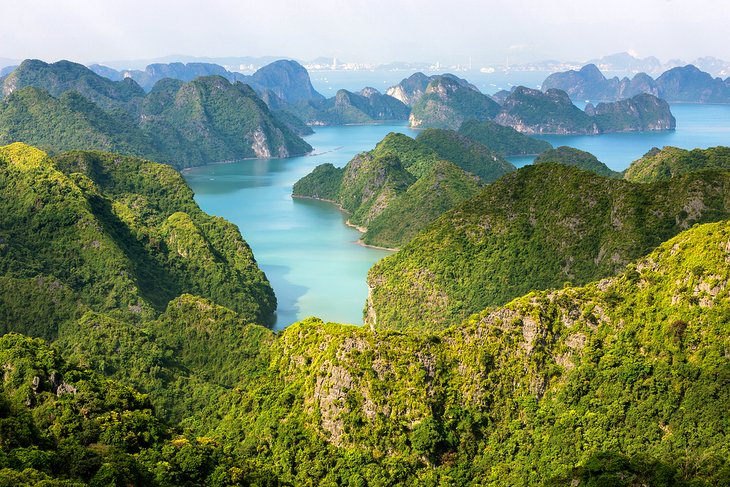
One of Vietnam's major centers for activities and adventure travel attractions, Cat Ba Island sits on the western edge of Halong Bay.
This is the best place to visit if you want to organize cruises and kayaking trips in Lan Ha Bay, which lies off Cat Ba's southern coast. Lan Ha Bay is a less visited seascape of karst islets and outcrops that makes for a quieter alternative to Halong Bay.
Off the water, much of Cat Ba's dense jungle interior is part of Cat Ba National Park, where hikers can spot plentiful birdlife, as well as animals such as macaques.
For many visitors, though, Cat Ba is all about climbing opportunities. Climbing excursions here utilize both the island's limestone cliffs and Lan Ha Bay's outcrops, providing experiences to suit both complete climbing beginners and experienced climbers.
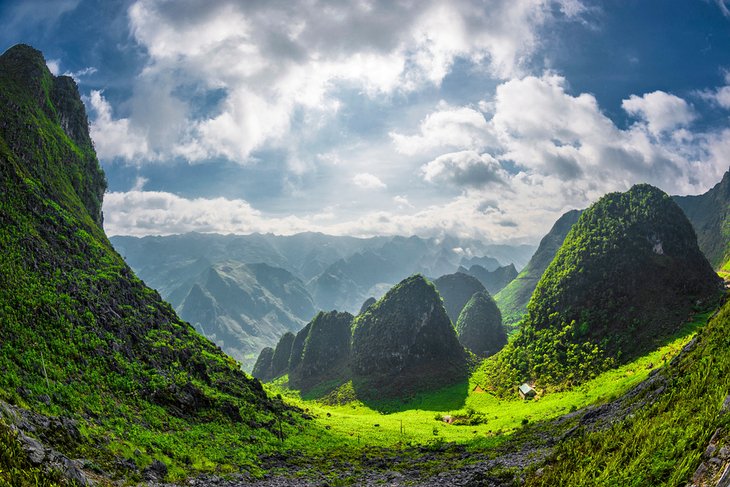
The emerald-green karst mountain landscapes along Ha Giang's mountain passes make this far-north province prime territory for scenic road-tripping by either motorbike or car.
In particular, the twisty Quan Ba Pass between Ha Giang town and Tam Son provides panoramic vistas of the karst plateau and its jagged limestone outcrops, while the zigzagging Mai Pi Leng Pass between Dong Van and Meo Vac offers dizzying views of the lush mountain scenery and narrow valleys below.
Time your visit to coincide with one of the area's market days, when traders from the surrounding mountain villages pile into town. Dong Van's Sunday market is one of the best.
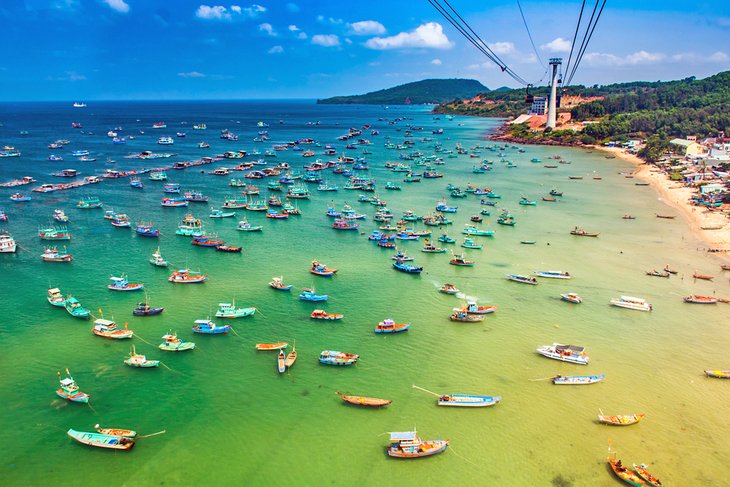
Sitting 45 kilometers off the southern coast of the country, in the Gulf of Thailand, Phu Quoc is a densely forested island, speckled by sweeps of white-sand beach that attract plenty of sunseekers during the winter dry season.
Dry season (November to May) is also when the island's underwater and on-the-water tourism attractions spring into action, with plenty of dive sites in the waters just offshore, as well as opportunities for snorkeling, kayaking, and boat trips.
Many of the main boat excursions head to the An Thoi Islands, just to the south of Phu Quoc, which is home to the best snorkeling in the area.
Off the water, the Phu Quoc cable-car provides bird's-eye views for eight kilometers, soaring over the seascape and islands, all the way from Phu Quoc to the island of Hon Thom in the An Thoi Islands.
Phu Quac is accessed by plane or regular ferries from the mainland towns of Rach Gia and Ha Tien. As Ha Tien lies very close to the southern border crossing with Cambodia, the island is a popular first (or last) stop-off in Vietnam for overland travelers.
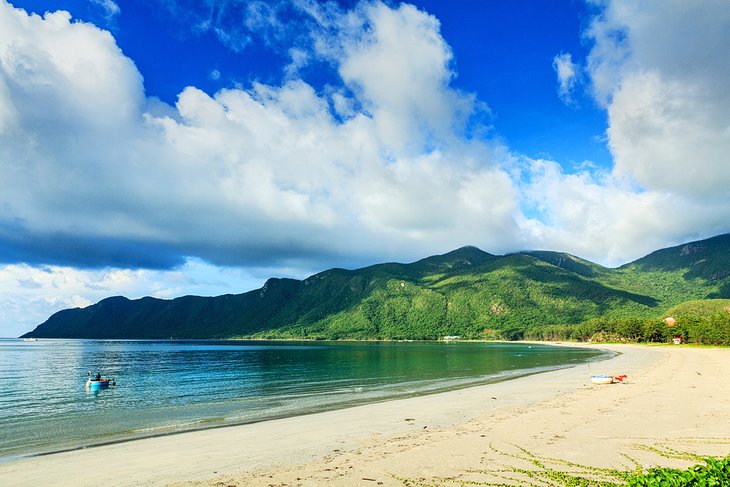
This remote island group lies around 160 kilometers offshore in the South China Sea and is renowned among divers as one of the best places to visit in the country, both for the variety of sea life and for the coral reefs.
Much of the Con Dao Islands, and the surrounding water, is a protected wilderness area, with the island shores home to nesting turtles, and dense forest still covering the island interiors.
The main island, and prime base for visitors with all the accommodation and things to do, is Con Son Island, which has sweeps of sand strung out across its coast that attract beachgoers looking for a relaxed sun-soaked getaway, as well as divers.
Even if you're here mostly for the beach, make sure to explore the historic sites of Con Son Town (the island's only settlement) including Phu Hai Prison, Bao Tang Con Dao Museum, and the prison known as the Tiger Cages, which document the dark history of this isolated island group.
Con Son's remote position led to the island being used to incarcerate political prisoners during the era Vietnam was occupied by French colonial forces, and later by both the South Vietnamese government and the occupying American forces.
Preserved sites including Phu Hai Prison and the prison cages used by the US forces, known as the Tiger Cages, along with Con Son Town's Bao Tang Con Dao Museum, do an excellent job of documenting this history for visitors.
Access to Con Son Island is either by flight from Ho Chi Minh City or by ferry from the coastal city of Vung Tau.
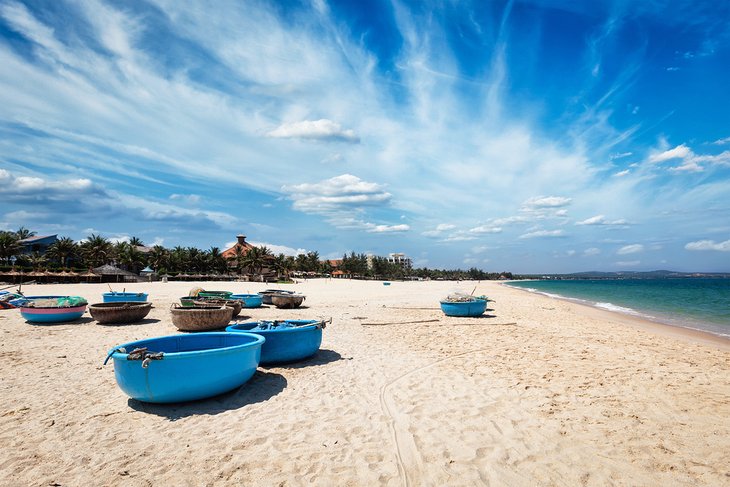
Once a sleepy coastal fishing town, Mui Né has developed into a beautiful beach resort town and a prime destination for windsurfing, sailing, and kitesurfing.
Compared to other beach destinations in Vietnam , however, Mui Né remains relatively unknown - and this means pristine beaches and a quiet retreat for most of the year.
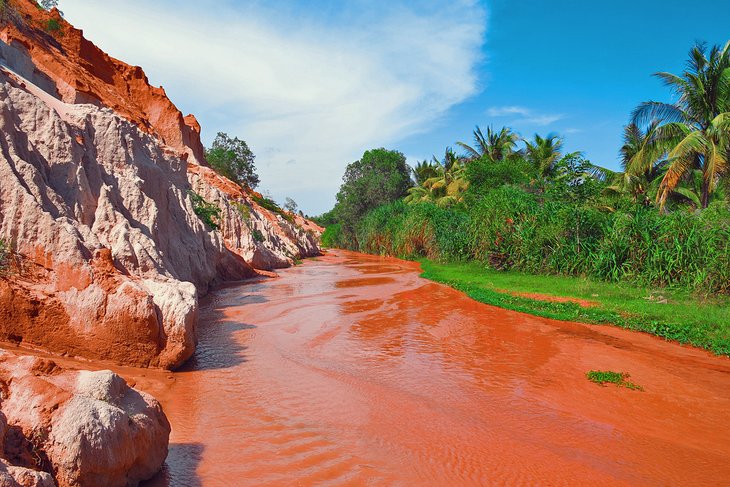
One of Mui Né's most unique attractions is the natural Red Sand Dunes just outside town, where visitors can practice sand-sledding or rent dune buggies for a more adrenaline-charged experience.
Tucked away between nearby fishing villages and towering orange limestone formations, there's the fairy stream, a slow-moving warm stream that almost feels like a walkway because it's so shallow - follow it to the end to reach a waterfall.
For those wishing to explore beyond the coastline, there are also the ruins of the Po Shanu Cham Towers - remnants of the Cham Empire that dominated the area many centuries ago.
Vietnam experiences strong monsoon seasons, where heavy rains hit the cities and the countryside, often causing floods and mudslides. If you're planning to travel around, the best time to visit Vietnam is during the dry season, which lasts from December to February – but there are some exceptions.
The south of Vietnam – where Ho Chi Minh city is located – experiences a more tropical climate, with high temperatures and high humidity year-round. Visiting these areas in the cooler months means less humidity and temperatures in the high 20s rather than the high 30s and 40s, which makes it more comfortable to walk around.
In the north, however, many areas experience an actual winter. Hanoi sees temperatures in the mid- to high teens in December and January – and in the mountains of Sapa in the north, you'll even get to see some snow during these months.
If you're visiting Danang for some beach time or to travel through the ancient town of Hoi An, it's best to arrive between February and May, when water and air temperature are in the 20s – perfect beach weather for enjoying the sand or a dip in the water. The rainy season, and especially the months of September and October, see very heavy rains and often very strong wind storms on the coast, so it's better to stay away from Danang during this time.

More on Vietnam
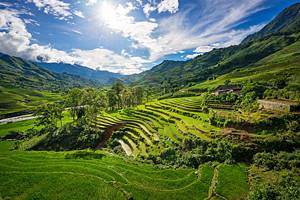

33 BEST Things to Do in Vietnam (Epic 2024 Guide)
- Last Updated: January 23, 2024
From exploring the biggest caves in the world to relaxing on palm-fringed beaches or checking off a visit to a UNESCO World Heritage Site, here’s our list of the absolute best things to do in Vietnam!
We’ve been lucky enough to spend more than a decade travelling the world almost non-stop. And a lot of people ask us, of everywhere we’ve been, which is our favourite country.
Without hesitation, we can honestly say Vietnam is.
This long nation in Southeast Asia is a wealth of culture, activities, good food and amazing people. No matter how much time you spend there you could never run out of great ways to enjoy Vietnam.
Don’t underestimate this place. We spent 7 months travelling this amazing country, getting as off the beaten path as possible, and we still didn’t manage to do everything here.
But don’t stress if you don’t have 7 months, because we’re going to help you narrow down just what you should do on your trip to visit Vietnam.
Check out our ultimate guide to travelling in Vietnam!
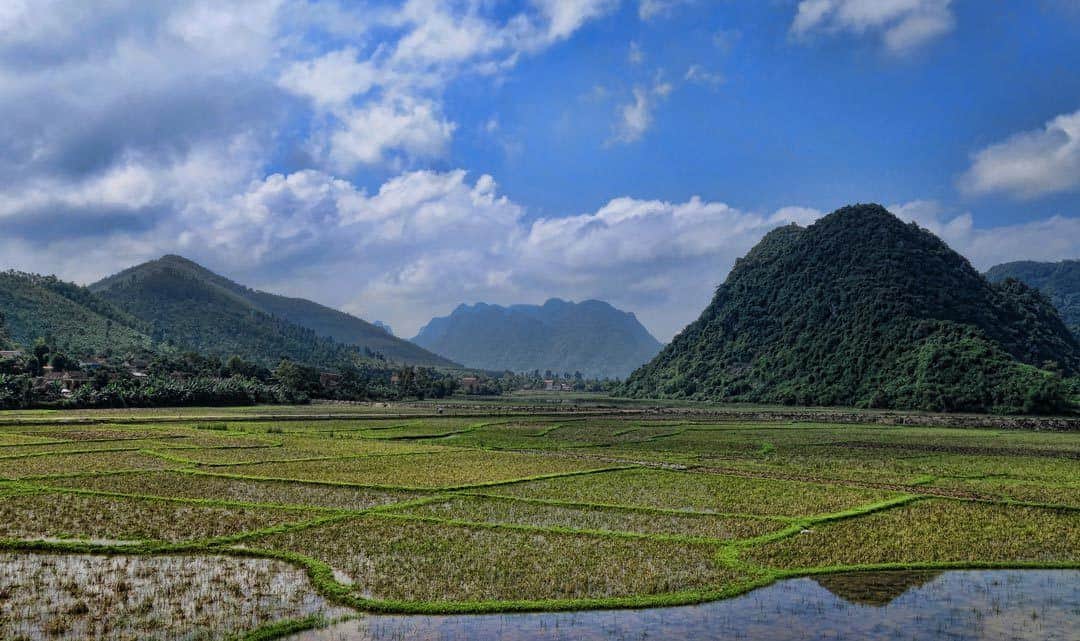
Table of Contents
1) Explore the World’s Biggest Caves in Phong Nha
2) check out vietnam on a motorbike, 3) learn about the local culture, 4) cruise the mekong delta, 5) sandboard down the sand dunes in mui ne, 6) walk the streets of hoi an ancient town, 7) go on a vespa tour, 8) relax on the stunning beaches, 9) explore the my son ruins, 10) cycle through the rice fields in mai chau, 11) go for a trek in sapa, 12) explore the dong van plateau in northern vietnam, 13) visit the sunday ethnic minorities market at bac ha, 14) learn about the war history in the dmz area, 15) visit a local produce market, 16) learn to cook vietnamese food, 17) go on a junk boat cruise in halong bay, 18) have coffee with a local, 19) go canyoning in dalat, 20) be adventurous with your food, 21) enjoy hanoi or ho chi minh city from a rooftop, 22) explore the marble mountains in da nang, 23) stay in a traditional homestay, 24) get lost in the imperial city in hue, 25) go trekking or biking in bach ma national park, 26) visit vietnam’s giant’s causeway at ganh da dia, 27) visit the cu chi tunnels outside of hcmc, 28) learn about the hill tribes in kon tum, 29) visit a pagoda, 30) take a boat ride down trang an in ninh binh, 31) climb the highest mountain in indochina in sapa, 32) go scuba diving in nha trang, 33) take a getaway to a tropical island, the best things to do in vietnam.
If you already have your travels here planned, or even if you’re just thinking about taking a trip and are curious what to see and do, then this list is for you.
From the famous Halong Bay, to the historic spots like the Cu Chi Tunnels, to the various Pagodas, beaches, UNESCO World Heritage Sites, and more, here are some of the best things to do in Vietnam.
Of everywhere we went in Vietnam (and we went to a lot of places), Phong Nha is by far the coolest and best destination in Vietnam for a number of reasons.
Other than being an absolutely beautiful place, an adventure hot-spot and filled with friendly locals, it also has some of the largest caves in the world.
These caves are a real natural wonder located inside the Phong Nha-Ke Bang National Park, and they will blow your mind. They are so amazing it was easy to list the park as a UNESCO World Heritage Site.
There is a cave experience for everyone’s budget. You can explore Hang Son Doong, the world’s biggest cave , on a 4-day expedition at $3000 per person.
Or camp the night in Hang En, the world’s third-biggest cave, at about $300 per person.
Still out of your price range? Don’t worry, there’s plenty of other great caves to check out in Phong Nha, such as Tu Lan Caves, Paradise Cave, Phong Nha Cave, Hang Over and Dark Cave.
Visiting these caves can last anywhere from an hour day trip up to five days.
On the more adventurous ones, you can expect to cross rivers, hike through pristine jungle, be surrounded by limestone mountains and spend time in ethnic minority villages.
On the easier ones, you can tour the caves by boat or by following boardwalks. Don’t miss joining a guided tour of a few of the highlight caves.
The caves are an unmissable part of the Vietnam sightseeing experience.
Make sure you head down to Phong Nha on your trip and explore as many of the caves as possible! But if you can only pick one, be sure to visit Hang Son Doon as it is truly remarkable!
Check out our post about exploring the world’s biggest cave, Hang Son Doong!
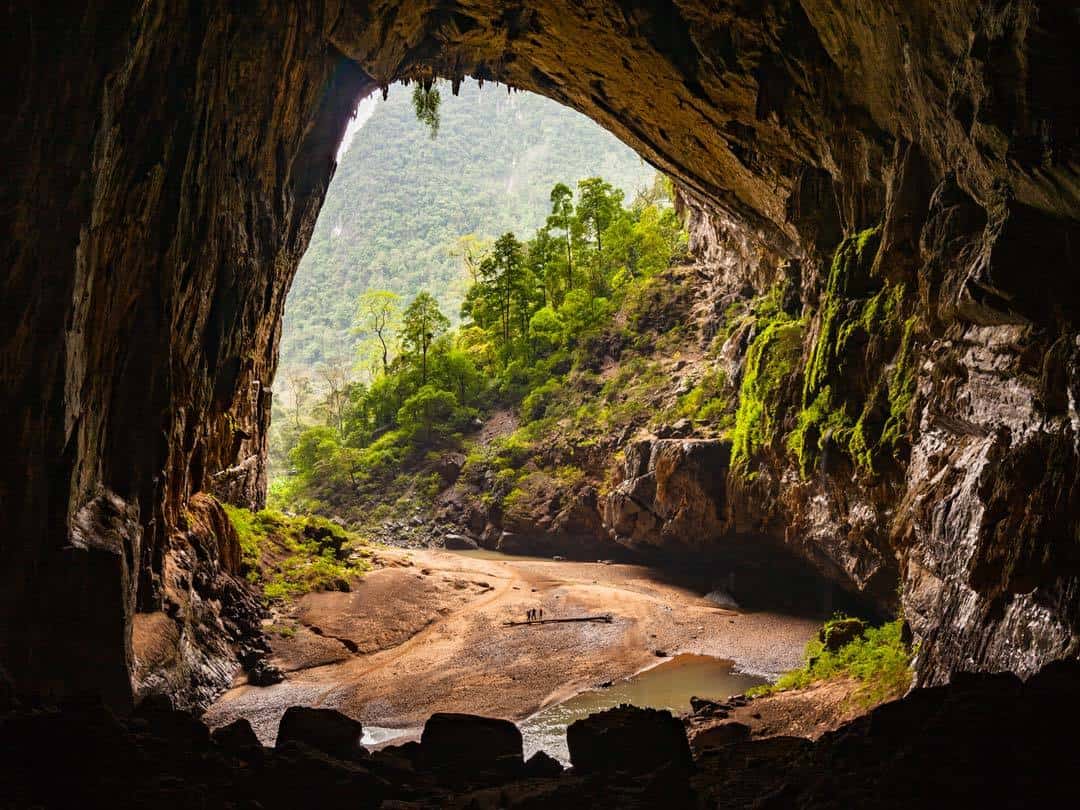
Buy a bike, rent a bike or hire a driver. Either way, seeing part of Vietnam on a motorbike is the way to go.
There is something about having the wind in your face and taking travel slower than usual, and riding a motorbike is the best way to do it in this country.
It’s almost become a rite of passage for a lot of travellers, and you’ll find hundreds of people riding motorbikes the length of the country from Hanoi to Ho Chi Minh City.
But those in the know head up to Northern Vietnam to see the most striking scenery in the country.
Another popular trip is the Hai Van Pass between Hoi An and Hue, which will give you epic ocean views and a dose of war history too.
If you are not a confident rider head to the beautiful town of Dalat and sign up with a company called Easy Riders . They offer trips (from one day to one week) as a passenger on one of their large bikes with an experienced rider.
When you are booking in town just make sure it is a legit company, not a fake one, as there are plenty of them around Dalat.
Check them out on Get Your Guide to book the real version.
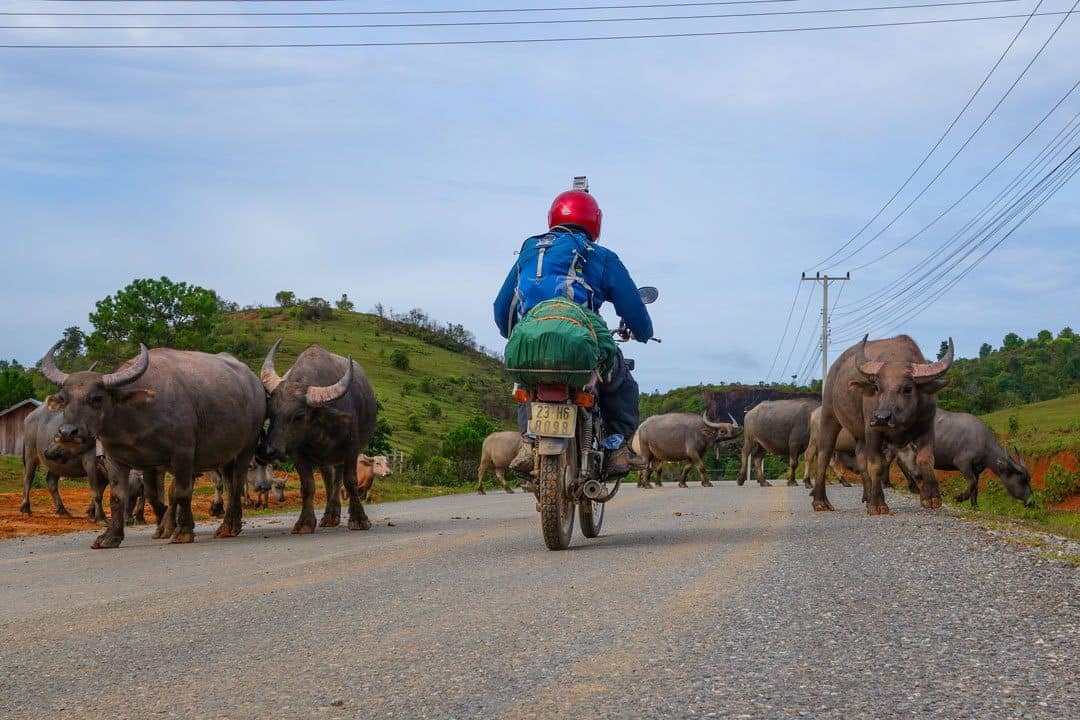
No trip to Vietnam would be complete without spending a decent amount of time learning about the local culture.
A fascinating mix of beliefs and customs has resulted in Vietnamese culture developing a fascinating mix of spiritual elements.
All it takes is spending a bit of time in the temples or with people in their homes to discover how beautiful it really is.
Do yourself a favour and spend some time immersing yourself into the local culture , and you will gain a much deeper understanding of the Vietnamese people.
The best way to do this is to do a homestay, visit different temples and try to head out to some ethnic minority villages. The north is particularly good for this.
Down in the south of Vietnam is the incredible Mekong Delta, which is one of the most fascinating and culturally remarkable places in the country.
This is where the mighty Mekong River finally spills into the ocean, and Vietnamese villagers have flocked to this delta to fish, trade produce and sell goods.
The best way to explore the Mekong Delta is to take a cruise or a boat ride and enjoy the river life. If you only have a few hours do a boat tour from Can Tho or Ben Tre.
If you have more time you can take a 4-8 day cruise from Vietnam to Cambodia along the Mekong Delta. Cruise the Mekong Delta the way you want to.
Get up early and don’t miss the floating markets. It is great to see all the hustle and bustle of life on the Mekong Delta.
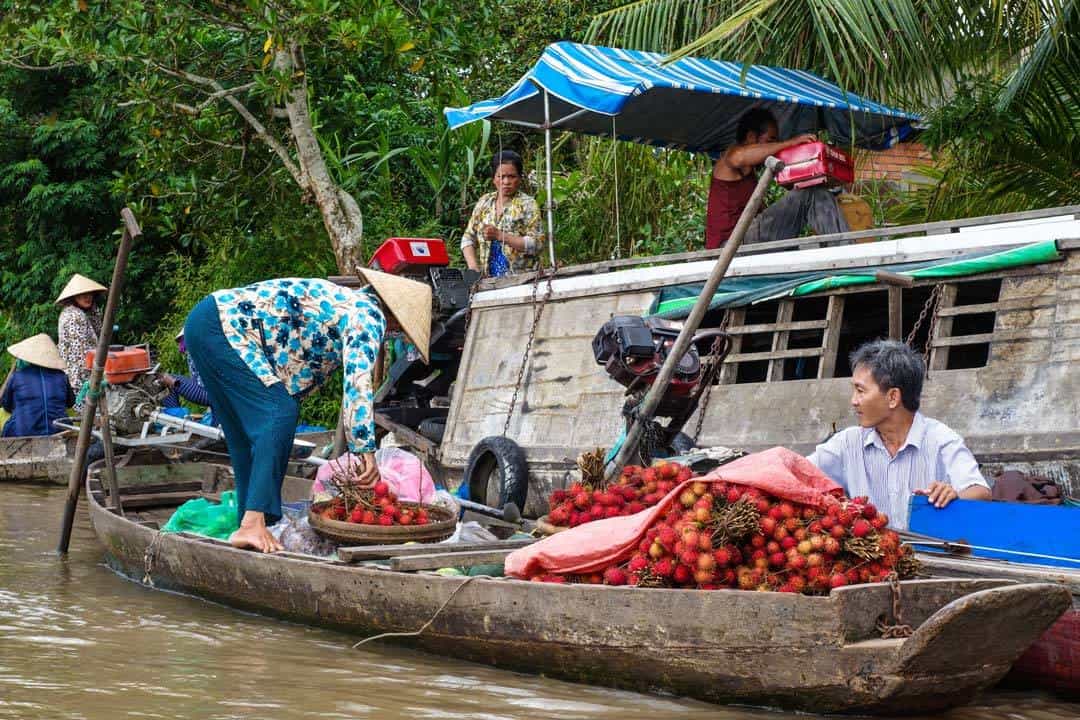
There’s no need to travel to Namibia or Australia to try your hand at sandboarding – one of the best things to do in Vietnam is to try this fun activity in the south!
Just 20 minutes out of Mui Ne you will find the Red Sand Dunes. These are gorgeous and nice to see, but head out further to the White Sand Dunes for the real fun.
These dunes are more breathtaking, especially at sunset. You can hire a sandboard from one of the local vendors and have fun going down the semi-steep slopes or book a tour on Get Your Guide .
The ancient port town of Hoi An in Central Vietnam is one of the most beautiful spots in the country, and should not be missed on your list of what to do in Vietnam!
Yes Hoi An is a busy tourist town, but that is for good reason. Hoi An is a photographer’s dream, with a mix of eras and styles from the Japanese Covered Bridge to the colourful French colonial buildings to wooden Chinese shophouse to Vietnamese tube houses.
Hoi An is simply gorgeous! The Hoi An ancient city is one of the top attractions in Vietnam.
Get up early and explore the streets of the Hoi An ancient town when the locals are up and the tourists are still sleeping.
READ MORE: Don’t miss our blog post on all the great things to do in Hoi An.
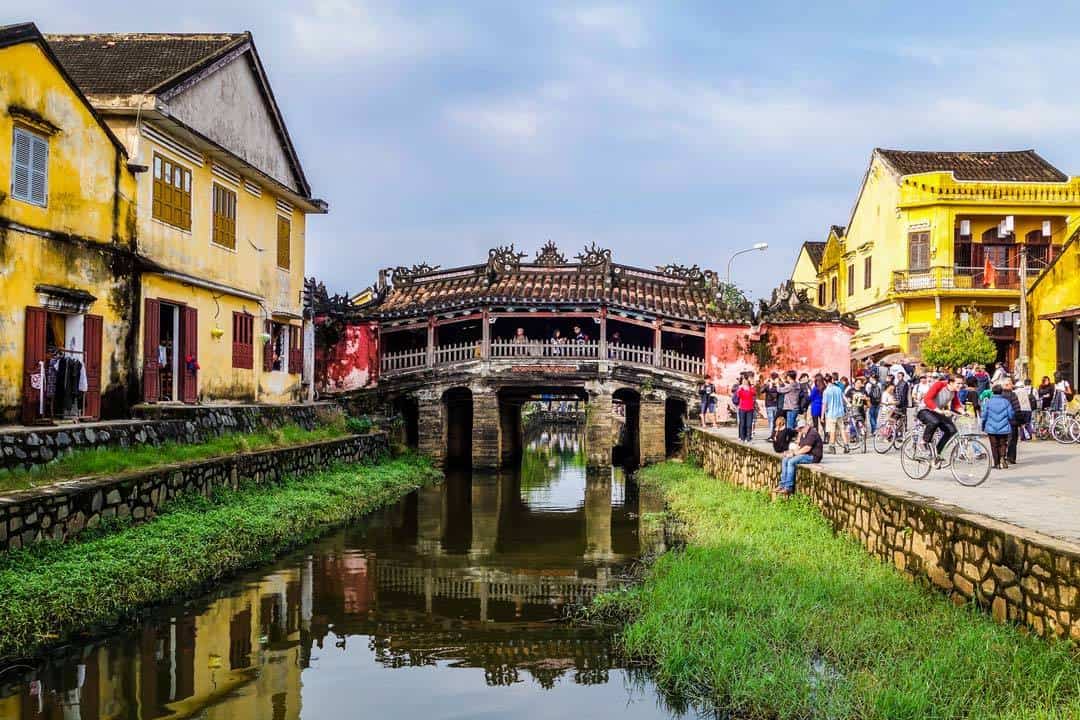
As we’ve already mentioned, one of the most valuable ways to experience Vietnam is to learn about the culture. A great way to do this is to join a guided tour in some of the coolest places in the country.
There’s an amazing company called Vespa Adventures, and they run different Vespa tours in Hoi An, Hanoi, Hue and Ho Chi Minh City.
We did one of their tours in the ancient town of Hoi An, and it was such an amazing way to experience how locals live.
Hopping on the back of a Vespa scooter and riding along the banks of Thu Bon River stopping off at local villages we met local families, learnt about weaving, boat building and of course ate lots of local dishes.
We highly recommend this Vespa tour in Hoi An, Ho Chi Minh City or anywhere else in the country. Check out our article on our experience .
Riding a Vespa is a fun and popular way to explore many of the Vietnam tourist attractions.
With Vietnam’s very long coastline, it’s no surprise that it has some beautiful beaches.
Don’t miss out on the opportunity to relax and enjoy the white sands, crystal clear water and fresh seafood coming to you without having to get off your chair.
While Vietnam isn’t as famous for its beaches like other Southeast Asia countries (think Thailand, Philippines and Indonesia), there are still some epic spots.
Check out An Bang Beach or Cua Dai Beach which are both in Hoi An, or Doc Let Beach on the Hon Khoi Peninsula.
Some of the best places to visit in Southern Vietnam are the Con Dao Islands.
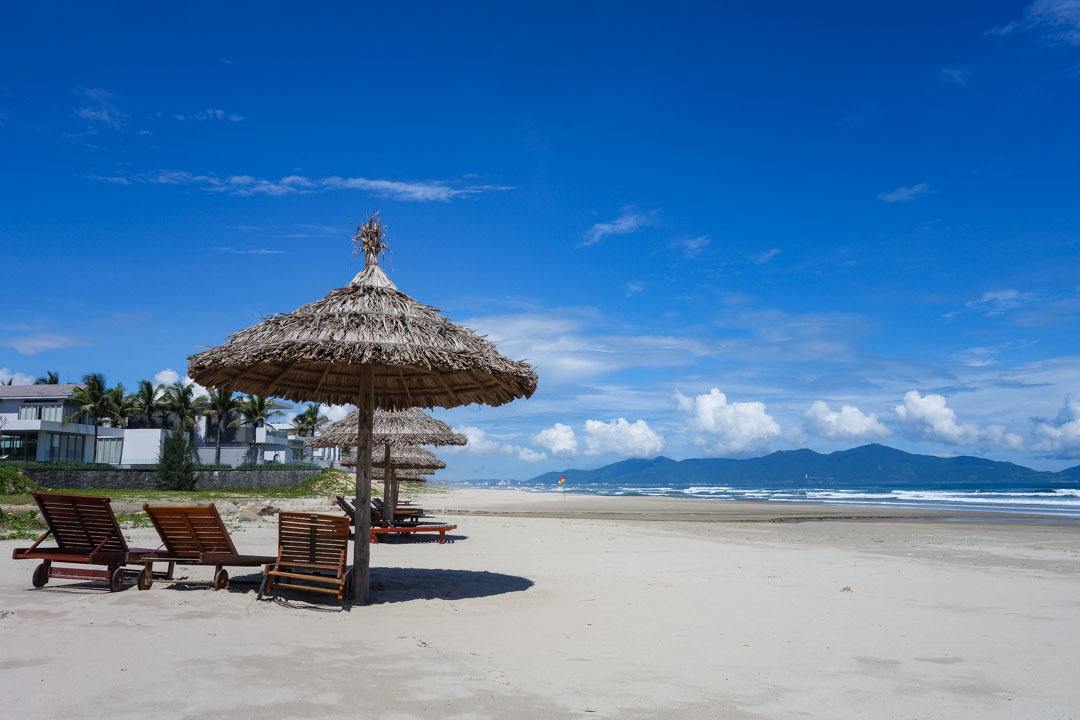
The My Son Hindu Sanctuary is a great example of the ancient Champa civilisation and is the longest inhabited archaeological site in Indochina.
While it’s not as large or as impressive as another UNESCO World Heritage Site of Angkor Wat, it’s still pretty epic, and should be added to your itinerary of places to visit in Vietnam.
This UNESCO World Heritage Site is located near the town of Hoi An. Unfortunately, it once was a lot larger than it stands today but during the Vietnam War some of the site was destroyed.
It is still definitely worth visiting and learning about this era. Visiting the Hindu-themed ruins you will be impressed by the beautiful stone sculptures, temples and tower ruins.
Do yourself a favor and book into a tour if you’d like to get the most out of your time there.
Want to read more about this interesting place? Check out our article on the My Son ruins .
Mai Chau is a gorgeous, bucolic village only a few hours from Hanoi.
If you’re looking for a wonderful and unique experience, don’t miss doing a homestay here and riding around the rice fields.
This is a beautiful way to see rural Vietnam and learn about farming and traditional-style textile manufacturing. This is a popular area for visitors, and once you get there you will see why.
You can stay in a traditional homestay or an eco-lodge and tour around the area. Trust us, you won’t get bored in Mai Chau.
Rent a bicycle and ride through the rice fields, trek up in the Pu Luong Nature Reserve, explore some caves, take a boat ride on Hoa Binh Lake and do some shopping for local textiles.
The best time to visit the area is from October to April as these months are the most pleasant. Check out our article if you would like to read more on Mai Chau .
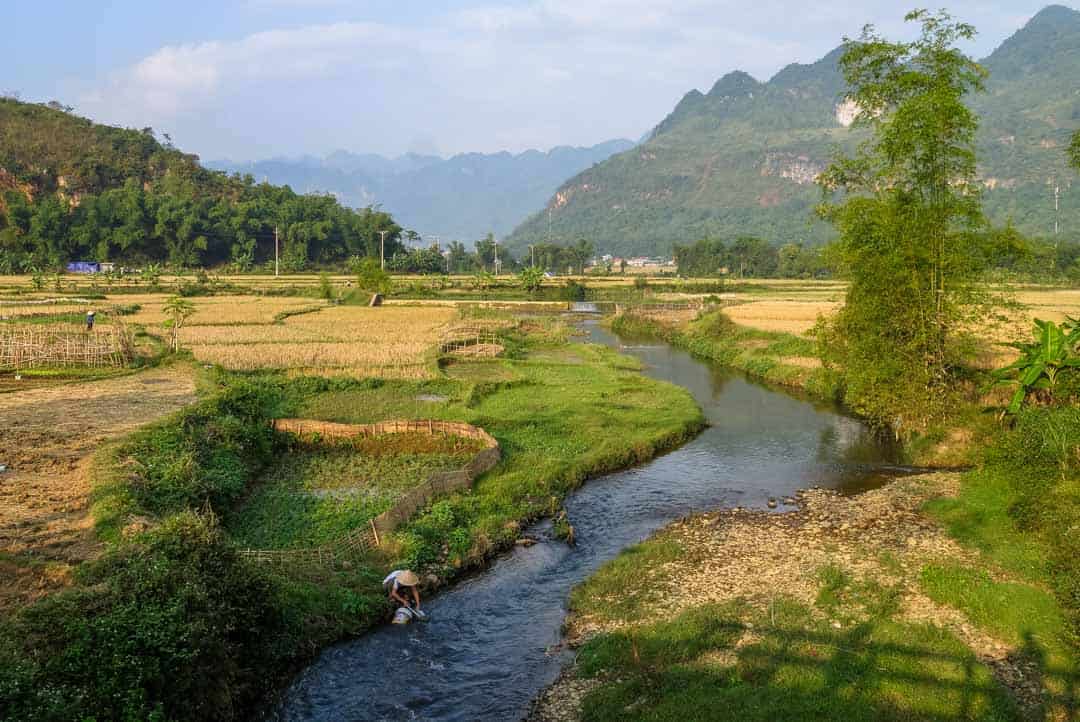
If you want to go trekking in Vietnam, Sapa is one of the best places to visit.
With rolling rice terraces of the Muong Hoa Valley and mountains towering all around, you can spend weeks here hiking in the area.
There are treks to suit everyone’s time frame and fitness level. You can learn about the hill tribes in the area such as the Hmong, Tay and Dao tribes.
They will happily greet you when you hope off the bus, offering their services for trekking or a homestay. Stay a day to chill out in Sapa after your activities.
This place is gorgeous to relax and take in the mountain fresh area. Spoil yourself and get a hotel with a view of the mountains.
Check out our article if you would like to read more about trekking in Sapa .
This part of Vietnam really blew us away. Not many tourists get up here, and we have no idea why not.
It is some of the most beautiful landscapes we saw in all of Southeast Asia.
With rolling mountains to rice terraces to beautiful canyons, this place is different around every corner. Hire a motorbike and ride the area yourself or jump on a tour but this trip will be one you will not forget.
The Dong Van Karst Plateau is located high in the mountains in the very north of Vietnam, on the border of China. The area offers stunning narrow valleys with rocky mountain ranges.
In 2010, UNESCO recognised this area as a geological park. This area spreads out over 2,3000 square kilometres over the districts of Meo Vac, Dong Van, Yen Minh and Quan Ba.
It is believed that the rocks of Dong Van contain fossils from up to 600 million years ago. Because you are travelling near the Chinese border, you do need a permit which you can get from Ha Giang.
We recommend giving yourselves at least a week to properly explore the area.
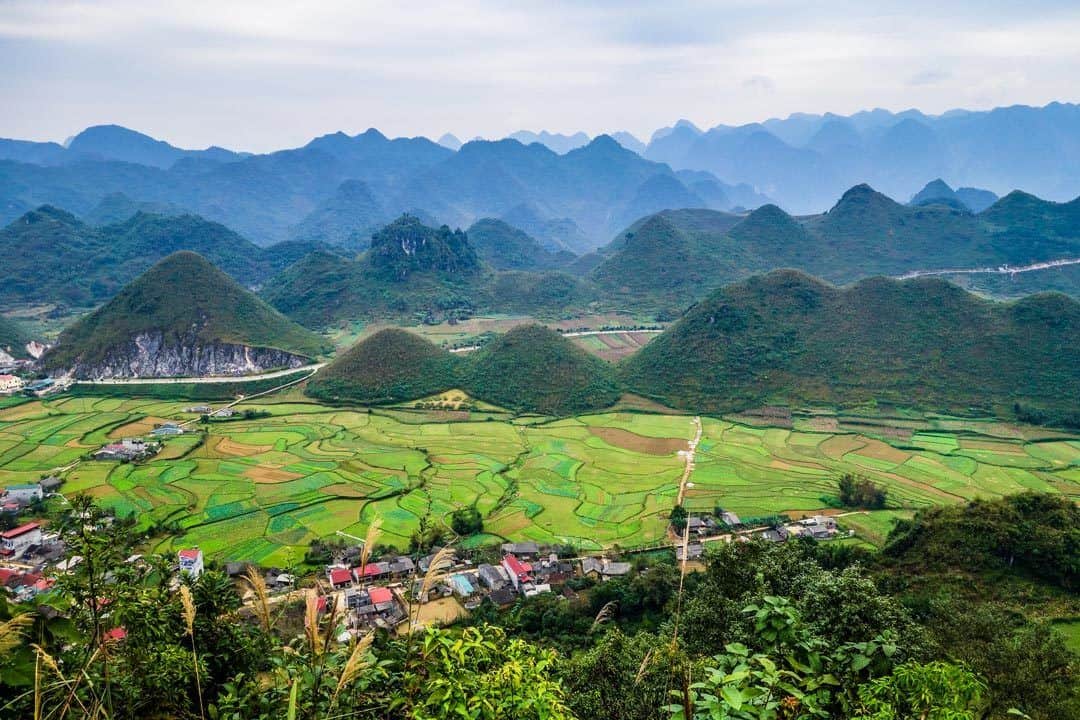
This market isn’t just an ordinary Vietnamese market – The Bac Ha Market is the biggest ethnic market in Vietnam and takes place only on Sundays.
All the ethnic tribes such as Flower Hmong, Black Dzao, Nung, Phu la and Tay, come together to sell their goods.
The market is a living museum full of colours and beautiful smells. If you are interested in learning more about the tribe’s cultures, traditions and unique customs, we recommend hiring a guide to translate your questions.
Please be respectful and ask permission if you want a photo of a person, as some locals do not like it. They are not there for your entertainment, they are just going about their lives.
It’s really a spectacular place and can be done as a day trip from Sapa.
This one is for history lovers. The Vietnamese Demilitarised Zone was an area where a dividing line between North and South Vietnam was drawn as a result of the First Indochina War.
You can visit the DMZ Area include Ben Hai River, Hien Luong Bridge, Hamburger Hill, Khe Sanh Combat Base, Truong Son National Cemetery and learn about what happened in the area by visiting a small museum.
You will visit the Vinh Moc Tunnels and see how people lived underground during the war.
You will learn all about the Vietnam War that had a big significant impact in the area also.
You can get a tour out of Hue or Phong Nha, and you should as it’s one of the best attractions in Vietnam.
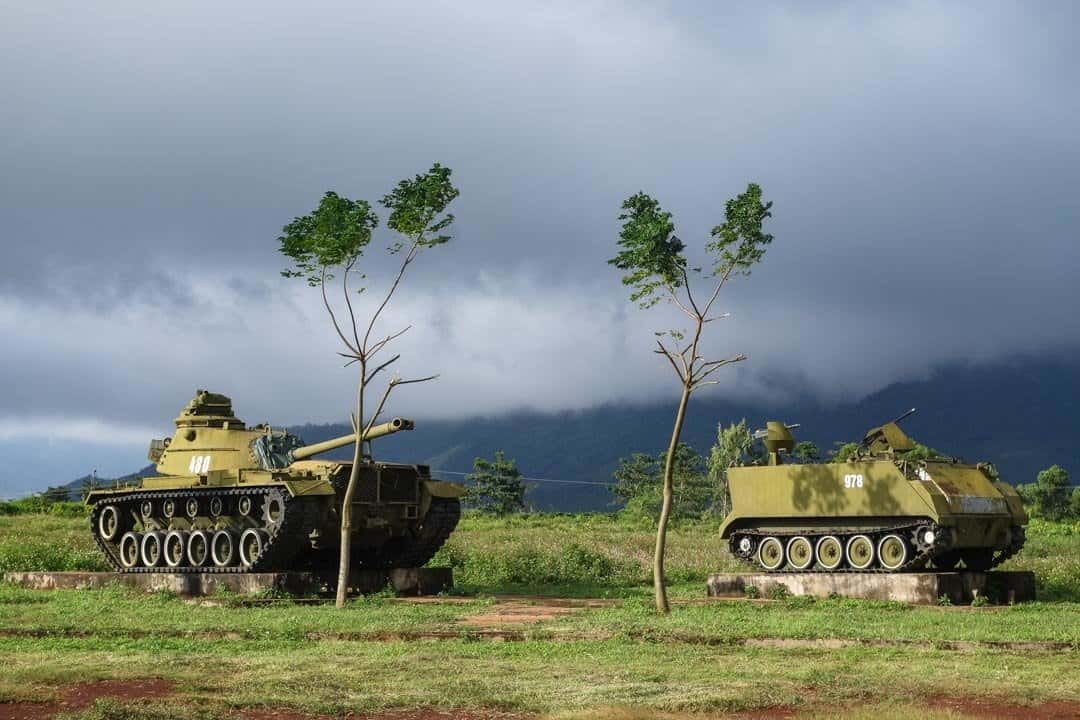
This is one of those things to do in Vietnam that you can tackle in just about every town, and is something that will probably become part of your daily routine anyway.
Vietnam has amazing local produce, and staring at the huge array of fruits and vegetables is sure to leave you not only feeling hungry but also curious about all the different kinds!
Visiting a local produce market is a great way to see how everyday life works in Vietnam. Go for a wander, check out all the different fruits, savouries and other creations, and chat away to the locals.
The best way to really explore a produce market is with a local guide . They will explain how the market is set up, they can translate for you if you have questions for the sellers and farmers and they can explain the weird and wacky foods.
Once you get your head around them, make sure you always have a pocketful of Dong with you whenever you’re out and about to stock up on fresh fruit for the day!
No matter how short your stay is, make sure to visit a local market – it’s a Vietnam must see!
Immersing yourself into the local food is a great way to learn more about a country, and luckily Vietnamese food is some of the best in the world!
There are cooking classes all over Vietnam , and each class will offer different dishes and experiences.
There is such diversity in the food from North to South, so you can literally do one in each major town and you’ll probably learn a new dish each time.
Some of the cooking classes will take you to the markets where you can buy the ingredients and cook it together. We love this type of class as you get to be part of every step of the process.
Coming home from your holiday and knowing how to cook some different dishes is a win, and will ensure you’re forever popular with your friends and family!
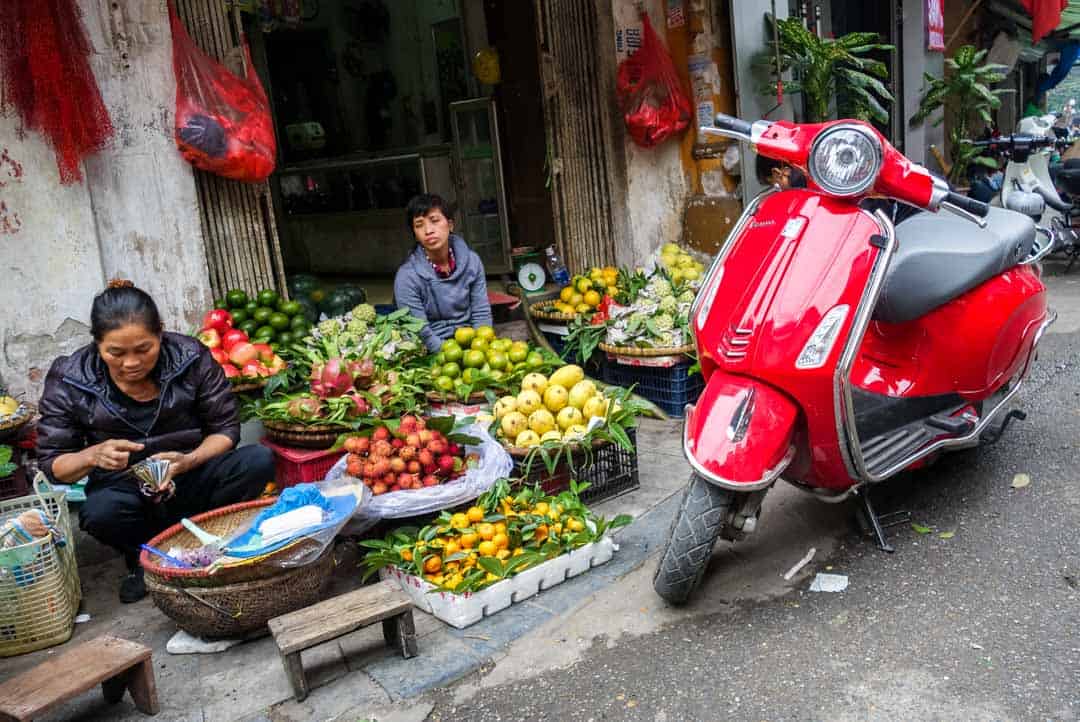
Halong Bay is probably one of Vietnam’s most well-known attractions. Halong Bay, a UNESCO World Heritage Site situated in northeastern Vietnam, is renowned for its breathtaking natural beauty and distinctive karst limestone formations.
Characterized by emerald-green waters dotted with thousands of towering limestone islets topped with lush vegetation, Halong Bay offers a mesmerizing seascape.
Bai Tu Long Bay is part of the famous Halong Bay. This bay is a lot quieter and peaceful compared to the more popular spots in Halong Bay.
With limestone towering islets everywhere you look, Bai Tu Long Bay is best to be seen over a few days on a cruise.
Kayak on the waters, walk on the islands and visit a local village to learn about how the locals live and about the area of Halong Bay.
Make sure to save at least one day to go on a cruise down Halong Bay, it’s one of the best things to see in Vietnam.
You go on holidays to see the new place but also to meet people. Don’t be shy to chat with locals. Practice your Vietnamese and they can practise their English.
It is amazing who you can meet by putting your guard down sometimes. It can be hard to have a real, authentic experience with locals when you travel, so do everything you can to be open to genuine invitations.
If you are interested there are local university students in the bigger cities that have groups where you can contact them for a time and day.
They love chatting with foreigners, just buy them coffee or lunch. Check out Saigon Hotpot in Ho Chi Minh City or Hanoi Kids in Hanoi.

If you want to get your heart racing, go canyoning in Dalat!
We loved this experience in the beautiful French colonial city of Dalat. This day tour is full-on, with waterfalls up to 18 metres high to rappel off, rock slides to slide down and even an 11-metre cliff jump.
It is an action-packed day. The company we went with were so professional and are highly trained.
You can go all out and do it all, or challenge yourself and do what you feel comfortable with
The staff are there beside you the whole time. It is a day you will not forget.
If you’re not the adventurous type, don’t worry! Go on a tour of Dalat , it’s interesting an interesting ancient town on its own.
Want to read about our canyoning experience? Check out our article on canyoning in Dalat .
One of the most interesting parts of travelling is trying all the different food available, and Vietnam isn’t any different.
Every country has their own styles and twists on cuisine, so be adventurous and give them a try. Vietnamese food, in general, is very delicious, but it can also be pretty unusual.
We had duck blood soup when we were in Northern Vietnam and surprisingly it was not too bad.
We also tried monkey brains in Phong Nha, which was a local delicacy served for very special occasions.
If you are invited over to a locals house for a meal, give all the food a try, even if it’s something you’d never normally try.
If you want to learn more about the local cuisine, take a food tour in Ho Chi Minh City , Hanoi, Da Nang or Hoi An.
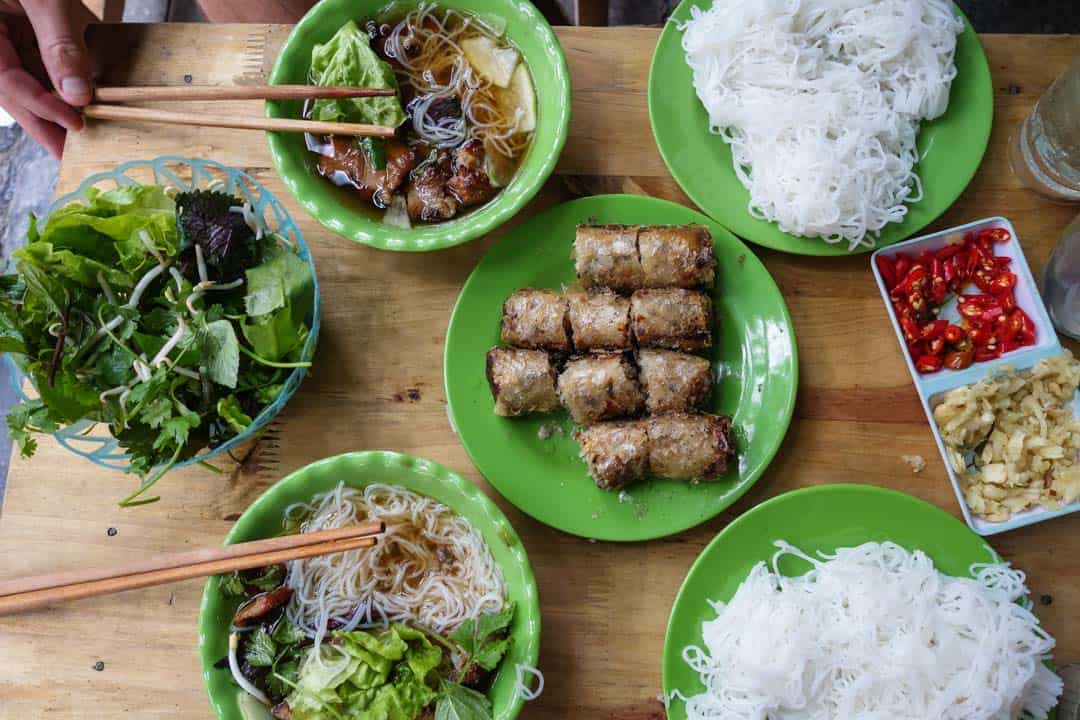
Hanoi and Ho Chi Minh City are both very busy cities, and one of the best places to admire the hustle and bustle is from above on a rooftop.
We found a lot of great bars and cafes near busy intersections or roundabouts and watched day turn into night with the thousands (and thousands) of scooters zipping around below.
It was crazy watching all the traffic take on the large roundabout and the occasional scooter bumps which causes some quick arguing, looking and then they move on.
Check out the EON51 Restaurant and Lounge on level 50 of the Bitexco Financial Tower in Ho Chi Minh City. This has a great view, but you do pay for it with the prices of the drinks and food.
The rooftop views in Ho Chi Minh City and Hanoi are some of our favourite things to see in Vietnam.
Check out our epic list of things to do in Hanoi.
As Vietnam’s third-biggest city, Da Nang is quite awesome. So don’t be surprised if you end up spending more time here than you expected.
Da Nang is in the centre of the country and has a wonderful cultural vibe about it. The food is amazing, the people are cool, and there’s so much to see and do!
If you love beaches, then Da Nang has you covered. There are long stretches of sand perfect for swimming, surfing or sunbathing, and you can find lots of cheap hotels and resorts along them.
The peninsula near Da Nang is a great spot to spend the day, with lots of cool little hikes and coves to check out.
But one of our favourite places in Da Nang is the Marble Mountains , a collection of hills that have been mined for marble over the years and are now left rising out of the flat city landscape.
You can climb them to visit some temples and get gorgeous views over Da Nang. Definitely worth visiting!
Don’t forget to include this highlight on your list of what to see in Vietnam!
Don’t miss out on all the best things to do in Da Nang in our detailed article .
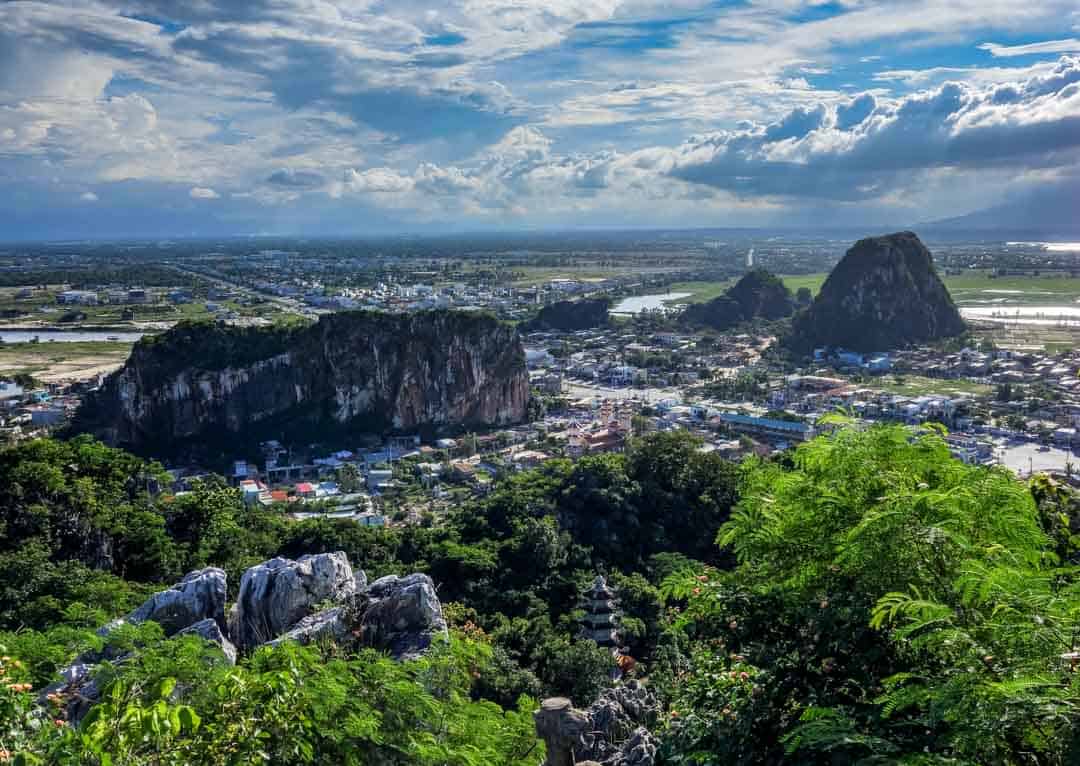
You can do this all over Vietnam. From the Mekong Delta in the south to Sapa in the north, there are homestays in a lot of rural areas.
A homestay is where you stay with locals in their home (not a hotel or bed & breakfast) and you share incredible experiences with them, such as eating together as a family.
You can help the family cook their meals or be involved in daily chores just by showing an interest is why the locals do this.
The Vietnamese people love showing visitors how they live and are happy to teach you more about their culture.
Visiting the Imperial City in Hue will teach you a huge part of the history of Vietnam from when the Nguyen Dynasty ruled the country from 1802 to 1945.
For its history and beauty, the Imperial City is a UNESCO World Heritage Site and well worth the visit.
The Imperial City is a massive complex which features hundreds of monuments and ruins that will take you back in time.
They have a 3D story video which explains a lot and we highly recommend you watch. If you love learning about history , get a guide and go deep into the past .
READ MORE: Check out this post on our recommendations for the best things to do in Hue!
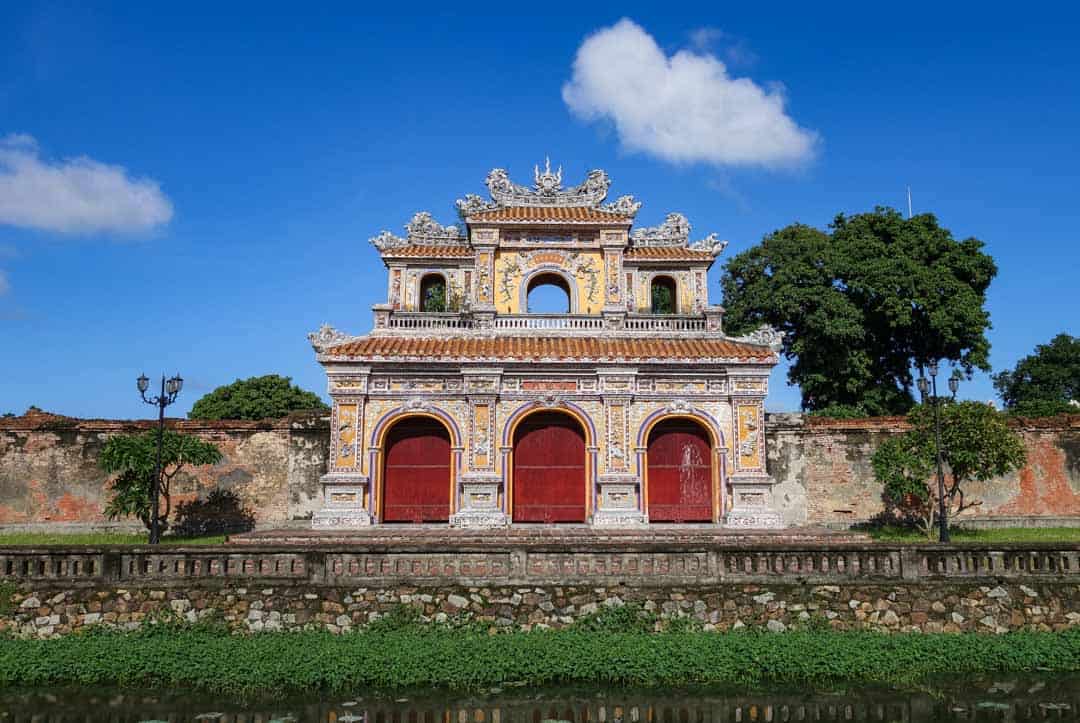
If you want to get out of the city and be in nature check out Bach Ma National Park. With amazing hiking and biking, these scenic trails will amaze you.
You can organise tours out of Hue or hire a scooter, explore the national park for the day or more, and enjoy the trails that are offered from easy to difficult levels with various lengths.
There are fresh ponds to take a dip, hike to waterfalls and great view spots to take a break and take in the beauty of the national park.
Be prepared for wet conditions and make sure you have some good shoes.
There are also a fair number of leeches so check your body for these suckers.
We highly recommend spending a few days in the national park and even getting a guide so you get the best out of the area.
For nature enthusiasts, this is one of the more popular Vietnam attractions.
We bet you didn’t know Vietnam had its own version of Ireland’s Giant’s Causeway! Well, now you do, and it’s definitely one of the most unique places to visit in Vietnam.
Ganh Da Dia in the south is a spectacular rock formation that juts out from the coast and into the sea.
Thousands of hexagonal basalt columns come out of the earth in mesmerising ways, often with not even a millimetre of space between them.
It’s pretty off-the-beaten-path, so chances are you’ll have this entire site to yourself.
Want to visit for yourself? Check out our article about Ganh Da Dia to find out how!
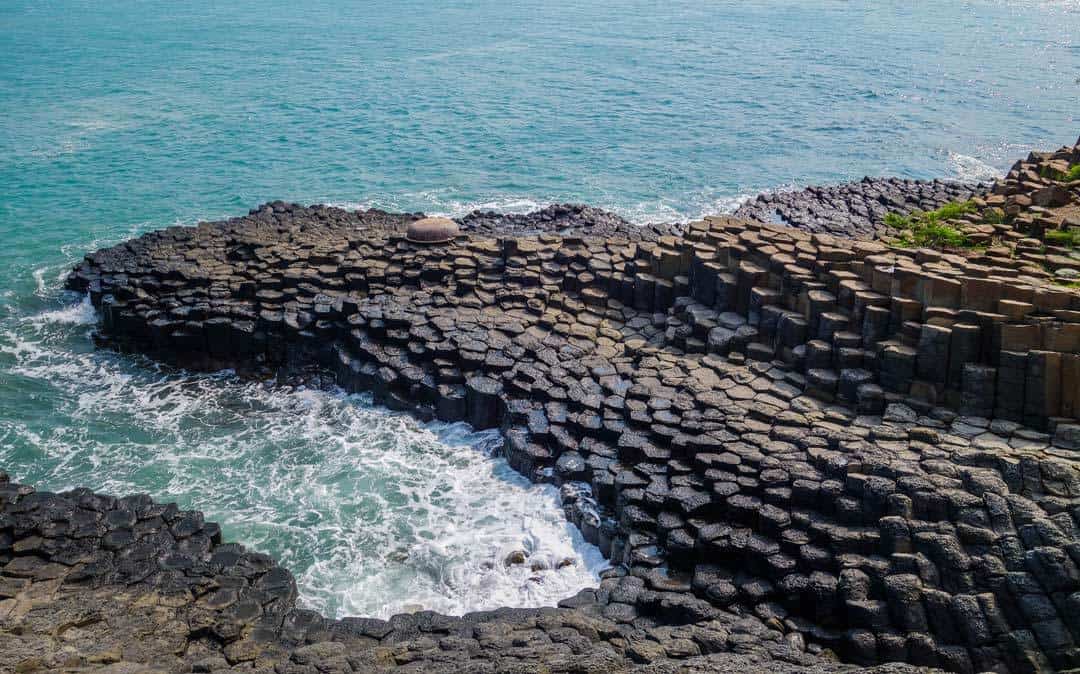
Visiting the Cu Chi Tunnels is one tourist attraction in Ho Chi Minh City a lot of people will visit.
It is best to hire a guide and learn about the underground network of tunnels located about 40 kilometres from the city in the Cu Chi District.
The tunnels were used as hiding spots, hospitals, living quarters and supply routes by Viet Cong soldiers during the Vietnam War.
The narrow passages give a harrowing insight into what it must have been like for the soldiers and families that had to live through such a horrific time in Vietnam’s history.
You can do this on your own out of Ho Chi Minh City, but we recommend going on a guided tour through Get Your Guide .
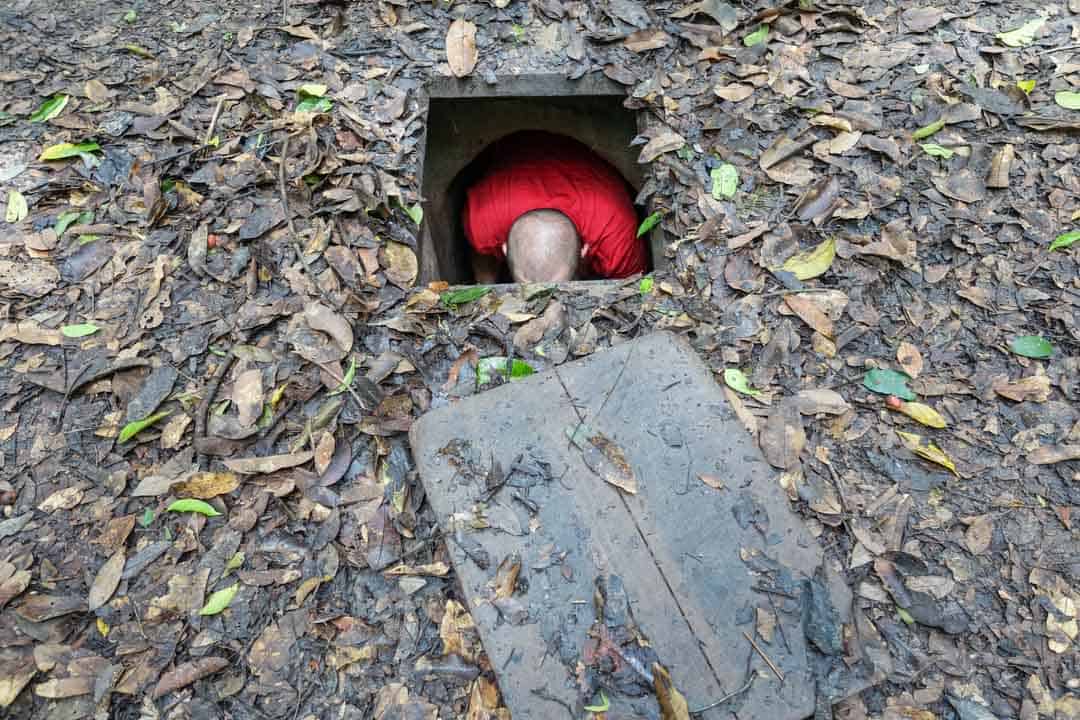
Most tourists skip the cool town of Kon Tum near the border of Laos, and it’s a real shame because those that do make it out here are always blown away!
The city of Kon Tum itself is quite a standard city, with lots of traffic and little parks along the river you can get away from the noise. But the true highlights are when you escape the downtown area.
Rent a bicycle or motorbike and head out into the hill tribe villages and farmlands, where you will come across some of the coolest ethnic structures in Vietnam!
The hill tribes around Kon Tum are known for their huge Long Houses, steep-pitched wooden shelters that act as community halls.
If you’re really lucky you might come across a traditional ceremony as well. Kon Tum is well worth a visit if you’re looking to get off the beaten path in Vietnam.
There are so many beautiful and iconic pagodas to visit throughout Vietnam. These pagodas are full of traditions, beliefs and interesting architecture, with the stunning decorations.
Some of the most famous pagodas to visit are Perfume Pagoda and Tran Quoc Pagoda in Hanoi, One Pillar Pagoda near Ho Chi Minh City, Thien Mu Pagoda in Hue, Linh Phuoc Pagoda, Linh An Pagoda and Van Hanh Pagoda in Dalat .
When visiting the pagodas please be mindful to respect the culture. Walk into the pagodas on the right and exit on the left.
Take off your shoes when entering, be respectful of people praying, don’t point your feet at the alter or statues and dress conservatively, so no hats, no exposed shoulders and no shorts.
The best time to visit a pagoda is in the morning before the crazy crowds come in.
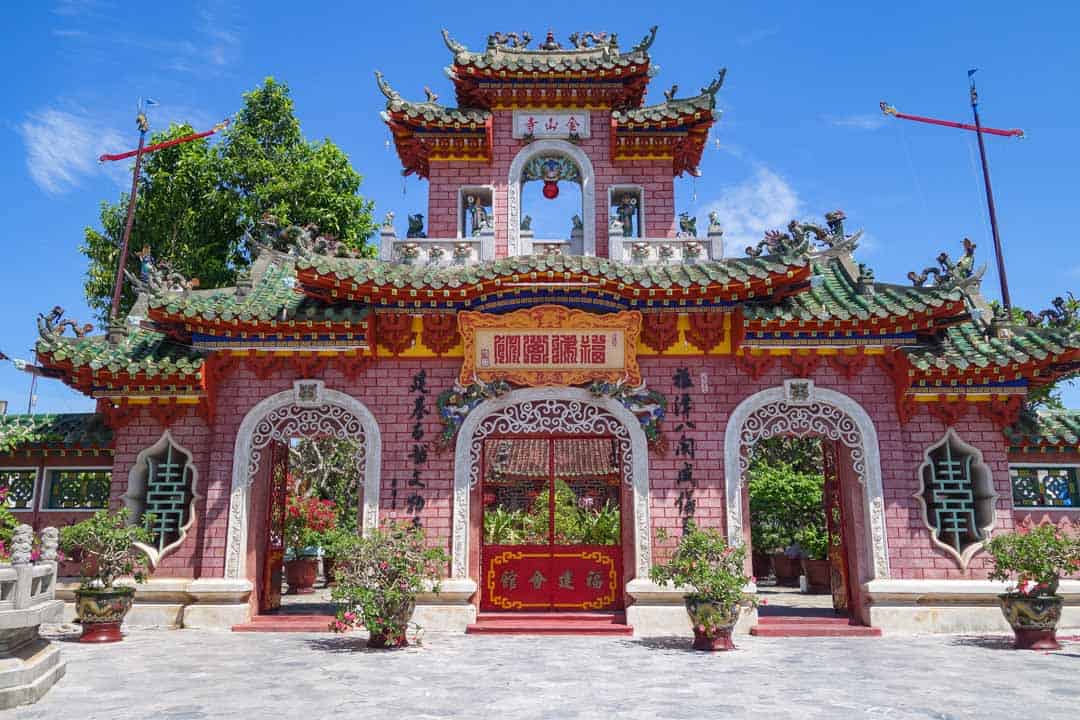
We had heard about Ninh Binh as we were travelling north and lots of travellers had said to stop in, so we did.
It is worth it.
Ninh Binh is a decent-sized ancient town an hour south of Hanoi, surrounded by rice fields and hundreds of limestone cliffs.
People call the area the “Halong Bay On The Land”, and once you get there you’ll understand why. Huge Karst mountains rise out of the earth, with gorgeous rivers and lakes wrapping around them.
One of the most popular tourist attractions in Ninh Binh is the Trang An Grottoes, a UNESCO World Heritage Site. The grottoes consist of a handful of caves and rocks towering out from a large network of canals and lakes. It is so beautiful.
We chose to do a tour of this one over Tam Coc, as we have heard Tam Coc is crowded and has become quite commercial over the years.
Ninh Binh really is a marvellous place to visit in Vietnam.
Why not give yourself a challenge and climb the highest mountain in Indochina, Mount Fansipan. Located just outside of Sapa, this hike will challenge you. But you will be rewarded with stunning views.
We did the hike in one day. But if you do not hike often, we recommend doing the hike in 2 days. This way you can camp at the hut up the top and enjoy sunset and sunrise all alone.
You can book tours through most of the guesthouses in Sapa. There is a gondola now that goes to the top. So if you are not a hiker, you can still go to the top of Mount Fansipan to enjoy the views
Each way on the gondola takes approximately 15 minutes and will set you back 600,000 Vietnamese Dong per adult.
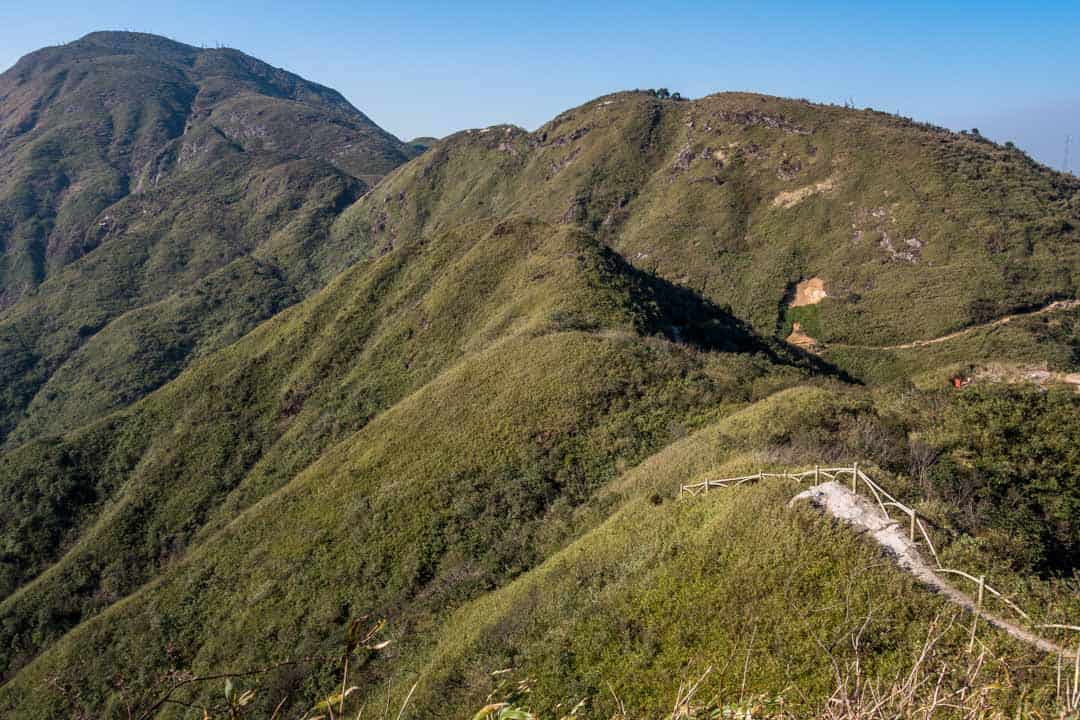
Vietnam isn’t known for being a diving paradise, especially with hotspots like Indonesia and the Philippines close by. But if you love getting underwater then there are some good spots to do it.
Nha Trang in the south is quite a popular place for Russian tourists. But if we are completely honest with you, it really isn’t that nice.
It’s busy and the beaches are quite developed. But there’s a couple of good reasons you should go here anyway.
First of all the motorbike ride from Dalat to Nha Trang is amazing, and well worth checking out.
If you’re a certified diver then once you get to Nha Trang why not head out for a couple of fun dives in the South China Sea?
We did two dives in Nha Trang and were pleasantly surprised by how good it was. We weren’t expecting much, but it turned out to be really enjoyable, with a couple of caves to swim through and a decent amount of fish.
Check out our article about scuba diving in Nha Trang.
Vietnam has a number of beautiful tropical islands, which are all worthy of taking a relaxing island getaway to.
Phu Quoc is probably the most popular of these islands. An island getaway to Phu Quoc is one of the best things to do in Vietnam!
Situated off the southwestern coast of Vietnam, Phu Quoc has emerged as a popular tourist destination, attracting visitors with its turquoise waters, white sandy beaches, and diverse marine life.
Beyond the idyllic beaches, Phu Quoc also boasts lush national parks, such as Phu Quoc National Park, where visitors can explore dense forests, trek to waterfalls, and encounter unique wildlife.
We recommend that you also check out Con Dao Island in the south. This is a quieter option compared to Phu Quoc.
Overall the Con Dao Archipelago is one of the most beautiful destinations in Vietnam.
You will find stunning mountains, thick canopies of forest and amazing marine life.
Yep, it is a diving paradise. If you are in the north check out Cat Ba Island, which is the bigger island of Halong Bay.
There are 3 lovely beaches located near the main town on Cat Ba Island and the gorgeous Cat Ba National Park for exploring.
[box] That’s it! Have we missed anything? Did you find the list useful? Let us know in the comments below![/box]
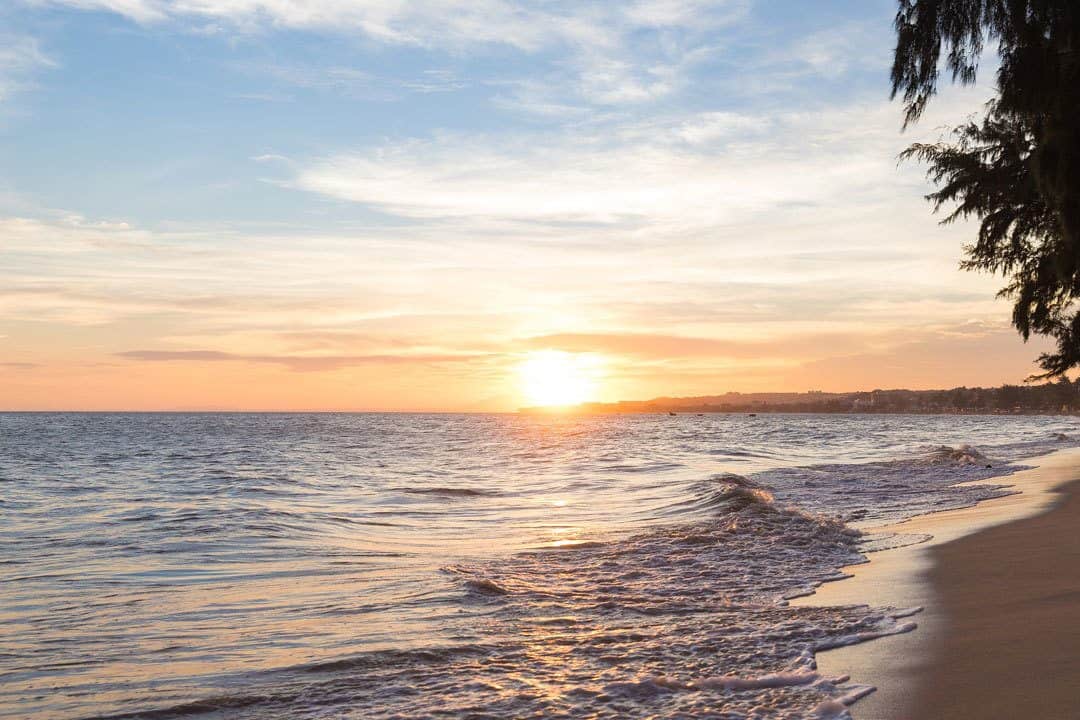
DISCLAIMER: Some of the links in this article are affiliate links, which means if you book accommodation, tours or buy a product, we will receive a small commission at no extra cost to you. These commissions help us keep creating more free travel content to help people plan their holidays and adventures. We only recommend the best accommodations, tours and products that ourselves or our fantastic editorial team have personally experienced, and regularly review these. Thanks for your support, kind friend!
Alesha and Jarryd
Hi, We’re Alesha and Jarryd!

We’ve been traveling the world together since 2008, searching for the planet’s best destinations and adventures.
Love Travel?
Sign up for our free weekly newsletter for the best travel tips, ideas and deals!
We respect your privacy. Unsubscribe at any time.
READ MORE...
25 BEST Things to Do in Hue, Vietnam (2024 Edition)
The Perfect Vietnam Itinerary for 1, 2, or 3 Weeks
Canyoning In Dalat – What It Is Really Like
Related Posts
The digital nomads guide to hoi an, vietnam, caves, zip lines and deep mud in phong nha, getting a chinese visa in hanoi, vietnam, vespa tour through the hoi an countryside, 17 thoughts on “33 best things to do in vietnam (epic 2024 guide)”.
This is a really cool page, tons of information but does not “narrow it down” at all.
Hey there! You’ve got to check out this awesome video about the best places to visit in Vietnam. It’s such a fantastic virtual tour of 7 must-see destinations that will make you want to pack your bags and book a trip right away! The visuals are stunning, and the narration is engaging and informative. I highly recommend it!
What would you recommend as a 5-day itinerary to Vietnam with this being the first trip there?
Woah – Vietnam has their own Giant’s Causeway?! That’s really cool, I haven’t seen anything like that outside of Ireland, cool to see in other parts of the world.
Indeed it does. It was really cool to see and quiet compared to the one in Ireland. All the best
Hi together 🙂 We’re currently in Hoi An and I started to read your blog.. You two are fascinating and I’m really happy that I found your page. I putted to many cool waypoints on the map for our trip to phu quoc 😀 Thanks a lot for the valuable tips and keep traveling with so much love and enthusiasm! Greetings from a Swiss couple Vietnam 🙂
Hi Pascel, hope you are having a great trip. Thank you for your kind words. So glad you found us. If you have any questions about Vietnam let us know. Happy travels
I should’ve looked at this list before I went to Vietnam this winter! I’ll have to look at it again when I plan my next trip there.
In the meantime, thanks for writing this informative post!
There is always next time. Hope you had a great trip 🙂
Thanks for your useful information, by the way I also save some other reliable sources written by the local about best time to visit Vietnam or destinations to visit in Vietnam.
Glad you liked the article. Have a great time in Vietnam
This is a great list of adventures to have in Vietnam. We’re currently in Mui Ne heading north and ill keep your list handy for things to do as we move up. Im really excited to move through through the center and north of vietnam again. Thanks!
Hi Christine, So awesome I hope you are having a blast in Vietnam. It is our favourite country. Don’t miss Phong Nha. That is a special place. We have a lot on Vietnam on our site and if you have any questions don’t hesitate to send us a message. 🙂
I missed your reply to this, we did go to Phong Nha, it was amazing! My fav place in Vietnam. I dont know why i missed it on my first trip here. We did the paradise, phong nha and dark caves. A must see in Vietnam!
So glad you had a great time. 🙂
Oh, very this is a very detailed guide to Vietnam. It’s useful for those who are about to travel around Vietnam. Keep up with your good work!
Thanks Joanne. We loved travelling Vietnam for 7 months and can’t wait to get back there one day.
Leave a comment Cancel reply
Save my name, email, and website in this browser for the next time I comment.
Asia , Travel Guides , Vietnam · June 25, 2019
21 Most Incredible Places to Visit in Vietnam
This comprehensive Vietnam guide highlights everything you need to know about visiting Vietnam for the first time. Find out where to go in Vietnam and discover the best places to visit in Vietnam. You’ll also get tons of tips and tricks to help you plan the perfect Vietnam itinerary.
There’s no doubt, Vietnam offers visitors a very unique experience. From bustling cities and gorgeous beaches to lush forests and breathtaking rice paddies – Vietnam has it all! The country which borders China, Laos, and Cambodia, is the perfect SEA destination for anyone wanting to immerse themselves in nature, history, culture, and some of the best culinary feasts across the globe.

Disclaimer: This post probably contains affiliate links. When you make a purchase through one of these links, I might receive a tiny commission at no extra cost to you. As an Amazon Affiliate I earn from qualifying purchases.
Table of Contents
Before you go to Vietnam
Before we dive into the best places to visit in Vietnam, make sure to read my guide on 16 essential travel tips for visiting Vietnam . It includes tons of tips and tricks to help you make the most of your trip. Along with the tips included above, here are a few key things to be aware of before visiting Vietnam. I’ve rounded up all my top tips to help you plan the perfect Vietnam trip.
Quick facts
Currency: Vietnamese Dong ( Check latest rates here )
Langauge: Vietnamese
Time Zone: GMT+7
Climate: Tropical / Monsoon
When to visit Vietnam
The weather in Vietnam can be unpredictable. Therefore before booking flights and accommodation, it’s always a good idea to know when to visit Vietnam and what to pack for a Vietnam trip .
Peak Season (Jul – Aug)
Vietnam’s peak season runs from July to August. Temperatures are hot and humid throughout most parts of the country (except the far north) and expect some showers. Prices also tend to be steeper during these months, so it’s best to book accommodation well in advance.
If you are traveling on a flexible schedule, you might want to consider only booking your arrival hotel. And, then take it from there. On our two-week Vietnam trip, we had an idea of where we wanted to go, but no fixed plans. We only booked our hotel for the first leg of our journey. Once in Vietnam, we simply booked hotels further afield a day in advance. Even though we visited in August, we were still able to find affordable mid-range accommodation. But just a tip – traveling like this can be quite stressful! So, it’s best to plan accordingly.
Shoulder Season (Dec – Mar)
If you plan to visit Vietnam during the shoulder season, you can expect sunny weather in the south with cooler-to-cold weather in the north. If traveling during Tet, Vietnamese Lunar New Year (late Jan – early Feb), booking accommodation and transport well in advance is highly encouraged.
Low Season (Apr – Jun, Sep – Nov)
There are a bunch of festivals during these months, so those on the hunt for unique cultural experiences won’t be disappointed. In general, the weather is lovely too, but note that typhoons aren’t uncommon on Vietnam’s northern and central coastline.
Most visitors need a visa to enter Vietnam, but luckily the process doesn’t take more than a few days.
Some European passport holders, such as citizens from the UK, France, and Germany, can enter Vietnam 15 days visa-free. Citizens from the US and most other nations do however need to apply for a visa. Some nationalities can also apply for a visa online – you can read more about it here . Alternatively, use iVisa to help you sort out everything online in a jiffy.
If you are South African, like me, you will need to apply for a visa (in person) at your nearest Vietnam embassy.

Arriving in Vietnam
Vietnam is served by three main international airports, namely, Noi Bai International Airport in Hanoi, Tan Son Nhat International Airport in Ho Chi Minh City and Da Nang International Airport.
Depending on your Vietnam itinerary and time, you might want to consider arriving and departing at different airports. That way, you’ll save traveling time and unnecessary traveling costs. (Find flights or compare airline prices here in Skyscanner ).
Arriving in Hanoi
Noi Bai International Airport is only about 45km from Hanoi’s city center. However, it’s best to leave at least 1 hour of travel time to reach the Old Quarter (and vice versa).
Taxis are plentiful, and you can easily book a transfer through your hotel for roughly USD$30 one-way. Alternatively, grab a private transfer from Noi Bai Airport to Hanoi City/Halong Bay first to save time and money.
For those traveling on a shoestring, there are many dirt cheap local buses to consider. These can easily transport you from the airport to Hanoi Old Quarter or Hanoi Train station.
Arriving in Ho Chi Minh City
Tan Son Nhat International Airport is about 8km away from Saigon’s city center. And it takes less than 30 minutes to get there from the airport.
Direct transfers through hotels will set you back at least USD$30. Local buses also run every half hour between 6 am-6 pm to the Ben Thanh Market downtown. But if you have a lot of luggage perhaps consider taking a taxi or a private transfer from the airport to HCMC (which is slightly cheaper than getting a taxi directly from the airport).
Arriving in Da Nang
If you are flying in from Siem Reap, Cambodia, the closest international airport is Da Nang International Airport .
The airport is only a few km away from the city center, and reasonably close to most of the beach resorts too. Grab a taxi at the airport or book a private transfer for Da Nang here for a hassle-free journey.
How to Get Around Vietnam
Vietnam caters to all kinds of travelers, whether you are on a tight budget or like to travel in comfort.
Long Distance Travel in Vietnam
Open Tour buses and trains are the easiest ways to travel long distances in Vietnam. Both transport methods have overnight options, which allow you to save a few bucks on hotel accommodation. Tickets can also easily be bought at most travel agencies in Hanoi or HCMC.
12 Go Asia is a good go-to site if you want to check train ticket prices or book tickets online.
But just a side-note, taking either of these options is not for everyone! The overnight trains and sleeper buses were by far some of the worst transport experiences I’ve ever had! Therefore, if you aren’t used to traveling long distances on stuffy trains or buses, instead opt flying. Domestic flights are cheap and frequent.
Short Distance Travel in Vietnam
Generally, taxis are very easy to flag down on the street. Grab Taxi is also a great alternative if you don’t like waiting around.
Although most major cities in Vietnam are very walkable, the traffic here is absolute chaos! Motorcycles often drive on sidewalks, and speeding is not uncommon. You might even find that something as simple as crossing the street to be painstakingly annoying. So, as a rule of thumb, follow the locals when attempting to cross busy streets!
In addition to taxis, bicycle rickshaws or motorbike taxis are excellent modes of transport for more daring travelers. But, remember to fix the price with the driver before going anywhere. You might also need to haggle a bit!
Staying Connected in Vietnam
When traveling to Vietnam, the very first thing we recommend getting is a local SIM card or pocket WIFI. If you aren’t sure which SIM card best suits your needs, these handy tips on choosing the best tourist SIM card in Vietnam will come in handy.
Most hotels do, however, have free WIFI, but if you are out and about, having access to the internet is essential – especially if you are checking train or bus schedules. Picking up a 4G SIM card at the airport is very easy. However, since low-cost carriers often arrive in the early morning hours or late at night, it might be best to grab a 4G SIM card online first. Here are some options:
- Arrival in Hanoi – Grab a 4G SIM card delivered straight to your hotel in Hanoi .
- Arrival in HCMC – Grab a 4G SIM delivered straight to your hotel in HCMC .

Scams are widespread in Vietnam, so it’s best to do a bit of research first. If you are booking day trips or transfers on the go, be sure to compare prices from a few local travel agents first. ( Finding a tour operator on the street in major hubs across Vietnam is also very easy – they’re everywhere! ). Alternatively, book tours and transfers online in advance through reputable sites or tour operators.
Language Barries
You’re not likely to have too much trouble with language barriers in major cities across the country. Most staff members at hotels, better-looking restaurants, and even at the busier markets can speak some English. But knowing a few key phrases can go a long way. Start with a few basics like:
Hello – Xin chào
Goodbye – Tạm biệt
Thank you – Cám ơn
How much is it? – Cái này giá bao nhiêu?
ATM’s are widely accessible across Vietnam, but generally, cash is king here. So be sure to carry enough money with you to avoid hefty international bank charges. Most hotels, tour operators, and fancier restaurants should accept debit or credit cards.
Haggling is standard practice at local markets and even at small stores selling local knick-knacks. So, don’t forget to practice your bargaining skills beforehand! Shopping around a bit first will also give you a good idea of how prices differ. Front entrance stores in main markets usually tend to ask foreigners steeper prices. Estimates are also often given in USD.
Tipping at restaurants is generally not required throughout Vietnam. Expect a 10% fee to be ( already ) worked into your bill at nicer looking cafes and restaurants. Hotel staff, such as porters often expect a small tip, especially from tourists. So remember to keep some small change or a few small dollar bills (USD) handy.
This probably goes without saying, but it’s best not to drink tap water when traveling in Asia . Instead opt to invest in a reusable water bottle that you can easily refill at your hotel’s water fountain.
In a rush? Pin this Vietnam Travel Itinerary for later.

The Best Places to Go in Vietnam for the Perfect Vietnam Itinerary
Great, now that you know the basics of planning a trip to Vietnam, let’s dive into this guide on where to go in Vietnam and what places not to miss on your Vietnam trip! Here is our list on the 20+ best places to visit in Vietnam – as recommended by fellow travel bloggers!

Best Places to visit in Northern Vietnam

Hanoi’s rich history and vibrant chaotic streets showcasing everything from broken down shophouses to colorful exteriors have long made it a pitstop on any northern Vietnam itinerary .
As the capital city, Hanoi offers visitors a glimpse into traditions still evident on the streets today. Here old and new seamlessly blend, making Hanoi a melting pot of culture, history, tradition, and authentic cuisine.
The Old Quarter is the beating heart of Hanoi, and probably where you’ll spend most of your time. With its deep-rooted history dating back more than 1000 years, the Old Quarter has something for everyone, no matter your interests!
Shopaholics and shutterbugs shouldn’t miss getting lost in the maze of shops and alleys lining the 36 Pho Phuong (merchant streets). Here you’ll find local merchants grouped by the wares they sell – from flowers and jewelry to silks and toys to name just a few. Here endless photo ops and a chance to experience the city like a real local awaits you around every corner. Those seeking to explore the natural beauty, albeit not any less chaotic side of the Old Quarter, be sure to head to Hoan Kiem Lake.
Hanoi is a huge must when planning where to go in Vietnam, and any visit here will be rewarded with unique foodie experiences , relaxing strolls, unique architecture, bountiful of museums, and even puppet shows.
Whatever you do though – don’t miss popping by Ho Chi Minh’s Mausoleum, stepping foot in the Museum of Literature and getting a bird’s-eye view of the cityscape at the Lotte Tower Observation Deck . Grabbing a bowl of pho and an ice-cold bai hoi , or a Vietnamese egg coffee at one of the sidewalk cafes for some good old fashioned people watching should not be missed either.
Since Hanoi is a popular tourist hot spot, there’s no shortage of excellent accommodation. That said, a stay at the Metropole, a beautiful luxury hotel in Hanoi , will not disappoint. Make sure to spend at least 3-4 days in Hanoi. That way, you can get a real feel of what the city has on offer.
Pù Luông Nature Reserve

Recommended by Emily | Wander-Lush
For an off-the-beaten-track nature experience in Vietnam, Pu Luong Nature Reserve can’t be beaten.
Located southwest of Hanoi on the border between Thanh Hoa and Hoa Binh provinces, Pu Luong – with its pristine forests and rich biodiversity – has been protected since 1999. Thai, Muong and other ethnic minority communities live inside the Reserve. They are responsible for the towering rice terraces and bamboo waterwheels that make the area so iconic.
The Reserve is the perfect spot for trekking. Homestay accommodation can be found in small villages linked by forest paths, with waterfalls, rivers, and mountains to be discovered along the way. For something more relaxing, peaceful Ban Hieu village in the southeast corner of the Reserve is a great spot to unwind.
Pu Luong is more remote than nearby Mai Chau, which makes accessing the Reserve a bit tricky. There is no public transport, so the best way to go about this is by organizing a transfer through your accommodation – either from Ninh Binh (approximately 4.5 hours by car) or from Hanoi. It might cost you a little more time and money, but it’s absolutely worth it.
Ha Long Bay

If there is one natural wonder in Asia that should be on your travel radar, it’s Ha Long Bay. Famed for its limestone caves and caverns with centuries-old stalactites and stalagmites, this UNESCO World Heritage Site comprises of more than 1600 limestone islets in all shapes and sizes imaginable – all covered in lush green vegetation.
Although Ha Long Bay has become a victim of over tourism over the past few years, its iconic emerald waters and towering limestone karsts are well worth the 3 hour bus ride from Hanoi and even the crowds!
Most people visit Ha Long Bay on a day trip from Hanoi . It’s best to pre-book tickets online as it is a very popular landmark in Vietnam . A day trip typically lasts 12 hours and includes sailing around on a traditional junk boat, visiting Thien Cung Cave (aka the Heavenly Cave) and some kayaking through the floating markets and towering karsts.
For those who have a bit more time, consider joining one of the iconic Ha Long Bay cruises to spend a few nights onboard a junk boat on these peaceful waters.

Recommended by John Paul | The Hangry Backpacker
Cat Ba Island is one of the best places to visit in Vietnam. The island is easily reached from Hanoi/Hai Phong by bus. You’ll first need to travel to Cat Hai (a small island). Then take a short ferry and finally hop on another bus that makes various stops on Cat Ba Island.
The main town on the island, also called Cat Ba, is a laid back place in a beautiful setting. From Cat Ba town, visitors can tour the island (best done via motorbike) or join a boat tour of Ha Long Bay.
Cat Ba National Park is a stunning area that covers a large chunk of the island. The geography of the park is like Ha Long Bay without the water. For a great view of the harbor and town below, a short hike up to an old fort (now with a monument at the summit) is the perfect place for a panorama of Cat Ba town.
Ha Long Bay is one of the most beautiful natural scenes in Southeast Asia, and Cat Ba Island is the perfect gateway to explore the area. Most visitors come to Cat Ba for a calmer alternative to see Ha Long Bay than from Ha Long city.
Two to three full days on Cat Ba Island is enough time to adequately explore the national park and the bay, although an extra day or so is welcome for most travelers.
Bai Tu Long Bay

Recommended by Claudia Tavani | My Adventures Across The World
Most people who visit the North of Vietnam head to the magnificent Ha Long Bay. This is one of the most popular tourist destinations in the country. However, as a result of overtourism, it’s lost part of its charm. Nowadays, there are so many vessels moving around Ha Long Bay that your experience there ends up being crowded and you often hear loud music coming from the party boats – not to mention the high amount of plastic and garbage that floats around the sea.
One of the best things to do in Vietnam as an alternative to visiting Ha Long Bay is doing a tour of Bai Tu Long Bay. This is very similar in terms of sights and things to do, and in fact, you will be cruising across Ha Long Bay in bits. However, as the final destination is different, you will follow a different route and there will be fewer vessels around – so you will be able to enjoy the peaceful atmosphere and you’ll have the views all to yourself
Tours of Bai Tu Long Bay normally last two full days. You will spend a full day on the boat doing things such as kayaking, swimming in the turquoise waters of the bay, exploring the many caves and visiting oyster farms. The second day is usually spent on a local island where you’ll get to sleep in a homestay. There, you’ll have a chance to cook dinner with the family, explore the island by bike and on foot, and get to know a bit of local culture before heading back to Hanoi.

Recommended by Tasha Amy | Backpackers Wanderlust
Located up in the mountains is one of the best places to visit in Vietnam – Sapa. If you are looking to get outside of the cities and into nature, there is no better choice than here.
To get to Sapa the best option is either by bus or train for Hanoi. Both are a long journey taking around 8 hours. Though, from my personal experience, the best option is the overnight train. Buses here can be hit or miss and for us, it was a complete miss. Also, bus crashes along these roads are fairly common.
Whether you prefer to relax with a massage or more thrill-seeking activities there is something to do for everyone. One of the most popular activities is hiking in Sapa . The views are incredible over the green rice terraces and there are different difficulty levels depending on your fitness. For our visit, we split our time between the main Sapa town, where you will find the restaurants and shops, and a local village called Ta Van. There are plenty of homestays in Ta Van where you can gain an understanding of local life by living with a family.
Make sure you spend at least 3 nights exploring Sapa and the surrounding villages. You will be astonished by the beauty which makes it one of the best places to visit in Vietnam.

Recommend by Emily Lush | Wander-Lush
Ha Giang Province in the far north is one of the most rewarding places to visit in Vietnam .
Remote and rugged, Ha Giang is a mountainous landscape defined by limestone karsts and deep canyons. High-elevation roads with hairpin bends track between small towns and villages, where members of Vietnam’s ethnic minorities hold weekly produce markets. Hiking between villages via stacked rice terraces and fields of buckwheat is one of the best things to do in Ha Giang.
A popular way to see Ha Giang is by riding the Dong Van Pass and the Dong Van Loop, a famous road that many choose to navigate on a motorbike (either self-drive or easy rider). If you don’t ride, it’s also possible to visit Ha Giang by car .
Unlike in nearby Sapa, tourism in Ha Giang is still developing. A number of social enterprises and responsible tourism projects have sprung up in the area to ensure things develop the right way. It’s a little more challenging to get around – but the extra time and money visiting Ha Giang involves is worth it.
Independent travelers can reach Ha Giang’s largest town, Dong Van, by overnight bus from Hanoi. From there, you can rent motorbikes or travel by local bus to Sa Phin, Thai Phin and other villages on the loop, staying at homestays along the way. You’ll need a minimum of 3 or 4 days to complete the loop. Allow more time if you want to trek, which I highly recommend.
Pin The Best Places to visit in Vietnam for later.

Best Places to Visit in Central Vietnam

Recommended by Monique | MC Adventure Blog
Ninh Binh is one of the most beautiful places to visit in Vietnam. Not only can you take in breathtaking views from the 500 stairs of Mua Caves, but you can also take in the UNESCO World Heritage Site Trang An.
Trang An gives you the opportunity to explore towering limestone karsts via a 3-hour boat tour with a local guide. Explore beautiful hidden temples, take in the set from Kong: Skull Island, and squeeze your way under hundreds of meters of river caves for an unforgettable experience. Most importantly, Mua Caves Ecolodge gives you the chance to fall asleep to the sound of frogs, with not a car horn in earshot!
Get there by bus or train from Hanoi, and make this an overnight trip to really enjoy the stunning countryside. If you have the time, head to Chookies in Tam Coc for sundowners and great pizza. Your Vietnamese bucket list cannot miss out on Ninh Binh , a lush and epic paradise just outside of Hanoi!
Phong Nha-Kẻ Bàng National Park

Recommended by Jeanne Malherbe | Learning to Breathe Abroad
The Phong Nha-Kẻ Bàng National Park in Vietnam is home to the world’s largest cave and the oldest karst mountains in Asia. This 400 million year old site was only discovered 20 years ago and was listed as a UNESCO World Heritage site in 2003.
Not only has this incredible cave system made the Phong Nha-Kẻ Bàng National Park the country’s top natural highlight, but the surrounding forest offers jungle trekking and mountain biking opportunities to the more adventurous. These additional activities have caused the area to become popularly known as the ‘Adventure Capital of Asia’.
There are over 500 caves in Phong Na, but only 30 are accessible to visitors. The most popular are the Phong Nha Cave, Tra Ang Cave, Paradise Cave, Dark Cave, Hang E Cave, Elephant Cave, Hang Over Cave and the Son Doong Cave. Some are easily accessible while others require a guide and even a zip line across a river!
The town of Phong Nha has lots of accommodation, restaurants, and an ATM. Buses run daily to various other towns. The closest town is Dong Hoi, which is a quick taxi ride away. You can also catch the train to Dong Hoi and then bus or taxi to the park.
The Phong Nha-Kẻ Bàng National Park is so much more than just the caves. Therefore, I would recommend spending at least two or three days, to get the full experience.
Quang Tri Province and the Former DMZ

Recommended by Amber | Food And Drink Destinations
Sandwiched between the popular tourist city of Hue to the south and the former DMZ to the north, sits Quang Tri Province, Vietnam. An off-the-beaten-path tourist destination, Quang Tri Province is one of the best places to visit in Vietnam for history lovers.
Around Quang Tri Province travelers can visit a number of historical sites relating to the Vietnam war, including the famous former American base at Khe Sanh. Exploring the Vinh Moc tunnels along the former border between North and South Vietnam offers travelers a unique perspective on how the war was fought from the North. Finally, Truong Son Cemetery is the final resting place for thousands of soldiers who lost their lives during the war. Adorned with thousands of incense sticks to honor their memories, it is a sight to see. Just driving through the area, though, there are monuments to the war around almost every bend.
The sites around Quang Tri Province are spread out, which requires a local driver and guide who can explain what each site or monument means. Dong Ha, the main city in Quang Tri Province, is a 90-minute drive from Hue. Additionally, it is possible to take a train from Hue to Dong Ha.
Travelers looking to dive into the history of Quang Tri Province during the Vietnam War are encouraged to spend 3 to 5 days in the area. The travel time between war sites can vary from short drives to upwards of 2-3 hours.
Accommodations in the region are basic but slowly improving. The Province enjoys access to the sea with a sandy beach area located 10 miles from the center of Dong Ha. It’s a welcome relief from a long day of sightseeing.

Recommended by Michael Turtle | Time Travel Turtle
Hue is full of history and nothing captures it more than the great Imperial City of Hue , the fortified complex of royal buildings. This was the center of power during the Nguyen Dynasty, which united Vietnam in 1802 and was the last of the imperial dynasties to rule the country. Although many of the buildings inside the Imperial City were damaged during the Vietnam War, it will still take you several hours to see all the temples and palaces properly.
Other than the Imperial City (also known as the Citadel), the other most popular sights are the tombs of the emperors, which are stretched out along the Perfume River to the south of Hue. You can get a taxi or ride a bike but a lot of people like to visit them as part of a boat cruise. If you’re heading along the river, also look out for the striking Thien Me Pagoda.
Hue is not a particularly large city – especially from a tourist’s perspective – so you can easily walk around its centre. You only need a couple of days to see the main sights and explore a bit. The main north-south train stops in Hue and it’s also well connected by buses to places like Hoi An.

Recommended by Bradley Williams | Dream Big, Travel Far
If you are making your way up through Vietnam, then easily one of the best places to visit in Vietnam is Da Nang. We visited there as a day trip from the city of Hoi An and absolutely loved it! There is so much to do there, such as driving up and over Tho Quang, which is a large mountain located right by the water. From the top, the views are amazing, and it’s a great place to be for sunset.
This actually ended up being one of my favorite experiences from traveling Vietnam and would recommend it to everyone passing through. As well as this, you should visit the famous Marble Mountain, and explore ancient caves and temples hidden amongst the rocks. Another thing you should also do is visit the Golden Bridge.
It is possible to stay in Da Nang for a night or two, but you are also able to see all of the best sites on a day trip from Hoi An. We got there by moped, but you can also arrange bus transfers if you are passing through and wish to stay there.

Steeped in history, and any culture seekers dream, Hoi An is simply a must on your ‘where to go in Vietnam’ list. And for an excellent reason. This sleepy town packs a bunch of exciting activities for anyone craving small-town vibes, especially after experiencing the bustle of bigger cities in Vietnam.
At the heart of Hoi An lies The Ancient Town, which also happens to be a world-renowned UNESCO site. The Old Town is home to everything from wooden Chinese shophouses and temples to colorful French colonial buildings, decorative Vietnamese tube houses and the mesmerizing Old Bridge built by the Japanese.
In short, you wouldn’t find a better place to experience rustic Vietnam than here, where a mix of eras and styles seamlessly blend together. Wander or even bike along quaint streets lined with colorful shophouses, hipster cafes, and funky art galleries. Or better yet, get lost in the maze of nooks and crannies which dot off around every corner. Keep in mind though: there is a small mandatory entrance fee of US$5. This goes towards maintaining and preserving the city.
One of Hoi An’s biggest draws apart from its deep-rooted history is its arts. Whatever you do don’t leave Hoi An without taking a lantern making class and a getting tailor-made outfit. Those seeking to venture beyond the Old Town, don’t miss one of the glorious sandy beaches nearby. Biking to An Bang Beach is a popular activity for sunshine seekers and beachgoers. Foodies also won’t be disappointed as Hoi An is one of the best places to enjoy authentic street food in Vietnam. To get a real feel of the town and attractions, spend at least 2-3 days here.
Like what you’re reading? Maybe your friends will too. Pin The Best Places to Visit in Vietnam here.

Best Places to Visit Vietnam – Southeast Coast

Nha Trang is one of Vietnam’s premier beach destinations and a must for anyone looking for a cheap beach vacation while in Vietnam. Spend your days lounging around Tran Phu Beach or dipping in the calm waters of the South China Sea. For those wanting to enjoy the beach vibes with a cocktail in hand, drop by the Sailing Club for a well-deserved sundowner.
Excitement seekers, on the other hand, can try their hand at kitesurfing, surfing, snorkeling or cycling along the promenade, nearby. Nha Trang also won’t disappoint shopaholics! Head to the Dam Market which is the perfect spot to pick up local trinkets and cheap knockoffs.
The Vinpearl Amusement Park on Hon Tre Island is also a great spot to spend a few hours. Be sure to also visit the massive aquarium and get a bird’s-eye view of the bay by cable car!
Besides these, Nha Trang also offers visitors a glimpse into age-old traditions and boasts some great outdoor activities. Pop by the religious towers of Po Nagar Cham Towers for breathtaking views over the Cai River and a peek into this Hindu holy place of worship. If you have a bit more time, consider visiting the Ba Ho Waterfalls for a quick dip in the fresh mountain waters. Or better yet, head to the Hon Khoi Salt Fields for fantastic photo ops.
Visiting the nearby hot springs and chilling in a mud bath is another popular treat in Nha Trang. So if you fancy getting yourself covered in mud definitely give it a try!
No matter your interests, there’s something for everyone in Nha Trang – making it one of the best places to visit in Vietnam! Spend at least 2-3 days here to really take in the sunshine and enjoy the ocean.

Mũi Né is a famous beach town, well-known for its quaint fishing village and excellent adventure sports. Although Mũi Né might seem unassuming to most travelers to Vietnam, this weird town (which is just a 4km strip along the coast of Southeast Vietnam) is packed with golden sand beaches and a haven for adrenaline junkies.
Kitesurfing, sailing, and windsurfing are just a few of the water sports you can enjoy here! Stop by White Sand Dune where hopping on a quad-bike is a favorite amongst locals and adrenaline junkies. Then head over to Red Dune for the best sunset in town. Some vendors sell local snacks and coconuts near the parking lot, so be sure to grab some refreshments before heading up the dune! The Fairy Stream – where red clay formations and lush vegetation make an exciting backdrop along a gentle stream – is another popular spot for nature seekers.
Mũi Né might not be on every traveler’s destination hit-list when planning their Vietnam itinerary, but it’s a good pitstop on your travels to or from Ho Chi Minh City.
Dirt cheap sleeper buses run daily between HCMC and Phan Thiet , while shared shuttle buses between HCMC and Mũi Né are also available for a few bucks more. The journey takes about 5 hours.
Mũi Né has excellent beaches and an endless supply of adventure sports opportunities. However, unless you’ve booked yourself into one of the high-end resorts, don’t spend too much time here. There’s honestly not that much to do, and you can quickly get your adrenaline fix, enjoy some beach time and see the main sights in a day or two.

Recommended by Mary | Move to Vietnam
Vung Tau is one of the places that you don’t normally see in travel guides about Vietnam, but what you don’t know is that it’s a little hidden gem not far from Ho Chi Minh City. A place where you can surf, hike or simply have a few lazy days between your long and exhausting trip – a place to breathe a little.
Vung Tau is not crowded nor expensive, so you can still enjoy your Vietnam trip. There are hostels for as cheap as $5 or private rooms for as low as $10. You can also rent a motorbike for $5 or less a day. Since it’s a beach town, expect that every restaurant offers fresh seafood dishes without spending too much.
You can either come from Ho Chi Minh City to Vung Tau (about 2-3 hour drive) or from Mui Ne. Either way, you can reach it by bus or motorbike. From Ho Chi Minh City, there is also an option to take a ferry ride.
Also Read: The Best Islands to Visit in Asia
Best Places to visit in Vietnam – Southwest Highlands

Recommended by Rebecca | She Roams Solo
Dalat is a wonderful little surprise. After spending your days sweating like crazy, the cool spring weather that Dalat brings will be a welcomed change. The houses of Dalat will surprise and enchant you. The European feel is charming. There is something for everyone in Dalat from those who want to relax, be adventurous, learn the culture and more. Dalat is a great place for solo travelers, couples and families .
There is plenty to do around Dalat but perhaps the most thrilling thing to do is get on a motorcycle or scooter and ride to, or from Dalat. The green hills and valleys are memorable, creating scenes that are sure to stay with you for a long time to come. If you are not confident enough to ride yourself you can jump on the back with a local tour guide.
Another outstanding experience in Dalat is the Mr. Rot Secret Tour. I can’t tell you too much about this tour as it is a secret. Make sure you get the original and not the copies that Vietnam is susceptible to. You are guaranteed an amazing time, plenty of laughs, and a chance to learn more about Vietnamese culture.
The crazy house and the 100 roof bar are simply unmissable! These are places you will not see anywhere else in Vietnam and are both creative, genius, and wonderful.
Adventure junkies can also do canyoning, which is famous in Dalat.
Ho Chi Minh City

As the former capital of Vietnam and often referred to as Saigon, Ho Chi Minh City is diverse in all senses imaginable. From its vibrant streets and lively markets selling all kinds of bits and bobs to its street food and deep-rooted history – any visit here is bound to be an unforgettable experience.
Ho Chi Minh City might be many things, but the one thing that is bound to leave a lasting impression on you is the absolute chaotic bustle of the city. Which oddly enough seems to be organized chaos!
The streets are filled with different smells and sights. Not to mention scooters and motorbikes racing past, all eagerly honking their way through the dense traffic. Navigating yourself here might be a tad harder than the rest of Vietnam. So if there is one tip, I can give you – watch out for the scooters on the sidewalks! If you aren’t comfortable walking, Grab taxis are plentiful.
As for things to do, the options are endless! And any visit here will quickly reveal why HCMC is one of the best places to visit in Vietnam. Get a closer look at the city’s pivotal role in the Vietnam War by stepping foot in the War Remnants Museum. Or pop by the Notre-Dame Cathedral – one of the most iconic landmarks in the city. A short stroll away, you can drop by the Saigon Central Post Office where Ho Chi Minh’s picture is on display. The Independence Palace and the Saigon Skydeck are other activities not to miss on your visit here.
Also, don’t miss the chance to shop till you drop at Ben Thanh Market – one of the best spots to hunt for local souvenirs! But don’t forget to haggle!
Best Places to visit in the Mekong Delta

No visit to Vietnam would be complete without cruising along the Mekong River Delta. If you are pressed for time, Cái Bè is the perfect solution.
This small fishing village that is home to stilt houses, unique riverscapes, and delicious fresh produce is just a short 2-hour trip away from Ho Chi Minh City and easily explored on a day trip .
Day trips can be booked practically anywhere in HCMC, and travel agencies offer numerous packages to suit every traveler’s pocket. Usually, these will also include stopping by the world-renowned Cu Chi Tunnels where you can get a glimpse into what life was like for the Viet Cong soldiers on the front lines.
Cruising along the Mekong River, canoeing through the mysterious river canals, visiting the floating market, cycling along with lush greenery and sampling some of the local tropical fruit are just a few of the unique things you can enjoy on a day trip to Cái Bè.
Cái Bè doesn’t offer much in terms of accommodation, but it’s a great place to visit in Vietnam even if it is just for a day!

Recommended by Claire | Claire’s Footsteps
Not so many travelers make it down to Can Tho in Southern Vietnam, but it’s well worth adding it to your best places to visit Vietnam itinerary. Located about four hours south from Ho Chi Minh City, or four and a half hours from Ha Tien, the southern border with Cambodia, Can Tho is the biggest city in the Mekong Delta area.
The Mekong Delta region grows most of Vietnam’s fruit, and is a prosperous area for rice farming, with 3-4 yields per year.
Life here understandably revolves around the river; so as far as attractions in Can Tho go, you’ll want to head out to the water! It’s possible to see the local floating market at sunrise, head to the land market, cycle around the countryside and tour a local cocoa plantation.
There are also some museums and temples in Can Tho city, but a big part of visiting the Mekong Delta area is just relaxing and enjoying the surrounding nature. It’s one of the most beautiful parts of the country, along with friendly people who love to chat to visitors (because Can Tho is actually quite a large city, many locals can speak great English).
Phu Quoc Island

Recommended by Ania |The Travelling Twins
Phu Quoc is the biggest Vietnamese island. It is in the extreme south-west, actually closer to the coast of Cambodia than Vietnam’s mainland. Ho Chi Minh City was hot and hectic and I was looking for some beach time. We arrived by air, but there are ferries too. The island is a Special Economic Zone, which means that tourists can stay 30 days without a visa.
Phu Quoc was perfect for our week’s holiday within a holiday. We enjoyed clean beaches, entertainment parks, a modern aquarium, and zoo safaris. My girls especially loved the Bee Farm, and there was even a night market for those times when we found we were missing the city after all. The food is delicious, with any number of options to enjoy a yummy prawn barbecue against an ocean sunset backdrop.
To top it all even transport is fun. Phu Quoc is the only place in Vietnam where I would recommend hiring a scooter. Traffic is minimal, and the island is small enough to explore by yourself. We went in true Asian style with the whole brood perched on one seat.
The island has a full spectrum of accommodation too. Choose from very simple and inexpensive home-stays to a five-star resort. We had a great time on our break in Phu Quoc with kids , and we will be going again for sure.
Where to Go in Vietnam in Conclusion
As you can see, Vietnam is home to a whole host of amazing places to visit and things to do! While this post barely scratches the surface of awesome places to travel to in Vietnam, it undeniably covers all the must-see places to add to your Vietnam itinerary! Have you ever traveled to Vietnam? What’s your favorite place to visit in Vietnam?
Well, there you have it – the ABSOLUTE best places to go to in Vietnam! If you have any suggestions to add to this list of must-visit places in Vietnam, let me know in the comments below.
Liked this post? Maybe your friends will too. Share where to go in Vietnam with them here.

join the club
You’ll also love.

May 5, 2020 at
I simply love Vietnam and as a pilot would visit there on many an occasion. I even managed to get in a tour of the tunnels, totally awesome! The beauty of Vietnam, the friendly people and the food are simply exquisite.
May 16, 2020 at
Thanks for taking the time to comment, Rick. Vietnam is indeed an incredible destination to visit. Glad you got a chance to see the tunnels – it was one of the highlights of our trip!
Leave a Reply Cancel reply
Your email address will not be published. Required fields are marked *
Currently you have JavaScript disabled. In order to post comments, please make sure JavaScript and Cookies are enabled, and reload the page. Click here for instructions on how to enable JavaScript in your browser.

An Insider’s Guide to Alishan, Taiwan + Best Things to do
Trending now.

Follow @ Hoponworld
[instagram-feed]
Travel guides
- Travel Guides
- Itineraries
- City Guides
- Beach Guides
- Outdoor Guides
- Tips & Inspo
Get exclusive access to detailed travel guides & tips!
Work with me
- Privacy Policy
Copyright © 2024 Hoponworld · Theme by 17th Avenue

- Privacy Overview
- Strictly Necessary Cookies
This website uses cookies so that we can provide you with the best user experience possible. Cookie information is stored in your browser and performs functions such as recognising you when you return to our website and helping our team to understand which sections of the website you find most interesting and useful.
Strictly Necessary Cookie should be enabled at all times so that we can save your preferences for cookie settings.
If you disable this cookie, we will not be able to save your preferences. This means that every time you visit this website you will need to enable or disable cookies again.
14 Best Things to do in Vietnam in 2024
Vietnam is a country of contrasts with a wonderful mix of natural gems and vibrant urban jungles. Experience city life, where thousands of motorbikes cross the roads and bustling street markets are full of locals bent over a steaming bowl of pho. Then, explore the breathtaking scenery as you make your way through winding mountain passes, rising limestone karsts, and verdant rice paddies in beautiful shades of green. Combine all this with a rich history and incredible street food, and you have a must-visit destination! Here are all the best things to do in Vietnam .
Things to do in Vietnam
Vietnam, with its mix of rich history, culture, coasts, and landscapes, is an incredible country to visit, known to leave a lasting impression. From visiting numerous national parks, slowly drifting past the spectacular karst seascape, or driving between the rice fields and coffee plantations in the countryside, there’s so much to do.
Also read: Complete 3-week Vietnam itinerary
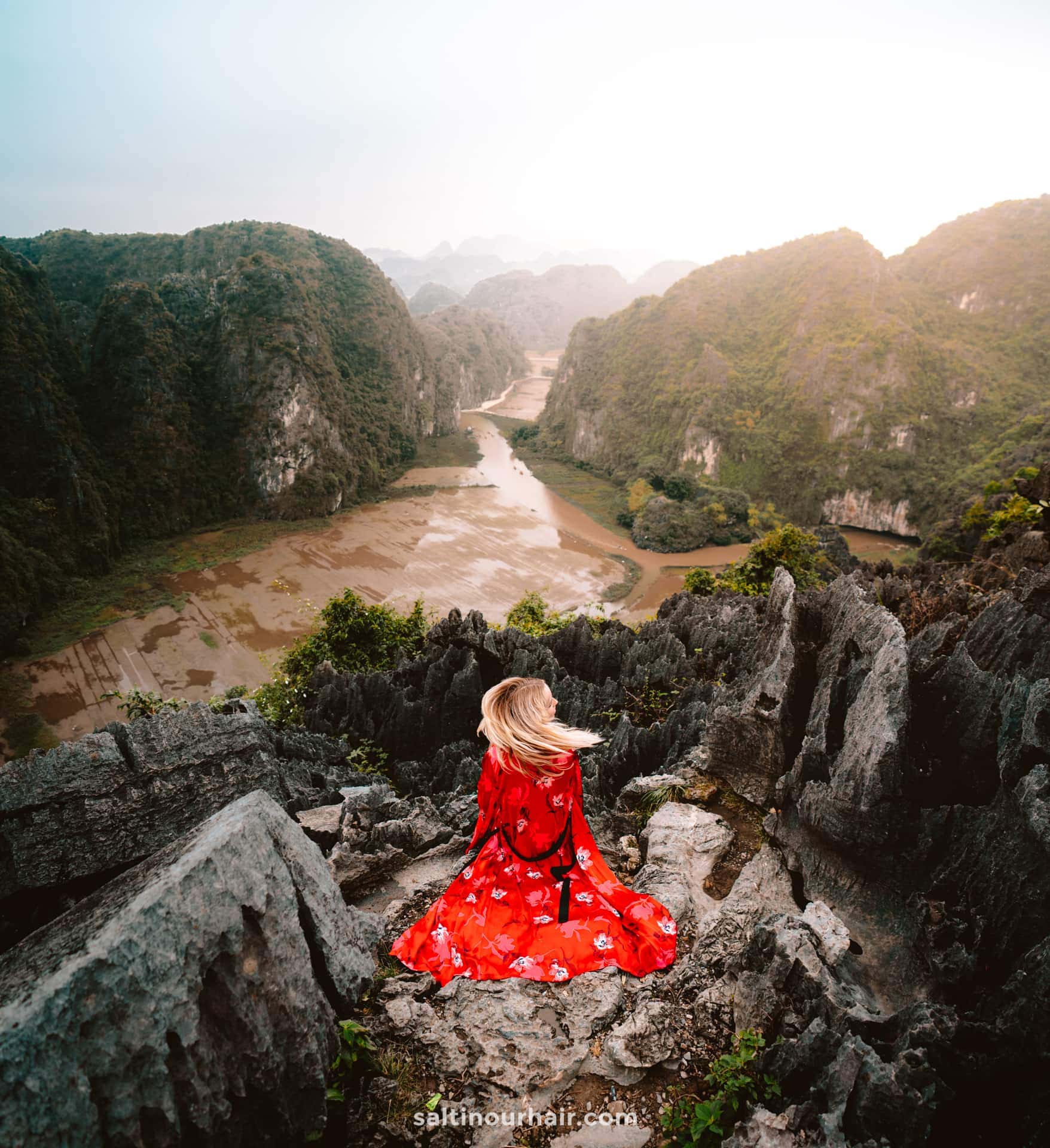
1. Ha Long Bay
Ha Long Bay has some of the most beautiful scenery in the world! From secluded beaches, charming floating villages, and unforgettable night skies full of stars, you’ll quickly see why this gorgeous part of Vietnam holds UNESCO status .
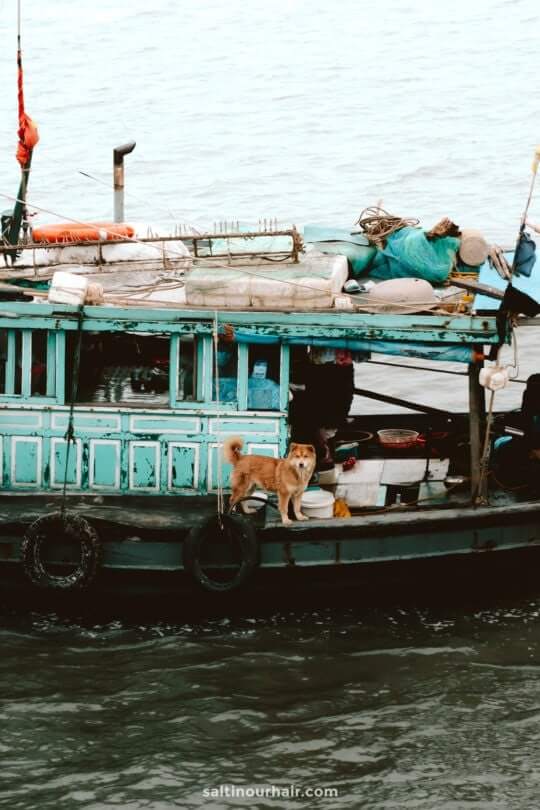
Take in the calm atmosphere as you sail among thousands of majestic limestone karsts. There are nearly 2000 islands here that rise out of the calm jade-colored waters. These jagged pinnacles have existed for over 500 million years, formed by wind and water. Although you can experience Ha Long Bay on land, the scenery is best seen on a cruise on the waters.
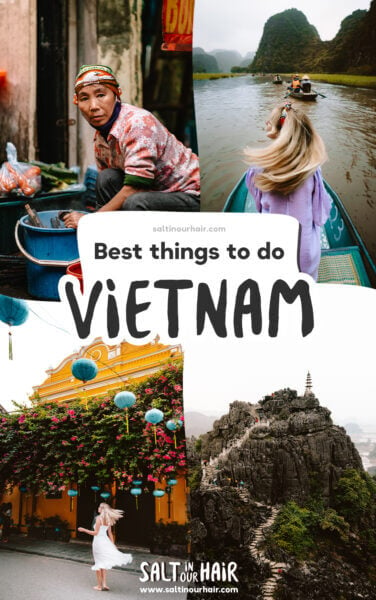
Cruises will typically come in packages, including a few activities. From kayaking, island hopping, and exploring caves to visiting pearl farms, floating villages, or going rock climbing, there are many options to choose from. Though, there’s also much to do on board while you float past the beautiful islands. Opt for an overnight tour to see most of the iconic views, but book in advance as it’s incredibly popular. This is by far one of the best things to do in Vietnam .
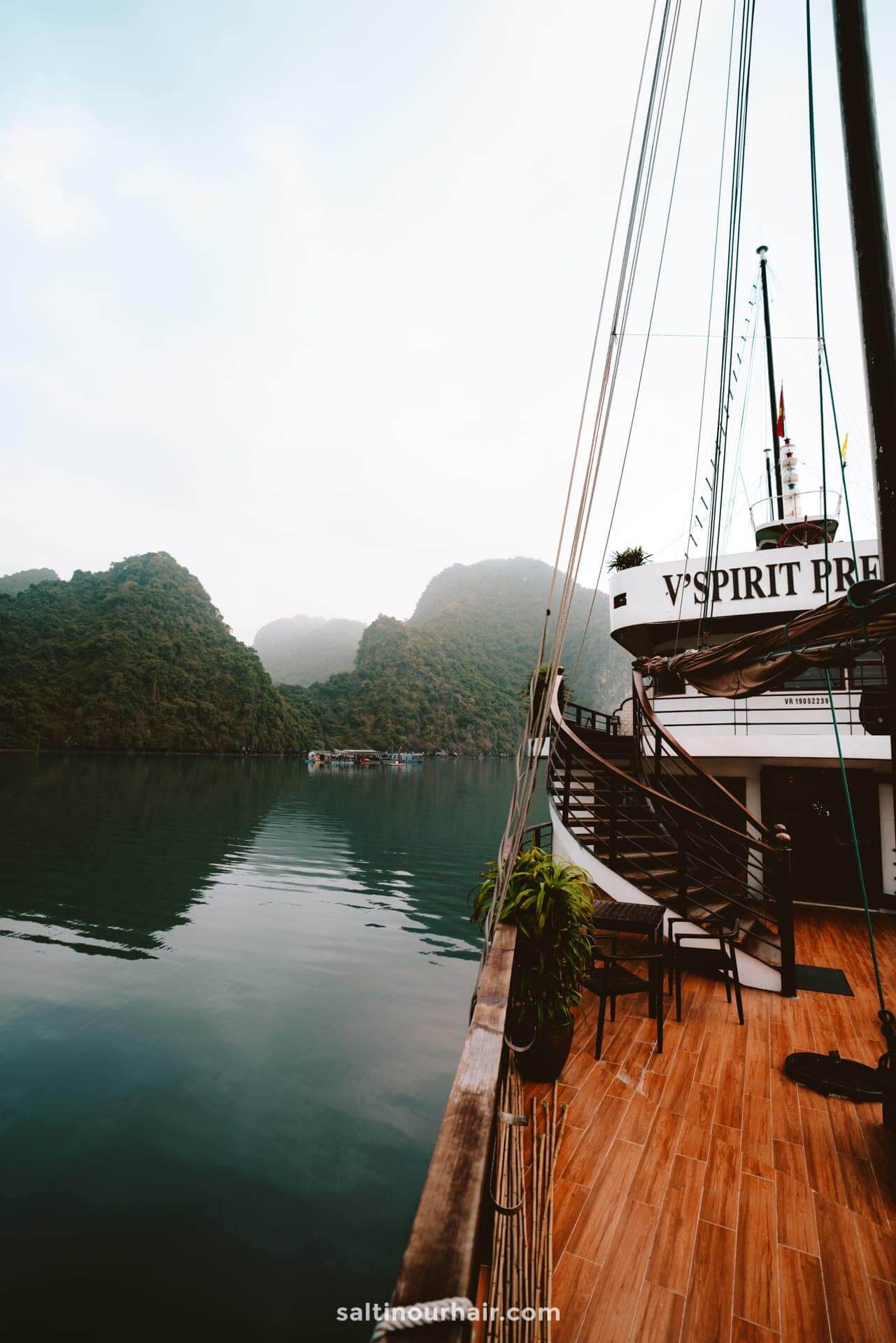
The Story of Ha Long Bay
This iconic site translates to ‘descending dragon’ and is based on a Vietnamese legend. It tells of a dragon defending the Vietnamese from invasion using fire, emeralds, and jade. The jewels then landed in the ocean to form the limestone karsts and islands, preventing invader ships from coming any further. This story of Ha Long Bay adds even more magic to an already surreal landscape.
Also read: Ha Long Bay on a budget: visit from Cat Ba Island (Vietnam)
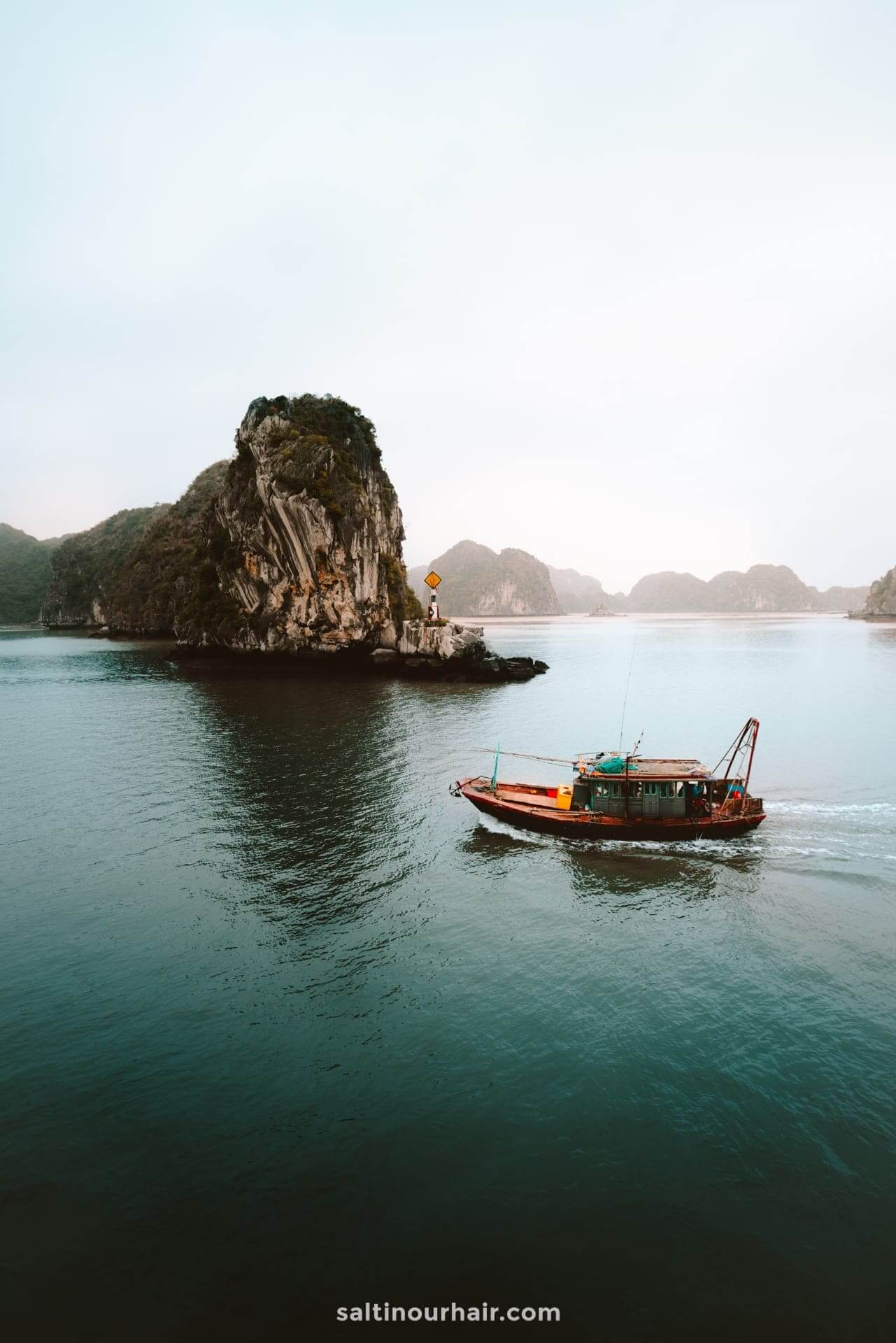
2. Hanoi Motorbike Tour
Vietnam’s capital city is the heartbeat of the country and a place that’s always alive, buzzing with busy street vendors and lots of traffic. Though it can be a bit of a frenzy, Hanoi offers plenty of charm, from its colorful Old Quarter to authentic markets.
Hotels in Hanoi 😴
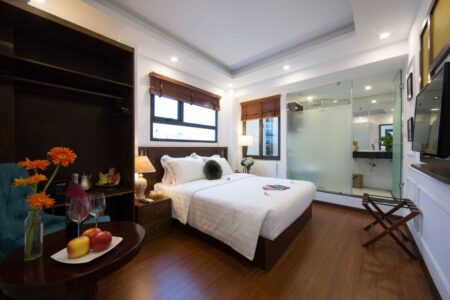
The best way to discover the city is to join a motorbike tour through Hanoi’s Old Quarter alleys, dating back 2000 years. Hanoi Backstreet Tours is a fantastic tour that uses vintage Minsk motorcycles. Soak up the surroundings as you sit on the back of these motorcycles, riding past all the city’s highlights.
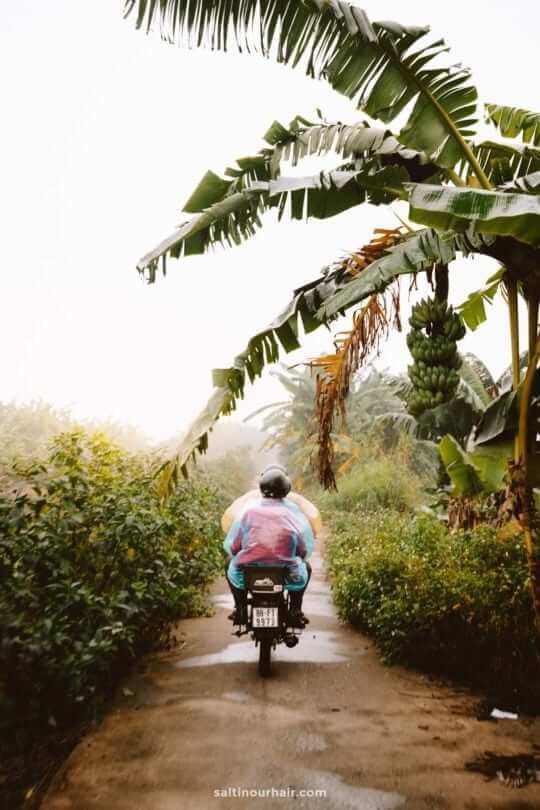
Expect to see old houses on narrow alleys, locals transporting goods on carrying poles, and traffic crossing from every direction. The well-informed guides provide you with local knowledge and plenty of information about Hanoi and its history. You’ll also tour around the green region, which contrasts the busy morning in the metropolis.
Read more: The best things to do in Hanoi, Vietnam
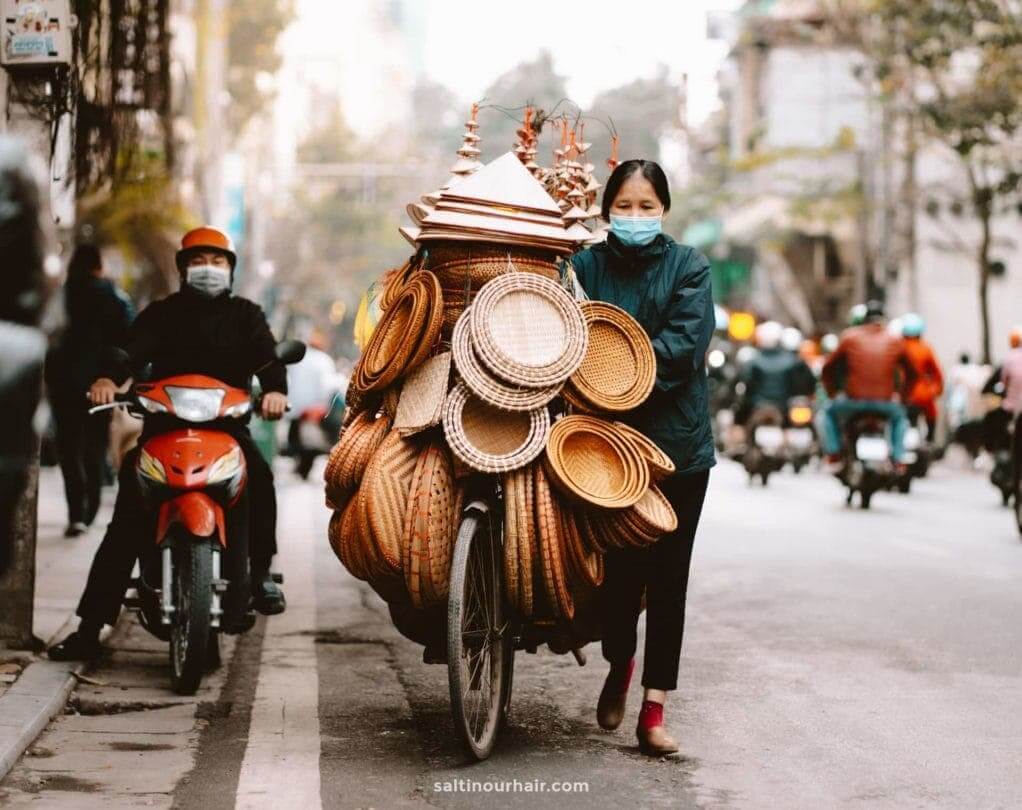
3. Discover the Rice Terraces of Sapa
The Sapa Valley and its surrounding nature lie in the North of Vietnam, close to the border of China. It’s an incredible location where you can summit giant mountain peaks, balance on the borders of rice fields, and swim under stunning waterfalls. From trekking among some of the most beautiful scenery in the county to immersing yourself in the culture by visiting a tribe, Sapa makes a must-visit on any Vietnam itinerary .
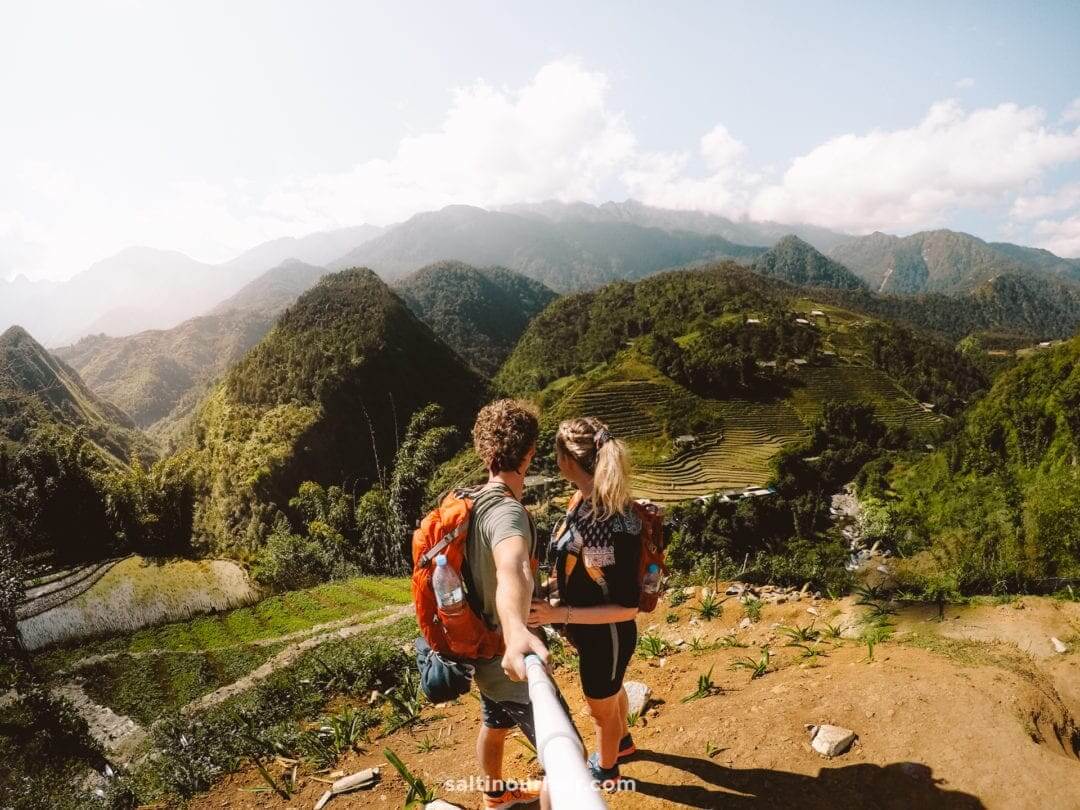
The hills are terraced with layers of luscious green and yellow rice fields, overlooked by the country’s tallest peak, Fansipan Mountain. The wavy pattern of the terraces creates a rippling effect across the beautiful countryside.
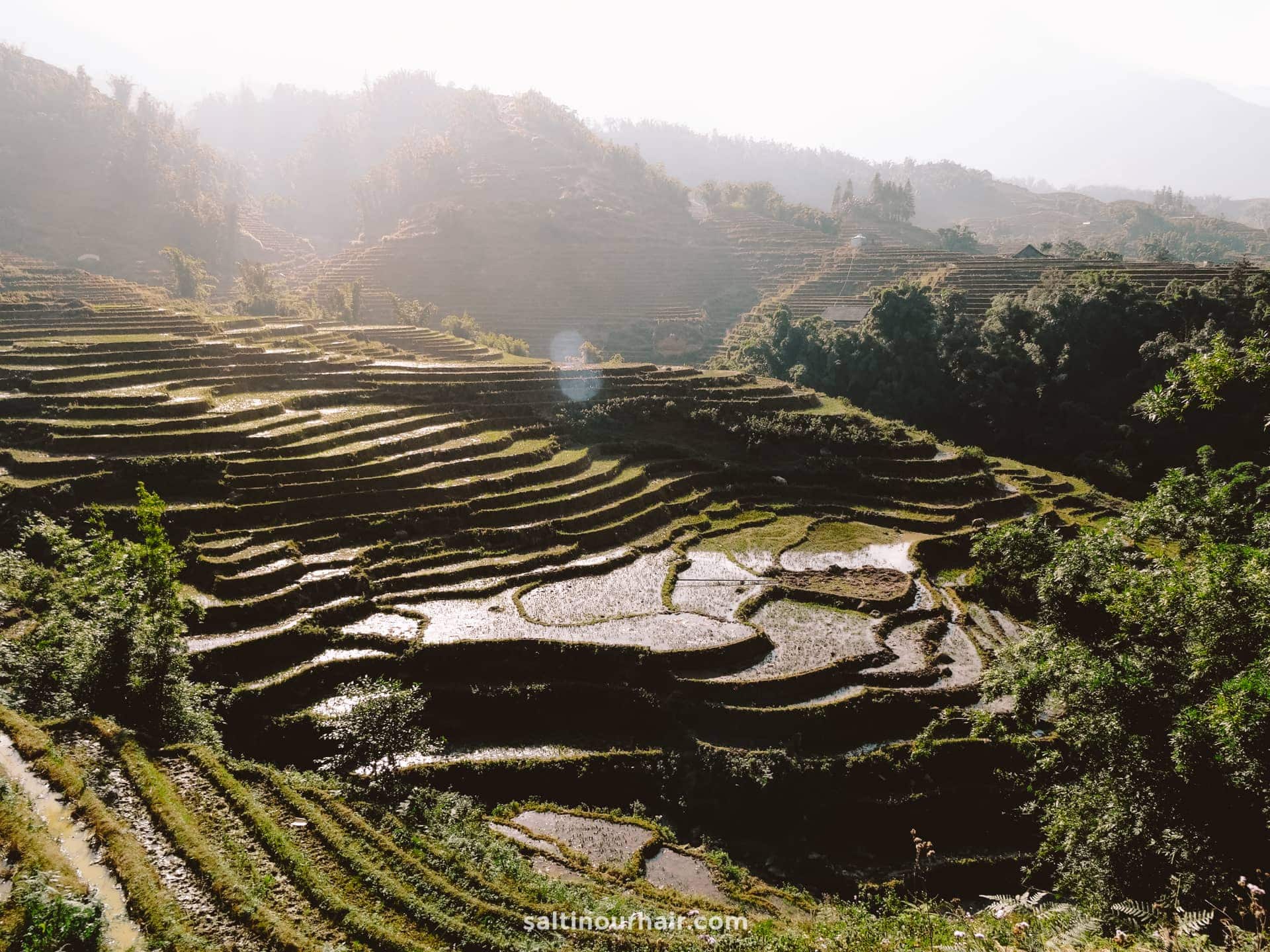
Trek between tiny villages or soar through the clouds to the peak of Fansipan Mountain. You can also arrange trekking in Sapa town, where you’ll find many guides on the streets. This is the realm of the H’mong, a local tribe in the Sapa area, who often provide guided trekking tours.
Read more: Trekking through Sapa, Vietnam
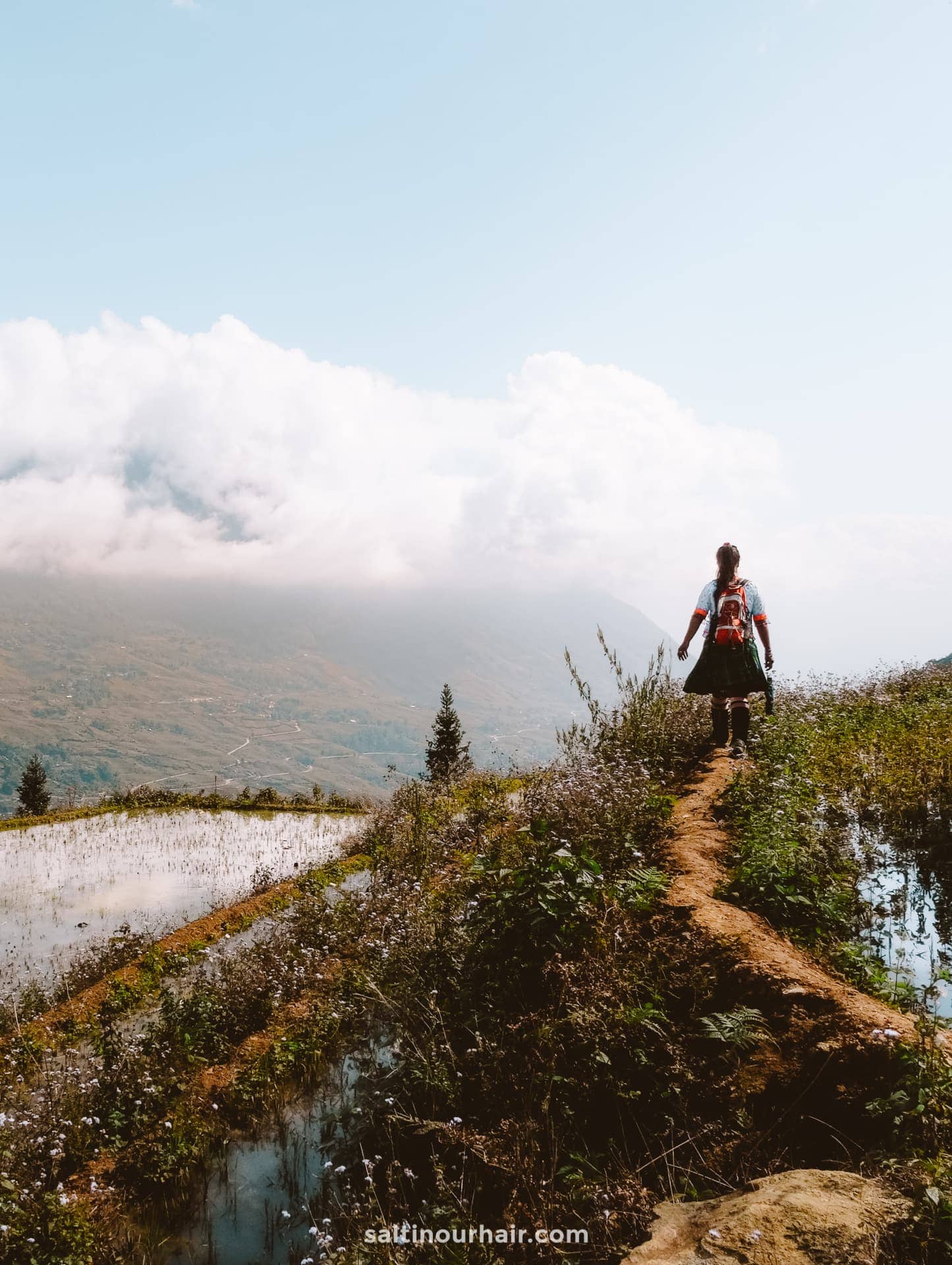
If you can, however, it’s best to arrange a reliable trekking itinerary through your hotel, guesthouse, or homestay. This way, you can read reviews and have the most enjoyable and informative trekking experience possible.
Hotels in Sapa 😴
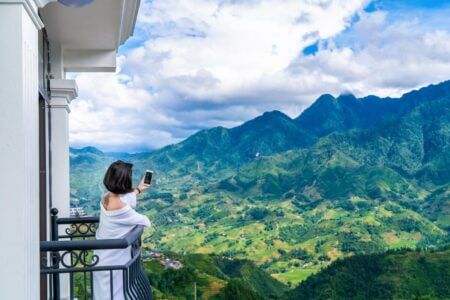
4. Hike Hang Múa Peak in Tam Coc
The natural paradise of Tam Coc , a small town in the beautiful Ninh Binh Province, is one of the best things to do in Vietnam. Here, hundreds of limestone karsts tower out over calm rice paddies. As a result, the area has been famously nicknamed ‘Ha Long Bay on land’.
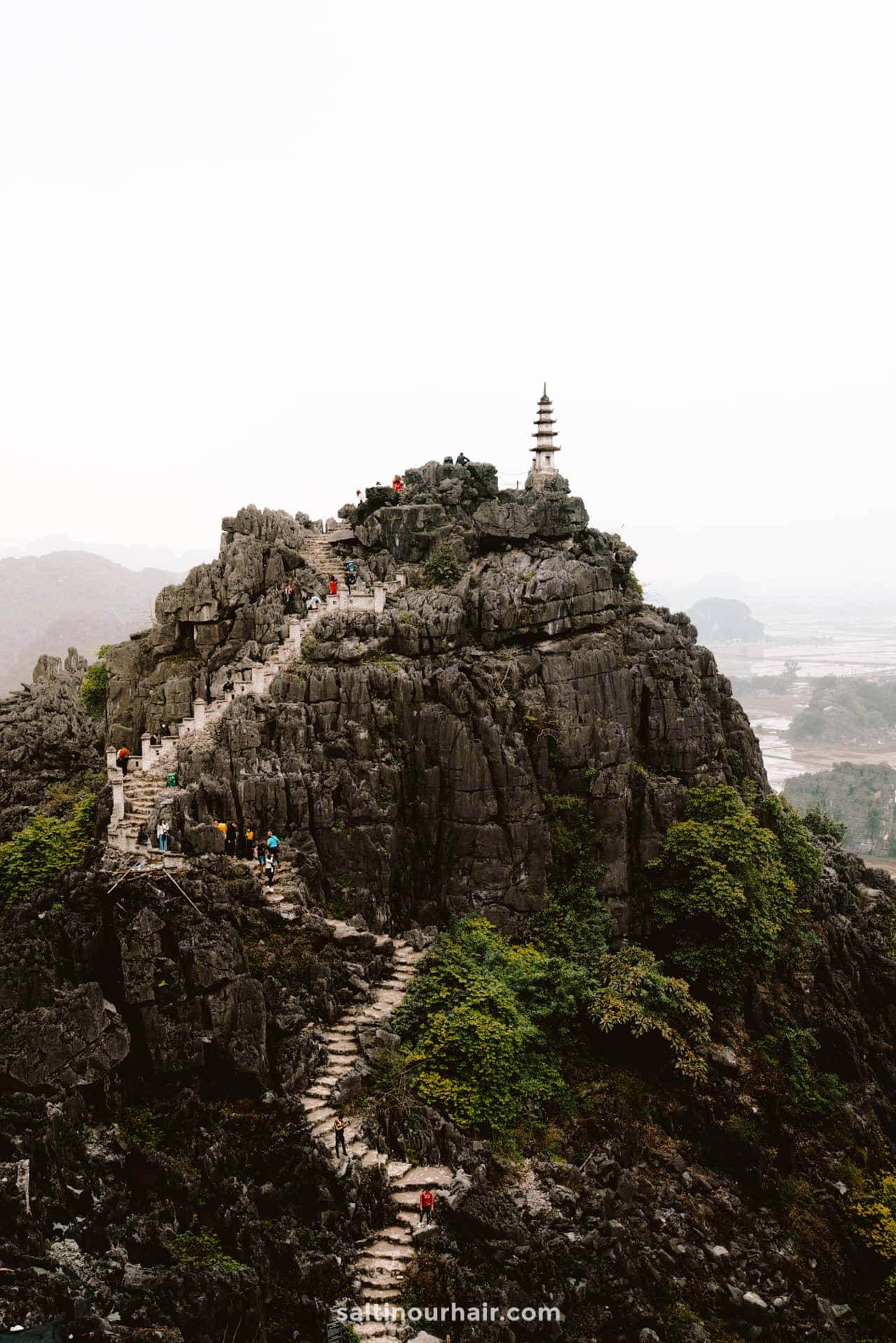
The town is part of a wider UNESCO World Heritage Site full of rainforest-covered mountains, enormous valleys, and limestone cliffs. This makes it the perfect rural retreat to unwind. Try to reach the highest peak Hang Múa, where you’ll discover a stone dragon watching over the landscape (an important symbol of Vietnamese culture).
Hotels in Tam Coc 😴
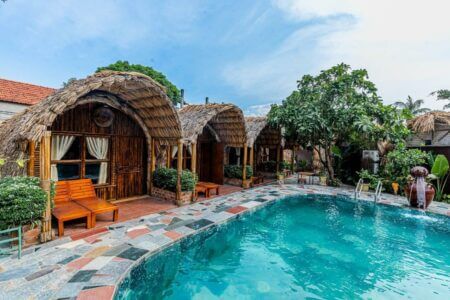
Climb your way up the snaking path of 500 steps to reach the top of an incredible cliff point. Here, you’ll find gorgeous panoramic views over the deep valley, waterways, and green mountains. There are two peaks up here, and both are worth visiting! The peak is open daily from 6 AM – 7 PM, and entrance costs 100.000 VND (4,26 USD).
Did you know? The name ‘Tam Coc’ literally means ‘three caves’, referring to the three in the area: Hang Ca, Hang Hai, and Hang Ba.
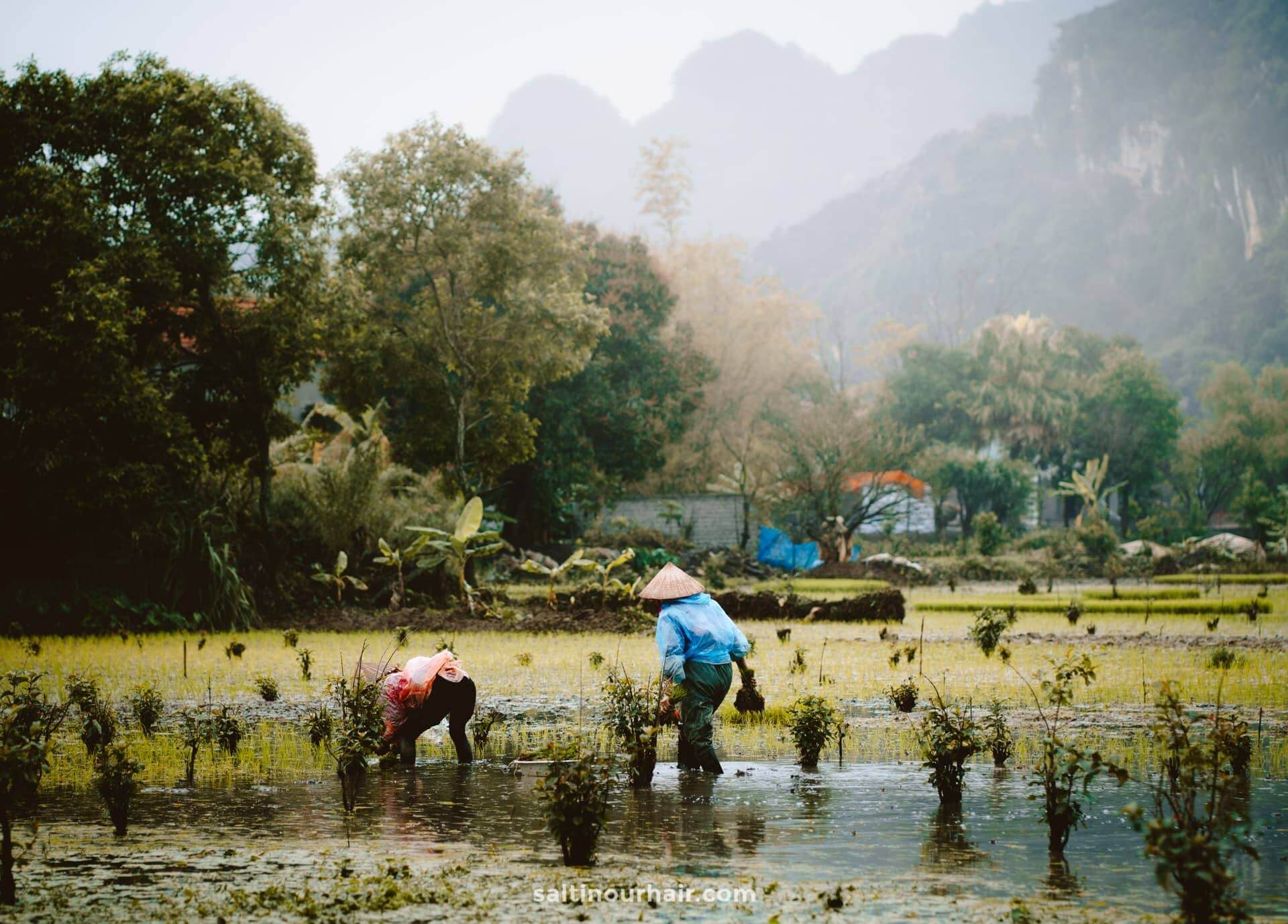
5. Tam Coc Boat Ride
Apart from the mountains, there are many other incredible things to do in Tam Coc. The sweeping valleys of the area are full of beautiful waterways sandwiched between colorful yellow and green rice fields. Admire the scenery by floating down the Ngo Dong River on a boat tour, taking in new breathtaking views around every corner.
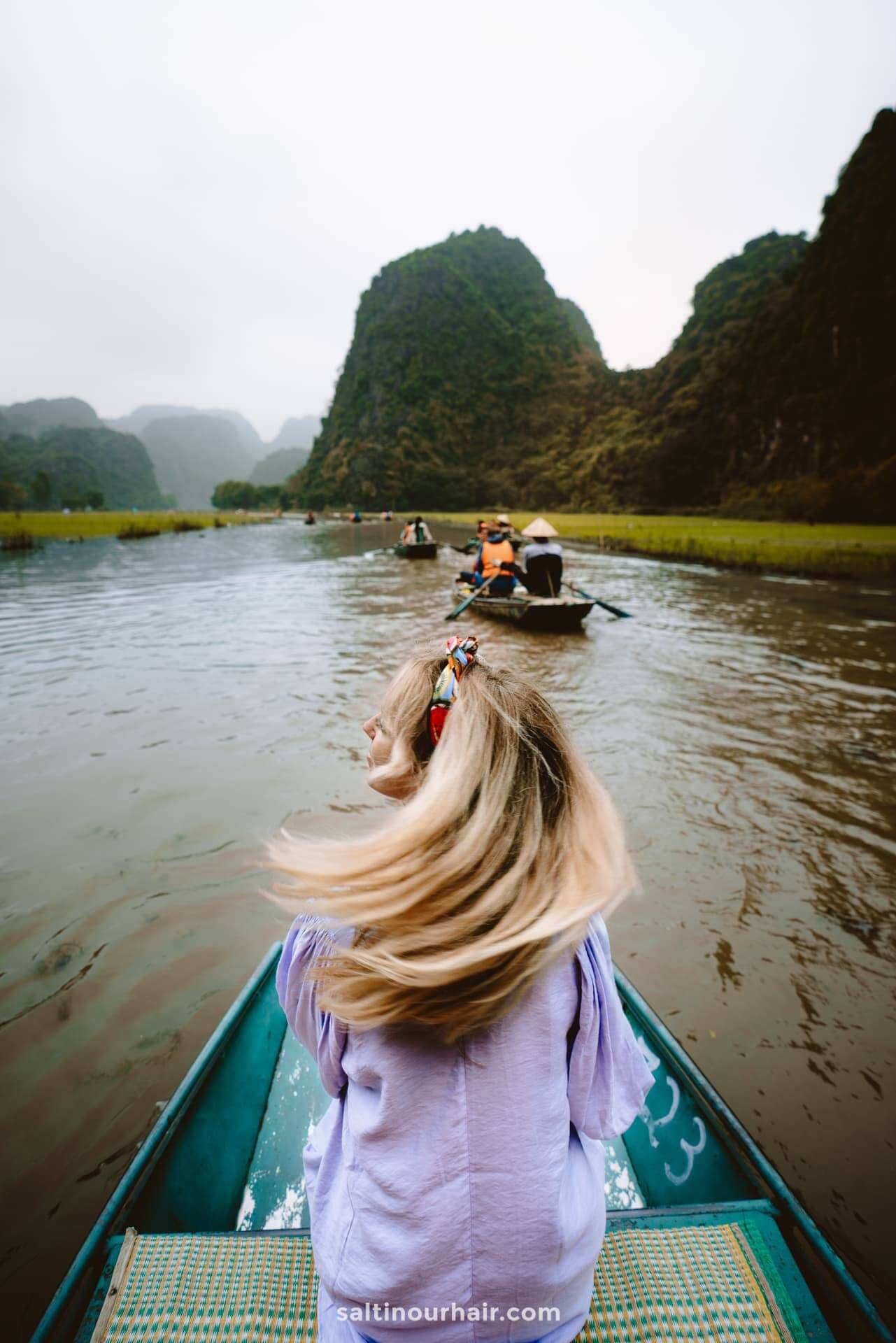
During your journey, you’ll float through three large caves with dramatic stalagmites and stalactites. Hang Ca is the largest of the three, spanning around 20 meters in width and 127 meters in depth! The cave tour takes about 3 hours and is the perfect way to enjoy the beauty of Tam Coc.
Tours in Tam Coc can easily be booked online here
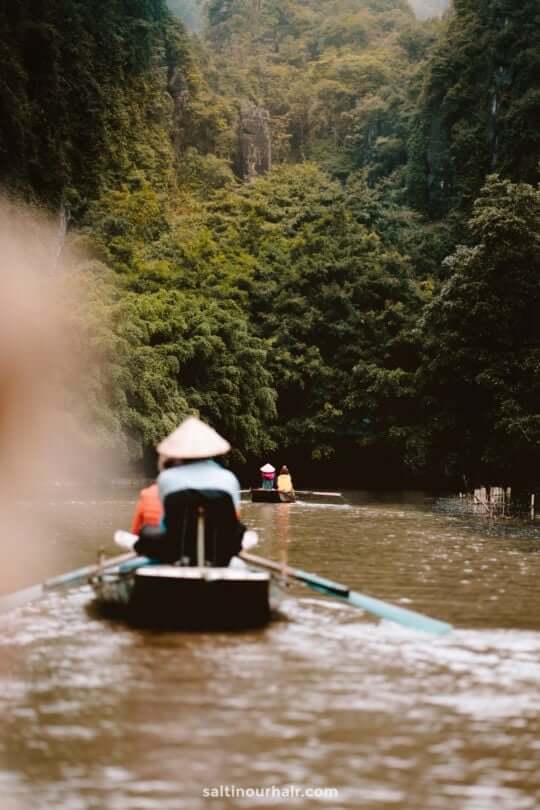
Entrance fee: the cave tour costs a sightseeing fee of 120.000 VND (5,13 USD), with an additional 150.000 VND (6,40 USD) for the boat (for two people). Keep in mind that your boat guides and locals sometimes ask for a tip.
Read more: the best things to do in Ninh Binh and Tam Coc, Vietnam
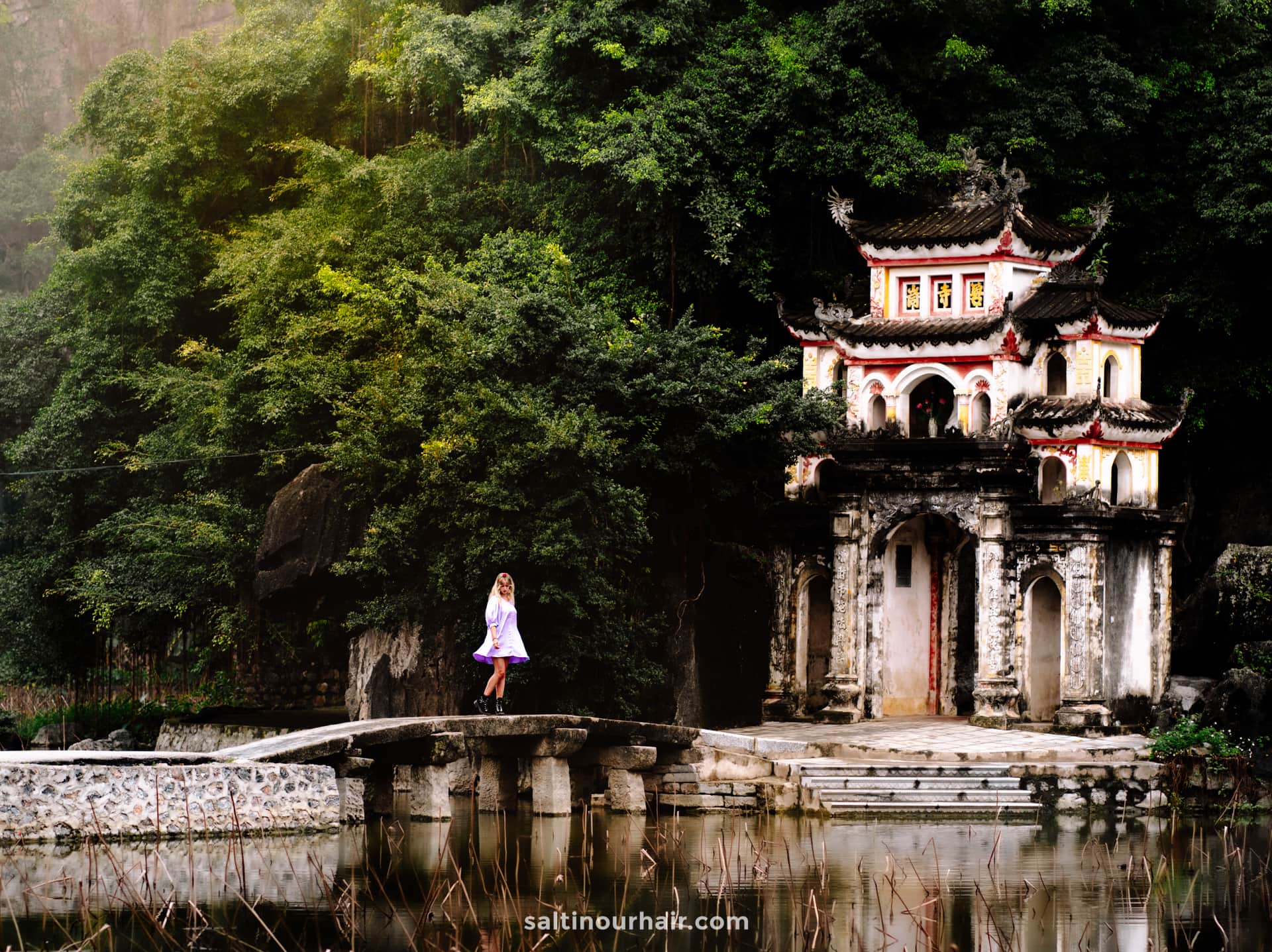
6. The Caves of Phong Nha
One of the best things to do in Vietnam is to explore the spectacular area of Phong Nha, also known as the ‘adventure capital of Asia’. You’ll find hundreds of mammoth caves here, nestled between gorgeous limestone mountains and wide-bending rivers. Because of this, spend a day enjoying trekking, climbing, abseiling, or touring through the tunnels and rivers.
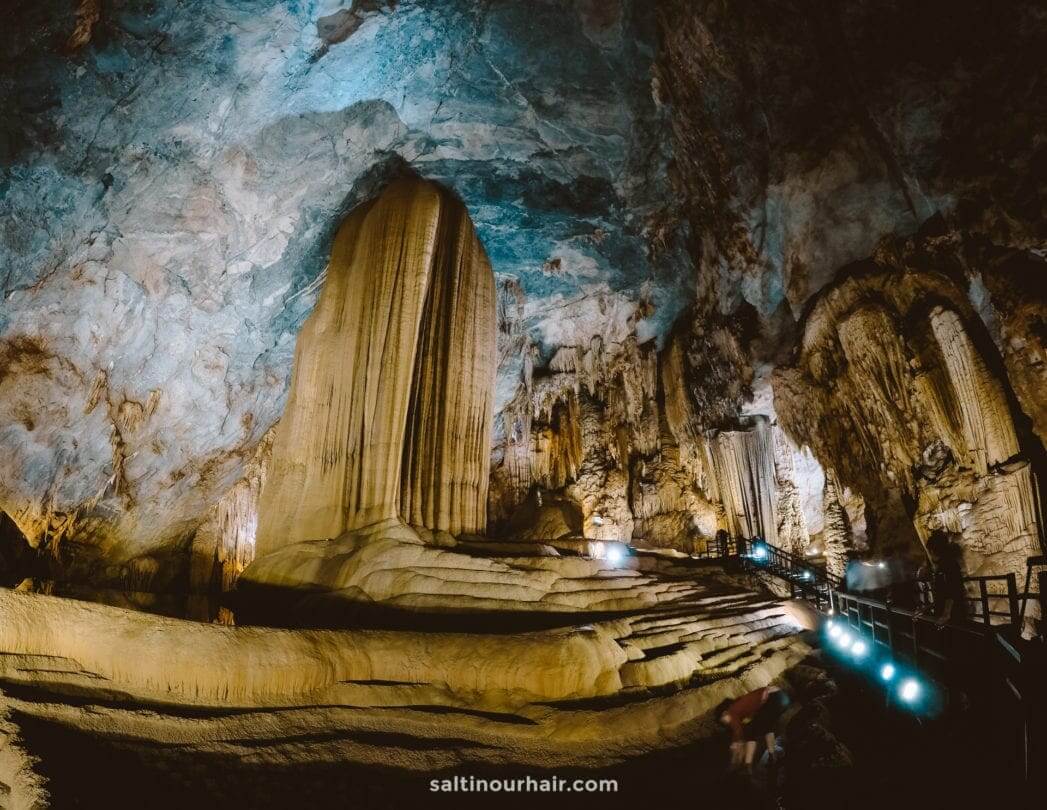
The most extraordinary cave in the area is Son Doong, big enough to fit in city skyscrapers. It’s a 4-day trek to get to this cave, so make sure to plan ahead if you want to incorporate this experience into your Vietnam travels. However, there are many other caves just as impressive that can be visited on a day trek, like Hang En.
Tip: If you plan on visiting Phong Nha’s caves, visit outside the rainy season (July- December). Many of the caves become inaccessible during this time, especially in the later months.
See tickets and availability for a day tour to Phong Nha
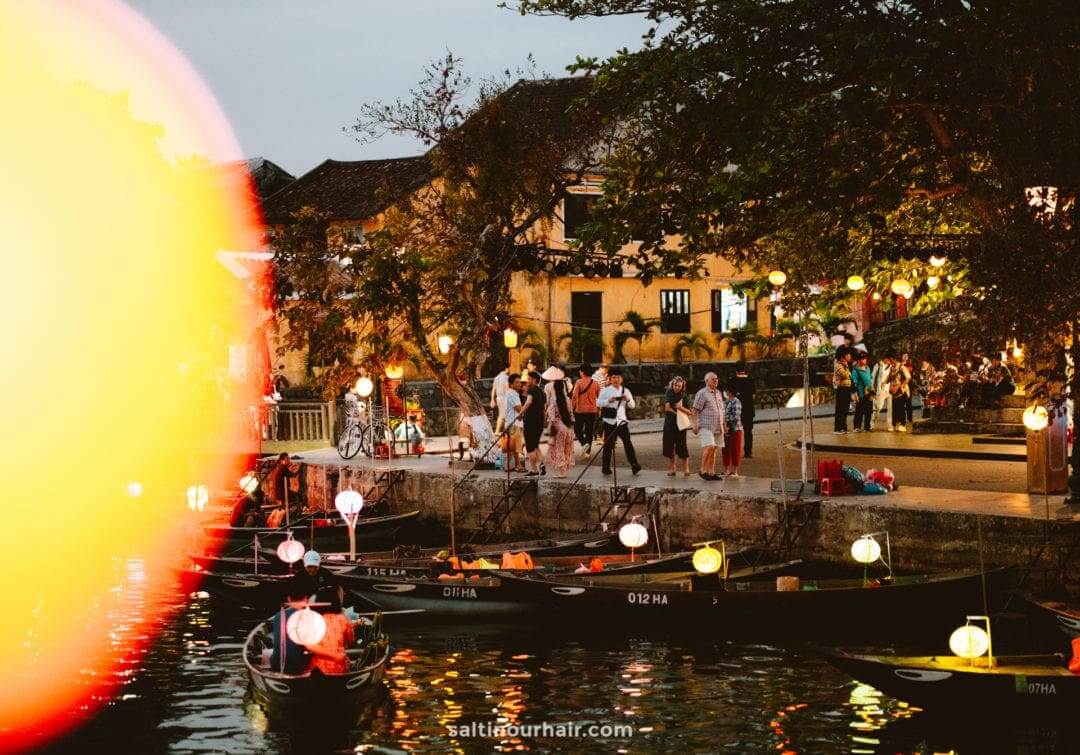
7. Streets of Hoi An
Home to charming lantern-lit streets, traditional wooden houses, and yellow colonial buildings, Hoi An makes a lovely destination in the country. The atmospheric city is full of Japanese, Chinese, and French influences that translate back into the street scene along the river bank.
Hotels in Hoi An 😴
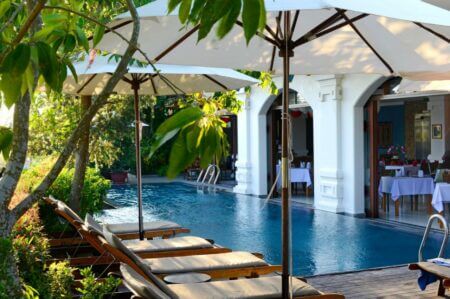
This long-established UNESCO site has perfectly preserved its history, packed to the brim with 15th-century merchant homes and ornate bridges. Spend a few days strolling through the old colorful alleys, enjoying the lively ambiance of markets full of food stands and century-old temples.
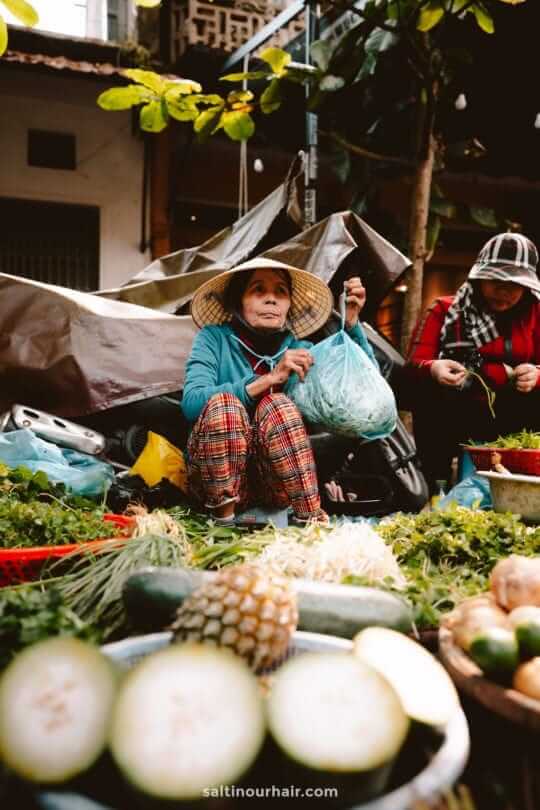
8. Try the Incredible Cuisine!
From grabbing a delicious Banh Mi in Hoi An to ordering Pho (a Vietnamese staple) in Hanoi, one of the best things to do in Vietnam is to try the incredible cuisine. Food is a big part of the country’s culture, whether you stroll through the history-rich streets of the cities or worm your way between rice fields and coffee plantations.
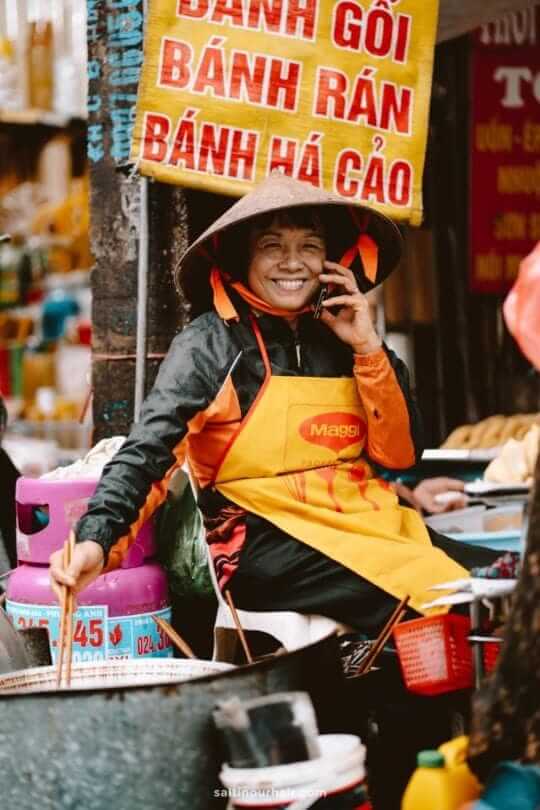
The introduction of the baguette by French colonial influences left its mark on Vietnam. Because of this, a must-try while you eat your way through the country, is a Banh Mi sandwich. Filled with meats, coriander, cucumber, pathé or cheese, chili, and mayonnaise, this is one of the most iconic Vietnamese dishes you can get.
Tip: Hoi An has been dubbed the Banh Mi Capital of Vietnam, making it the best place to try it! Are you vegetarian or vegan? Then make sure to go to the incredible banh mi stall at this spot .
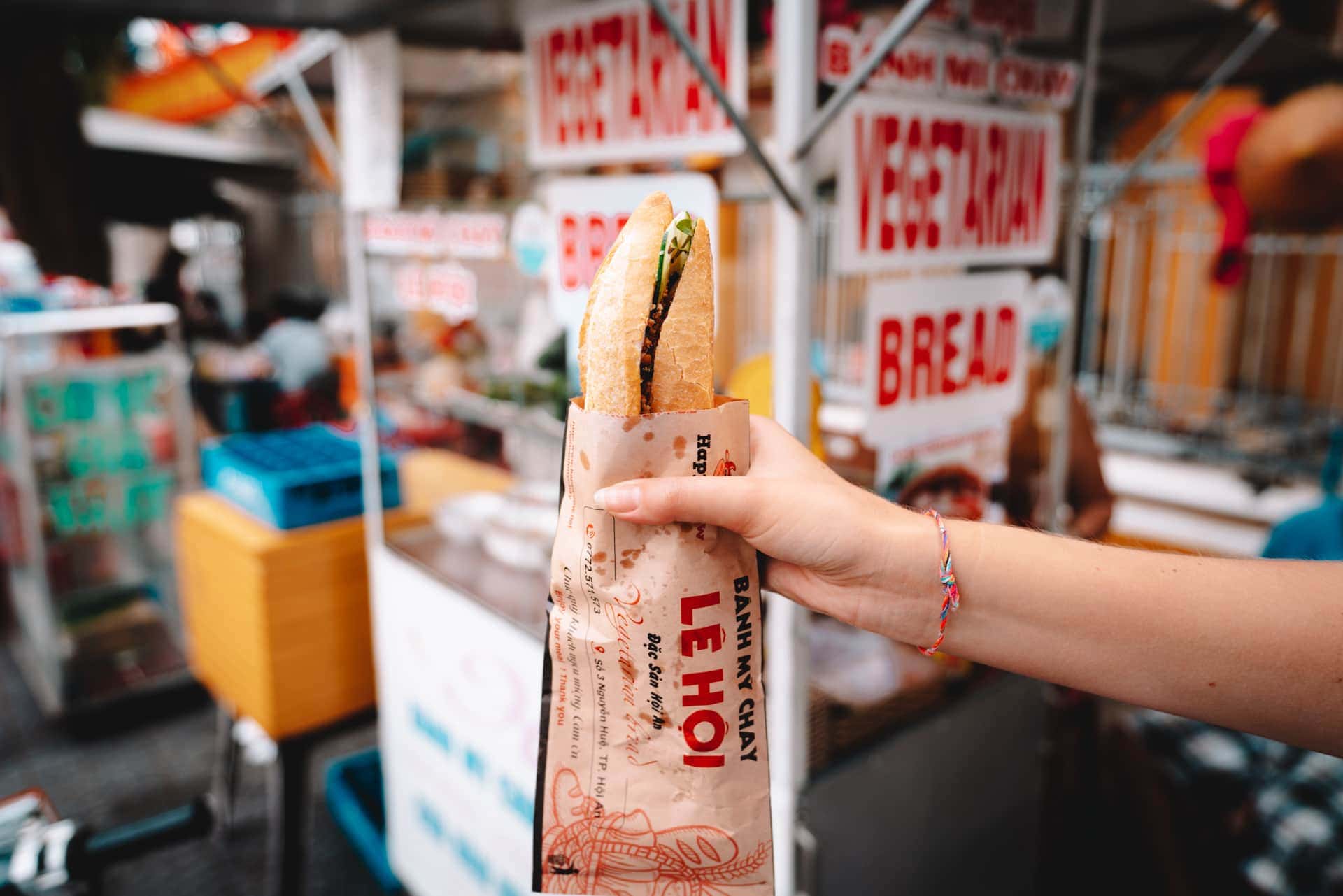
Vietnamese cuisine is arguably one of the best in the world, and Hoi An especially is full of explosive flavors. Because of this, cooking classes are an incredible and popular activity to do. Gather organic vegetables and herbs during a beautiful boat trip and cook a traditional Vietnamese meal with others during a class. Cooking classes usually take 3 to 5 hours.
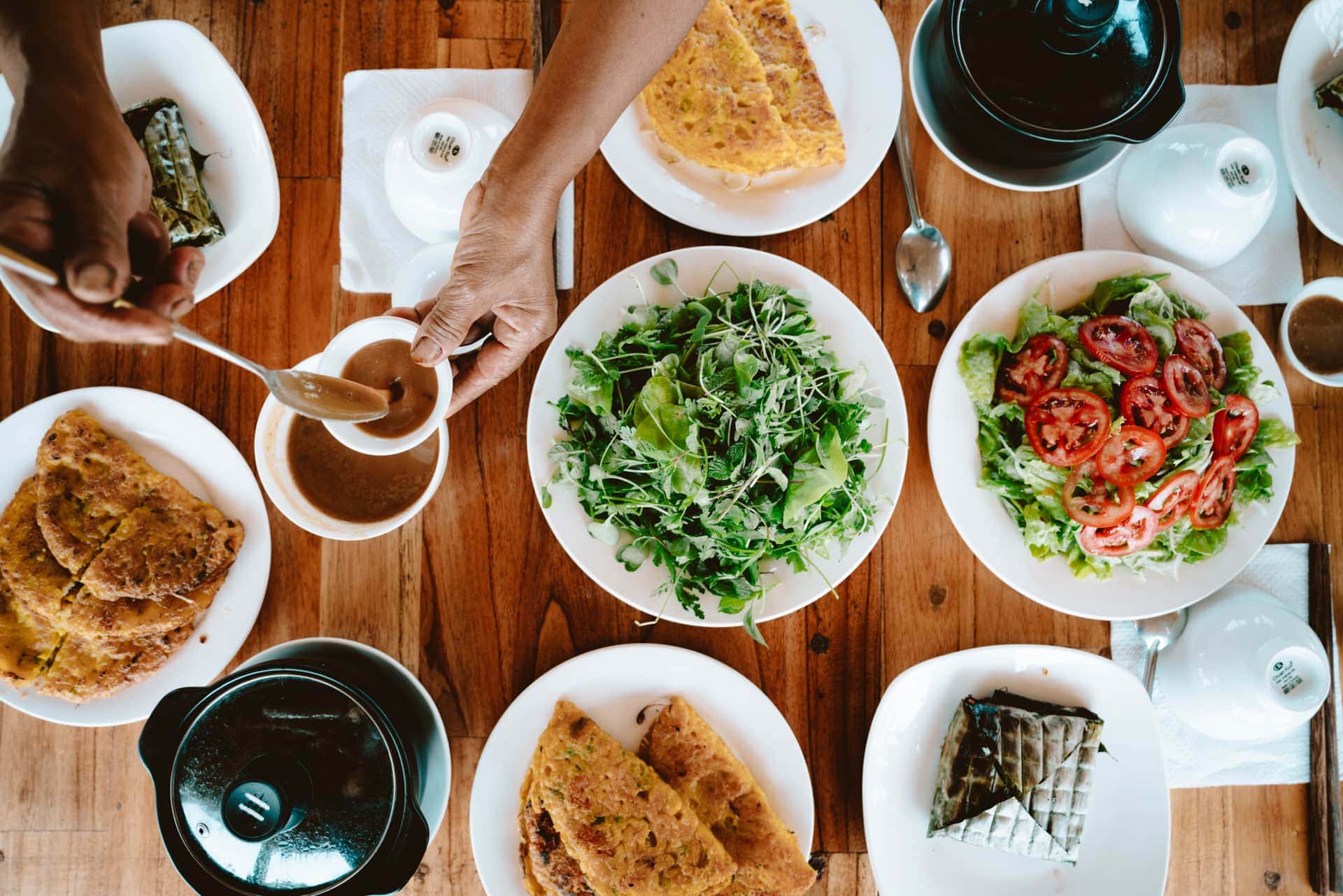
9. Discover Vietnam by Motorbike
Nothing tops driving past the lush Vietnamese countryside on a motorbike and seeing nature at its finest. From the tropical mountains and limestone karsts to thousands of kilometers of coastline and the gorgeous rice paddies of the Mekong Delta, there are endless corners to explore.
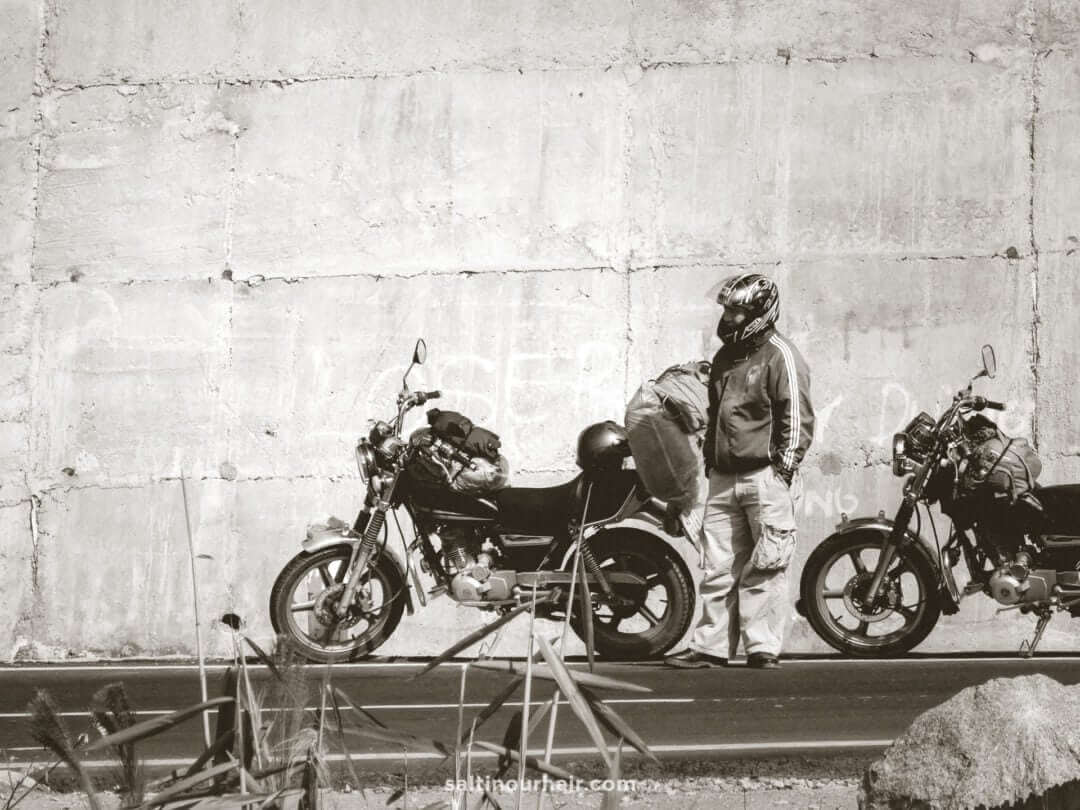
Whether you’re thinking of heading out on a day trip or planning a multi-day journey, a motorbike offers total freedom to get around at your own pace. Ride across the famous and exhilarating Hai Van Pass, a meandering road (20 km) through the hills and past the coastline 500m above sea level!
Travel Insurance Don't forget a travel insurance for your Vietnam trip! Heymondo covers medical emergencies, theft, delays, cancellations, lost luggage, and more, with 24/7 worldwide assistance and medical chat. As a Salt in our Hair reader, we've got you 5% off! Check Heymondo here
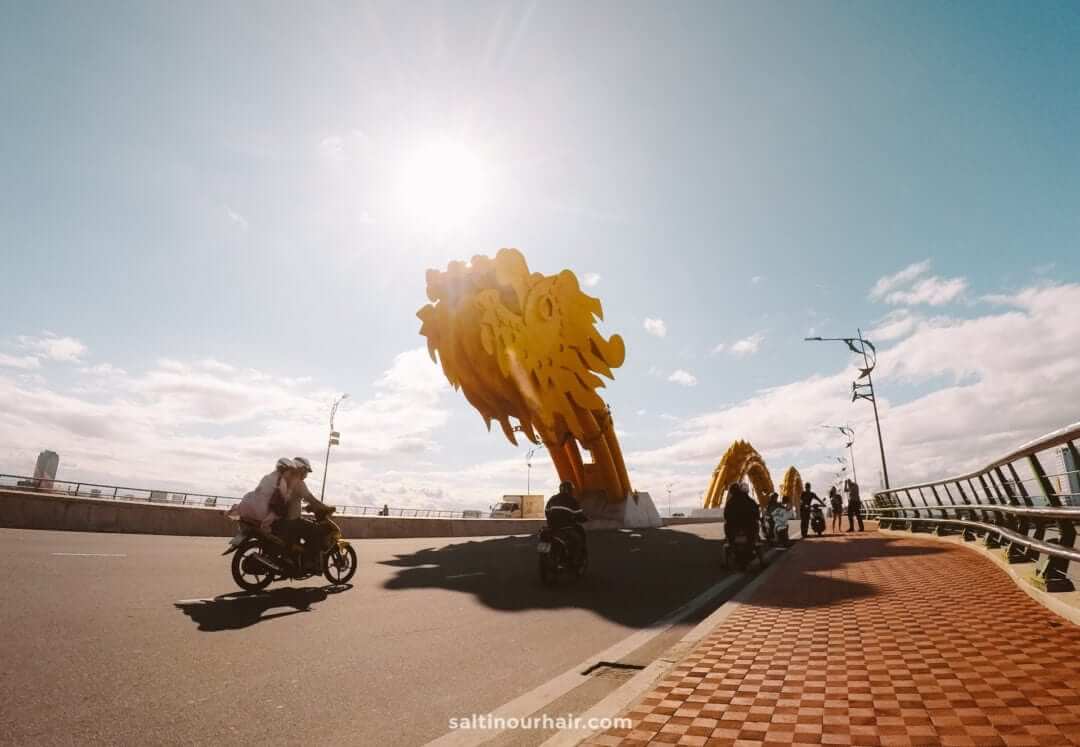
Stop in Danang to see the golden bridge or the weird and wonderful Ba Na hills full of countless wildlife. Exploring Vietnam by motorbike, whether by yourself or on the back of a driver, is easily one of the most incredible ways to see the country.
Tip: An International Driving Permit is becoming more of the norm if you want to rent a motorbike in Vietnam. An IDP only costs 15 USD and can easily be arranged here .
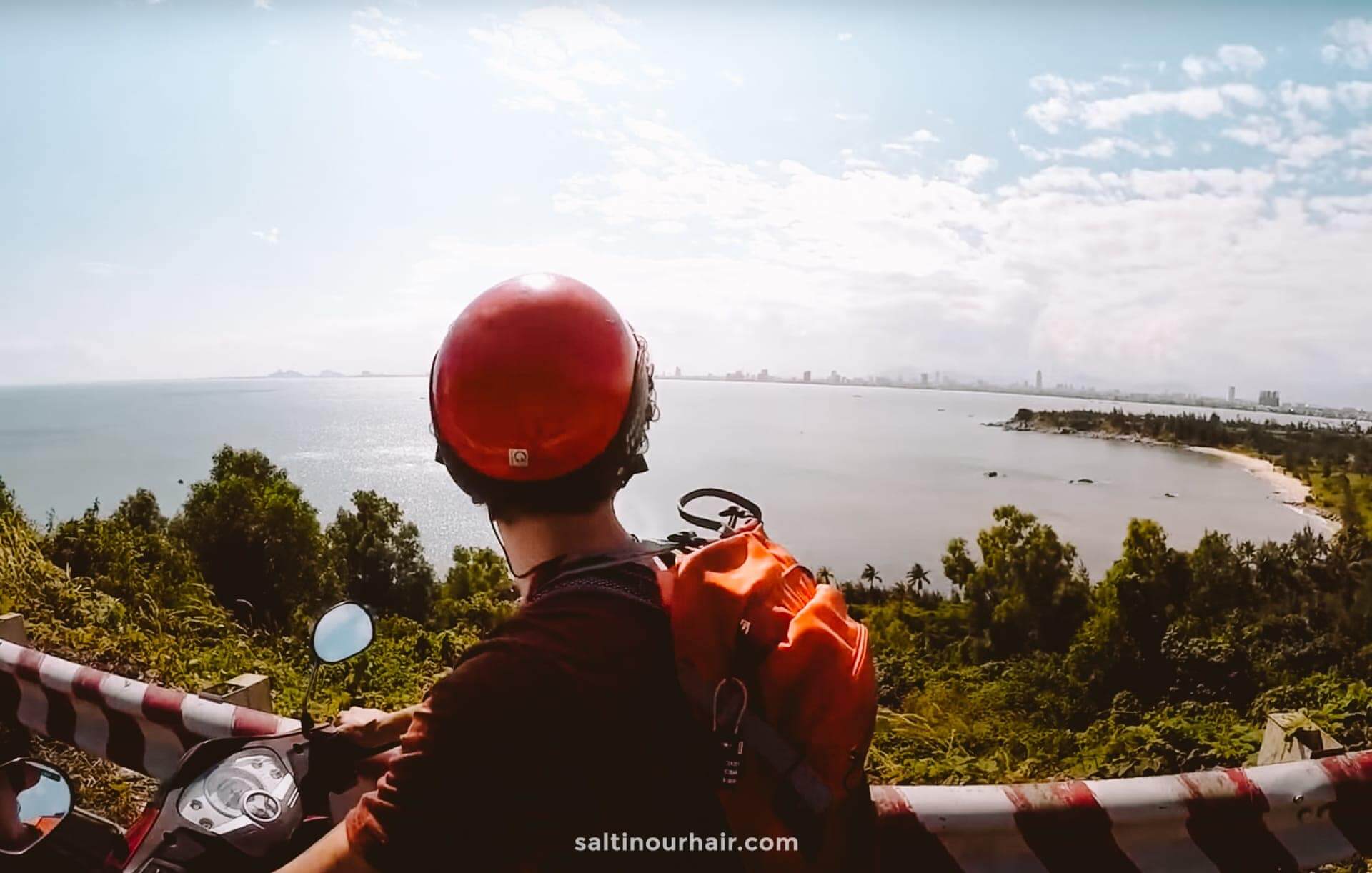
10. Mekong Delta
The mighty Mekong River flows over 4000 KM from the Tibetan Himalayas across Vietnam to the south before reaching the sea. For centuries, this stunning area of natural beauty has been home to a network of waterways, stilted villages, rice paddies, and mangrove forests. Because of this lusciousness, the Mekong Delta region is one of the most breathtaking locations in Vietnam .
Life here hasn’t changed much over the years, offering an authentic look into the local culture. Jump on a cargo boat, gazing at the lush riverbanks and floating markets while you drift through the waterways. Or, join one of the cruises from Cai Be or Can Tho to explore the delta region and soak up the views peacefully.
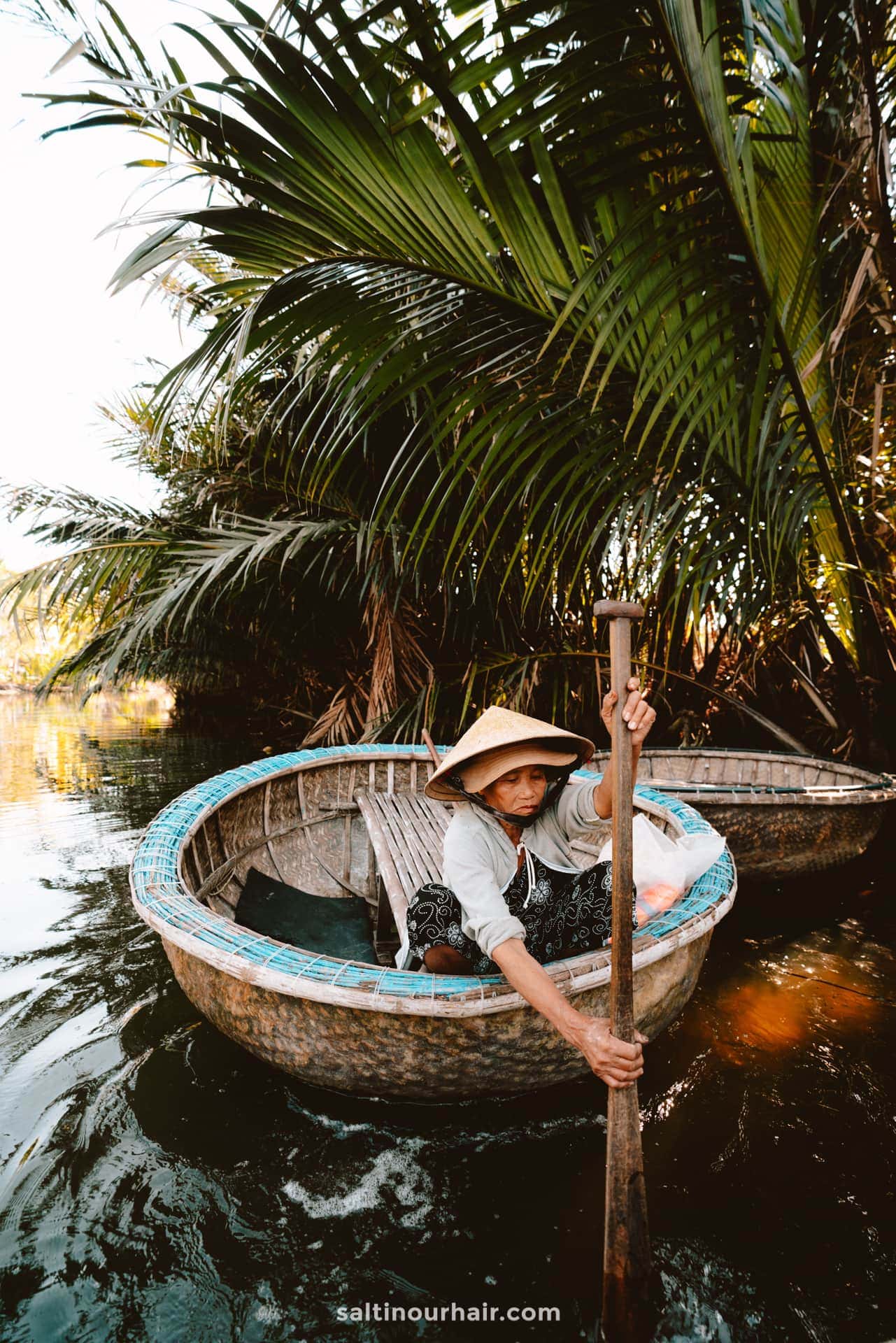
11. Ban Gioc Waterfall
One of Southeast Asia’s most breathtaking natural highlights is the enormous (70m tall, 208m wide) Ban Gioc waterfall. This iconic site sits on the border between Vietnam’s Cao Bang region and China and is made up of two colliding waterfalls that plummet down with a powerful force. It’s incredible to see the falls cascading down a huge limestone cliff face between lush greenery.
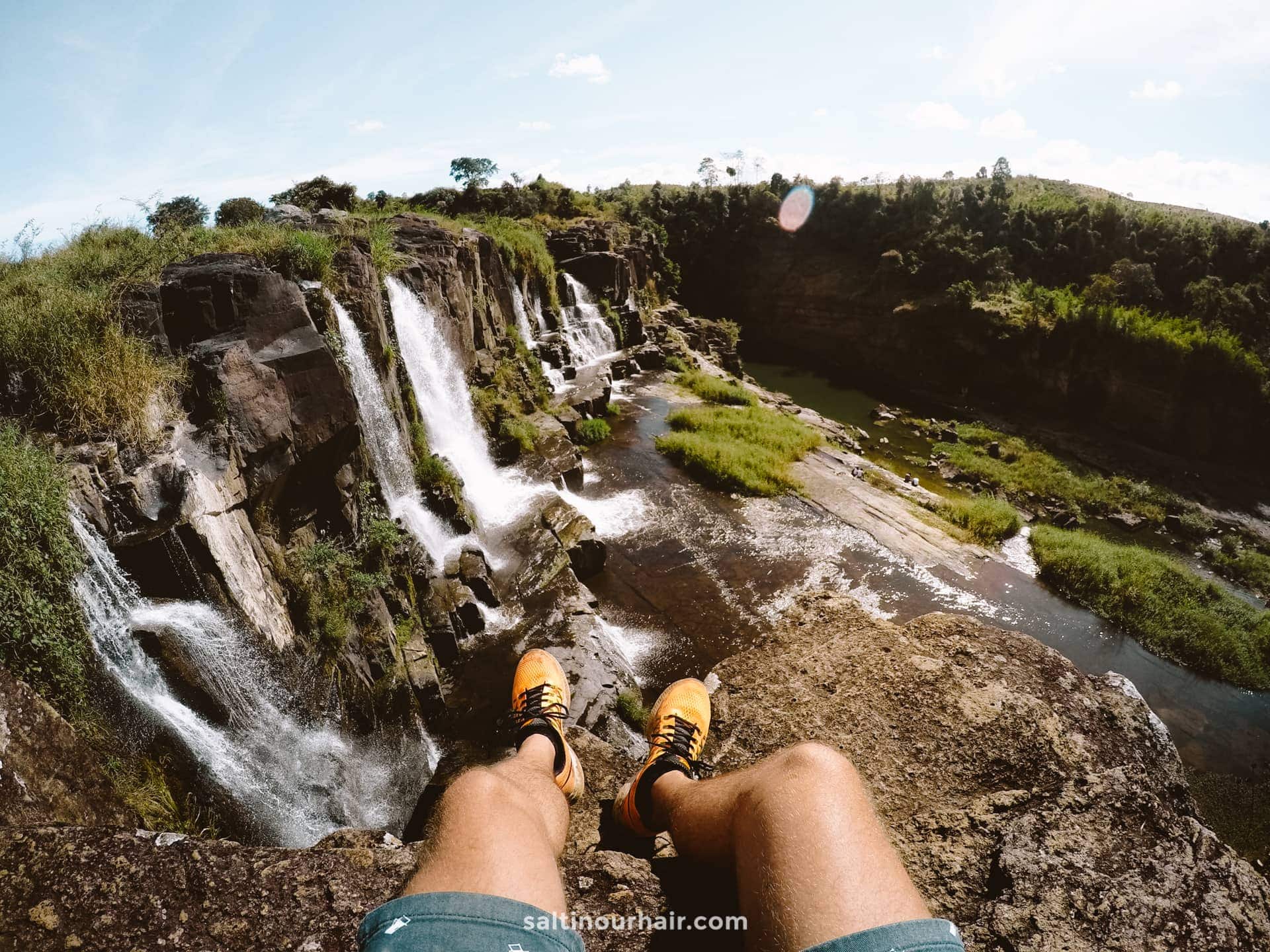
If you’re up for a climb and have the right walking gear, you can trek to the highest point of the falls. Here, you’ll be rewarded with astounding views of the waterfalls and the surrounding rocky mountains. Keen hikers can continue to explore nearby caves and their kilometer-long walkway, lined by stunning stalactites.
The entrance to the falls is about 2 USD. There’s also the option to get a closer look at the majestic falls by hopping on a bamboo raft, which brings you to the base of the cascade.
For the most convience, you can join a 3 day tour from Hanoi to the waterfall. See tickets and availability here .
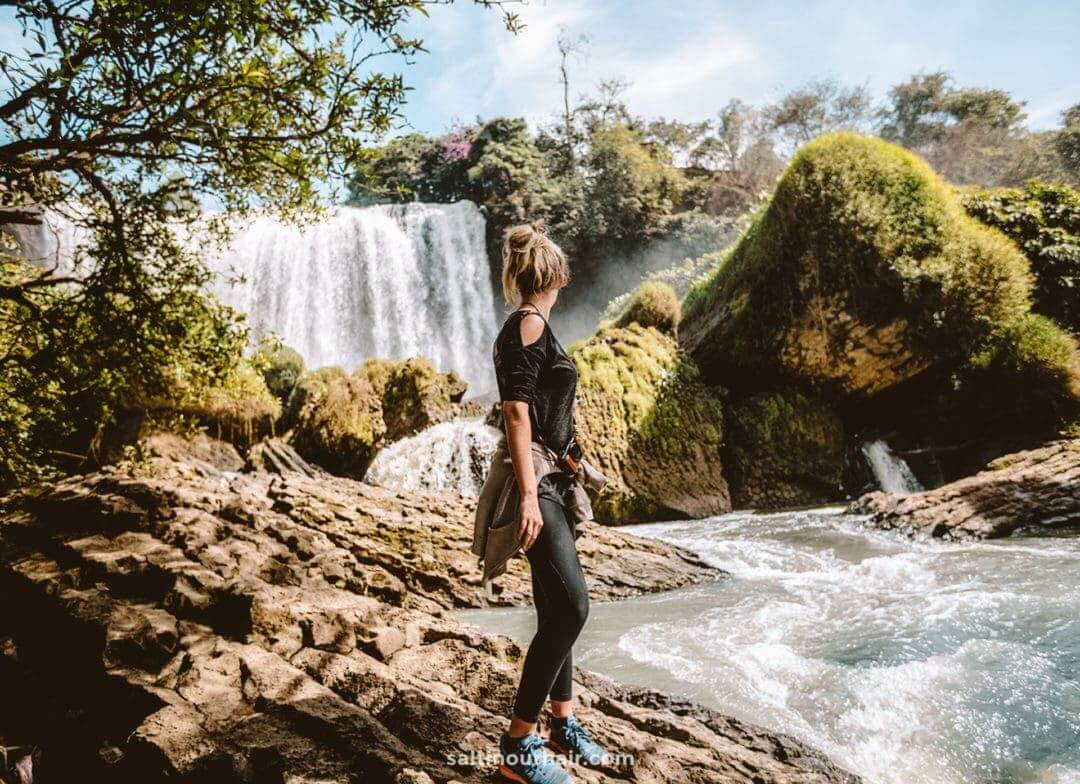
12. Phu Quoc Island
If you have the time on your Vietnam itinerary, make sure to visit the beautiful island of Phu Quoc. This natural paradise in the southwest of the country is full of secluded white sand bays, emerald waters, and beautiful palm trees, making it the perfect spot to relax. Spend a few days swinging in a hammock and enjoying the peacefulness of the surrounding nature.
Hotels in Phu Quoc 😴
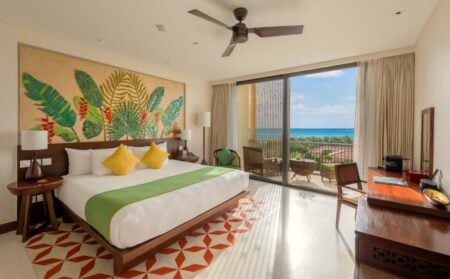
Make sure to head north to explore the Phu Quoc National Park. Here you’ll find perfectly preserved nature, mountains, and dense forest home to an abundance of incredible wildlife. Take your time to go on a nice nature trek, admiring all the natural highlights and hidden waterfalls. From Ho Chi Minh, you can hop on a direct flight to Phu Quoc to take a breather from the hustle and bustle of the cities.
Read more: best things to do on Phu Quoc Island, Vietnam
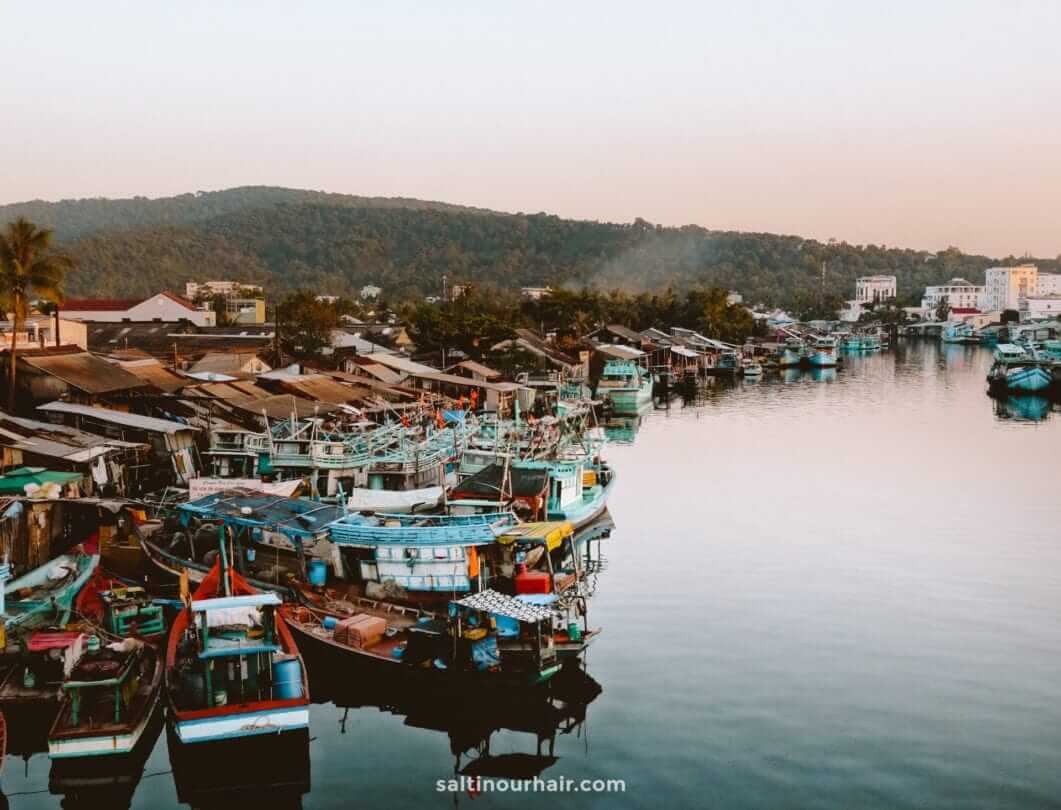
13. War Tunnels HCM
The more somber side of Vietnam is its hostile history, which is still there to see. Tributes, museums, and even architecture provide an insight into the country’s war-torn past. Vietnam has moved on as a nation, but the sacrifices made are still remembered, particularly in Ho Chi Minh City.
This fantastic metropolis is very modern, with broad tree-lined avenues, bright city lights, and skyscrapers. Take some time to dive into the different districts, try the incredible cuisine, and visit the highly informative war museums.
Hotels in Ho Chi Minh 😴

A must-do is to take a day trip to the Cu Chi Tunnels: a huge network of underground tunnels used by the Viet Cong soldiers in the war. This area stretches for more than 250 kilometers, allowing the troops to operate and communicate in the area around the city. Two short sections can be visited on a guided tour, giving you the opportunity to crawl through the tunnels yourself.
See tickets and availability for a tour of the Cu Chi Tunnels
14. Custom Clothing in Hoi An
Vietnam is the epicenter of tailor-made clothing. Whether it’s a summer dress or a three-piece suit you’re looking for, you can get it custom-made in the country. The city of Hoi An , in particular, makes a go-to destination for visitors looking to get a custom-designed keepsake.
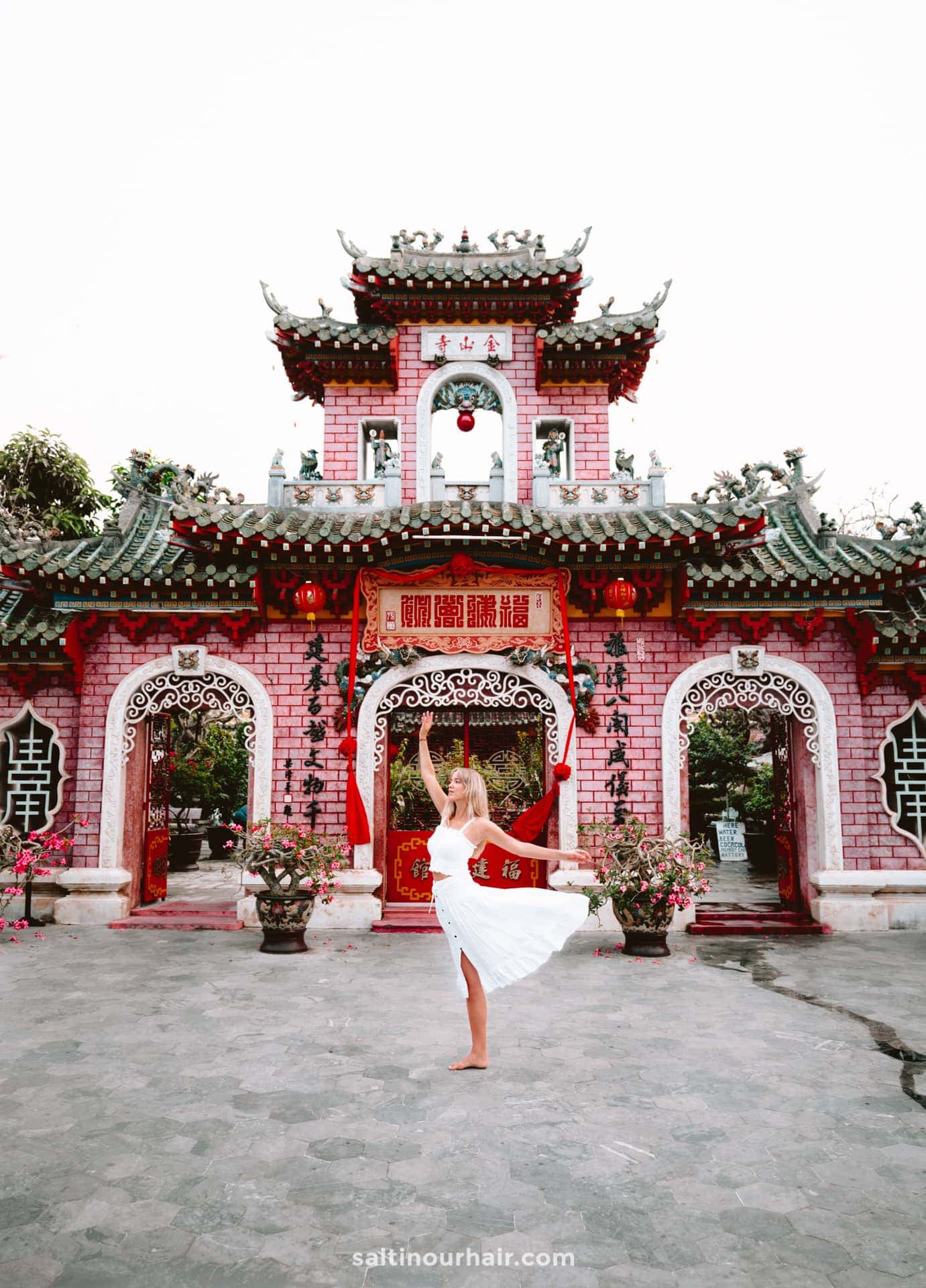
While you make your way through the downtown streets, take some time to look around for a shop that does custom tailoring or sewing work. From suits and gowns to bikinis and even winter coats, the tailors here can make anything with numerous different fabrics.
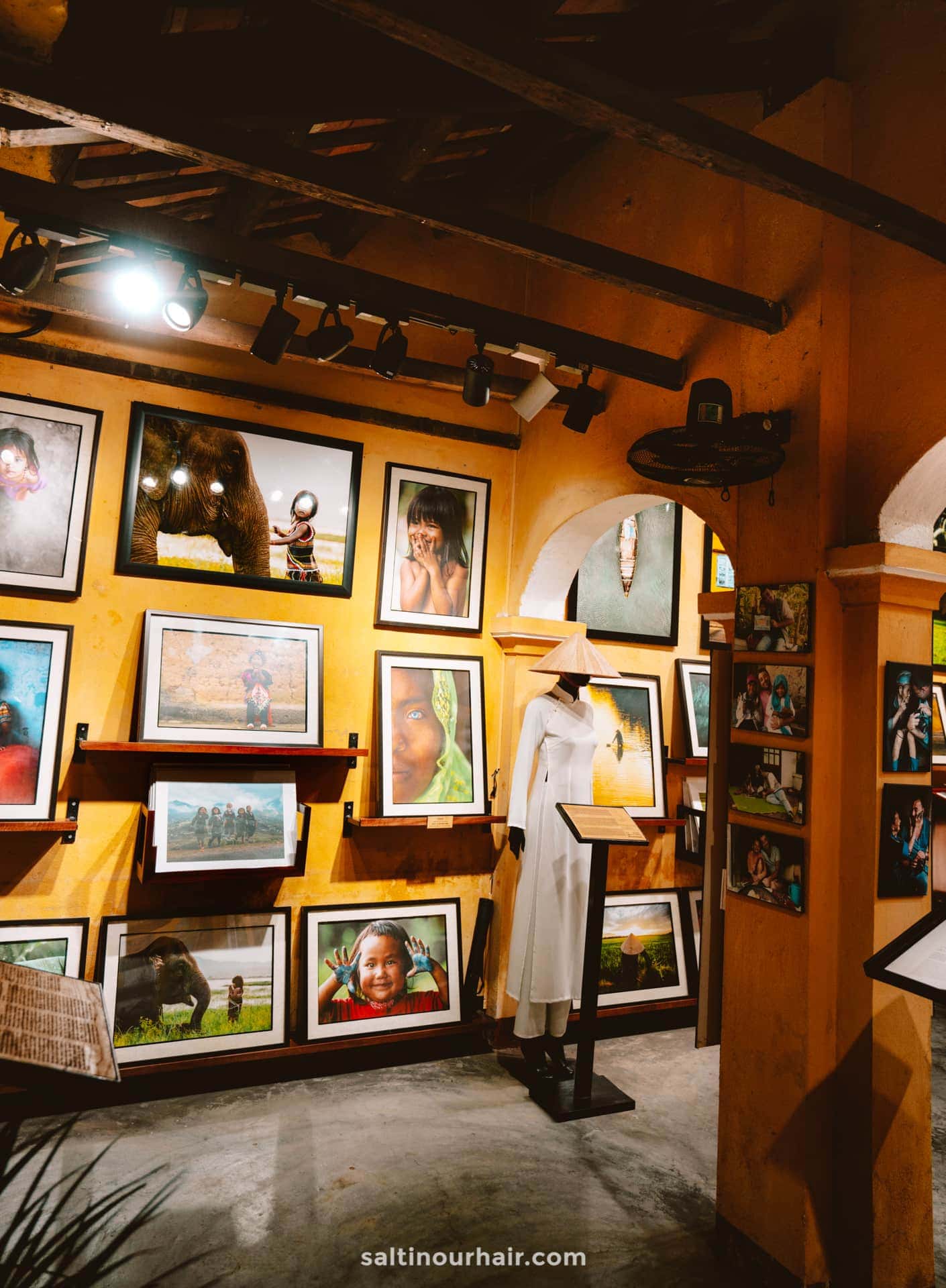
There are two different types of shops you can visit depending on what you want to get made. If you’re looking to have a summer dress or button-up shirt design come to life, head to a casual clothing tailor. If you’re looking for more formal attire, visit a high-end fashion shop like this one . These often have more luxurious fabrics and more experience in this type of tailoring. Getting a piece of clothing custom-made is one of the more unique things to do in Vietnam.
Don’t forget to: get your Visa for Vietnam
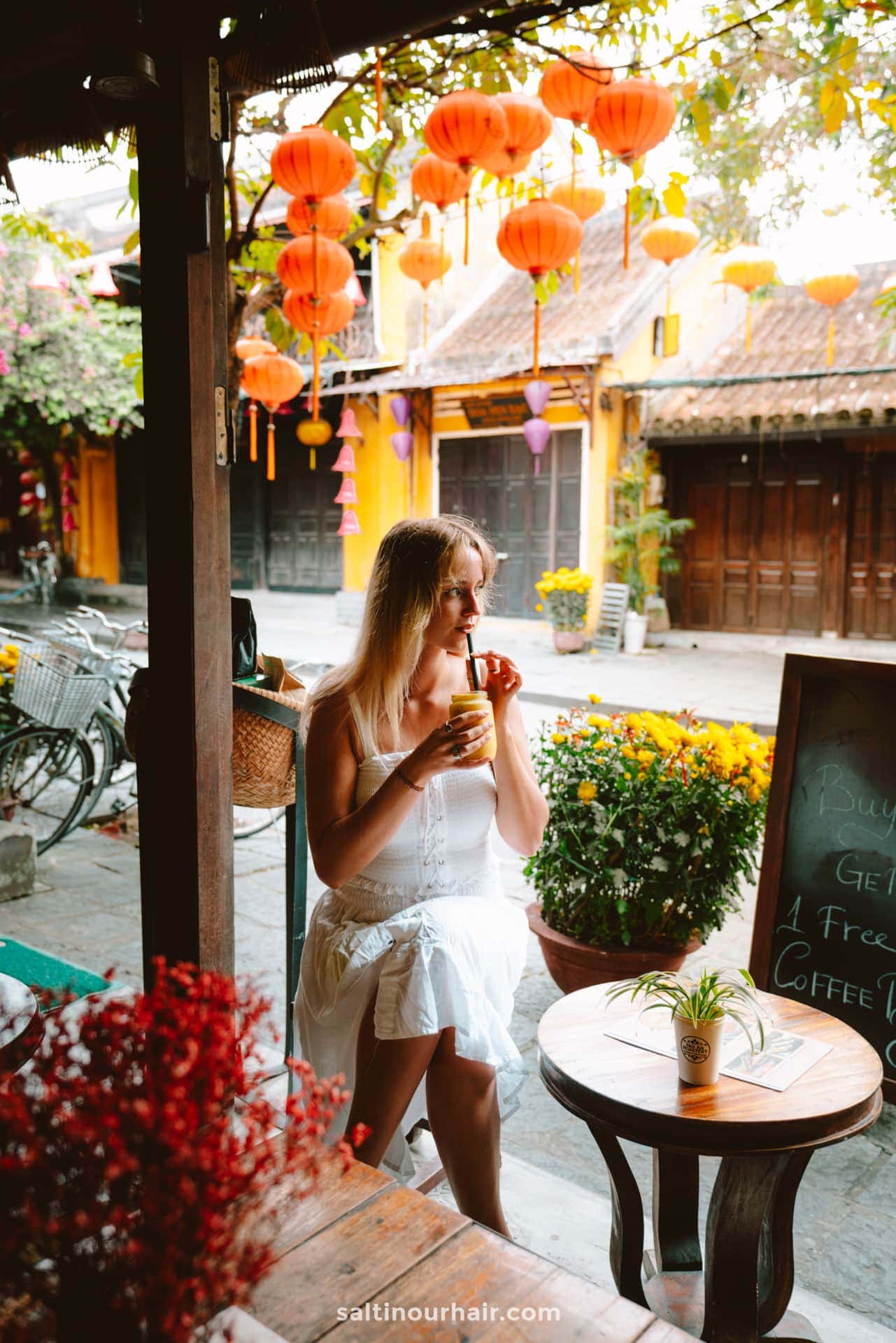
The Best Time to Visit Vietnam
The climate of Vietnam is different depending on the region. In the north, the weather is very seasonal, with hot, humid, and rainy summers and cold, dry winters. In the south, it’s hot throughout the year, with the drier months between November and April and the rainy period between May and October.
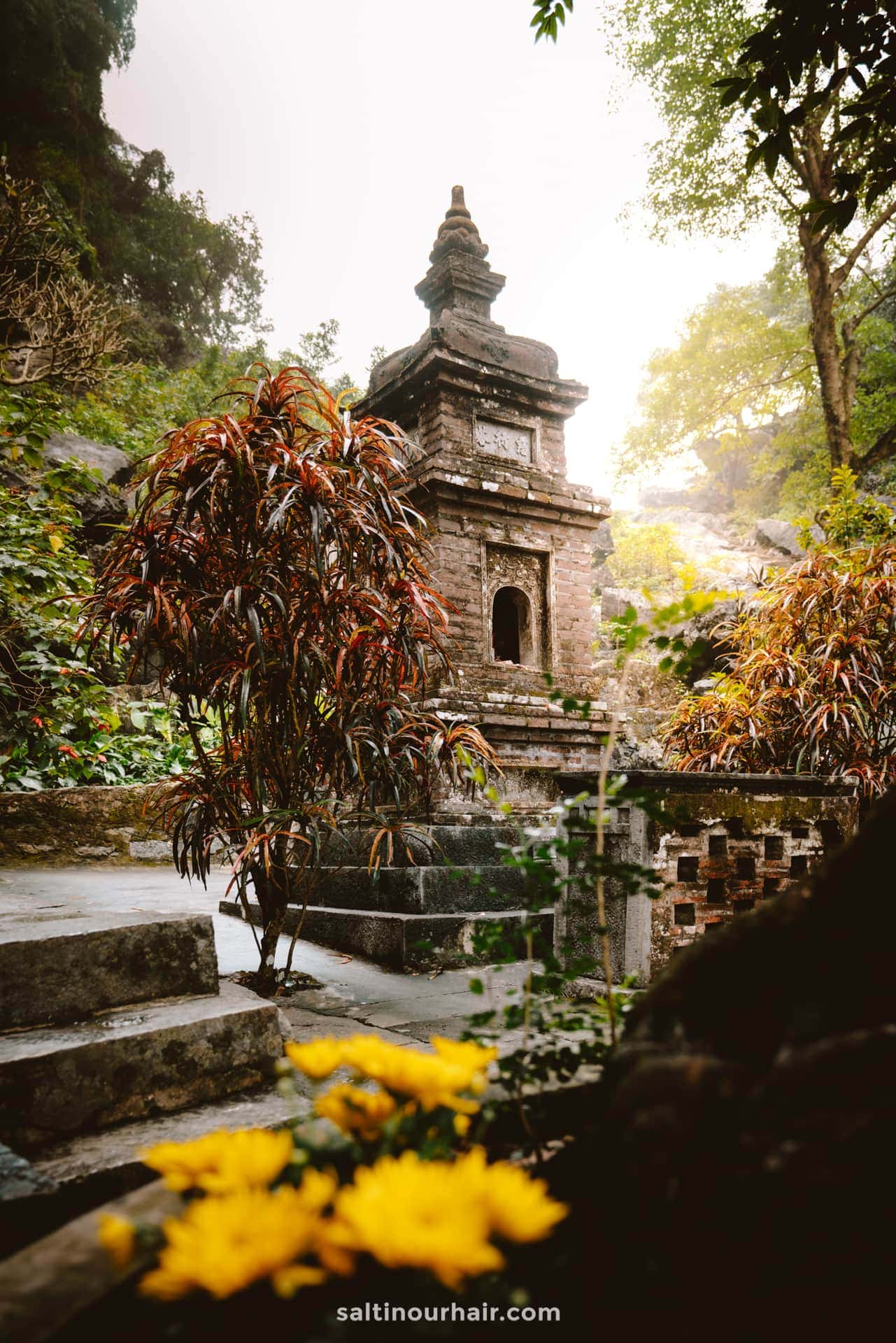
To see the scenery in Ha Long Bay at its most spectacular, it’s best to visit on a warm and sunny day. March to May and September to November are both good times to visit. The same goes for trekking through the Sapa Valley , though it does rain a bit more. If you want to experience green rice fields, visit between May and September.
Tip: Avoid visiting Vietnam during public holidays such as TET since the prices will be much higher. It’s also good to note that most shops will be closed and transport services greatly reduced.
By purchasing through our links, you support us at no additional cost. Thank you for your support. ♥️
- Find Hotels via Booking.com
- Find a Rental Car via Sunny Cars
- Find Flights to Vietnam via Skyscanner
- Get a Travel Insurance via Heymondo
- Book Tours & Attractions via GetYourGuide
- Book a Bus/Train/Transfer via 12Go
10 Best Things to Do on Phu Quoc Island, Vietnam
Discover vietnam by motorbike with easy riders, ha long bay: how to visit & things to do.
Looking for more travel information? Plan a chat with us for personalised travel advice or get an answer from the Salt in our Hair Travel Community on Facebook.
Your email address will not be published. Required fields are marked *
Notify me when new comments are added.

The 15 Best Places to Visit in Vietnam
- Facebook 54
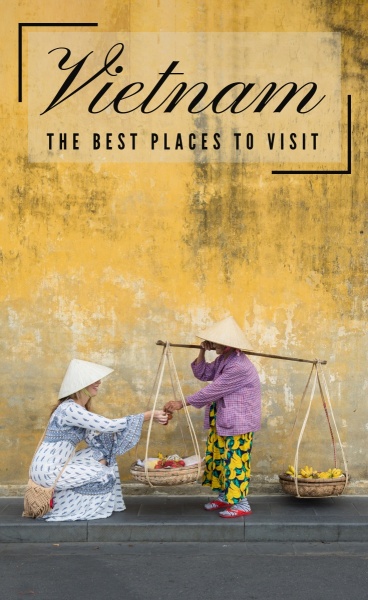
Vietnam is a stunningly beautiful and diverse country with an amazing landscape, lovely people, and delectable cuisine. It’s truly one of the most amazing countries in the world. If it’s not yet on your bucket list, it should be. But with so much to explore, deciding where to go in Vietnam can be overwhelming, especially if it’s your first time visiting.
Vietnam offers something for every taste – from trekking in the rugged rice terraces of northern Vietnam to lounging on stunning white sand beaches in the south. Whether you choose to explore Vietnam’s history, delve deeper into its expansive food scene, or just get lost in the winding alleys and never-ending motorbike traffic, you’re sure to find plenty to do in Vietnam.
Having lived in Ho Chi Minh City for two years and traveled the country extensively, we have compiled a list of the best places to visit in Vietnam.
Starting in the north and working your way south, you can explore all of these amazing Vietnamese destinations. Be prepared to fall in love with Vietnam just like we have!
Don’t forget to check out our web story: The 15 Best Places to Visit in Vietnam !
Disclaimer: This post may contain affiliate links. If you make a purchase or booking through one of our links we may earn a small commission (don’t worry, it’s at no extra cost to you).
How Long to Spend in Vietnam
Vietnam is a surprisingly large country with a lot of amazing places to visit and fun things to do. We recommend spending at least a month in Vietnam, which gives you time to explore a bit of northern Vietnam (Hanoi, Sapa, Ninh Binh, and Halong Bay), central Vietnam (Hue, Danang, and Hoi An), and southern Vietnam (Saigon, Dalat, Mui Ne, the Mekong Delta, and Phu Quoc).
Of course, we realize that many people don’t have the flexibility to spend an entire month traveling, which is why we put together an awesome 2-week Vietnam itinerary for all of our friends and family that have visited while we have been living here. It focuses on north and central Vietnam, which is what most visitors to Vietnam seem to prefer for their first trip.
Visa Requirements for Vietnam
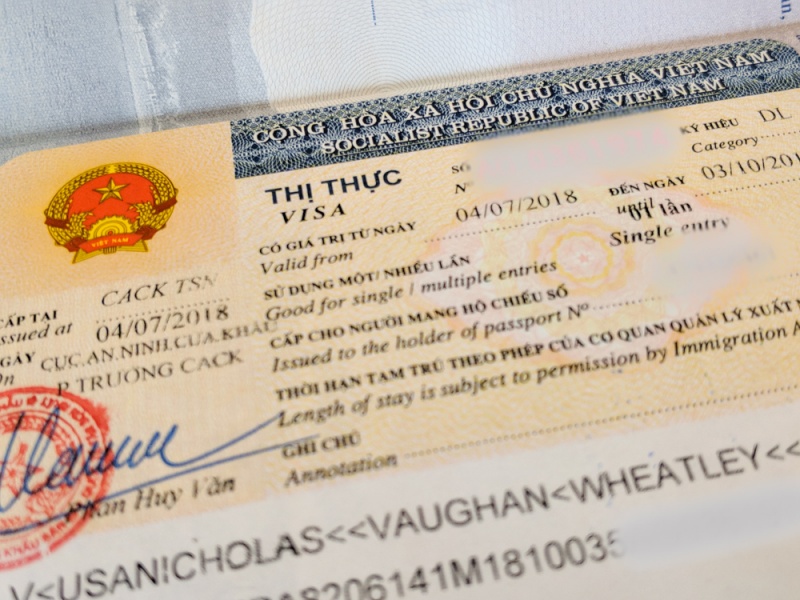
Unlike neighboring Thailand and Cambodia , most visitors can’t simply arrive in Vietnam and get stamped into the country. You’ve got a bit more work ahead of you. Even US Citizens will need a visa for Vietnam .
The two most common visa options for tourists are the eVisa and the Visa on Arrival, both of which require approval before your arrival in Vietnam.
If you’re planning to visit Vietnam for 30 days or less and do not require a multiple-entry visa, then we recommend the eVisa. If your trip is longer than 30 days or if you need to exit and re-enter Vietnam for any reason, then your only option is the Visa on Arrival.
Steps for Obtaining a 30-Day Single-Entry eVisa
- Visit this website: https://evisa.xuatnhapcanh.gov.vn/trang-chu-ttdt . This is the only official government website. All others only look official but are run by tourist agencies.
- Upload your passport data page image and a passport photo (straight looking without glasses).
- Pay the $25 USD fee by credit card.
- You will be emailed a registration code which you can use to check the status of your eVisa .
- Wait 3 working days for processing.
- Once approved, print your e-visa, and remember to pack it in your carry-on luggage!
Steps to Obtaining a multi-entry 30-day or 90-day Visa on Arrival
- Find an online service like Vietnam Visa Pro or one of the countless other options.
- Complete the visa application.
- Pay the fee.
- Wait 2 working days (usually less) for the letter of approval.
- Print the approval letter.
- Get passport photos taken if you don’t have them already. If you forget this step, you can get them taken at the airport for an inflated charge of ~$5 per photo (but it’s best not to rely on this option).
- Pack your approval letter, passport photos, and cash. Make sure they are all in your carry-on/hand luggage!
- At the airport, you’ll pay a stamping fee – either $25 or $50, depending on the length of visa you’re applying for (see below). Be sure to bring US Dollars in reasonably good condition – bills with no rips or writing.
You can find more information about the Vietnam visa process in our must-read post on Vietnam Travel Tips .
Getting Around Vietnam
Vietnam is a large and rather long country which can make getting from the northern end to the southern end of the country quite daunting. We often find that traveling between major cities such as Saigon, Danang, and Hanoi is best done by airplane.
VietJet is a very affordable budget carrier with hundreds of low-cost flights throughout Vietnam. However, our experience has been that the flights are often delayed – sometimes for several hours. You’ll also need to pay for any checked luggage on VietJet, and if you’re checking more than one bag it can get quite expensive.
Vietnam Airlines is a bit more expensive, but you’ll have two checked bags included in the price of your ticket, and you’re much more likely to arrive at your next destination on time.
We always use Skyscanner.com to check flight prices when we travel – it’s our favorite comparison search engine.
Check Flight Prices on Skyscanner
When traveling between smaller towns and cities in Vietnam, you’ll need to travel by bus or minivan. There are plenty of luxury bus companies that will get you where you are going on time and in comfort. Unfortunately, there are also a number of less reputable bus companies that will claim to provide comparable service but then fail to deliver.
The biggest challenge when traveling in Vietnam is finding a travel agent who you can trust. We prefer to book our bus, train, and ferry tickets online through Bookaway Vietnam . They sell tickets for over 200 routes in Vietnam and have a website that makes it really easy to compare all the transportation options to your next destination in Vietnam (and other Southeast Asian countries).
Bookaway also offers 24/7 support via phone or chat, and you can even cancel your booking for free up to 48 hours before departure!
Weather in Vietnam
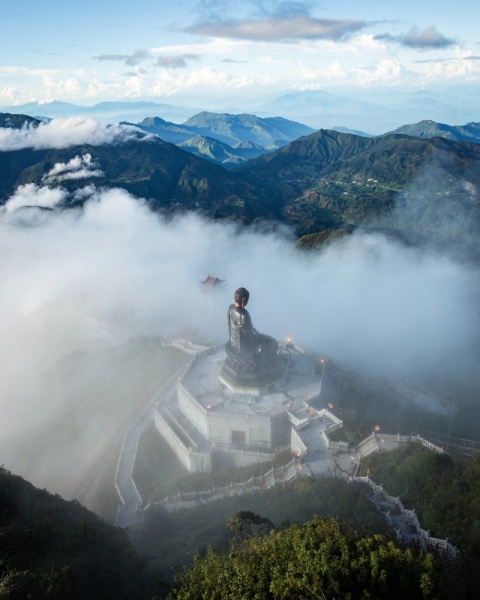
Vietnam has quite a diverse climate, depending on which region you choose to visit. But overall, the country has a mild tropical or subtropical climate. Hot, humid, and occasionally rainy, be sure to bring an umbrella, especially if you visit from July to November.
Northern Vietnam has four seasons, and during the winter months (December – February), it can get down to 40° F or even colder in the mountains. And the summer months (June – August) are quite hot, in the 90° F range. The autumn time sees a bit of rain which can make a trip to Sapa quite a muddy experience.
Central Vietnam has warm temperatures year-round, and in the summer months (June – August), it can be almost unbearably hot. The weather from November to April is a bit cooler and drier. And southern Vietnam has a wet season (May – October) and a dry season (November – April).
Money in Vietnam
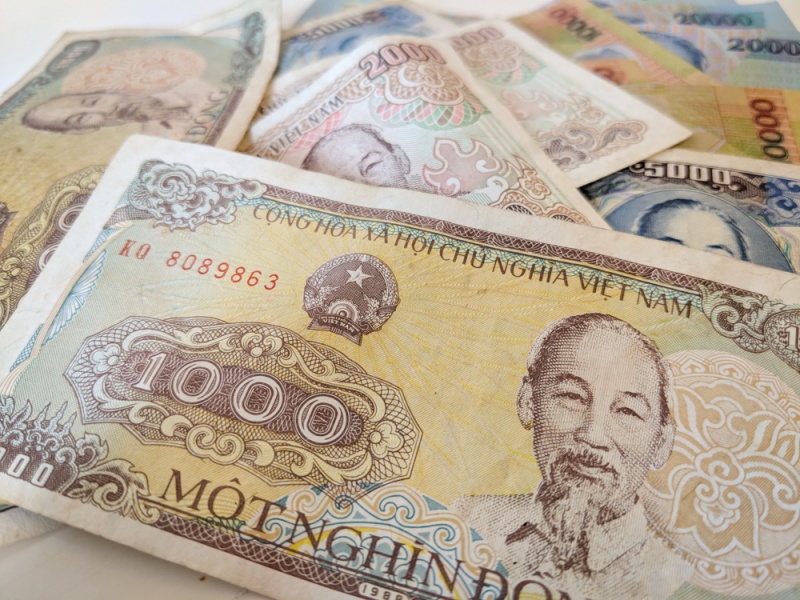
The currency in Vietnam is the Dong (VND). At the time of writing (August of 2018), the conversation rate was about 23,305 VND to $1 USD. So if we say that something costs 50,000 VND, that’s just about $2 USD.
Vietnam is a cash-driven country, and it’s rare to find restaurants, bars, or shops that take Visas. Most ATMs will only let you take out a maximum of 3,000,000 VND (~$130 USD), and many will only give you 2,000,000 VND (~$85 USD) at a time. You’ll be charged a 3% transaction fee each time you use one.
Be sure to check with your bank prior to departing to ensure that they refund international ATM charges. And that they don’t charge their own international fees.
We love the Charles Schwab debit card that offers zero international fees and refunds all of your ATM fees. And the Chase Sapphire Preferred credit card is best for earning points.
We use the Chase card for booking hotels and tours and our Charles Schwab card for getting money out of the ATM.
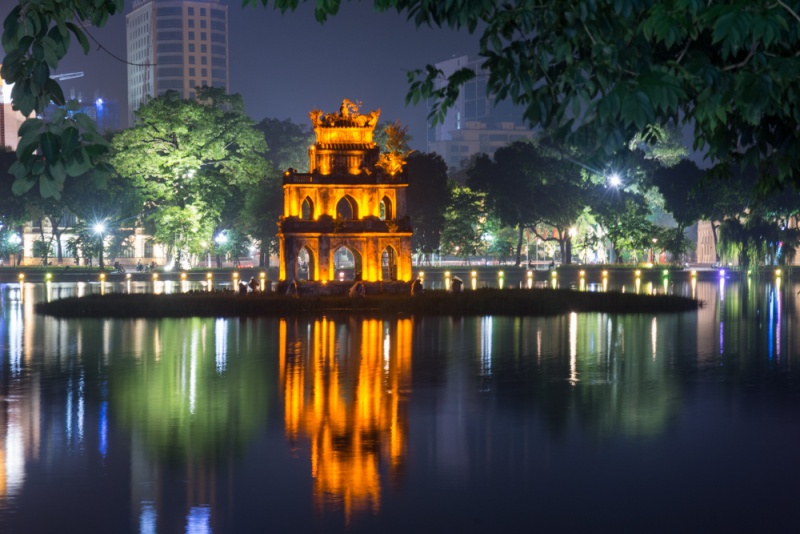
Hanoi is the capital of Vietnam and is the second-largest city in terms of population (Ho Chi Minh City is number one). It is the jumping-off point to visit the beautiful surrounding areas of Sapa, Halong Bay, and Ninh Binh, but it’s worth spending a few days in this bustling city as well.
One of the highlights of Hanoi is its cuisine . You can eat what is possibly the best bun cha in all of Vietnam at the same restaurant where Anthony Bourdain and Barack Obama dined together. And you can try another local delicacy – snake !
Hanoi is a big city but it’s also full of charm. Hoàn Kiếm Lake sits in the center of the Old Quarter, and it’s an idyllic place for an afternoon stroll. There are parks and local markets to explore, as well as plenty of tourist hot spots.
During your time in Hanoi, you absolutely must see the “Hanoi Hilton,” where John McCain was held prisoner after his plane was shot down during the war. And the Temple of Literature is both beautiful and peaceful – it’s ideal to visit in the early morning. Read all about our other favorite things to do in Hanoi here!
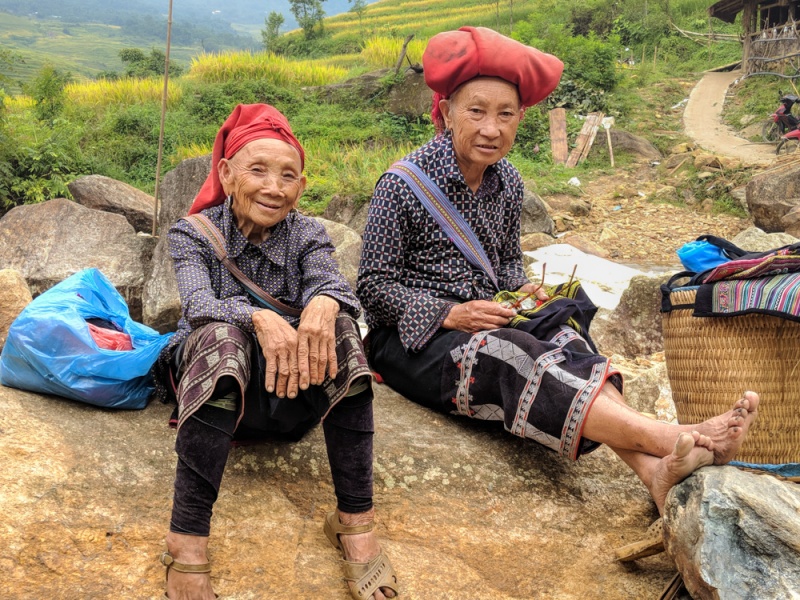
The Sapa region (sometimes spelled Sa Pa) is home to several minority groups who earn a living through farming and tourism. The town is perched high on a hill, and the views of the Muong Hoa Valley below are quite incredible. Lush green rice terraces stretch across the landscape as far as the eye can see.
Most people travel to Sapa to go trekking through the remote villages. But there is so much more to see and do here than most people realize. You can take a cable car ride up to the top of Fansipan Mountain. At over 10,000 feet, it is the highest mountain in the Indochinese Peninsula. You can also do a self-guided (downhill) trek to the Cat Cat tourist village. Then, catch a motorbike taxi back up.
The shopping in Sapa is amazing and you should definitely purchase some of the colorful handmade textiles. And if you really want to treat yourself, consider booking a few nights at the Topas Ecolodge , where you can gaze out at the rice paddies while lounging in the pristine infinity pool.
Sapa is one of our favorite places to visit in Vietnam and should definitely rank high on your list of things to see during your trip. Read all about what to do in Sapa and how to choose a trekking guide !
3. Halong Bay
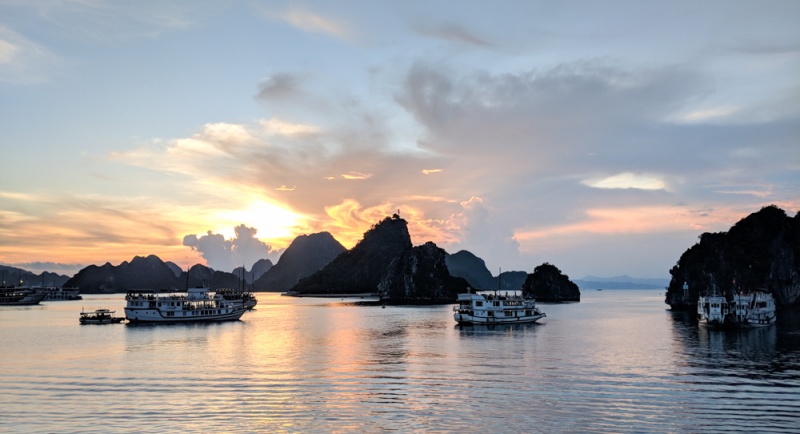
Halong Bay is one of the most picturesque (and touristy) areas in Vietnam. In fact, many travelers have Halong Bay at the very top of their list of places to visit in Vietnam. Cruising on a liveaboard boat through the limestone cliffs of Halong Bay is definitely an experience that you won’t soon forget.
Choosing the best Halong Bay Cruise can be difficult. While there are dozens of boats to choose from, most of the cruises offer a similar itinerary. The difference is in the quality of meals and onboard accommodation. In Halong Bay, you’ll find everything from floating hostels that cater to those on a backpacker budget to luxurious 5-star cruises.
Since Halong Bay has such a unique landscape and there are few places like it in the world, we recommend splurging on a luxury cruise experience where you’ll be treated like royalty. It’s a once-in-a-lifetime opportunity!
4. Lan Ha Bay
If you want to have the Halong Bay experience but without the crowds, consider booking a cruise around Lan Ha Bay instead. The scenery of Lan Ha Bay is quite similar to Halong Bay, with stunning limestone cliffs rising out of the water, but it’s not as popular with tourists (yet).
There are many luxury cruise boats in Lan Ha Bay to choose from, and you’ll love that the daily excursions are more personalized than the activities around Halong Bay. Lan Ha Bay is also a bit further from the mainland, so you’ll spend a bit more time cruising on the boat. Because of this, we recommend a 2-day/3-night cruise.
If you’re looking for a relaxing cruise where you can sip wine at sunset on your own balcony while gazing out at the beautiful landscape, a trip to Lan Ha Bay is for you!
5. Ninh Binh
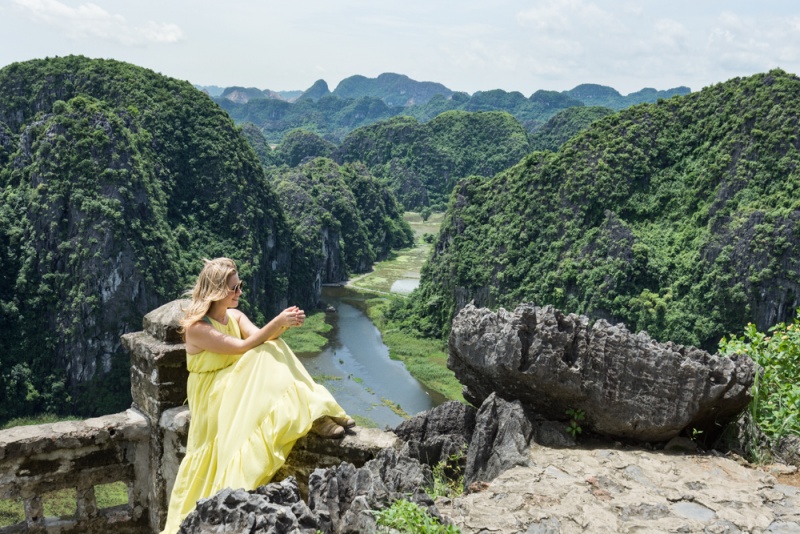
This beautiful region, just two hours south of Hanoi, is full of lush green rice paddies in the shadow of massive towering limestone cliffs. Life moves a bit slower here. The people are friendlier. Traffic jams generally involve herds of goats rather than cars. You’ll feel all around happier, relaxed, and more at peace.
You’ll want to rent a motorbike in Ninh Binh since it’s the easiest way to get around. You can hike up to the Mua Caves, where the view of the landscape below is absolutely breathtaking. And you can enjoy the scenery from the water on a slow boat ride. The countryside surrounding Ninh Binh is also full of countless picturesque temples and pagodas.
Many people condense their time in Ninh Binh to only a day trip. But we’d recommend spending at least three nights here if you have the time to spare. The region of Ninh Binh tops the list of our favorite places to visit in Vietnam. You definitely shouldn’t miss it!
Read all about where to stay, where to eat, and what to do in the stunning region of Ninh Binh !
6. Phong Nha
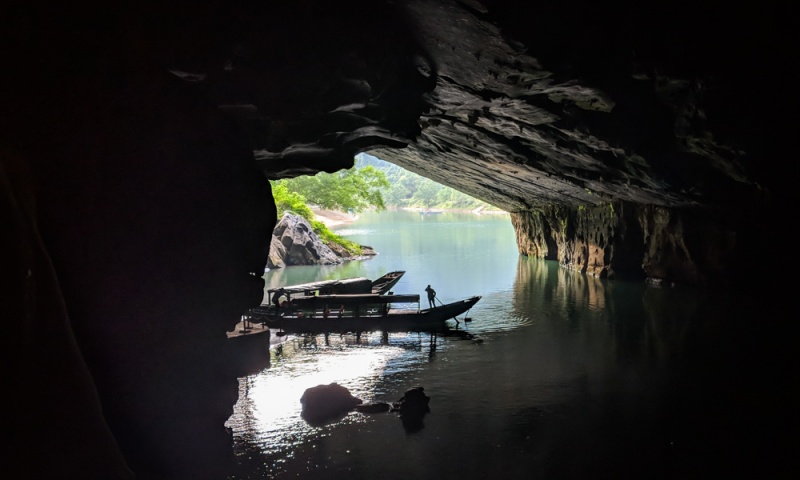
One of the most unique places to visit in Vietnam is the Phong Nha region. It is famous for its massive national park – Phong Nha-Ke Bang National Park. Designated as a UNESCO World Heritage Site in 2003, it is home to the oldest karst mountains in Asia. There are hundreds of massive, complex cave systems as well.
Phong Nha Cave, Paradise Cave, and Black Cave are the most popular and easily accessible caves in the area. You can visit all three on your own – no need to hire a tour guide.
Phong Nha is a bit off the typical tourist track, so it’s a little more difficult to get to and much less crowded than some of Vietnam’s other top destinations.
If you enjoy adventurous cave explorations, then you should definitely add Phong Nha to your Vietnam bucket list!
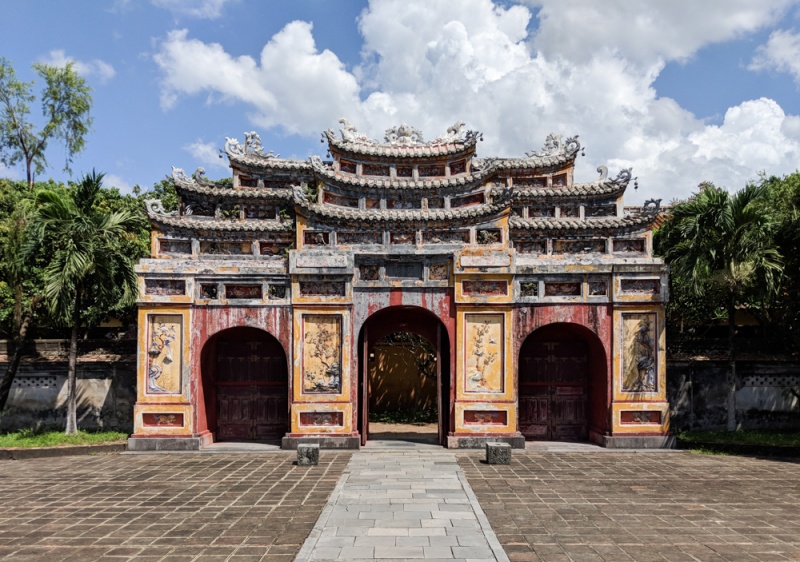
History buffs will love the Imperial City of Hue. It was the seat of Nguyễn Dynasty emperors from 1802 to 1945. There is also a beautiful walled complex to explore. Hue has so much history to learn about and gain a greater understanding of the history of Vietnam.
Hue was also right in the center of the clash of northern and southern Vietnam during the American War (or Vietnam War as you may know it), so many of the sites have had to be reconstructed. The longest and bloodiest battle took place here, but thankfully many of the historical sites remain intact.
If Hue is on your Vietnam travel itinerary, read all about what to do while visiting !
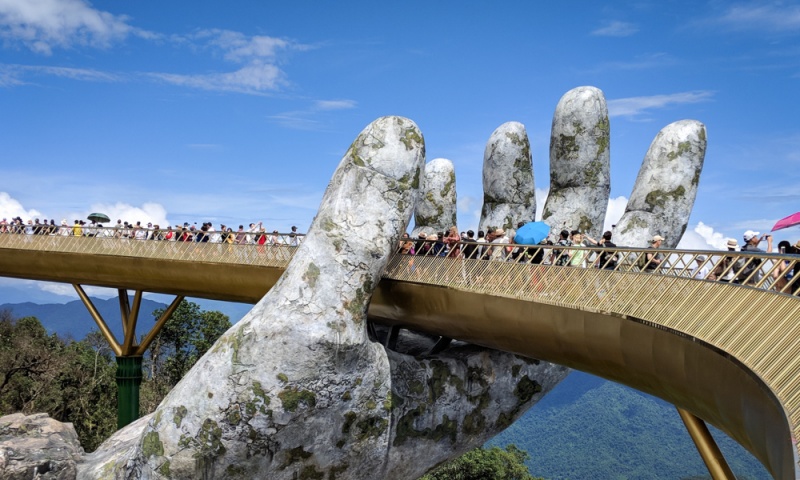
The city of Da Nang (also known as Danang) is full of lavish beachfront resorts and is the perfect place if you’re looking to get a little rest and relaxation. Da Nang is getting more and more visitors of late with the construction of the Golden Bridge – a giant bridge that appears to be held up by two hands .
It’s also the southern gateway to the spectacular drive over the Hai Van Pass . But there is so much more to see and do in this busy city, so plan on spending a few days here during your trip. You can hike through the Marble Mountains, see a dragon bridge breathe fire, sample the delectable cuisine, or just lounge on the beach.
Read all about what to do and where to stay during your trip to Da Nang !
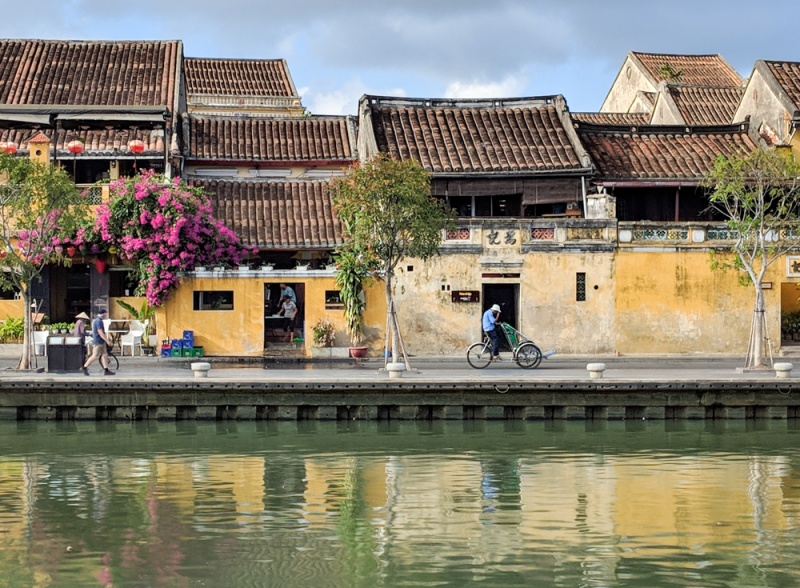
Hoi An is a darling little touristy town in central Vietnam that is a must-visit during your trip! The pedestrian-friendly downtown area is famous for the beautiful yellow French colonial-style buildings that line the streets.
Plus, it’s full of cute boutiques, quaint coffee shops, and delicious restaurants. In the evenings, the riverfront comes alive with vibrantly colored lanterns and a lively night market.
The most popular activities in Hoi An include taking a cooking class, biking through the countryside, going on a photography tour , getting a dress or suit tailored, taking a day trip to visit the nearby My Son ruins, and shopping! Hoi An also has amazing dishes that are delicious and difficult (even impossible) to find in other cities around Vietnam. You must try them all!
Hoi An is one of our favorite cities in Vietnam and is not to be missed during your trip. It’s our favorite place to take friends and family when they visit from out of town. Read all about what to do, where to eat, and where to stay in Hoi An !
10. An Bang Beach
When you get tired of the crowded, touristy Old Town, make the 10-minute drive to the neighboring An Bang Beach. Here you’ll find a peaceful sandy beach and quaint local restaurants and bars. Plus, there are several beach clubs where you can use the pool for the day for a nominal fee. It’s good if you’re looking for a change of scenery.
When we visit Hoi An, we always choose to stay in An Bang Beach. Then, we just make the 10-minute Grab ride into Hoi An every evening for dinner and night market shopping. We love that An Bang has far fewer tourists and some amazing beachfront resorts with pristine pools at reasonable prices.
Even if you decide to stay in Hoi An, you’ll want to take a day trip to An Bang. There, you can enjoy the beach during your trip! Check out our complete guide to An Bang Beach , which includes our favorite resorts, restaurants, and bars.
Mui Ne is a little beach town that is incredibly popular with windsurfers and kiteboarders. It has perfect windy conditions and a sandy beach break. Even if you aren’t into water sports, Mui Ne boasts a beautiful sandy beach and nearby sand dunes. Here, you can enjoy the sunrise, take a lovely hike through a stream, and explore ancient ruins.
Mui Ne is the perfect place for a relaxing beach getaway during your vacation in Vietnam!
12. Ho Chi Minh City (Saigon)
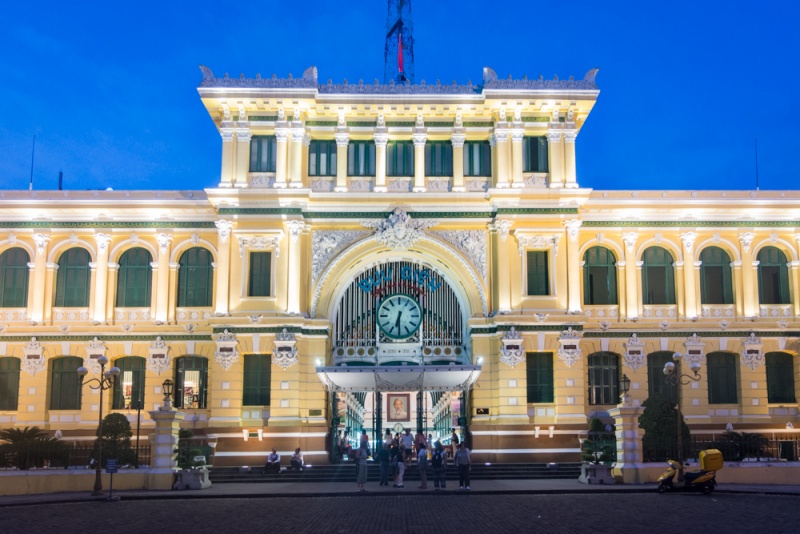
Saigon (officially “Ho Chi Minh City”) is a bustling metropolitan city in the south of Vietnam. It has an amazing food scene , it is a popular place for westerners to open up craft breweries, and there are diverse neighborhoods to explore.
Ho Chi Minh City, or HCMC as it’s often called, has a large international airport. It’s often a jumping-off point to explore other areas of the country. You can easily see the highlights of the city in just a few days, so there’s no need to spend a lot of time here.
There are several tourist attractions in HCMC, including the Reunification Palace and the War Remnants Museum. But we would argue that the best things to do in Saigon involve coffee, food, beer, and shopping ! We visited the top craft breweries and the best coffee shops in HCMC. We compiled our thoughts on the ambiance and options at each. Enjoy drinking your way through this big, busy city!
13. The Mekong Delta
Vietnam’s Mekong Delta is an area in southern Vietnam that covers over 15,000 square miles. It is where the many rivers provide ideal farming conditions. Many of the fruits and vegetables that are sold in markets around Vietnam come from the Mekong Delta.
Tourists love to visit the Delta to see the famous floating markets where the locals buy and sell fresh produce. You can also take a rowboat ride through the winding river canals. Most people visit the Mekong Delta on a day trip. But since it’s one of the best places to visit in Vietnam, it’s definitely worth spending a few days here!
The city of Dalat is located in southern Vietnam’s central highlands. It’s the perfect place to visit if you’re craving cooler temperatures and outdoor activities. If you’ve spent a bit of time in the concrete jungle that is Ho Chi Minh City, you’ll find Dalat to be a breath of fresh air (literally).
Dalat is home to Vietnamese wine (it’s terrible, take our word for it), Dalat donuts, avocado ice cream, and other yummy culinary concoctions. These are difficult to find anywhere else in the country. It’s also where you’ll find beautiful lakes, waterfalls, and gardens. Even though the weather in Dalat is typically colder than in other parts of southern Vietnam, you’ll want to spend most of your vacation enjoying the great outdoors.
Check out our list of the best things to see and do in Dalat to help plan your trip!
15. Phu Quoc
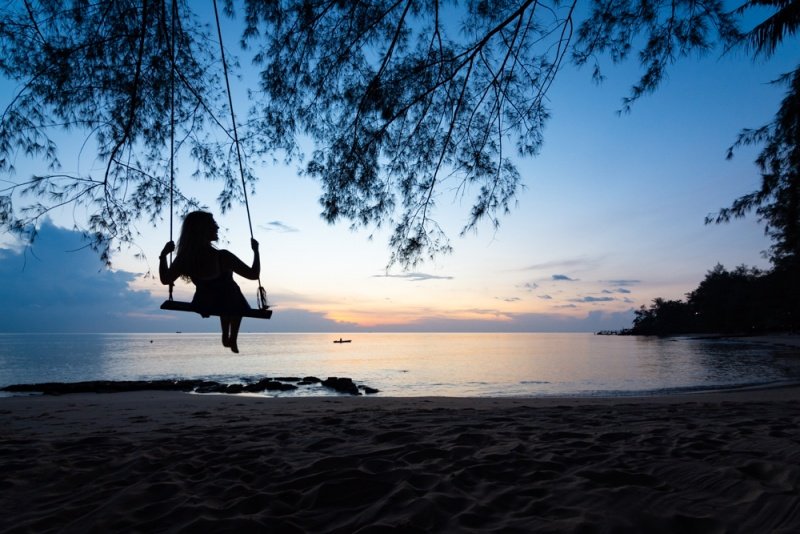
Phu Quoc is an island off the southern coast of Vietnam (well, technically, it’s off the coast of Cambodia). It is the place to go if you want to visit a tropical paradise during your vacation. Even though Vietnam has a huge amount of coastline, many of the beaches actually aren’t ideal for a relaxing getaway. But that’s not the case in Phu Quoc.
Here you’ll find white sandy beaches, ideal diving and snorkeling conditions, yummy seafood, and some fun activities to keep you busy. Rent a motorbike and cruise around the island, stopping along the way to explore the temples and enjoy an iced coffee on the beach.
And if you want to pamper yourself during your trip to Vietnam, Phu Quoc has some truly amazing hotels and resorts to splurge on! And since they have an airport on the island, it’s easy and cheap to book a plane ticket from HCMC.
That’s it – the best places to visit in Vietnam! Where is your favorite Vietnam destination? Let us know in the comments below.
Share this on pinterest.
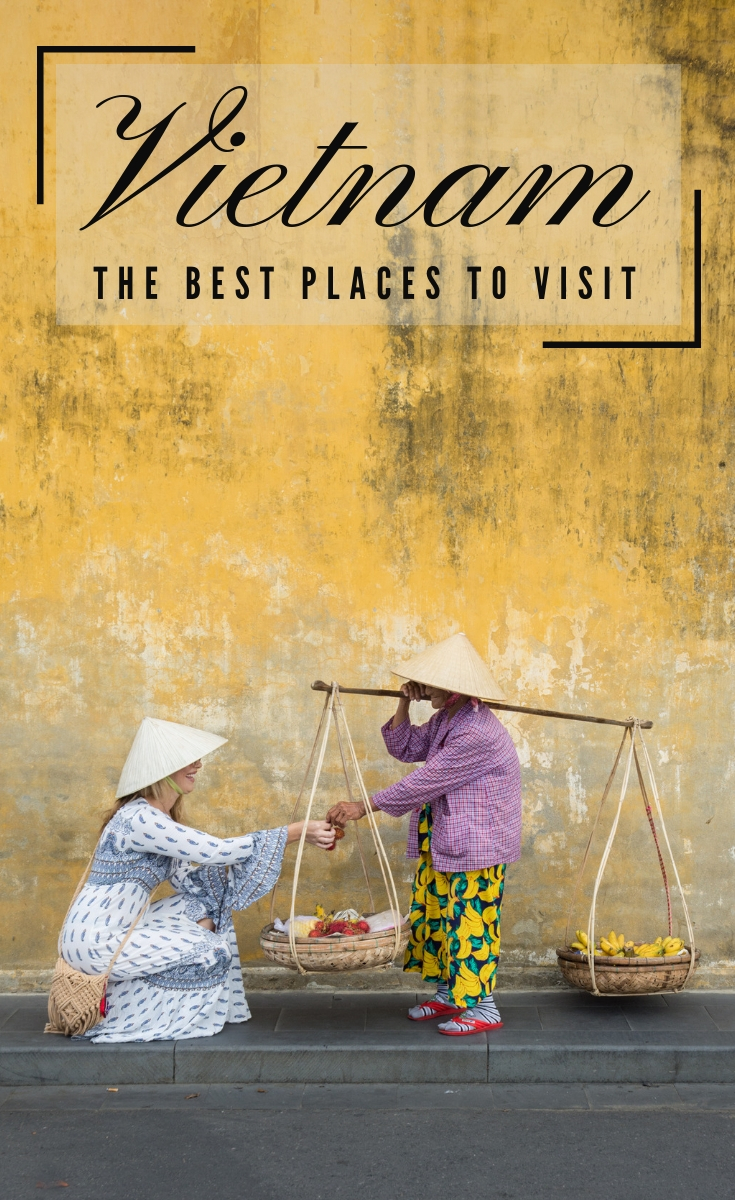
Val grew up in Portland, Oregon but moved to Oahu on a whim back in 2013. She sold her house and all of her belongings and bought a one-way ticket. Since then she’s taken two around-the-world trips and has visited 60-ish countries while living out of a duffel bag. Val started documenting the Wandering Wheatleys travels back in 2013 as a way to update friends and family about her whereabouts and to relay humorous daily interactions. The only readers were her mom and her mother-in-law but that didn’t stop her! These days you’ll find Val dreaming up future trips, creating new travel content, managing a team of amazing travel enthusiasts, and chasing around her two adorable but naughty kids.
Related Posts
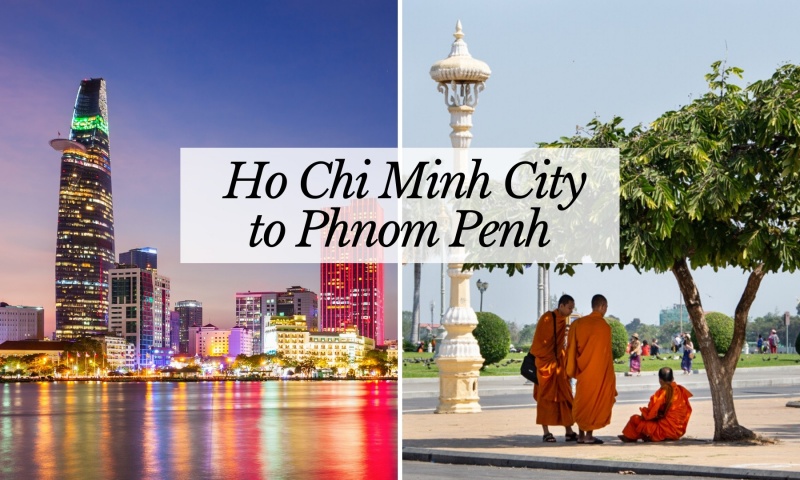
How to Get from Ho Chi Minh City to Phnom Penh in 2022
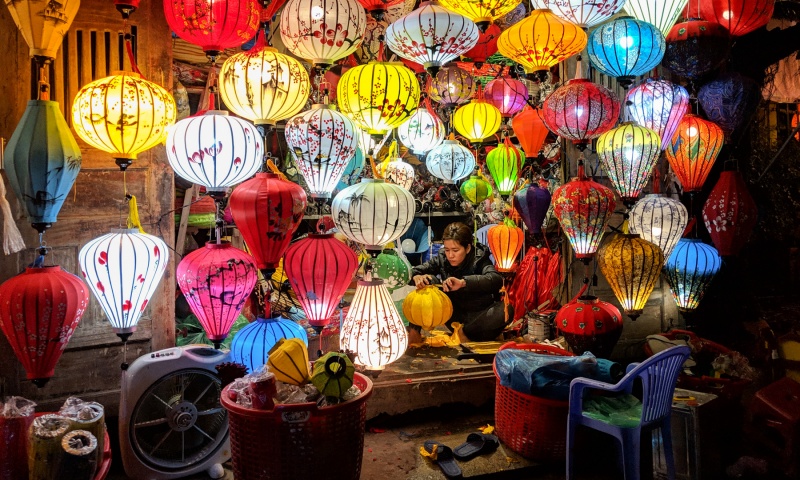
Vietnam Shopping Guide: What To Buy in Vietnam
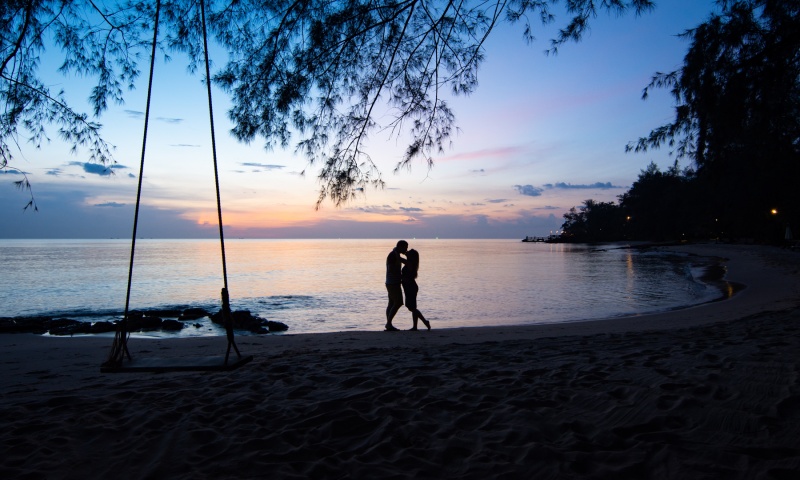
The 18 Best Things to Do in Phu Quoc, Vietnam
Leave a comment cancel reply.
Your email address will not be published. Required fields are marked *
- Be Inspired
- Destinations
- Things to do
- Eat & Drink

10 Best Places to Visit in Vietnam in 2022
Coming to the S-shaped country, you can admire the poetic and charming scenery wherever you go. The natural beauty and unique culture have made Vietnam become a tourist destination worldwide. Here are the top 10 places to visit in Vietnam nominated in 2022.
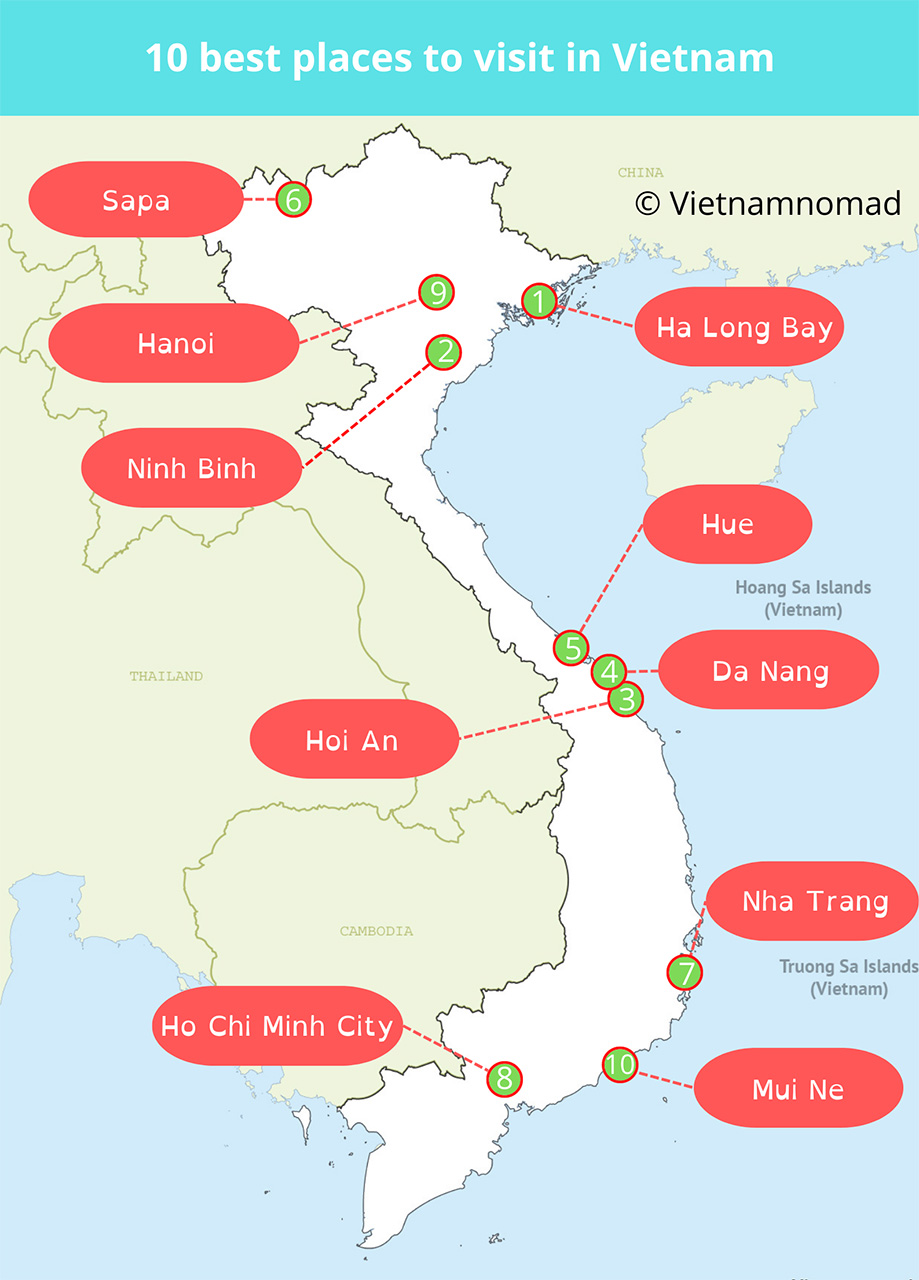
1. Ha Long Bay
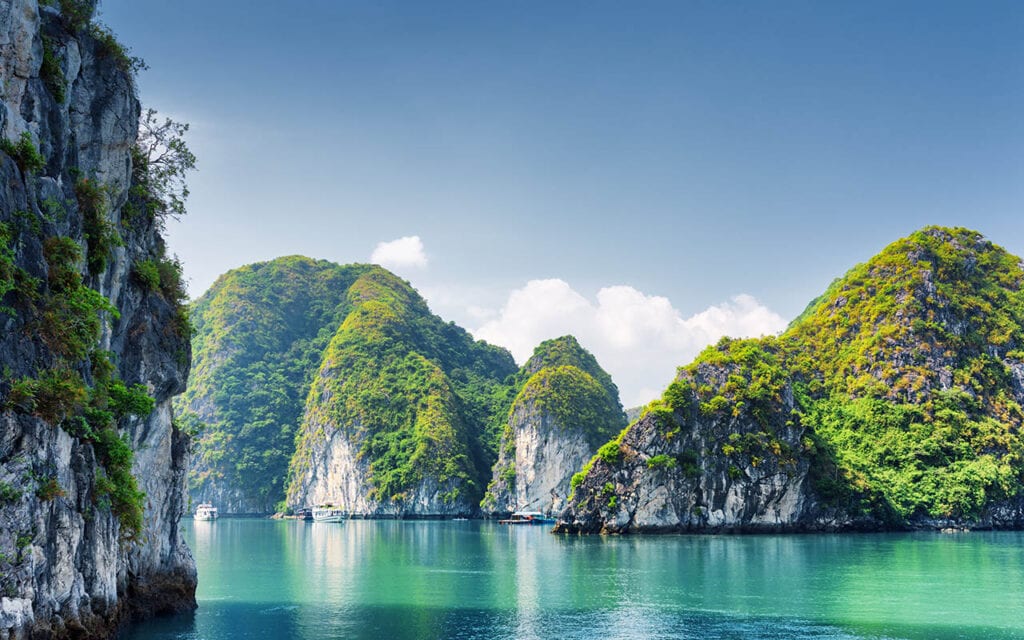
Off Northeast Vietnam , Ha Long Bay was designated as one of the World Heritage Sites in 1994. For many reasons, Ha Long Bay has to be on your list when you travel to Vietnam.
Having been known for thousands of limestone islands that emerged from the emerald water, the bay is surrounded by a spectacular seascape. You will want to sign up for a boat trip to cruise along the maze of channels and uniquely shaped islets. You can also go kayaking and caving to experience the enchanting beauty of this wonderland.
Although it can get very touristy during the high season, with what it has to offer, Ha Long Bay is totally worth your visit.
The best time to visit Ha Long Bay is in the summer (May – October) when its weather is warm, less rain, convenient for outdoor activities and exploring.
2. Ninh Binh

Used to be one of the hidden gems in the north of Vietnam, Ninh Binh has become more and more popular among both local and foreign visitors after being chosen as the blockbuster Kong’s filming location. But Ninh Binh is not all about that.
This is home of one of the biggest temples in South East Asia (Bai Dinh Pagoda), which is solemnly situated amid the lush paddy fields and breathtaking rock formations. The best way to explore the renowned landscape complex is by rowboat to bit-by-bit take in the majestic and poetic scenery. Ninh Binh will truly give you a sense of the spiritual calmness coming from the splashing water under your boat and distant temple bells echoing.
You can visit Ninh Binh at any time of the year, each season in Ninh Binh has a unique beauty that is nowhere to be found.
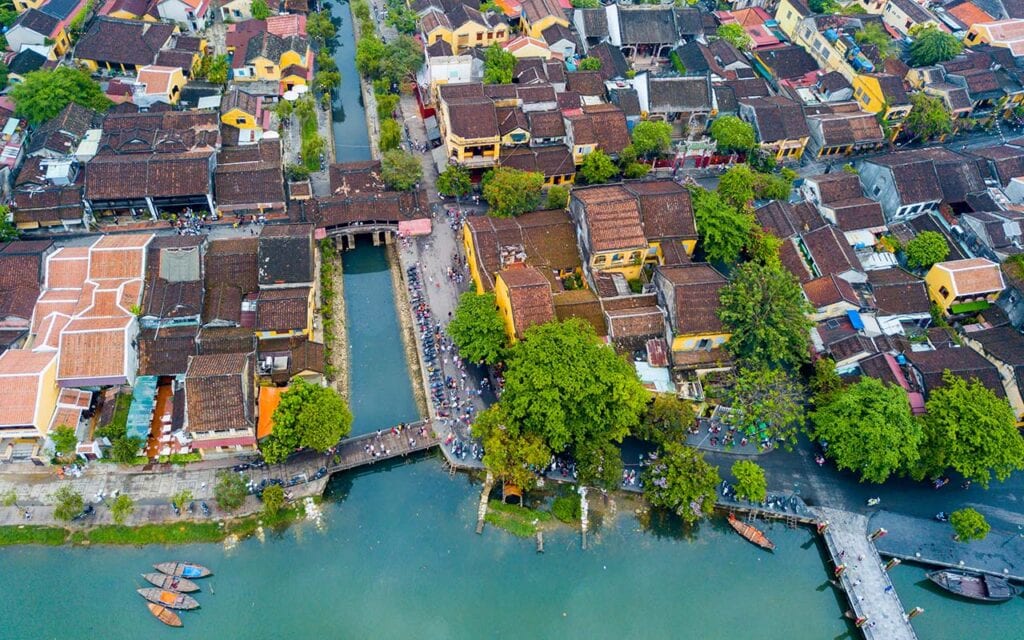
Noted as another World Heritage Site of the long-stretching nation, the Ancient Town of Hoi An carries not only the diversity of settings but also the history of hundreds of years of cultural interference between the three countries of China, Japan, and Vietnam. You will need to be ready to fall in love with the mix of vibrant lifestyle and ancient architecture of this little town.
Hoi An is also famous for a wide range of delightful cafes and restaurants of those overlooking peaceful views. Even for a local, the town’s delicacies are definitely one-of-a-kind, and it will give you a hard time picking among all the good food.
As the most beautiful city in Vietnam, Hoi An is crowded year-round, the tourist season starts from November to the end of February. If you want to enjoy a “real” Hoi An, April to June is the right time for you, when there are the least tourists.
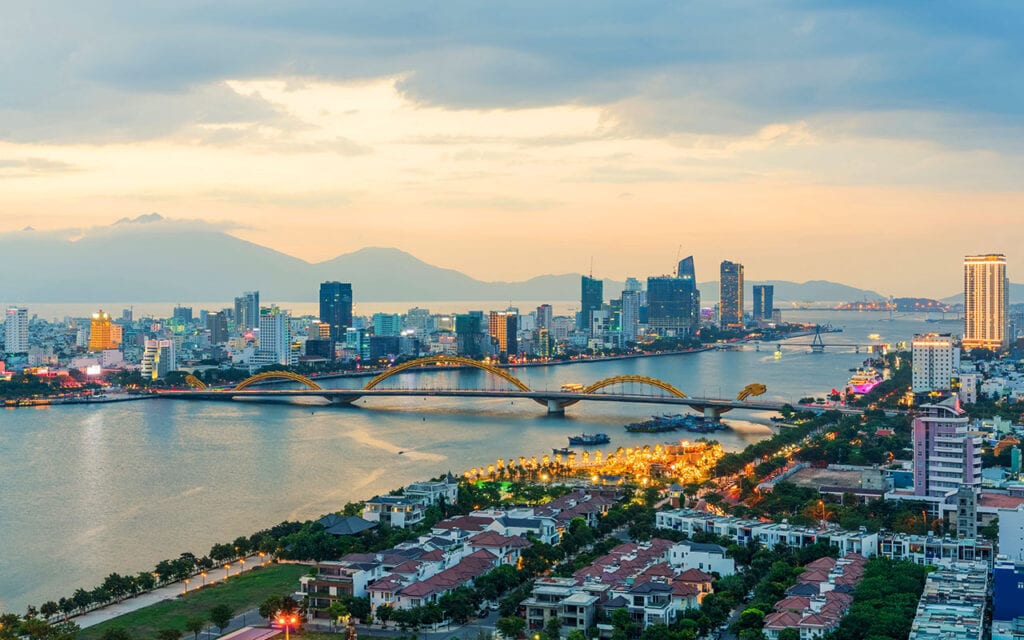
Further north of Hoi An is a beautiful coastal city – Da Nang . Da Nang is a tropical sea paradise in Vietnam; it has some of the most beautiful and secluded beaches such as Non Nuoc Beach, which is almost never too busy. It would make you extend your staying here with its spectacular mountain temples, well-decorated bars and restaurants, and so much more. It is not random that many expats choose to relocate here as you can easily find a hint of the modern lifestyle of a big city blended into the tranquility of the natural surroundings.
If you are an adventurous soul, get on a motorbike and go for a road trip around Son Tra Peninsula, then set out to conquer the Hai Van Pass or simply walk the majestic Golden Bridge .
The ideal time to visit Da Nang is the dry season from January to July, and the most perfect is between February and May. During this period, the weather is pleasant and less rain.
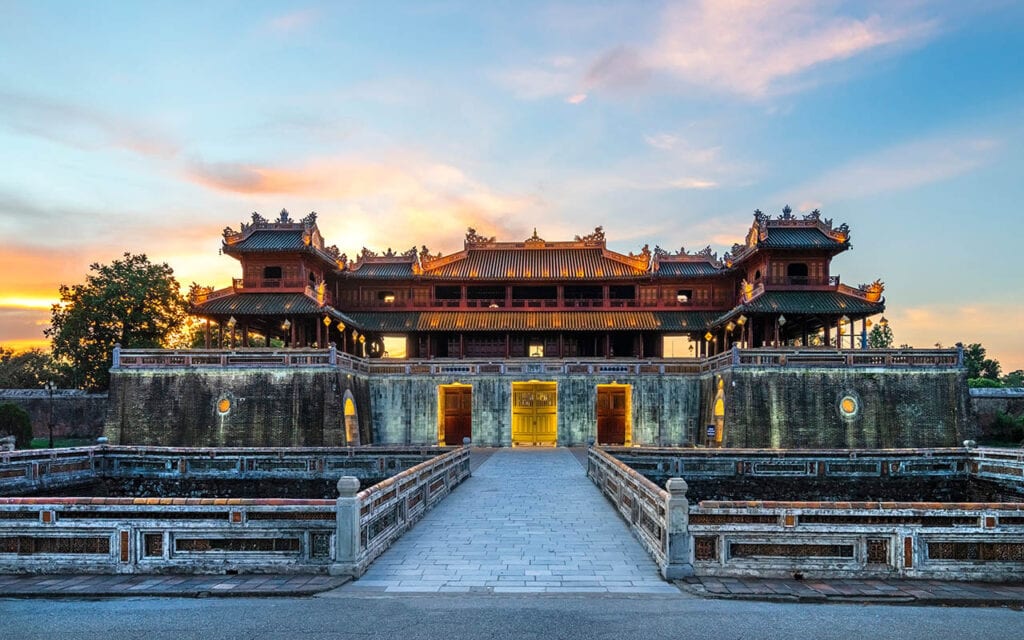
Hue is the former imperial capital of Vietnam under the prosperous reign of the Nguyen Dynasty, which explains a rich collection of tombs, palaces, and royal buildings. That is also the highlight of this romantic city.
Strolling along the gorgeous Perfume River, crossing Trang Tien Bridge just to later sit down and take a sip of cold Huda beer.
Hue is definitely not a tourism hub but if you are keen on an atmosphere with a breadth of history, then Hue would be your perfect choice.
Located between the South and the North, Hue weather is characteristic of both regions. Hue has four seasons, but the most obvious are sunny and rainy seasons. The dry season lasts from March to August, it is quite bright and hot. From August to November is the rainy season. Especially from October onwards, there are prolonged rains and storms.
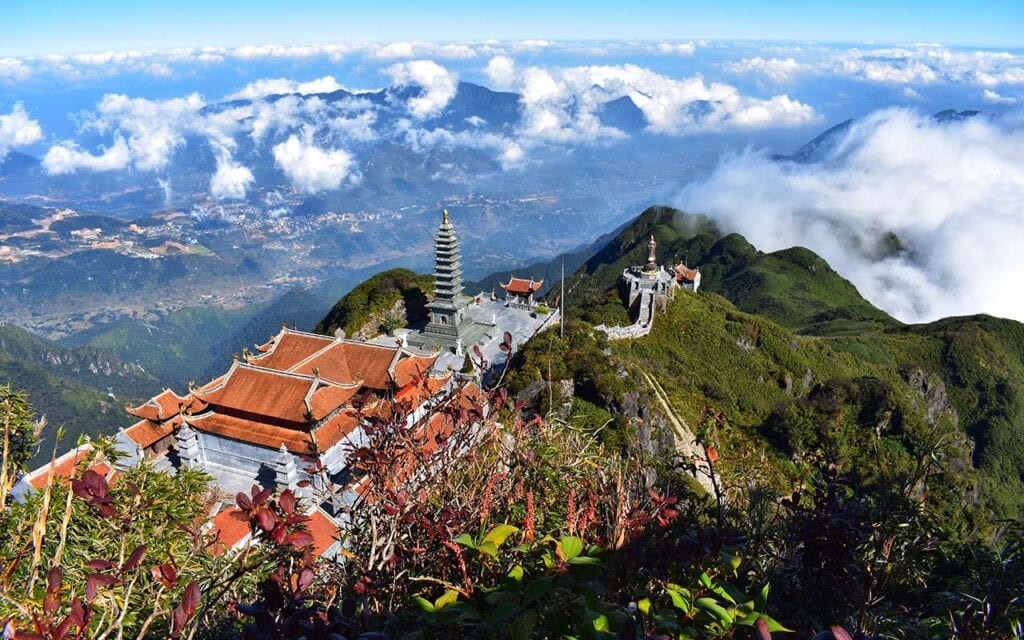
In 6th place, Sapa meets all the elements to become one of the best places to visit in Vietnam: the small villages like the picture painted on the majestic hills, upland markets, and the identity of ethnic minority communities.
Although the main town itself has been said to be too touristic and going through lots of construction, it gives you a reason to go out of town and immerse yourself in one of the most beautiful highland cities in the country. Meeting up with the innocent local minority people and being amazed by terraced fields – breathtaking scenery will be your unforgettable memory.
Sapa is a mountainous region with a cool climate all year round. The weather in Sapa has four seasons. The average temperature of Sapa is 15 °C. Summer in Sapa is not too hot; winter is often cloudy and cold, and sometimes it snows.
The best time to visit Sapa is from September to early November, at this time, rice begins to ripen, and the scenery of Sapa turns to the brilliant golden colour of the rice, a picturesque view.
7. Nha Trang

As one of the most beautiful coastal cities in Vietnam , Nha Trang has been recognized as a tropical sea paradise. Not only do long blue beaches and dozens of large and small islands remain untouched, but Nha Trang is also an ideal destination for those who love culture – history as it is also the land of the flourishing Champa Kingdom in the past.
Visit Nha Trang, immerse yourself in the refreshing water, dive down to the coral reefs, discover islands by canoe, and enjoy fresh seafood.
The most significant advantage of this city is the long sunny season during the first eight months, the temperature difference is not considerable. The rainy season of Nha Trang lasts from September to December and reaches its peak in October and November.
Nha Trang is definitely an indispensable name when it comes to the best places to visit in Vietnam.
8. Ho Chi Minh City

When talking about the best places to visit in Vietnam, it’s impossible to ignore the biggest city in the country: Ho Chi Minh City .
Ho Chi Minh City (Saigon) is the most developed and somehow chaotic city across the country once known as the Pearl of the Far East. Although Saigon is not rich in natural resources, it has a wide range of street food and nightlife activities to choose from.
And if your heart is up for knowledge, there is a list of museums and galleries scattered around the city so you can check them out and explore the city at the same time.
Chinatown is also the soul of the dynamic city filled with century-aged temples and shops – where you can give yourself a break after play-hard days. It is no exaggeration to say that Saigon has it all.
Ho Chi Minh City weather does not have four seasons like Hanoi but only two: rainy and dry. The rainy season is from May to November. In general, you can visit Ho Chi Minh City at any time of the year, the rainy season is also the most beautiful season of this city.
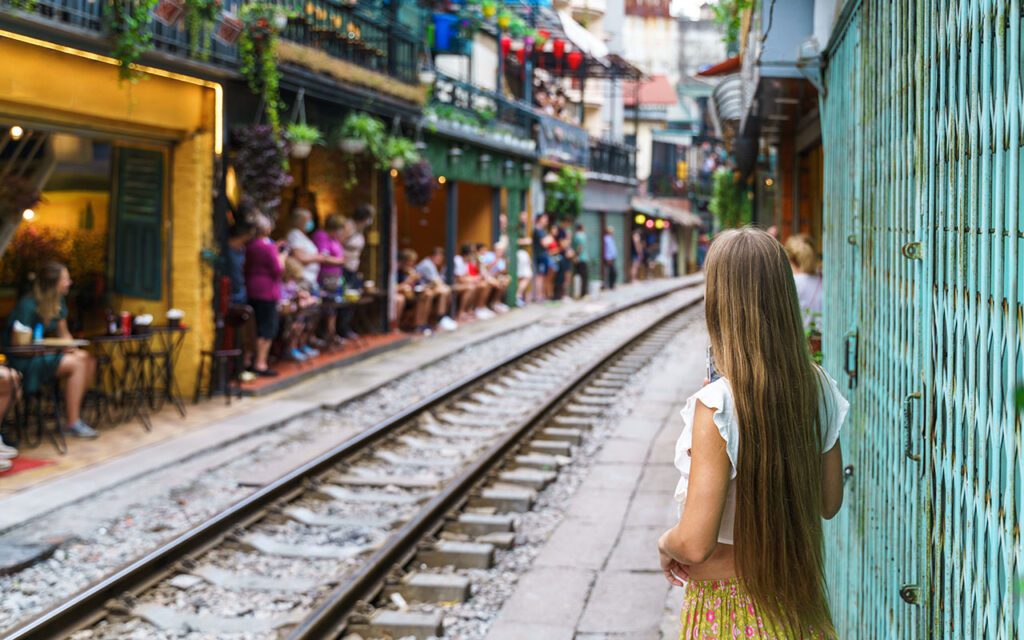
It is always worth visiting the capital city of any country. In Hanoi , your mind will be blown away by the subtly busy Old Quarter – 36 Streets. You will live the historic moments walking along Long Bien Bridge.
You will love every single second of riding around Truc Bach Lake and finding yourself a good coffee spot to sit down and enjoy a hot egg coffee. And when the sun goes down, get yourself to the Main Cathedral, sit on those red stools and join the locals for lemon tea and sunflower seeds.
Hanoi is one of the few places in Vietnam that has four seasons. Because of the characteristics of a humid monsoon tropical country, Hanoi’s climate in the winter and summer is quite harsh. The winter in Hanoi is so cold; sometimes the temperature drops deeply below 10 °C, meanwhile, the summer is very hot, sometimes stormy. According to the experiences of many travellers, you should visit this city in the autumn.
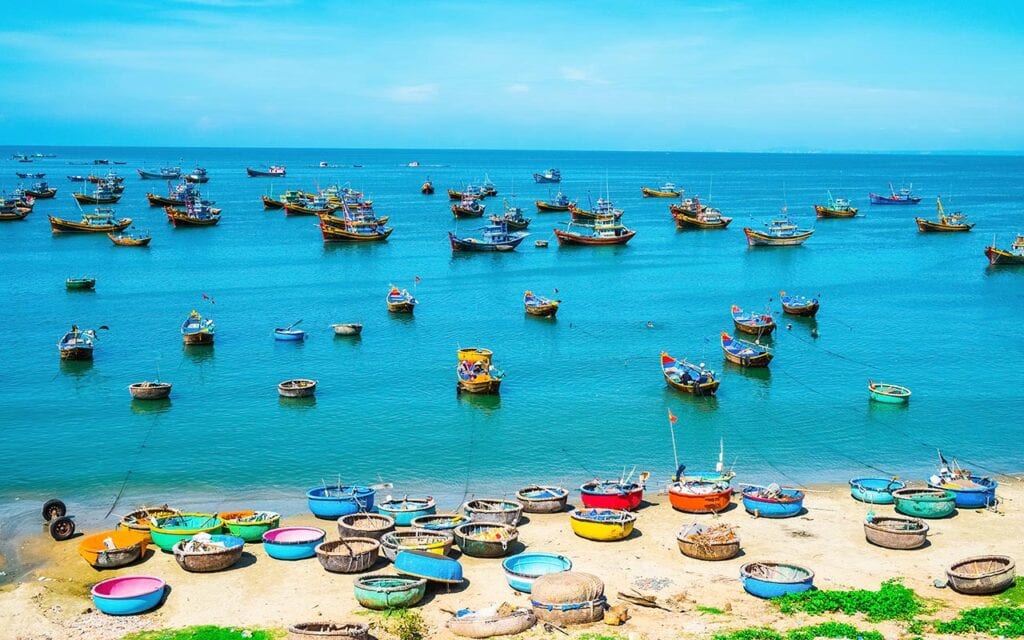
Mui Ne is another coastal city to add to your list. Unlike any other beaches, Mui Ne is a paradise for those into extreme water sports. You can do from snorkeling, diving to surfing and parachuting. Riding past miles of white and red stunning sandhills on one side and feeling the ocean breeze blowing from the sea from the other side, you will know why this destination keeps popping up in travel conversations. And of course, live seafood is freshly brought to restaurants from the fishing boats will fulfill your visit.
Mui Ne is not only good for motorbike trips but also the best place across the country for water sports. November to April is the windy season making it perfect for kitesurfing and windsurfing. Other activities such as parasailing, kayaking, and motorboating can also be spotted. Make sure you eat at one of the food stalls set on the beach for an unforgettable dining experience.
- places to visit in vietnam
- Vietnam travel guide

Related Articles

Vietnam is a safe tourist destination and is one of the few travel destinations that encompass incredible scenery, deep and heroic history. | Source: Shutterstock
Rising from a country with war-torn history, Vietnam has remarkably transformed itself into one of the most ideal destinations to visit in the world. According to the Institute for Economics and Peace, Vietnam is one of the top 10 Asian Paficic countries that is peaceful and free from conflict. With its marvelous landscapes, heroic history, fascinating culture, pulsating energy, and epic food ranging from North to South, Vietnam welcomes millions of new travelers every year and it’s safe to say that every traveler who comes here once will always love to return.
When choosing where to go in Vietnam, what you should realize is that the answer is pretty much everywhere. Vietnam is home to breathtaking scenery, from beautiful beaches to magnificent mountains and rice paddies. Many Vietnamese destinations have been proudly classified as UNESCO World Heritage Sites: Ha Long Bay, Phong Nha Ke Bang caves, Hoi An ancient towns, and Cham Islands — all are recognized for their intense beauty and history.
However, the small fragments of the non-heritage sites will also make you amazed. Da Lat, for example, is too picturesque to miss. Saigon, “a city that never sleeps,” will certainly leave a deep impression on visitors by its bustling way of life. Whether a must-see site or an off-the-beaten-path attraction, all of the attractions come with a variety of activities that not only suit leisure travelers but also adventure seekers. Nevertheless, wherever you go, you are surely welcomed by the hospitality of locals and the diversity of Vietnamese food.
Vietnam is the perfect destination for anyone wanting to immerse themselves in nature, history, culture, and some of the best culinary feasts across the world. With so many places to visit in Vietnam, planning a travel itinerary as a first-timer can be quite challenging, thus, we’ve compiled a list of Vietnam’s must-visit destinations.
Northern Region
Walking in nature has become a new trend after the pandemic to reduce stress and boost mental health. Sapa — a small town in Lao Cai province located about 350 km northwest of Hanoi — is the perfect option for trekking and enjoying nature. Sapa, also referred to as where “the sky meets the lands,” is well-known for its majestic mountainous landscape, with terraced fields and villages hidden on the mountainside. Countless trail systems connect to each other for travelers to enjoy the tranquillity and fresh air. This quiet Vietnamese town is also home to many ethnic tribal groups: the Hmong, Dao, Tay, Giay, and Xa Pho.
The prominent attractions in the area around Sapa include the Hoang Lien Son Mountain range, home of Fansipan — the highest mountain in Vietnam and O Quy Ho mountain pass — famously known for being the most difficult and winding passes for even the most adventurous travelers. On your way to O Quy Ho mountain pass, it’s recommended to visit the beautiful Love waterfalls and Silver waterfalls where you can enjoy the soothing symphony of the rustling of trees in the wind and birdsongs. Travelers can also visit Cat Cat Village and Ta Phin Village, where small ethnic communities still live a traditional way of life of producing rice and crops. After spending time discovering nature, make sure to try out some authentic local dishes such as black chicken, dried buffalo meat, thang co (horse stew), and salmon hot pot to regain energy.
The best time to go is during the harvesting season (September to November), where rice in all terraced fields is ripe and turns a yellow color. During this time, the terraced rice fields look like golden silk scarves flying over in the wind above green mountain slopes, making the landscape amazingly beautiful.
Ha Long Bay
The discovery of Ha Long Bay is a must for any traveler who visits Vietnam for the first time. Ha Long Bay, located in the Gulf of Tonkin, within Quang Ninh Province, is 165 km from the capital Ha Noi. Historically, the name Ha Long represents a myth of a dragon that flew down from heaven to protect the Vietnamese people from invasion. The creature sprayed not only fires but also emeralds and Jade jewels that become the green archipelago as we see today.
Ha Long Bay has more than 1,969 islands and islets, most of which are a result of dramatic limestone rock formations straight up from the water. Despite people having lived in this region for thousands of years, most of the forest islands remain uninhabited and unaffected by humans. These coves and natural towers are home to a broad spectrum of wildlife and boast high biodiversity. Having some of the most breathtaking scenery the world has to offer, Ha Long Bay was declared a UNESCO World Heritage Site in 2000. Aside from the natural scenery that commands Ha Long Bay, other great attractions include the floating fishing villages where children are taught to swim before they can walk and the local fishing people can be found going about their daily business.
Going on a cruise ship is the best way to enjoy the intense beauty of Ha Long Bay. There is a range of tour boat services for travelers to choose depending on personal preferences. Most of the boats are extremely well equipped, well run and offer sumptuous accommodation and superb dining. Sitting on the deck, drinking a cocktail while the boat slips between the stunning rock karsts as the sun sets will be one of life’s unforgettable memories. Travelers can participate in other activities such as kayaking, swimming around the bay, caving, or even riding a seaplane to experience the majesty of these enchanting tropical islands.
It might come as a surprise for many people that the first capital of Vietnam was Ninh Binh instead of Ha Noi. During the 10th and 11th centuries, Ninh Binh (Hoa Lu at that time) was chosen to be the political, cultural, and economic center due to the epic towering mountains that were believed to protect the country from invaders. Ninh Binh encapsulates so many aspects of the beautiful Vietnamese scenery in one place: stunning karst peaks which rear up out of the land surrounded by flat, sprawling rice paddies and winding glassy rivers, which is why it is called “Ha Long Bay on land.” Located a 3-hour drive away from Hanoi, the city is a perfect option for those who want to escape from the noise and distraction of the city.
Enjoying the tranquillity of nature is by far the biggest appeal of visiting Ninh Binh. With three-fourths of the area being hilly and mountainous, diverse karst topography is a base for the development of a great wealth of flora and fauna, forming many tourist destinations with beautiful natural scenery that appeal to tourists, especially the cave complex such as Trang An, Tam Coc, Van Long Wetland Nature Reserve, Van Trinh Cave, and Thien Ha Cave. To enjoy most of the scenery, hop on a small rowing boat and the rower will take you on a two-hour journey through the magnificent caves and lakes.
Besides the scenic places, Ninh Binh is also known for historical and cultural relics such as Hoa Lu Ancient Capital which were home to the Dinh, Early Le, and Ly Dynasty, and Bai Dinh Pagoda — the biggest pagoda in Vietnam. Although Ninh Binh can be enjoyed in any season, the best time to visit Ninh Binh is September where you can see the yellow rice paddies, while November to April tends to be the driest months.
Ha Noi, also known as the capital and the heart of Vietnam, is the place that holds most of the country’s history and culture. Located by the banks of the Red River in the northern half of the country, it is the second-largest city in Vietnam by population, behind only Saigon. Throughout its 1000-year history, Hanoi had served as the capital of Dai Viet since King Ly Thai To announced to relocate the imperial citadel from Hoa Lu (Ninh Binh today) to Thang Long (Ha Noi today), the capital of French Indochina and most recently, the capital of a proudly reunified Vietnam after the country regained independence in the US-Vietnam War.
Representing a perfect blend of the old values and the dynamic growth of Vietnam, Ha Noi attracts not only international but also domestic tourists every year. Take a walk on the Hoan Kiem Lake in the morning, you will see some elders doing exercises and street vendors selling fruits and souvenirs, altogether creating a simple and rustic prospect to this prosperous urban city. At night, the Old Quarter and Dong Xuan market is the epicenter of tourism in the city, with market streets, buzzing nightlife, and some of the best Vietnamese food on the planet. Pho, bun cha (vermicelli with grilled pork), bun dau mam tom (vermicelli with fried tofu & shrimp paste), and nem chua be (crab rolls) are essential to try for newcomers. There’s always a local coffee shop lurking around the corner, so make sure you hop in one and try out the signature egg coffee while enjoying stunning French architecture and bustling atmosphere visible in every inch of the city.
Travelers can also explore the depth of Vietnamese history and culture through the Imperial Citadel of Thang Long, Temple of Literature & National University, Ho Chi Minh Mausoleum — the resting place of Vietnam’s greatest hero, Hoa Lo Prison, and Thang Long Puppet Centre. There is a range of galleries to visit according to your taste.
If you have more time, visit Bat Trang Ceramic Village — the house of the most skilled artisans who combine both traditional and modern techniques to create beautiful porcelain artworks. Not only are you able to purchase some of the finest handmade ceramic products in Vietnam, but you can also see them making the products right in front of you or even sign up for a workshop where you can do your own ceramic piece.
Central Region
Being the capital of the nation in the 19th and early 20th centuries during the Nguyen dynasty, Hue is perhaps the easiest Vietnamese city to love and spend time in. Geographically, Hue is located right in the center of this S-shape country, perfectly situated in a mountainous valley that creates a natural barrier to enemy forces. Its situation on the banks of the Perfume River is sublime, its complex cuisine justifiably famous, and its streets are relatively traffic-free. And that’s without mentioning Tu Cam Thanh (the Forbidden Purple City) — the majesty of the Imperial City, a citadel-within-a-citadel — housing the emperor’s residence, temples, palaces, and the main buildings of state, within six-meter-high, 2.5km-long walls. The citadel system is an example of harmony between the quintessence of Western and Vietnamese architecture. The architecture seems to be mixed with wonderful nature, creating a charming picture.
With that being said, there are so many things to do in this city. The hills and mountains create the perfect spots for adventurous motorbike rides. A scenic walk along the Perfume River is extraordinary and provides great views of local fishing methods on traditional boats. A guided tour to Tu Cam Thanh will provide you with a comprehensive history of Vietnam while admiring the complex architecture of moats, carved gates, and royal pavilions. Finally, anyone with an interest in ancient architecture and history needs to visit the Thien Mu pagoda and the tombs of Emperor Minh Mang and Tu Duc.
If you want to stay in Hue for much longer, ideally you can sign up for a countryside cycling tour, where you can visit rice paddies, small villages, and smaller temples and soak in the beautiful views at your own pace.
Home to the past emperors in Vietnam, Hue is well-known for its royal cuisine. While enjoying the scenery, make sure to try out the specialties such as banh beo (steamed rice cake), bun bo Hue (beef noodle soup), com hen (clam rice), and nem lui (lemongrass skewers).
Hoi An, once a major Southeast Asian trading post in the 16th and 17th centuries, is a living museum that houses old-town architecture. Some notable heritage buildings include Chinese temples, a Japanese-designed bridge, pagodas, wooden shop-houses, French-colonial houses, and old canals. Hoi An has been successful in preserving and restoring more than 800 historic buildings and was declared a UNESCO World Heritage site in December 1999.
Large-scale trading and rice fields have been gradually replaced by tourist businesses. Lounge bars, boutique hotels, travel agents, a glut of tailor shops, and vast numbers of daily tourists are very much part of the scene here. Therefore, while making a Hoi An hotel booking , make sure you choose a hotel in the city center, then you are just one step to heaven!
On the way to discover the hidden charm of Hoi An, there are definitely so many activities to do. Do not miss out on a chance to visit a tailor or shoemaker shop because you can get tailor-made clothing at a very affordable price. Hoi An is also a paradise of handicrafts, ranging from silk clothes, feather bags, porcelain vases to bamboo lanterns — perfect options to be souvenirs. Walking around the Ancient Town, there are stunning locations to take photographs, cafes to linger in, or local street vendors to chat. As the pace of life here is more laid back, the people here are very friendly and talking with them will be one of the most memorable parts of your visit.
Hoi An really comes alive at night, and a Hoi An must-see is the spectacular Lantern Market. Every evening, the 300-meter-long Nguyen Hoang Street is transformed into a sea of color, as vendors set up stalls selling everything from handmade jewelry and clothes to delicious snacks.
Due to the city’s diverse culture and tradition, Hoi An cuisine now is a combination of Chinese spirit and Vietnamese style. Found pretty much everywhere from street kitchens to luxury restaurants, local specialties include cao lau (pork rice noodles), com ga Hoi An (Hoi An chicken rice), mi Quang (Quang seafood noodles), and banh bao banh vac (white rose dumpling).
Nevertheless, Hoi An is also well known as a beautiful coast and hosts some gorgeous beaches. These are idyllic spots, with crystal clear waters and pristine stretches of sand. The most outstanding beach in this town is Cua Dai Beach which is just 5 km away from Hoi An’s center. With the alluring combination of warm sun, cooling sea breeze, and endless coconut palms, Cua Dai Beach is where you can refresh and rejuvenate with no hassle.
Once serving as the capital of the Federation of Indochina, Da Lat’s permanent image nevertheless is as a holiday resort in Vietnam’s Central Highlands. Da Lat, with its sheer beauty, was given many lovable nicknames, from the "Little Paris” in Vietnam, the city of eternal spring, to the city of flowers, and the city of love. The city’s colorful flower carpets, fragrant pine forests, well-preserved French-style villas, and the sea of clouds have given Da Lat a romantic vibe that we could not resist.
In the past few years, Dalat has attracted more and more Vietnamese Millennials and Gen Z travelers thanks to its romantic scenery and expanding tourism services. One prominent factor of Dalat is the expansion of homestay and coffee shops, such as Doi Mot Nguoi, In The Forest, and The Married Beans, where travelers can have a sip of the best coffee in Vietnam while enjoying the cool fresh air and glorious scenery. The sea of clouds floating under the mountain top will surely be an overwhelmingly mesmerizing experience for anyone who witnesses this scene for the first time.
Dalat is well-known for its diversity of colorful flowers, so make sure you visit some of them. Suggestions would include the Lavender field at Tuyen Lam Lake, Buckwheat field at Van Duc Temple, Trai Mat Hydrangea field, and F Flower Field Café. Moreover, Dalat is also home to a range of marvelous waterfalls. Located near the city center, Datanla Falls is a destination where you can try the alpine coaster, canyoning, kayaking, and cable car.
A trip to Dalat would not be fulfilled without a visit to Bao Dai’s Summer Palace - home of the last king in Vietnam; a walk around the signature Xuan Huong Lake to ride swan paddle boats; and Night Market where the air is filled with chatter and the smells of delicious snacks. Last but not least, travelers coming to Dalat should not forget to visit the Valley of Love because its romantic myths, beautiful valleys, and pine forests will surely make you satisfied.
Southern Region
Ho chi minh city.
No visit to Vietnam is ever complete without a visit to Ho Chi Minh City. Ho Chi Minh City, formerly known as Saigon, is the biggest city and the commercial and technology hub in Vietnam. It’s also the old capital of the Republic of Vietnam. When the north and south reunified in 1975, Saigon was renamed HCMC, yet the former name is still used today, particularly when describing the beating heart of the city. Saigon is mostly known as a freewheeling, cosmopolitan metropolis, as can be observed through the cutting edge buildings and the exciting nightlife on offer here.
Saigon has a bit of everything – temples, museums, parks, and tourist shopping. Whatever your interests, you’ll find something to do here. To start the day, head to the city’s top cafes to get your energy flowing. Walk down Dong Khoi street to acquaint yourself with the Notre Dame Cathedral, the city's Central Post Office, and the Saigon Opera House. On a more local level, Ben Thanh Market and the Jade Emperor Pagoda are worth a visit.
For shopaholics, a range of old apartments and former office buildings in District 1 have been repurposed as shopping centers . Decades-old buildings such as 22 Ly Tu Trong and 42 Nguyen Hue are brimming with all kinds of local young clothing brands, cafes, and restaurants. At night, head to the top of Landmark 81 — the highest tower in Vietnam — for a delicious cocktail and an astonishing 360-degree view of the city, especially impressive at night when the lights twinkle on below. The Nguyen Hue walking street is also worth a visit at night if you want to see young groups gathering to interact and perform music or try various kinds of street food and bubble tea.
The Independence Palace is also a fascinating place to go. It is a famous spot in Vietnam’s history as it captures the time when Saigon fell as a tank broke through the gates of the palace. Travelers who want to learn more about the history of Vietnam can visit the War Remnants Museum and the Ho Chi Minh City Museum. Finally, just at the edge of Ho Chi Minh City is Cu Chi Tunnels where you can explore a network of underground tunnels that were used during the US-Vietnam war.
The best period to visit Saigon is in the dry season — the period from December to April next year. This is a great time to explore Saigon without having to worry about sudden rain that ruins your trip.
Can Tho is the fourth largest city in Vietnam and the largest city in the Mekong Delta region. It is noted for floating markets, rice-paper making villages, fruit gardens, and crisscrossed picturesque rural canals. Being near the water, Can Tho is a tonic for travelers who are looking to reconnect themselves with nature, and Azerai Can Tho represents a perfect place to do so with someone special.
The best way to get a feel for Can Tho is to see it from the water. Jump on a boat to the symbolic Cai Rang floating market in the morning, you will see hundreds of boats selling fresh tropical fruits, vegetables, and breakfast like hu tieu noodles and iced coffee.
Another great idea is to take a walk downtown to get a feel for the area's unique culture. Ninh Kieu Park is a picturesque spot to sit and watch the colorful boats passing by on the flat, glassy water. Hai Ba Trung Street follows the river south of the park and has a large ion of cafes, restaurants, and hotels. This area really comes to life at night with the beautiful lights reflecting off the river. If you are hungry, visit Ninh Kieu Night Market and you can enjoy the fineness of fresh grilled seafood and buy local handicrafts as souvenirs. The Can Tho Bridge casts some particularly beautiful light shows on the water with the colors rippling and merging with the gentle waves.
Can Tho houses two of the most impressive architecture where you can come, admire and take some eye-popping photos, Ong Pagoda and Pitu Khosa Rangsay Pagoda. In addition, if you’d like to learn and see how to make traditional chocolate in Can Tho, don’t miss your trip to Muoi Cuong Cocoa farm.
Mealtimes are a highlight of any trip to Can Tho. Locals use freshwater fish and shrimp, just-picked vegetables, and Vietnamese cooking techniques to make mouthwatering dishes you won’t forget. Some specialties include bun rieu, banh xeo (sizzling pancake), and lau mam (hot pot with fermented fish).
The ideal time to make a holiday locally is between April and June when temperatures are moderate and the rainy season is not in full swing yet.
As the first city to reopen for international travelers under a trial vaccine passport program, Phu Quoc is definitely the first place to go on many travelers' bucket lists. Located in Kien Giang province, Phu Quoc is the largest island in Vietnam and has many beautiful beaches stretching from North to South. Historically, it houses one of the largest prisoner camps during the Indochina War built by the French colonialists to incarcerate Vietnamese soldiers. Today, Phu Quoc Island is harnessing its remarkable standing as one of the largest tourist destinations thanks to its pure beauty of a primitive island with interminable jungles and deep blue seas.
Most things to do on Phu Quoc Island are based around rest and relaxation since Phu Quoc warm weather especially suits outdoor activities. A UNESCO-listed national park takes up more than half of Phu Quoc Island, offering recreational activities such as hiking, camping, wildlife, photography, and bird-watching.
Phu Quoc beaches have so much to offer. Starfish Beach attracts thousands of tourists to see its amazing collection of sea stars. Seeing these magnificent creatures in their natural habitat is something you shouldn’t miss. Ong Lang, Ganh Dau, and Khem beaches are just three of the most beautiful and untouched beaches where travelers can watch the gorgeous sunset/sunrise or snorkel in the crystal clear water. Meanwhile, Truong and Long beaches are a little bit different as it holds plenty of bars and restaurants along its shoreline. Come to Sunset Sanato Beach Club, Chuon Chuon Bistro & Sky Bar, or Ocvan Kitchen & Beach Bar to enjoy beach lounges, umbrellas, live music, massages, and take the best Instagram props.
Along with the beaches, vibrant markets, traditional fishing villages, and pepper plantations are perfect for experiencing the local lifestyle, sampling authentic seafood, and nuoc mam (fish sauce).
- Meet the Team
- Work with Us
- Czech Republic
- Netherlands
- Switzerland
- Scandinavia
- Philippines
- South Korea
- New Zealand
- South Africa
- Budget Travel
- Work & Travel
- The Broke Backpacker Manifesto
- Travel Resources
- How to Travel on $10/day
Home » Southeast Asia » Vietnam » 21 MUST-SEE Beautiful Places in Vietnam (2024 • Insider Guide)
21 MUST-SEE Beautiful Places in Vietnam (2024 • Insider Guide)
A place where street food reigns supreme, temples touch the sky, and lanterns light up streets, Vietnam is a destination made for nature lovers, culture enthusiasts, and foodies.
Honestly, any short description underplays how magnificent this Southeast Asian country really is. It’s so wonderful, in fact, that it can be daunting planning where to visit and what to prioritize.
Worry not: We’re here to help you craft the PERFECT itinerary by laying out twenty-one of the most beautiful places in Vietnam.
Whether you’re visiting to hike along the ricefields of Sa Pa, sail between stalagmites in Ha Long Bay, or sip on coconuts on Cat Ba Island, Vietnam sure is an outdoor lovers paradise. Not only for nature fans, it’s also a haven of culture and history, home to some of the world’s most famous temples and archeological ruins.
This country has some seriously interesting stories to tell! A good place to start? – Visiting some of the most beautiful places in Vietnam.
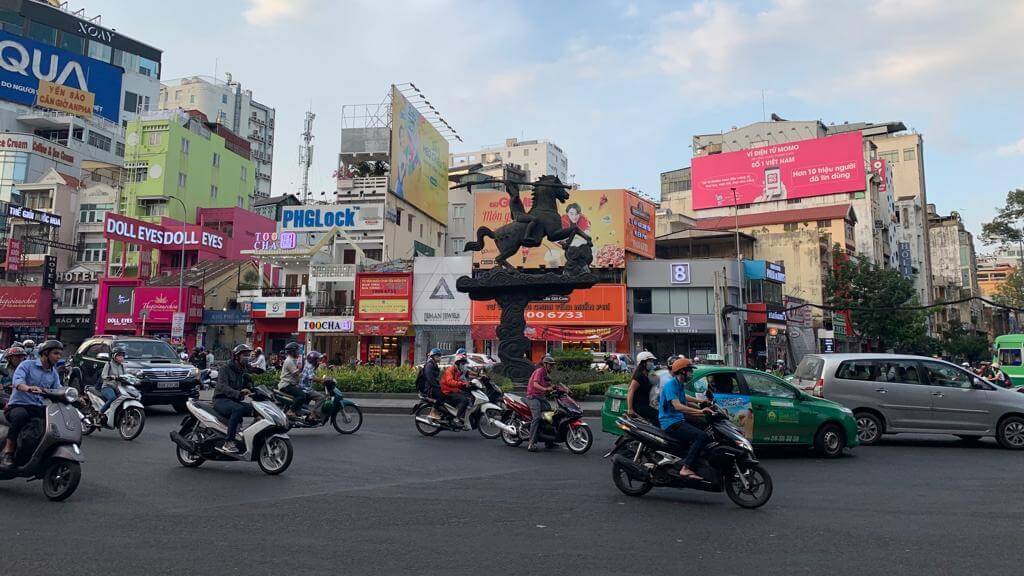
The Broke Backpacker is supported by you . Clicking through our links may earn us a small affiliate commission, and that's what allows us to keep producing free content 🙂 Learn more .
1. Con Dao Islands
2. temple of literature, hanoi, 4. cat ba, ha long bay, 5. ta dung lake, 7. the mekong delta, 8. cat tien national park, 9. my son ruins, 10. the ha giang province, 11. phong nha – ke bang national park, 12. ban gioc waterfall, 13. son doong cave, 14. ninh binh, 15. phu quoc island, 16. mui ne sand dunes, 17. ho chi minh city, 18. silver waterfall, lao cai, 19. nha trang, 20. cao dai temple, long hoa, 21. ba be national park, how to see beautiful places in vietnam, final thoughts on beautiful places in vietnam.
Travelling to the Con Dao Islands has many of the classic markers of backpacking Vietnam – peace, tranquility, and unrivaled island beauty.
Part of the Con Dao National Park, these islands include a group of sixteen islands just off the coast of southern Vietnam. Most of the beaches are uninhabited and protected as nature reserves, with their gorgeous tropical foliage, jungle animals, and sea life thriving.
You’re most likely to visit the main island of Con San, which has miles of coastal trails and other outdoor activities to engage in. This is the only island where people live, and it was once home to a French prison for Vietnamese independence fighters.
Head to Con Son Town to visit some of these prison cells, donning infamous tiger cages, for a taste of Vietnam’s colonial history. For some relaxed downtime, this island has some of the best beaches in Vietnam . Seriously, these beaches are super-duper clean, perfect for lounging in the sun and snorkeling.
When you’ve had enough sun vibes, head for the shaded seafood restaurants lining the beach, where you can dine on the day’s freshest catch. Talk about utopia.

Unlock Our GREATEST Travel Secrets!
Sign up for our newsletter and get the best travel tips delivered right to your inbox.
There is no shortage of beautiful temples to explore in Vietnam. In fact, there are so many, it’s an almost impossible to choose the most beautiful. All I can say is that if you’re backpacking around Hanoi (and it’s likely that you are), a visit to the Temple of Literature is an absolute must.
While it’s one of the capital’s top historical attractions, it’s not without good reason. Built over one thousand years ago in an age of sages and scholars, the temple was dedicated to Confucious and was considered Vietnam’s first university. Think of it as the birthplace of Vietnamese education.
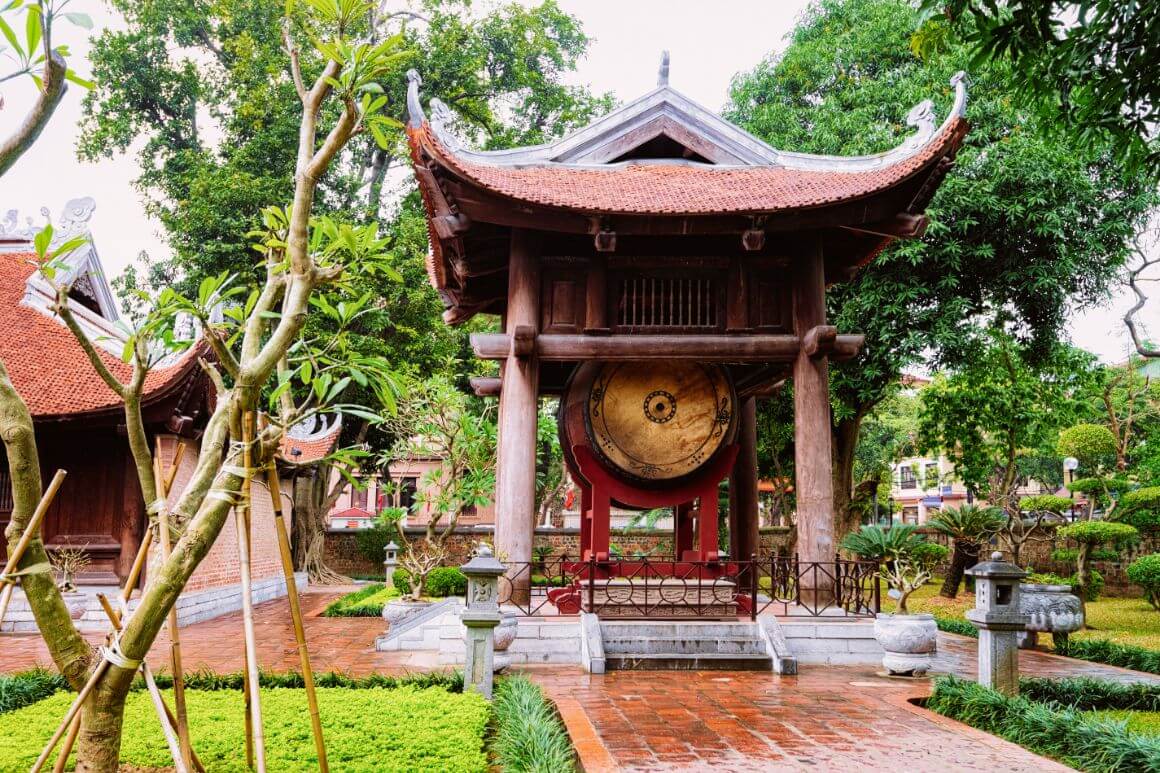
Lying across four streets, this really is an impressive feat of architecture to witness – one of the best spots to visit in Hanoi . The temple has five inner courtyards lined with turtle steles, pavilions, and passageways.
An exquisite example of ancient Vietnamese architecture and a traditional dedication to education, the temple was once used to educate Vietnam’s royals, noble families, and elite members of society. You can really feel the energy of this ancient college.
There is something unequivocally beautiful about the Vietnamese traditional way of life. A focus on family, ancestral worship, incense burning, and rich culinary culture is just the tip of the iceberg. If this ancient lifestyle calls your name, be sure to include Sa Pa in your Southeast Asia adventure .
Hidden in a cloud of mist in the mystical Tonkinese Alps, Sa Pa is a small French town that is seen as the gateway into the mountainous region. The rice-terraced countryside is bordered by dramatic peaks, so it is no shock that this is Vietnam’s premier hiking destination.
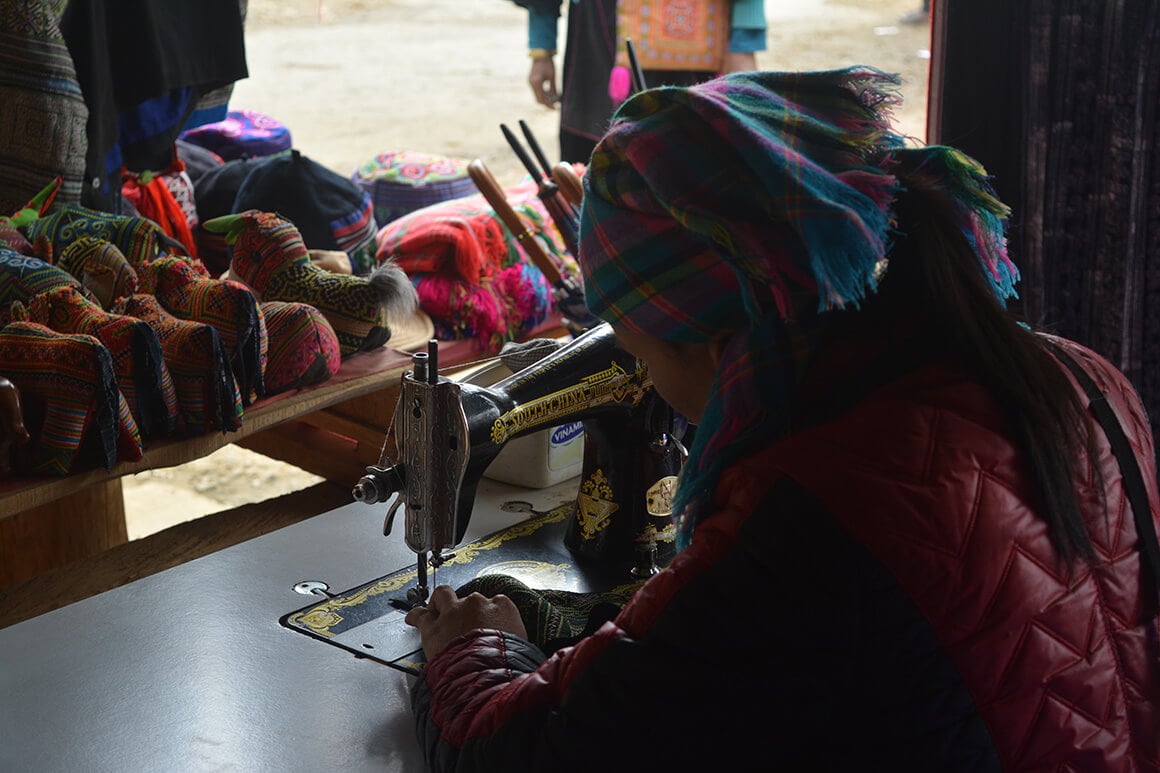
It’s the natural beauty of the rolling green terraces that makes this agricultural region one of the top ten places to visit in Vietnam. If you’re taken in by a good adventure, exquisite views, and exciting nature, add Mount Fan Si Pan to your bucket list of adventures.
Located in the Sa Pa region, the mountain is Vietnam’s highest peak. The region is most popular with hikers and trekkers , who can follow short hikes or three-day treks between villages.
I recommend spending some real time in the region, soaking up the culture and exquisite scenery around the Hmong and Dao Hill tribal villages . Sign up for a guided tour around Sa Pa for THE ultimate Vietnamese experience.
Ha Long Bay translates to “the place of descending dragons”. Appropriately named, in my opinion! I mean, if you close your eyes and imagine a dragon’s ideal lair, it would look a lot like Ha Long Bay.
The Cat Ba National Park is an island, part World Biosphere Reserve , and part golden beache . Surrounded by dramatic limestone karsts, Cat Ba has a small harbor town, but there really isn’t much to do here.
Rather, spend your time exploring the wild, rocky island, which is a paradise for hikers and climbers. Oh, and the waters are just as magnificent as the land.
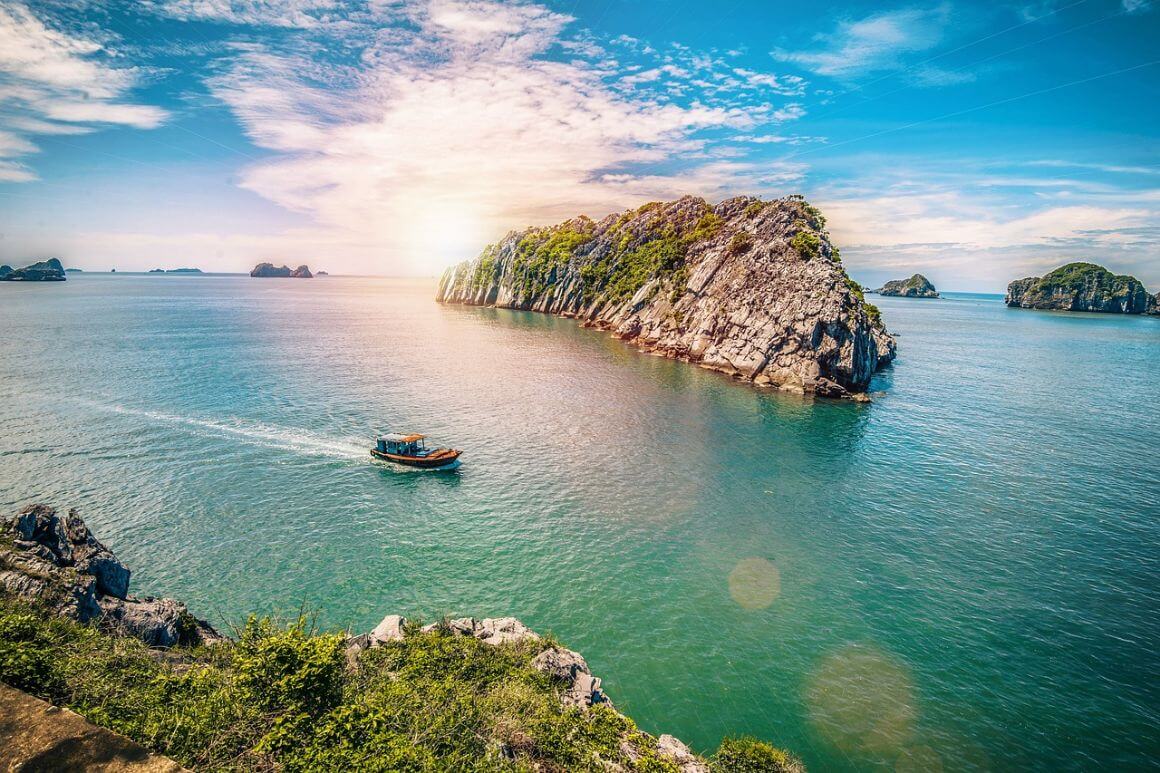
The entire bay is worth a top spot on this list, with its towering limestone mountains rising seemingly impossibly from the emerald waters below. As popular as the bay might be with tourists, it is absolutely still worth visiting. You can find cozy accommodations , enjoy yummy food, and try lots of activities that really show off the place.
One of the best ways to discover the entire Ha Long Bay is to jump on an overnight junk (a type of boat that is certainly not junk) boat tour. You can then wake up between the karsts and explore the more than 1600 jungle-topped islands.
From the island of Cat Ba, you can rent a kayak and explore the kaleidoscope coral reefs, which are well protected by the park system; no wonder it’s one of the most beautiful places in Vietnam.

Stash your cash safely with this money belt. It will keep your valuables safely concealed, no matter where you go.
It looks exactly like a normal belt except for a SECRET interior pocket perfectly designed to hide a wad of cash, a passport photocopy or anything else you may wish to hide. Never get caught with your pants down again! (Unless you want to…)
What better way to get to know inland Vietnam than with a trip to Ta Dung Lake? While most flock to the beaches of Cat Ba and Da Nang, Vietnam’s lakes have a quiet allure waiting to be explored.
From above, this might be one of the most unique-looking lakes on the planet. Made up of hundreds of small ponds, rivers, and streams, the entire lake region was created by a dam wall. As a response to rising water levels, the nearby dam overflowed and created a lake around mountains and hills, which today include over forty islands.
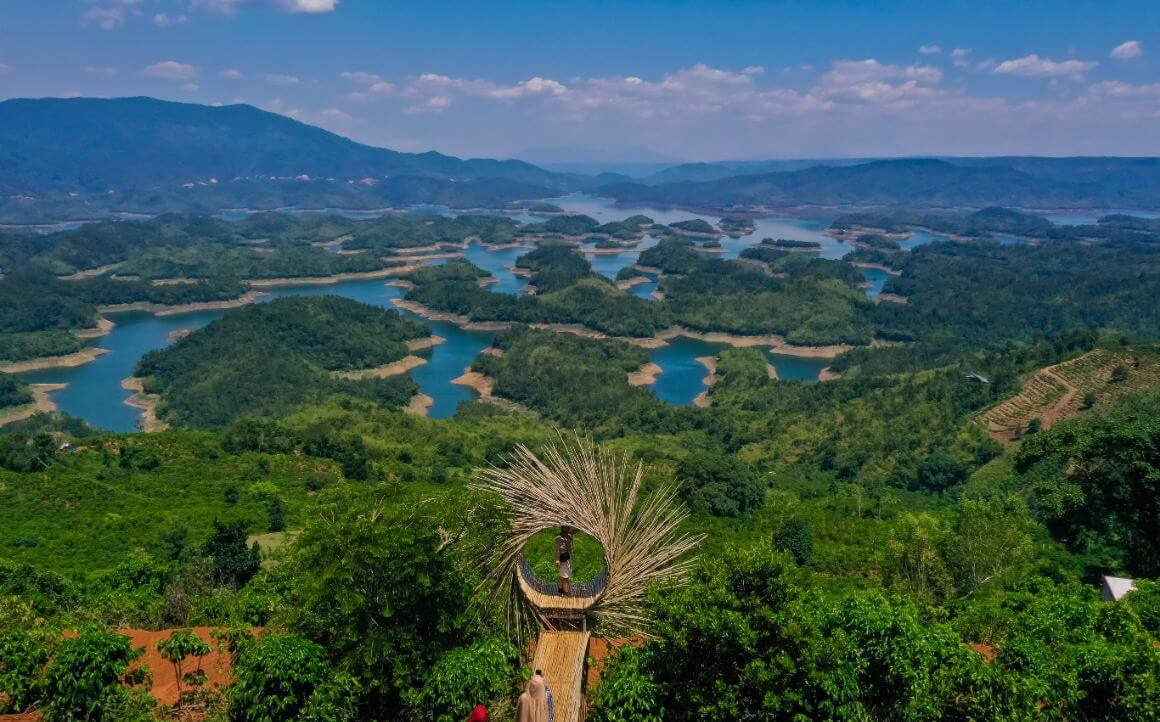
During the wet season, there are also different springs and waterfalls to find deep inside the forest. Camping is also popular here, with fully prepared campsites available to rent. Make sure you check all your camping gear for an epic Vietnamese adventure.
Ta Dung is also a national park, which is home to plenty of endemic plants and animals. Naturally, it also attracts a huge population of birds. So, if you’re a bird watcher, you won’t want to miss out on this day trip.
If you squint, the dam looks a bit like Ha Long Bay and has even been called the bay’s equivalent in Vietnam’s central highlands. The best way to explore this unique place in Vietnam is by boat, as you can motor your way between the islands and coves.
With a sky lit by lanterns and colonial French architecture creating some of the most beautiful streets in the world, Hoi An deservedly holds a place as one of the top ten places to visit in Vietnam.
Backpackers in Hoi An unanimously acknowledge that it tops the list of the best cities in Vietnam, for obvious reasons. What was once a French colonial settlement is now known as the “city of lanterns”. The city is small, lining the coastline with an intricate network of waterways and rivers.
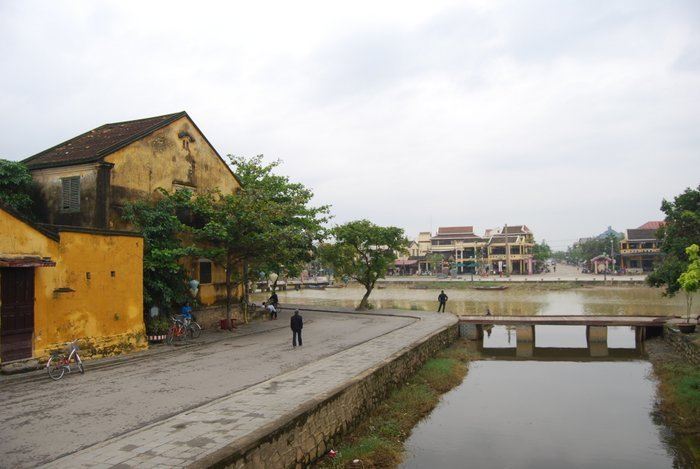
The Chinese shops, colorful temples, and charming colonial buildings, combined with Vietnamese tube houses and an iconic Japanese covered bridge, reflect the region’s history. Talk about a melting pot! Amidst all this variety, Hoi An has really comfortable accommodations that are as beautiful as the buildings around them.
The old town quarter is packed with exciting shops where you can get your own bespoke clothing, hand-made to fit. What was once a meeting place for Japanese and Chinese merchants is now packed with international travelers wanting to experience the lantern experience firsthand. And oh boy, is it an experience.
Cycle under the lantern-lit streets, walk across the iconic covered bridge and release a lantern into the water for the full experience. It really is an atmospheric wonderland that can sometimes feel like a movie set.
One of my favorite places in Vietnam, and no doubt one of the most physically astounding, is the Mekong River in the Mekong Delta. It’s a maze of winding waterways that meander through mangrove forests, lush rice fields, and past floating markets.
It’s Southeast Asia’s most famous river and one of the most productive and cultivated regions on the continent. Other than exploring the Mekong by boat, I suggest you visit the most famous floating markets of Chau Doc, Can Tho, and Cai Rang. Join this 2-day tour around the Mekong Delta to soak up all the special vibes and dive into the local culture. Get ready for an awesome time!
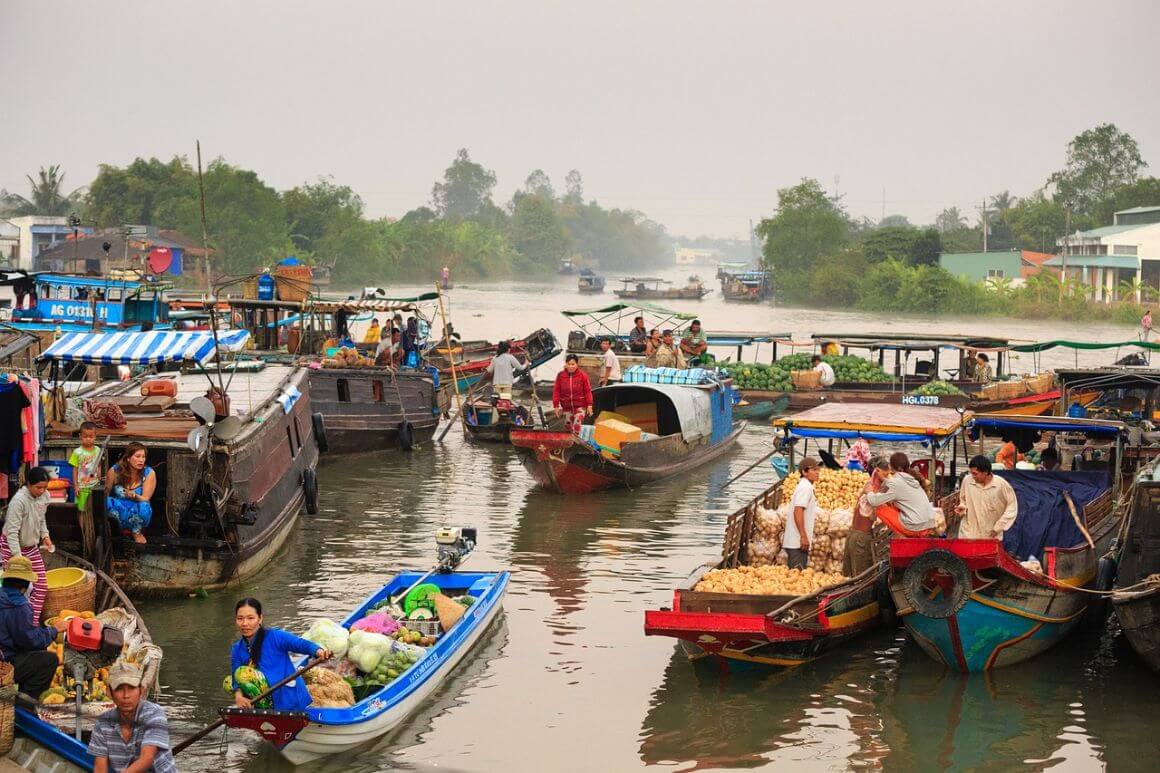
Let’s be honest; your guides will know what’s up and take you there before you even have to ask. Here, traders, fishmongers, and farmers come to sell and purchase fresh fruit, vegetables, and fish in a colorful exchange of produce.
It’s also a beautiful place to explore on a bike! You can roll through peaceful local villages where residents live in harmony with their giant water buffalo counterparts. Life here is guided by the ebb and flow of this natural river, which is unlike any landmark you could ever dream of visiting.
Spanning across a huge landscape of lowland tropical forest, the Cat Tien National Park is one of the most diverse and beautiful protected regions in Vietnam’s south. Here, you can lay eyes on ancient trees, well-maintained botanical gardens, and endemic and endangered wildlife.
Canoe around the Crocodile Lake, which, yes, is home to some resident crocs. Surrounded by jungle, this lake is a beautiful way to see the park from a different perspective.
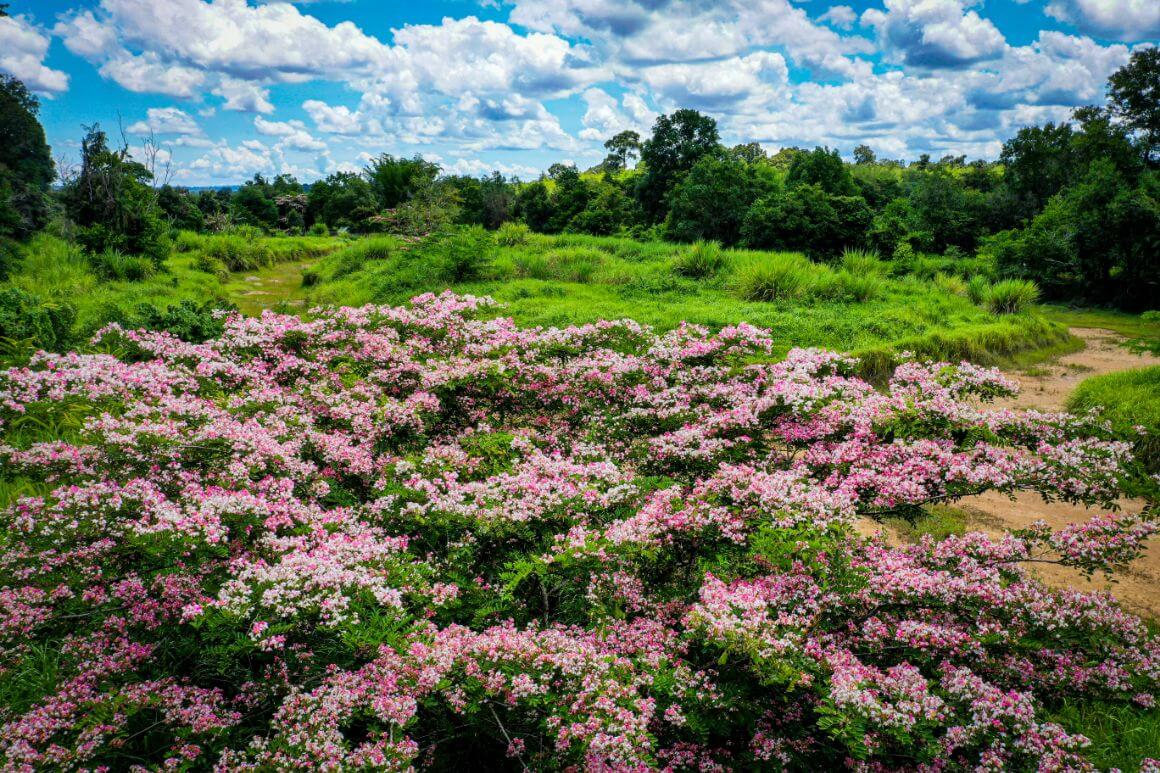
If this terrifies you to the core (I get it, trust me), you could walk or ride a bike along the lush trails, while keeping an eye out for the local wildlife. If you’re wondering what to look out for, you could spot anything from pangolins to elephants to mongeese and even some rare primates.
I also recommend trekking to the magical waterfalls dotted around Cat Tien town. You can also visit an ancient archeological site housing Hindu temples from the fourth and ninth centuries. Nothing better than a site that blends natural and cultural beauty!
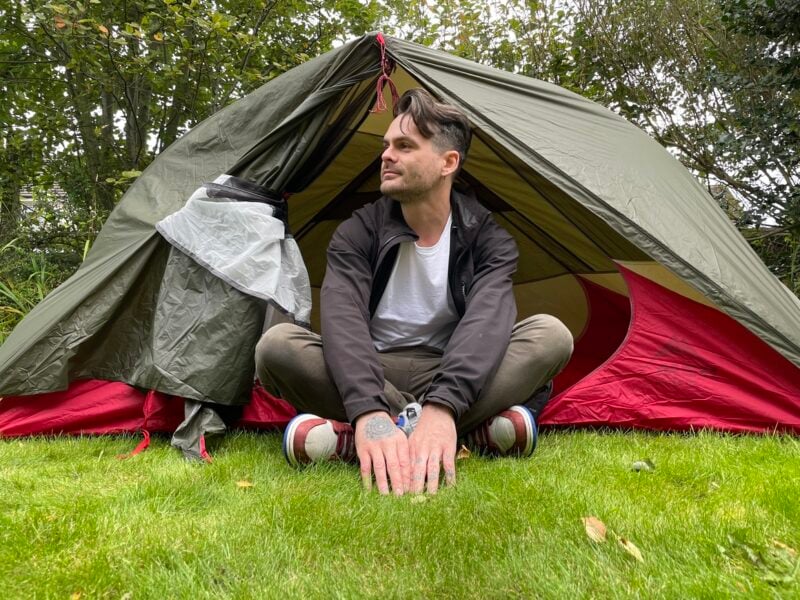
Here at The Broke Backpacker , we love freedom! And there’s no freedom as sweet (and CHEAP) as camping around the world.
We’ve been camping on our adventures for over 10 years, so take it from us: the MSR HUBBA HUBBA is the best damn tent for adventuring…
There really is no place like the My Son Ruins. Located just a short drive from Hoi An, My Son is a UNESCO World Heritage Site that brings the grandeur of ancient Vietnam into the 21st century.
It’s a cluster of Hindu temple ruins that were built between the fourth and fourteenth centuries by the Kings of Champa. These crumbling temples were actually used for religious ceremonies throughout history.
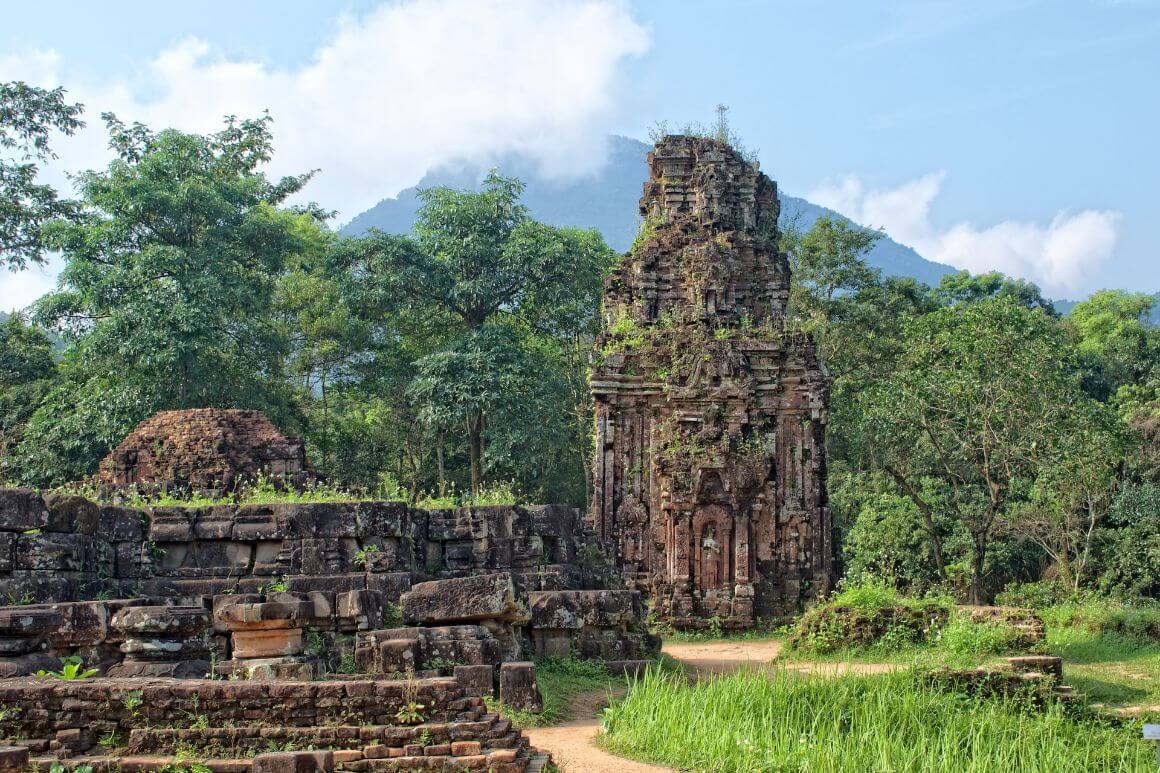
Walking through the ruins, you’ll pass large elephant structures, lotus-inspired stupas, and sacrificial altars. Exploring the temples by foot is the best way to see everything, and you can make your way around in under three hours.
My Son translates to “beautiful mountain” and is named after the lush jungle-covered mountain that creates the backdrop of the temples.
They survived hundreds of years of wild weather and changing powers but were officially destroyed during the Vietnam War. Luckily, a lot was left undamaged, and you can still admire the ancient structures and imagine what the temple complex might have looked like in its heyday.
When it comes to the top ten places to visit in Vietnam, Ha Giang Province is no doubt the cool kid on the block. The province lies just northeast of Sa Pa, bordering China, and is a relatively unexplored and, therefore, untainted region.
Vietnam’s northernmost province, Ha Giang, is a peaceful area with its unbelievable river canyon landscapes. I’d even go so far as to call this the Grand Canyon of Vietnam , with a narrow, winding river fringed by towering cliffs that ascend into farmland.
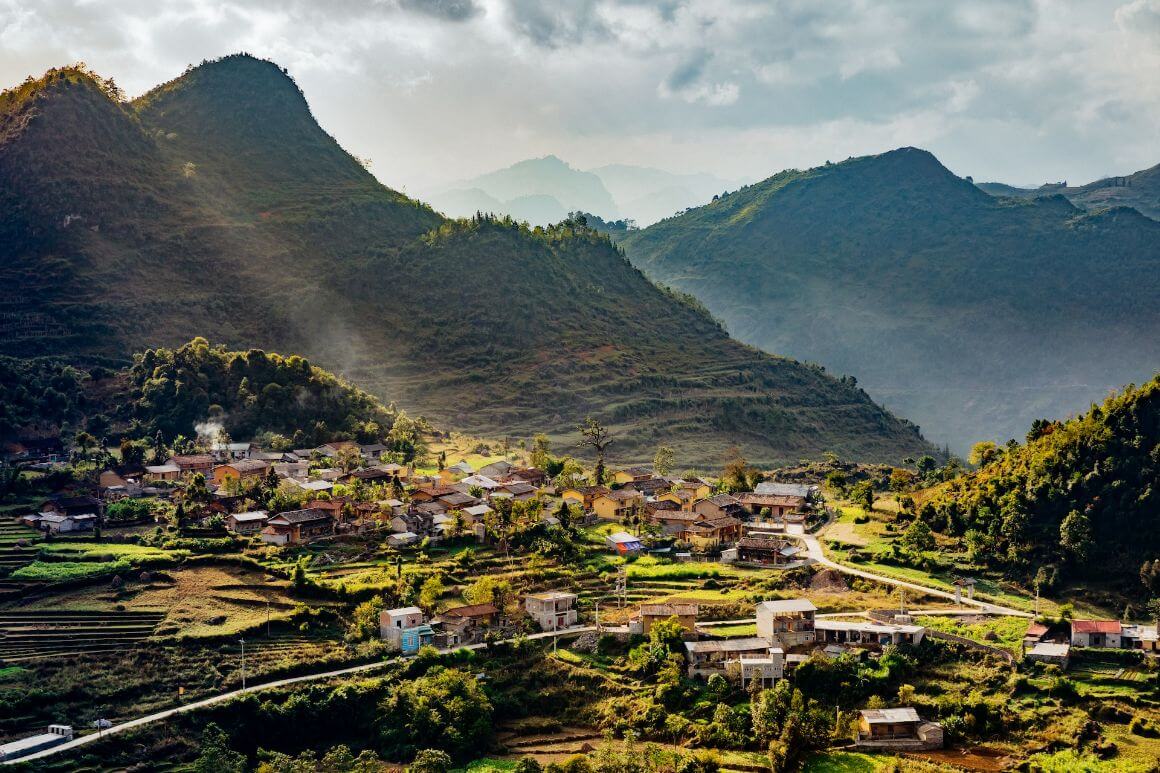
Serpentine roads snake through the province, descending and ascending rice-terraced hills, canyons and valleys, and rugged peaks.
Driving along these narrow roads in a car or motorcycle (good vibes, but never considered safe) is an easy way to soak up the natural wonder of the province. Check out our guide on motorbiking in Vietnam to ensure a safe ride.
Quan Ba Valley, where you will find the Quan Ba Pass (also known as Heaven’s Gate, for obvious reasons once you see it), is one of the most beautiful parts of the province. It features exceptional views over the snaking rivers and terraced rice fields. Seriously, once you see this spot, you’ll understand just why it sits on the UNESCO Global Geoparks Network .
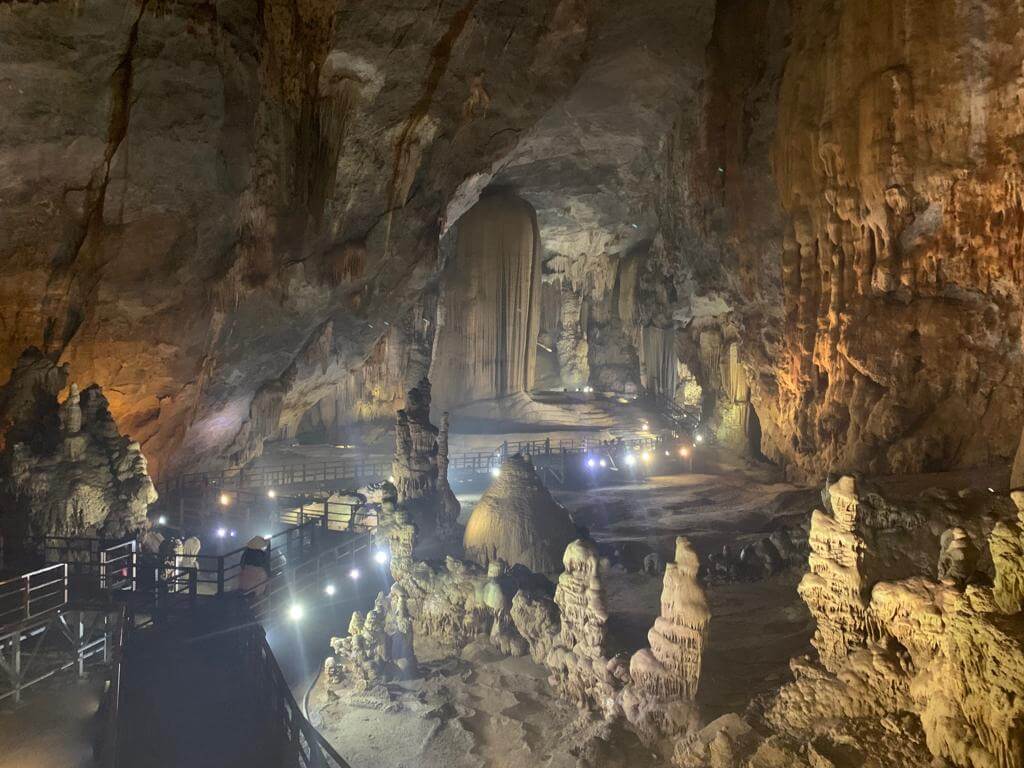
A rugged landscape of limestone mountains and deep caves in the Annamite Mountain Range, Phong Nha-Ke Bang National Park is a beautiful place to soak up Vietnam’s gorgeous countryside.
This park offers an unparalleled caving experience. If you’re an adventurers or a thrill seeker, don’t miss out on the ultimate tour of the Paradise Cave , it’s guaranteed to be the best time of your life!
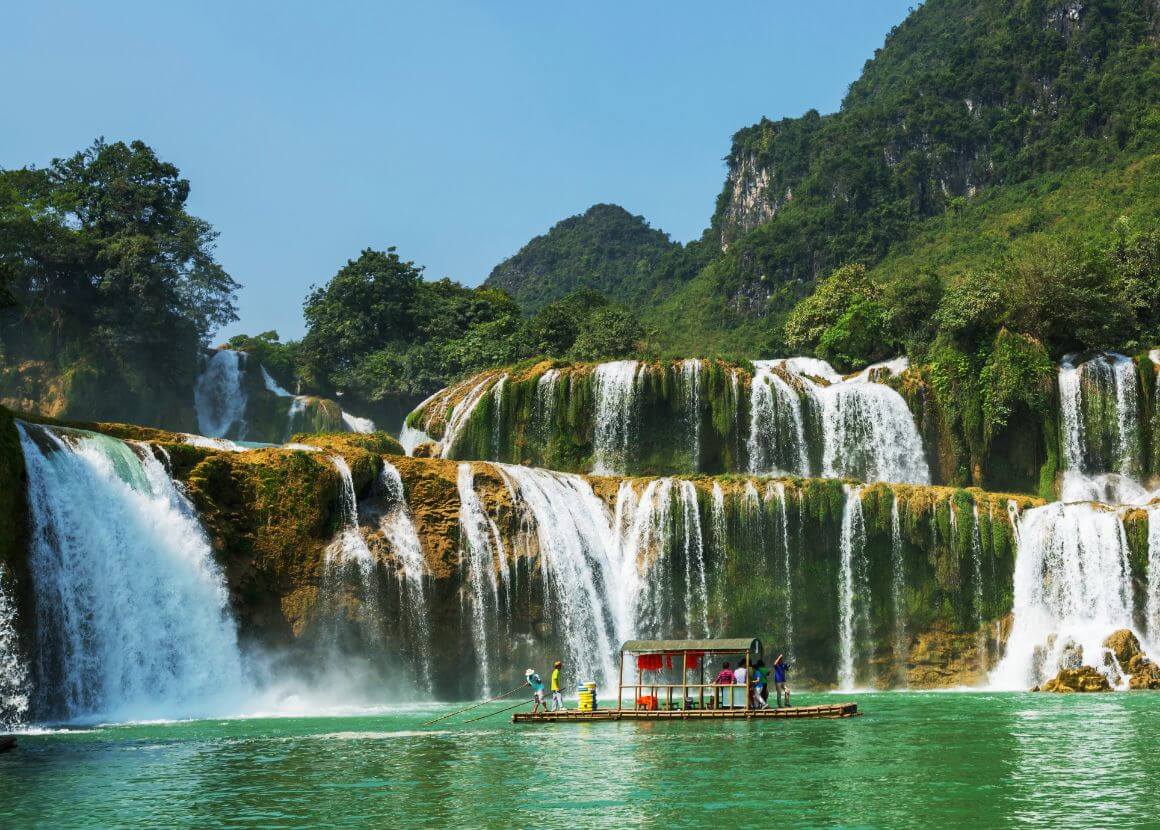
Cascading across a 300-meter-wide area in Cao Bang, the Ban Gioc Waterfalls are Vietnam’s best waterfalls and one of its most impressive natural sights.
Technically, the waterfalls consist of dozens of separate spouts of water concentrated in one part of the Quay Son River, flowing from China.
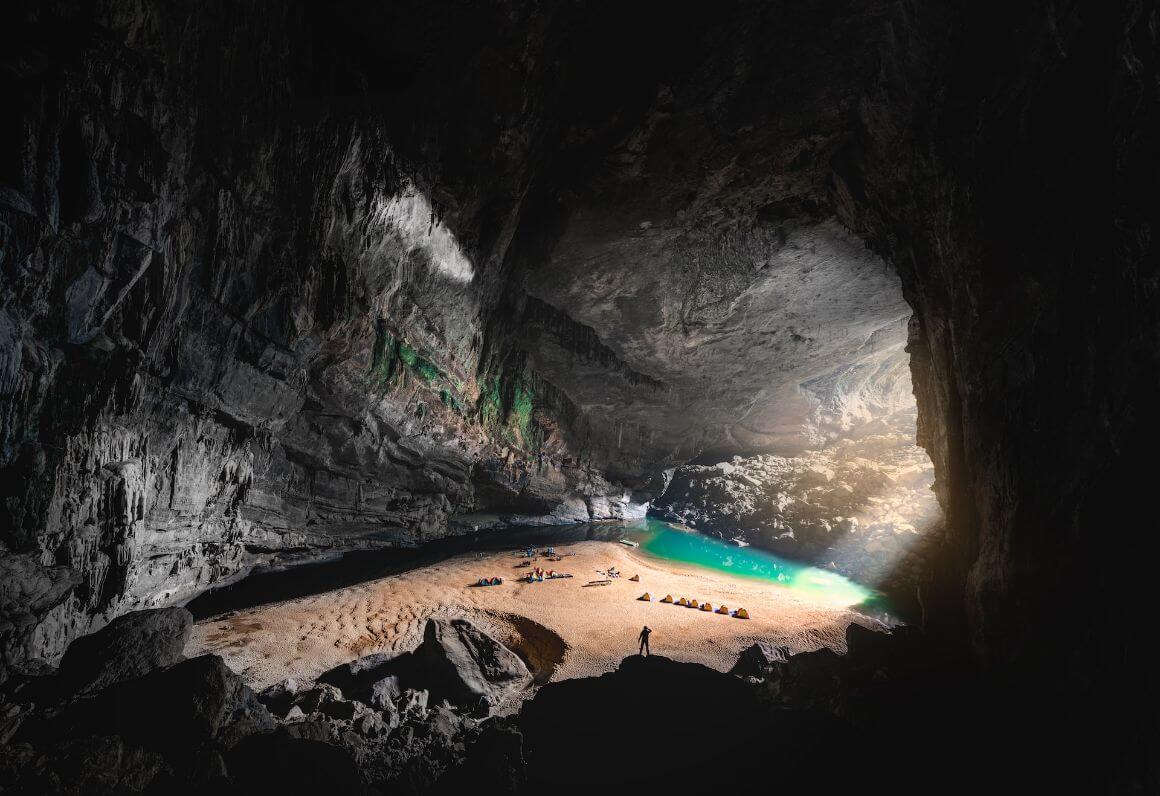
Without further ado, I share with you one of my favorite places on this list of beautiful places in Vietnam, the iconic Son Doong Cave.
Believed to be the largest cave in the world (based on volume), it was only found in 1990. Truly an unbelievable sight to behold; you really can’t miss a visit to this cave in the Ke Bang National Park.
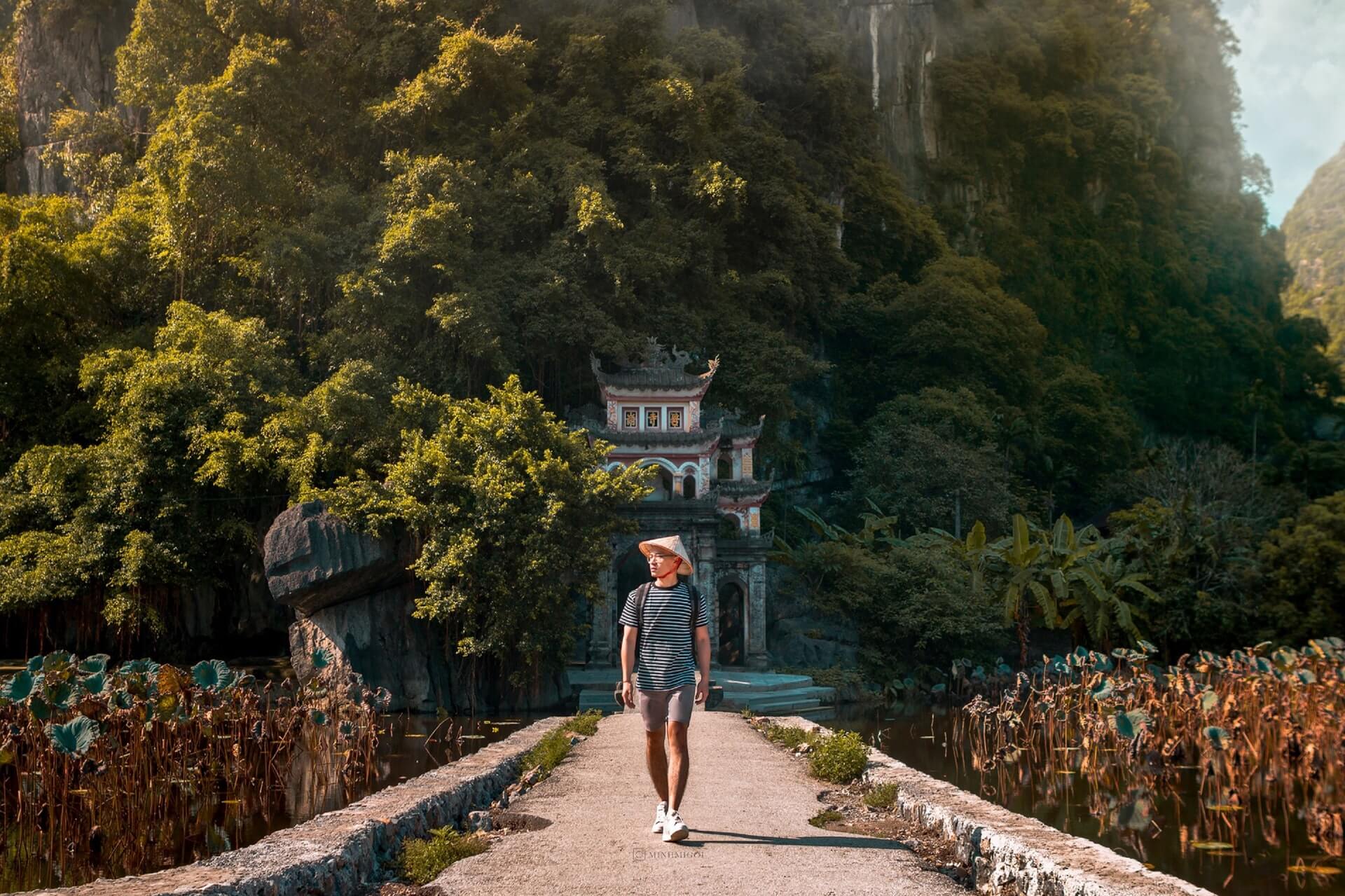
Ninh Binh is a landscape famous for its terraced rice field countryside, ancient mos-clad temples and pagodas, dense tropical jungle, and secret caves.
It is an oasis for adventure seekers, nature lovers, and anyone who appreciates unique cultural heritage. Best of all, it’s just a short drive away from Hanoi. I recommend taking this guided Ninh Binh tour to explore Mua Cave, ride a boat through the Tam Coc caves, and much more.

Get 15% OFF when you book through our link — and support the site you love so dearly 😉
Booking.com is quickly becoming our go-to for accommodation. From cheap hostels to stylish homestays and nice hotels, they’ve got it all!
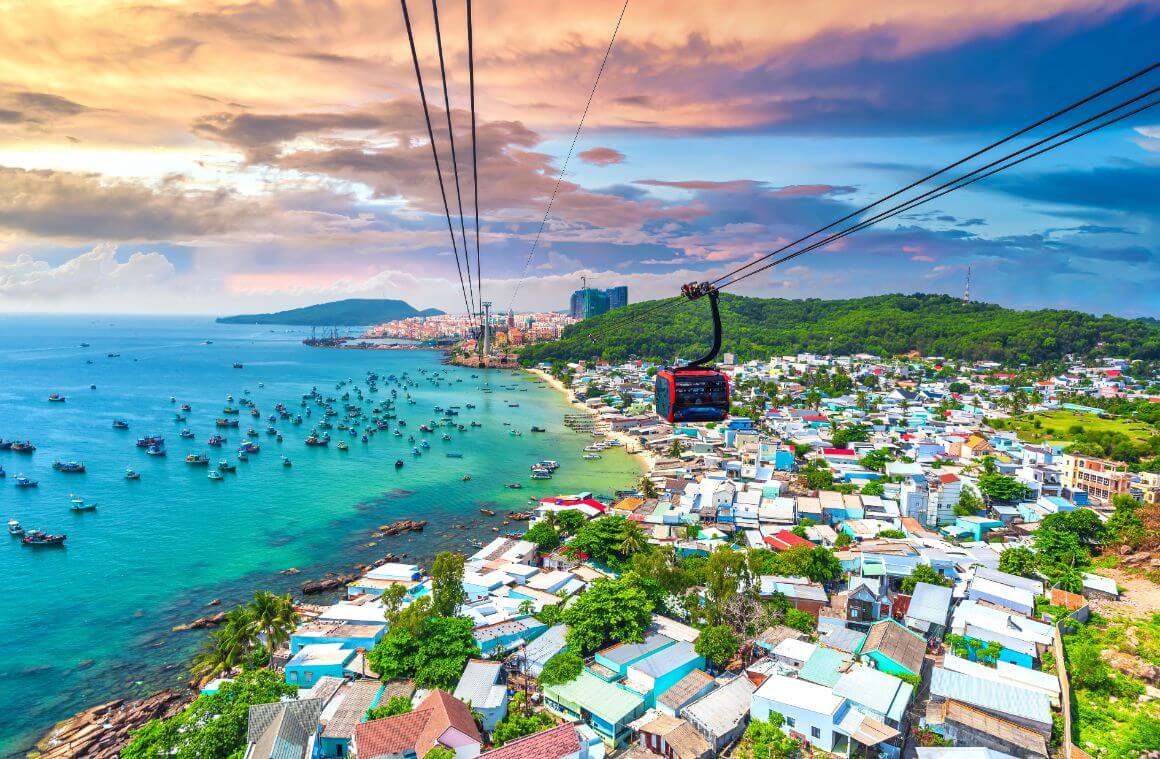
There really are few places that compare to the tropical splendor of Phu Quoc Island. For the clearest water in Vietnam, this pristine beach is a haven for watersports and underwater exploration – perfect for learning how to snorkel or scuba dive.
Highly recommended for romantic visits, spend your evenings gazing across the ocean at sunset and your days exploring the remote island jungle or enjoying the panoramic vistas from a cable car.
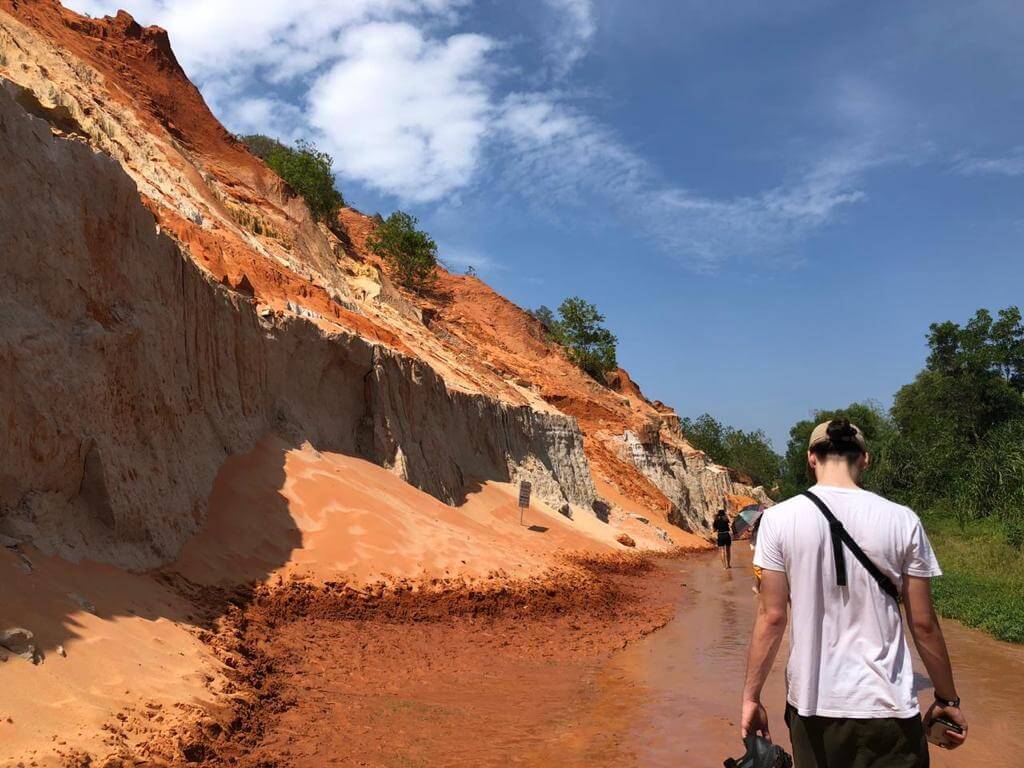
Mui Ne is a resort town in Southeast Vietnam famous for its beaches and sand dunes.
Other than a beach fringed by palm trees and unique rock formations, the Red Sand Dunes are a huge attraction for off-road driving and quad biking.
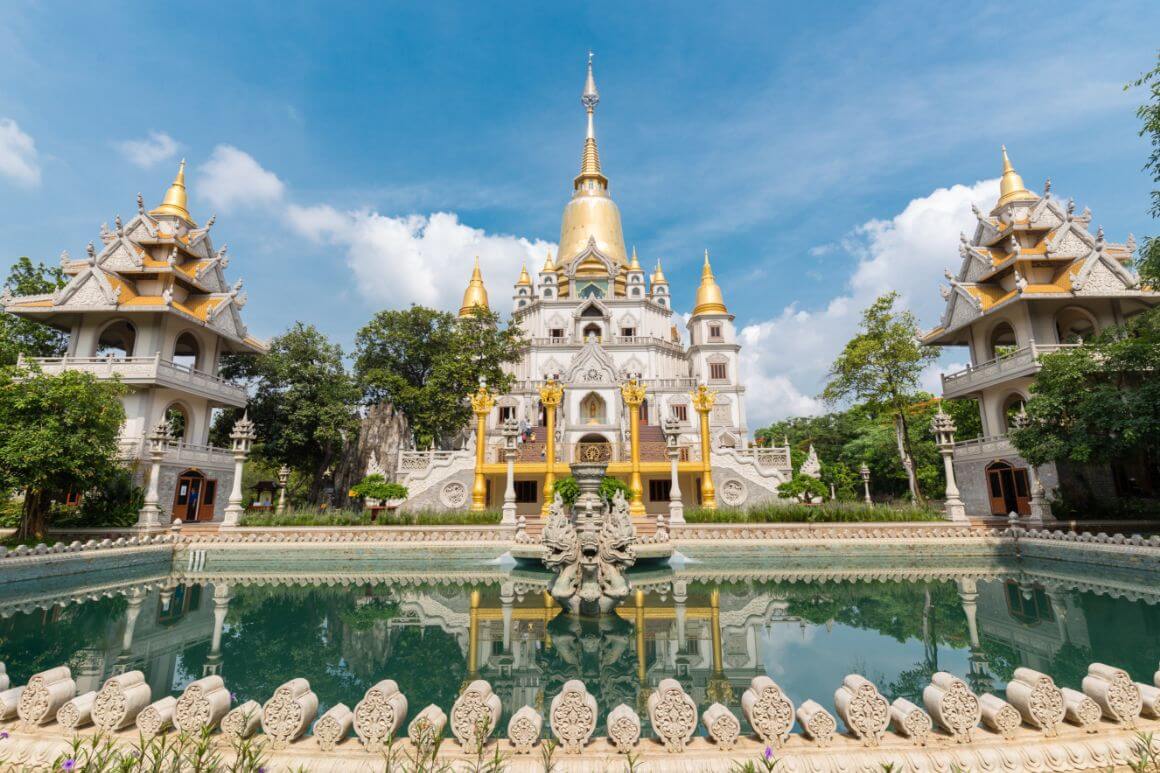
The metropolitan center of Ho Chi Minh City is a must-see when visiting Vietnam. Sure, there are many parts of the city that wouldn’t cut this list, but a trip to Ho Chi Minh city is undeniably unique.
It’s home to some of the country’s most beautiful buildings, parks, and river landscapes. Oh, and make sure to visit the Cu Chi Tunnels to learn about the Vietnam War.
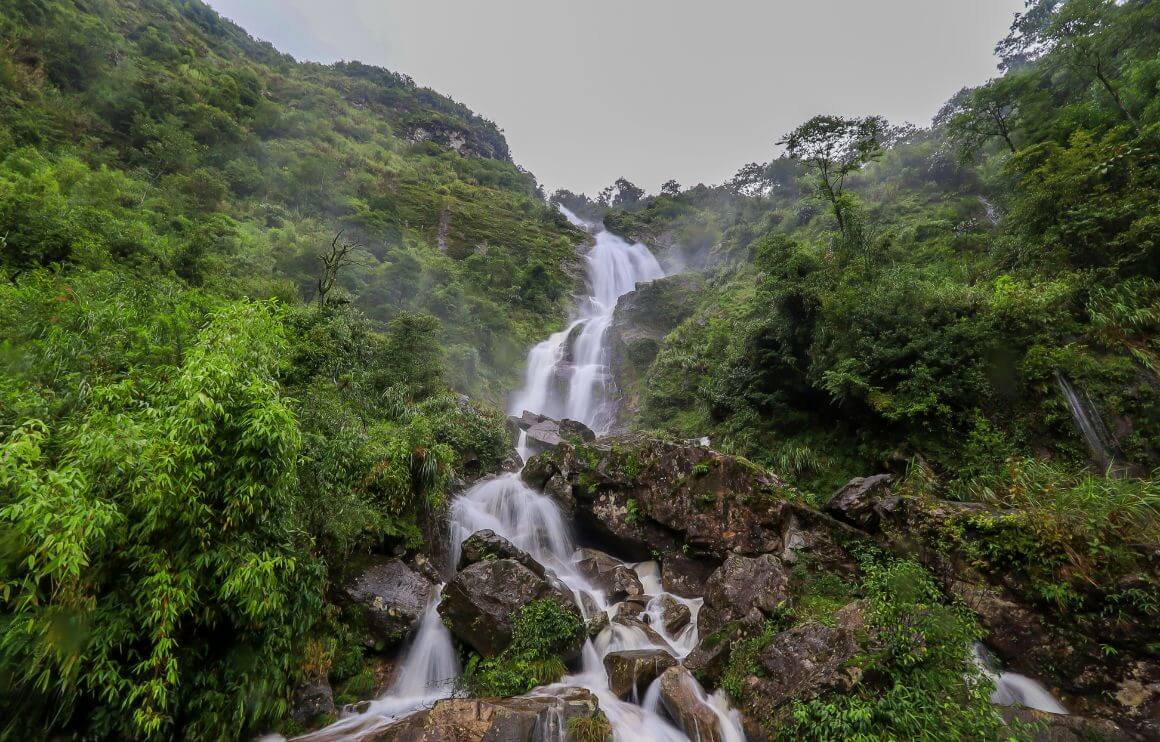
When it comes to waterfalls, there really are few that compare to the beauty of Silver Waterfall in Lao Cai. Also referred to as Thac Bac, the waterfall plummets from a height of over 200 meters through the dense and lush jungles of Sa Pa.
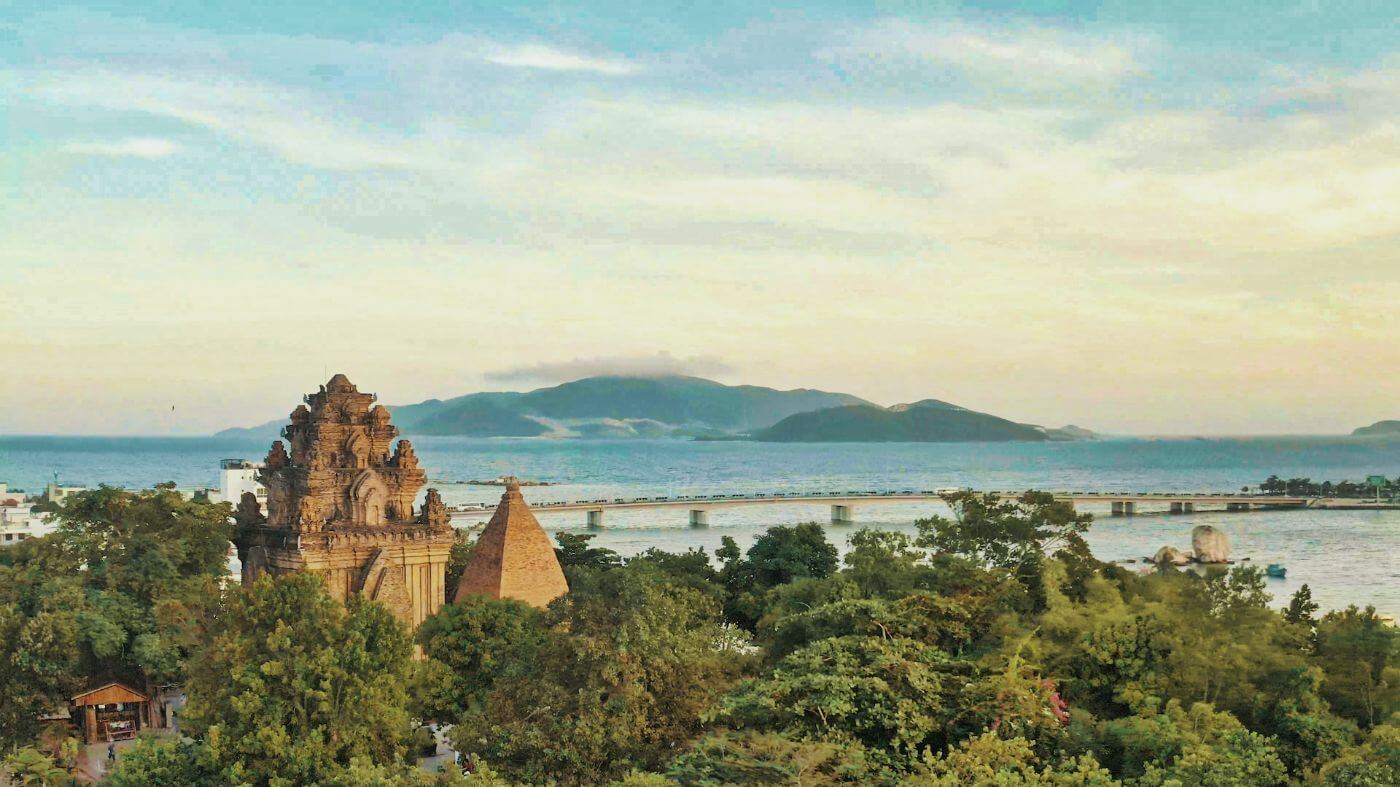
As far as coastal cities go, Nha Trang is one of the most unique places in Vietnam.
Best known for its golden sand beaches and crystal clear water, the city is also home to the Ponagar Temple and Long Son Pagoda . There are also a bunch of hot springs, golf courses, and amusement parks to explore here.
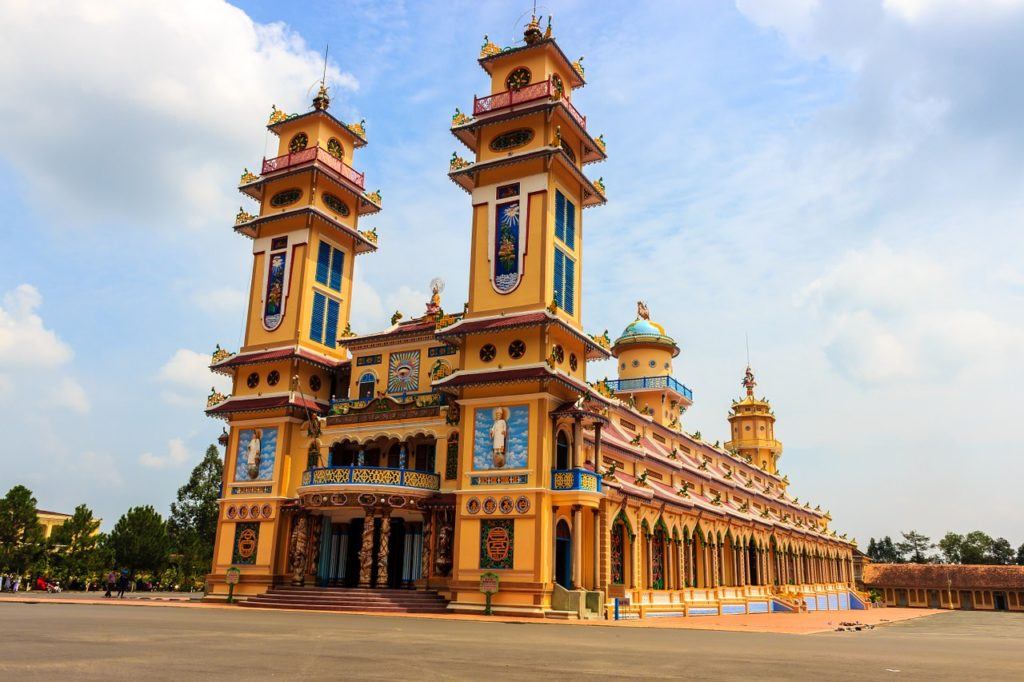
Not far from Ho Chi Minh City, the Cao Dai Temple is a sacred temple complex built to honor the Cao Dai faith.
Although recently built, the exquisite temple really shows off the craftsmanship of the Vietnamese, with delicate carvings and intricately painted columns of dragons, flowers, and geometric patterns.

We’ve tested countless backpacks over the years, but there’s one that has always been the best and remains the best buy for adventurers: the broke backpacker-approved Osprey Aether and Ariel series.
Want more deetz on why these packs are so damn perfect? Then read our comprehensive review for the inside scoop!
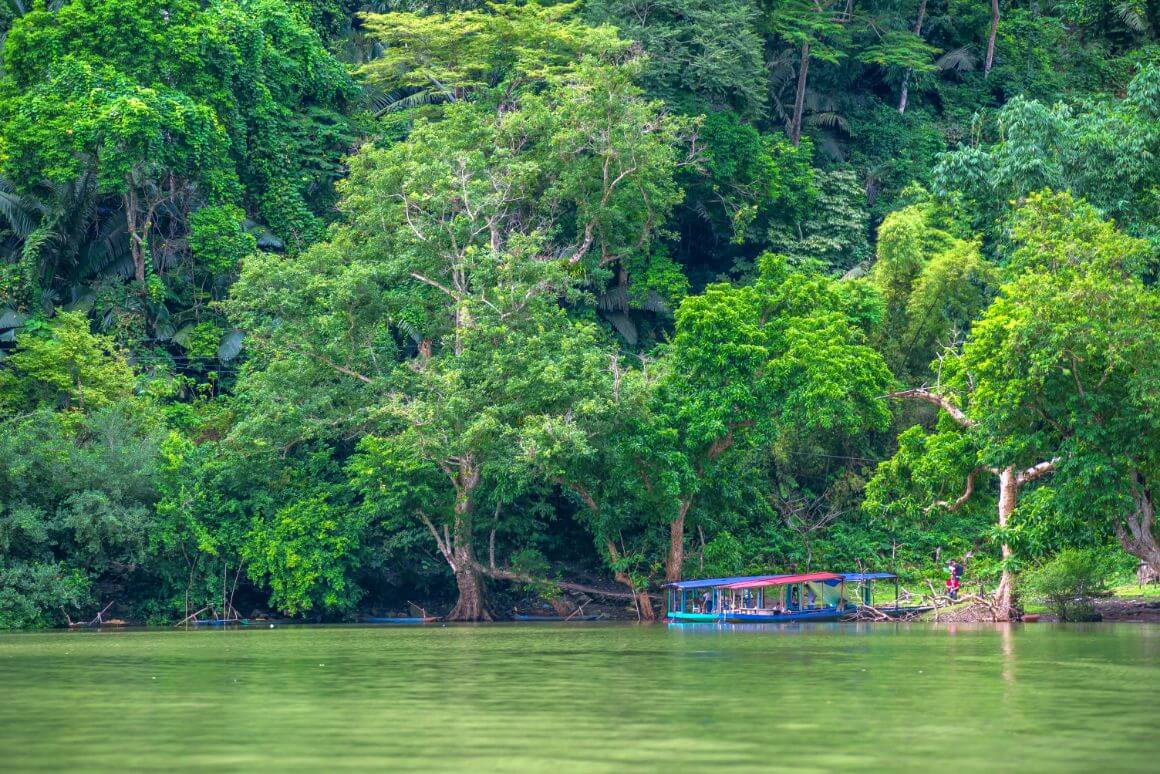
With postcard-perfect views and many endangered animals, including the Asian black bear and short-tailed pangolin, Ba Be National Park is a beautiful place to visit in Vietnam
It’s made up of lush forests, towering karsts, and serene lakes. It’s also home to the iconic Ban Gioc Waterfalls, the fourth-largest frontier waterfall on the planet.

A new country, a new contract, a new piece of plastic – booooring. Instead, buy an eSIM!
An eSIM works just like an app: you buy it, you download it, and BOOM! You’re connected the minute you land. It’s that easy.
Is your phone eSIM ready? Read about how e-Sims work or click below to see one of the top eSIM providers on the market and ditch the plastic .
Getting around Vietnam is pretty easy and safe. The country has plenty of airports, trains, buses, and even boats, as well as a safe national highway network.
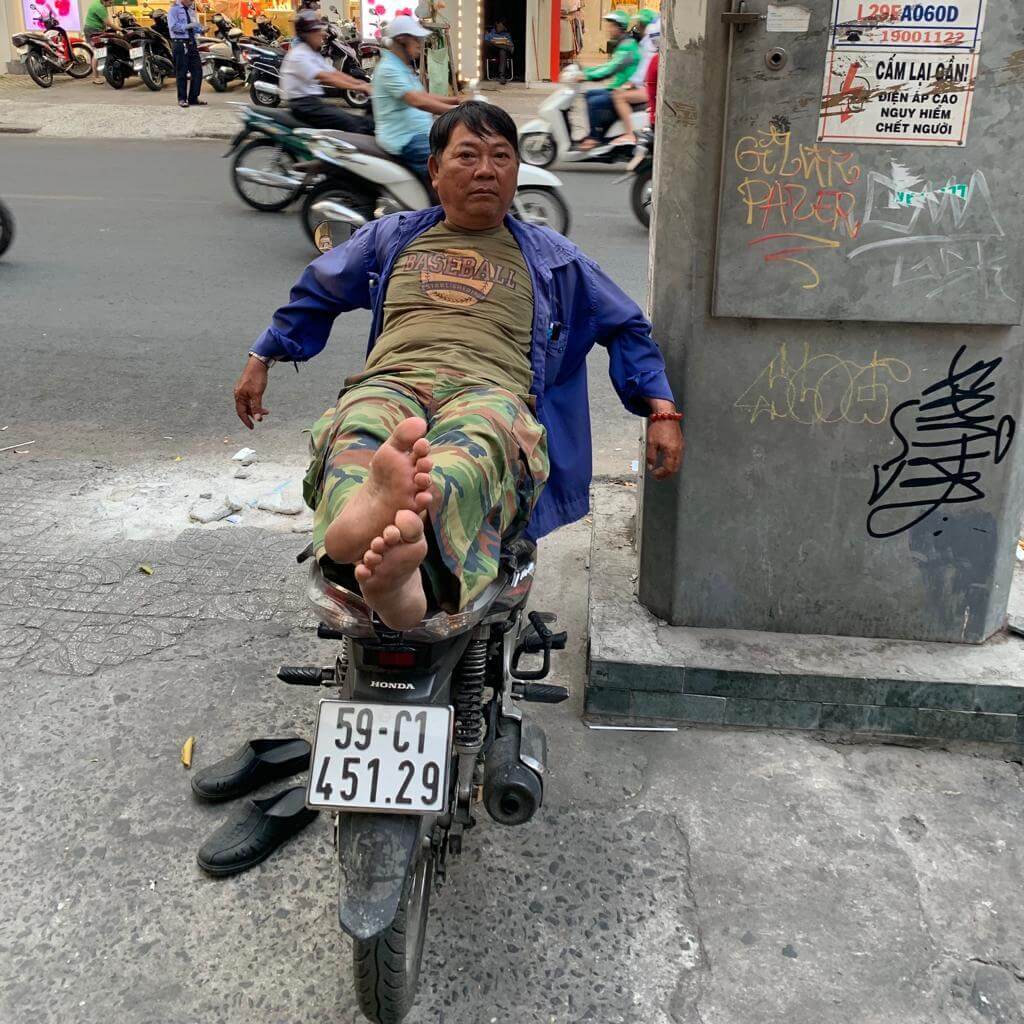
To get from one part of the country to another, flying will be the most convenient option. A cheap flight might cost $30 one-way for the two-hour flight. Travelling by train in Vietnam will be cheaper (around $20), but take longer (35 hours or so). This one is for the rail-die-hards or excessive budgeters.
Once in a major city, you’ll be able to use public buses to get around and can also call a Grab (Vietnam’s equivalent of Uber) when in Ho Chi Minh city, Da Nang, and Hanoi. A Grab might charge around $3 for a ten-minute drive through these cities.
Beautiful travels stay that way insured
ALWAYS sort out your backpacker’s insurance before your trip. There’s plenty to choose from in that department, but a good place to start is World Nomads travel insurance , which offers various health and insurance products for travelers.
ALWAYS sort out your backpacker insurance before your trip. There’s plenty to choose from in that department, but a good place to start is Safety Wing .
They offer month-to-month payments, no lock-in contracts, and require absolutely no itineraries: that’s the exact kind of insurance long-term travellers and digital nomads need.

SafetyWing is cheap, easy, and admin-free: just sign up lickety-split so you can get back to it!
Click the button below to learn more about SafetyWing’s setup or read our insider review for the full tasty scoop.
Natural beauty, buzzing cities, more culture and history than you could possibly absorb, and a food scene known as one of the world’s favorite cuisines – what’s not to love about Vietnam? It’s true that the country is famous for its natural beauty. But Vietnam truly shows off when it comes to culture, heritage, and religion.
In a colorful display of vivid cultural dress, shimmering pagodas and temples, and impressive imperial cities, there is a lot to see and even more to learn in Vietnam.
For a dose of nature, Ha Long Bay is one of those spots that exceeds expectations. That said, a trip to Hoi An will open you up to a wealth of vibrant culture and history. For me, both of these places were equally (and uniquely) impressive.
Use these beautiful places in Vietnam to inspire your itinerary planning, and you’re bound for a good time.
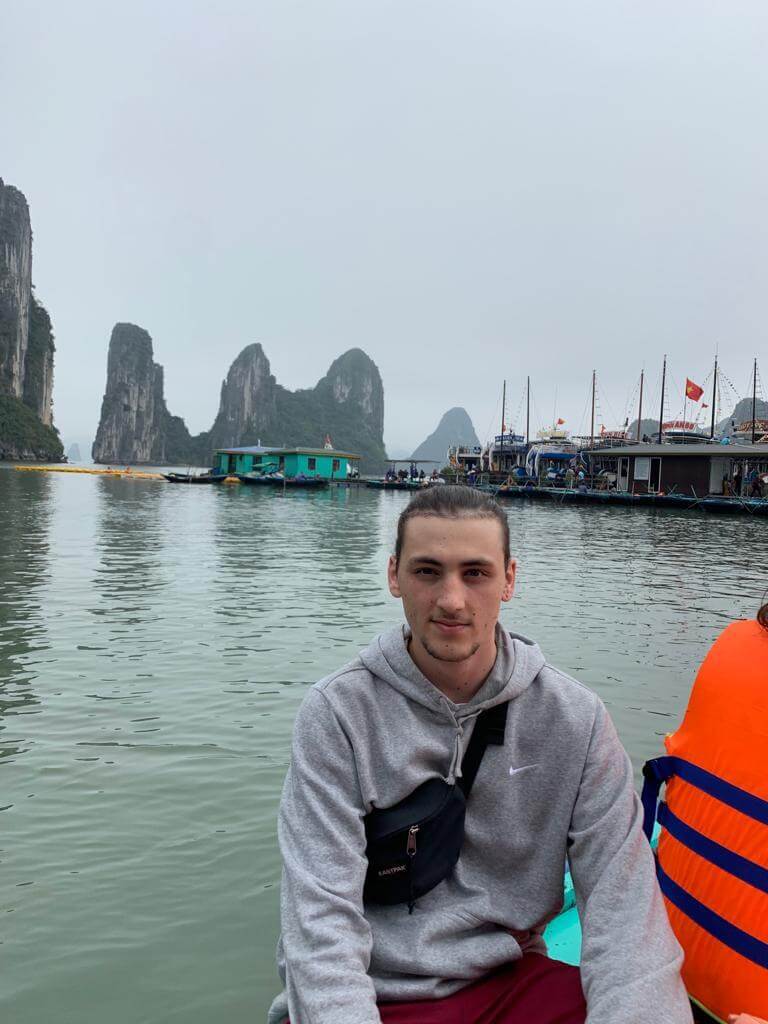
- Check out the best hostels in Hanoi to kickstart your adventure.
- Know where to stay in Ho Chi Minh City BEFORE you get there… trust me.
- Find out how to stay safe in Vietnam using our Vietnam safety guide.
- Use our packing list for Vietnam to make sure you bring all the right stuff with ya.
- Explore some of the best beaches in Vietnam to experience something a lil’ more chill.
- Let’s get you ready for your next adventure with our backpacking Laos guide .

Joe Middlehurst
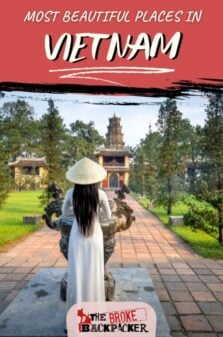
Share or save this post

Leave a Reply Cancel reply
Your email address will not be published. Required fields are marked *
Save my name, email, and website in this browser for the next time I comment.
Notify me of followup comments via e-mail.
Trending Destinations
Trending articles.

10 of the UK’s best stargazing escapes

10 of the best new wildlife trips for 2024

Where is Dune: Part Two filmed?
Destinations.
Sorry but no search results were found, please try again.
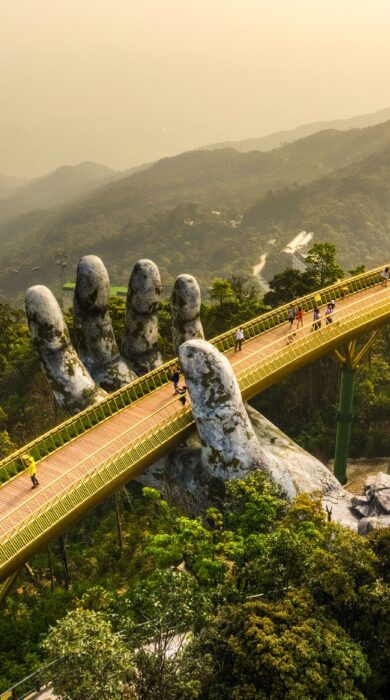
17 of the best things to do in Vietnam
Discover our pick of favourite things to do in the dazzling Halong Bay, vibrant cities Hoi An, Hue and Ho Chi Minh City, the rural north and beyond…
1. Light a lantern in Hoi An
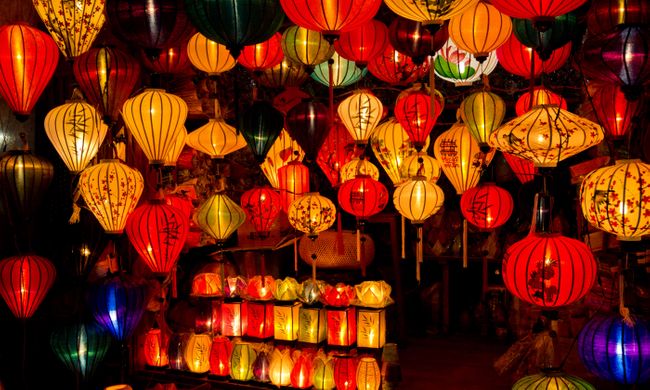
Lanterns in Hoi An (Dreamstime)
Every Tết (Vietnamese New Year), Hoi An is transformed into a kaleidoscope of colour and light for its Lantern Festival. The celebration lasts for seven days, with the road from Hoi An Bridge to the Hoai River Square adorned with thousands of colourful lanterns.
Over 50 workshops take part in the event, each trying to create the prettiest lantern. The colours are bright and the designs are strictly traditional.
The heart of the festivities is in the old town, between the Japanese Covered Bridge and the Cau An Hoi Bridge. It’s crowded, chaotic and festive, with spontaneous singing and food stalls at every turn. It is as much a celebration for locals as it is for visitors.
The most breathtaking sight is thousands of lanterns floating on the river; hire a sampan boat to get a closer look . For a small sum, you can buy a lantern and set it afloat too.
Don’t worry if you can’t make it to Hoi An for New Year: smaller lantern festivals are held every full moon.
Read next: Why Hoi An is the best city on Earth
2. visit halong bay and its equally spectacular neighbour.
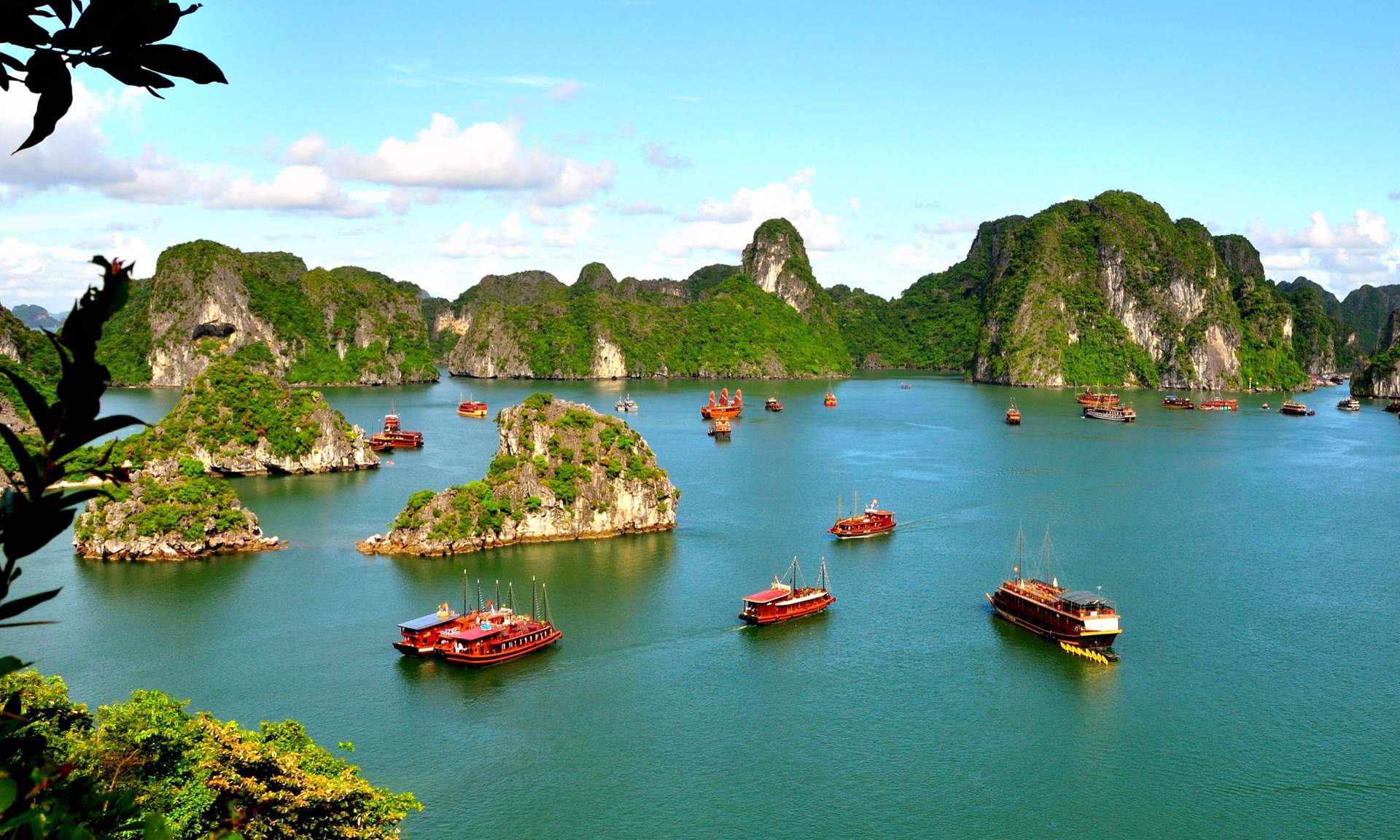
Halong Bay (Dreamstime)
With 1,600 limestone towers rising from its turquoise waters, Halong Bay is rightly considered one of Vietnam’s most beautiful spots. As a result, i t’s on every visitor’s list – and hundreds of boats offer cruise trips every day. The bay is huge, but it can still feel crowded.
Bai Tu Long Bay, just a few miles away, offers the same jaw-dropping scenery but sees only a fraction of the visitors. Here, you can explore uncrowded caves and tiny beaches, and feast on super-fresh succulent seafood.
Boat trips to Bai Tu Long Bay leave from the crowded dock at Halong City, just like the ones to Halong Bay . But you’ll head off in the opposite direction, to where the islands are a little less taller and a little more spread out – but, according to locals, are just like what those in Halong Bay used to be like.
Read next: Find out how to see Halong Bay without the crowds
3. hike through cat ba island.
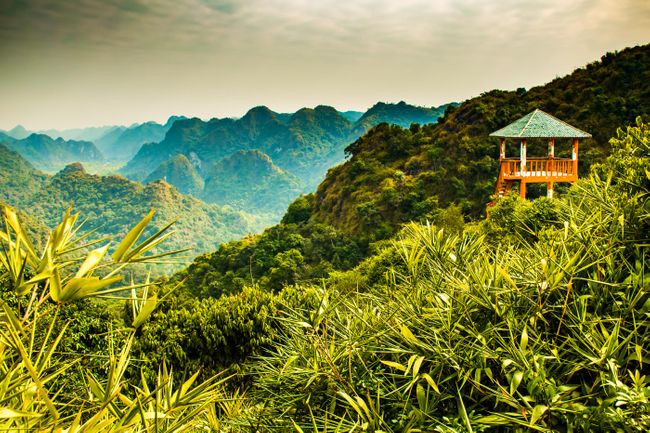
Ngu Lam Peak, the end point of a popular Cat Ba hiking trail (Shutterstock)
You can’t go wrong with a visit to Cat Ba Island. The views are spectacular, and the nearby Lan Ha Bay is a brilliant Halong alternative – another breathtakingly beautiful bay, without the tourist masses.
It’s USP? The hiking, says Wanderlust ‘s Rosie Fitzgerald . Enjoy trekking through the pristine rainforest that makes up the vast national park. The Lookout Tower Trail is a popular and fairly easy hike. Walk upwards for around an hour, until you come out at a rusted shelter, from where you can appreciate just how untouched Cat Ba really is.
If you want more, venture up a little further to reach the stunning Ngu Lam Peak. It’s worth the effort to look out over the jagged, green mountains that blur out into the distance.
For more of a challenge, book a guide and embark on the Cang Viet Hai Trail – an 18km, undulating trail that requires a good fitness level. Prepare to climb steep, slippery paths and scramble over thick knots of tree routes that block the path.
Read next: More amazing things to do on Cat Ba Island
4. cruise the mekong delta.
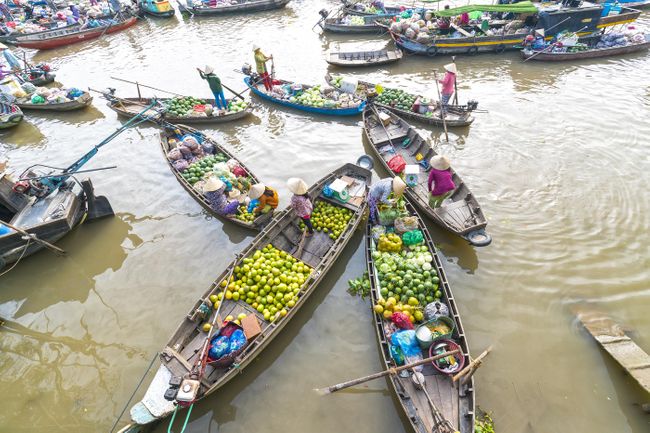
The Mekong River’s famous floating markets (Shutterstock)
After travelling over 4,000km from the Tibetan Himalaya, the Mekong hits Vietnam and slows down to a more languid pace. With islands, rice paddies, stilted villages and a way of life that hasn’t changed for centuries, it’s as if the river wants to take it easy and soak up the view.
Hitch a ride with a cargo boat and you can do exactly that. Simply find a shady spot to hitch your hammock and gaze at faraway riverbanks as your boat, weighed down with fruit and rice sacks, ploughs the treacly brown flow.
Or, take one of the many commercial cruises that ply parts of the river. The cruise from Cai Be to Can Tho is a great way to experience a night on the river. As you travel southwards along the Mang Thit River linking the Tien Giang and Bassac systems, the channel becomes so narrow that you can peer into the riverbank’s rickety stilted houses.
Read next: The best routes for your Mekong cruise
5. drop into the world’s largest cave in phong nha national park.
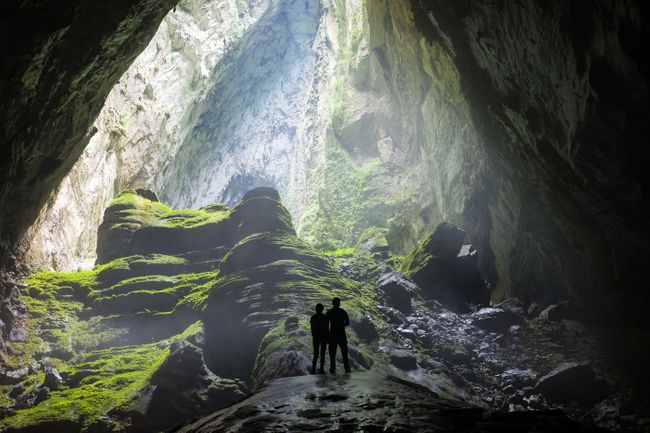
Hang Son Doong Cave (Shutterstock)
Quang Binh province is a wild region of barely penetrable jungle in Vietnam’s skinny middle, close to the border with Laos. The area is riddled with hundreds of deep caves, including one of the largest in the world – Hang Son Doong. It contains a cavern so tall that a skyscraper could fit inside it.
The small town of Phong Nha is the epicentre for the area’s caving adventures, its eponymous cave another UNESCO-listed wonder well worth exploring. Here, you can hire both the guides and the gear you’ll need to descend into the caves.
If going underground doesn’t appeal, the area is also famous for trekking. The surrounding jungle is peppered with stunning waterfalls and an active (and noisy) population of monkeys and flying foxes.
6. Visit the coffee-making heartland, Buon Ma Thuot
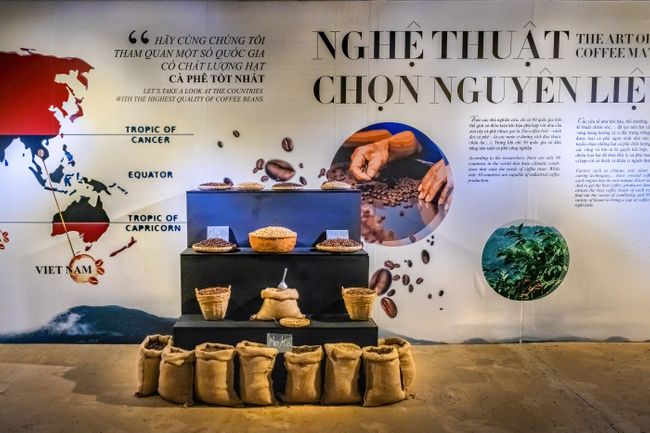
The World Coffee Museum in Buon Ma Thuot (Shutterstock)
Buon Ma Thuot is the regional capital of the central highlands of Vietnam, a gorgeous area of thundering waterfalls and the traditional villages of the local Ede people. Look out for stilted structures reached by a ladder and marked by carved breasts. In this fiercely matriarchal area, they can only be used by the women of the house.
Buon Ma Thuot is also the heart of Vietnam’s thriving coffee industry. The Trung Nguyen coffee company is the big player here, and there’s not a corner of paddy field or industrial zone in the area that doesn’t bear their logo.
In the city itself, there are plenty of coffee-related attractions. Visitors can learn about the country’s and the world’s coffee industries in the World Coffee Museum year-round. In March 2023, the city’s various coffee venues will be offering freebies to celebrate the local produce, during the biennial Coffee Festival.
You’ll probably come across ‘weasel’ coffee during your visit, also known as kopi luwak or civet coffee, which aficionados claim is the best in the world. While many believe its unique taste is excellent, it’s worth knowing that recent investigations have found unethical animal welfare practices on coffee farms across the region.
Top tip: “If you can’t visit the coffee heartland, be sure to taste a Vietnamese egg coffee while you’re in Hanoi,” says Wanderlust ‘s executive director Jackie Scully. “I loved the Note coffee house right by the main lake in the capital. Covered in uplifting post-its from travellers from across the world, it was more than just a caffeine boost.”
7. Search for Vietnam’s best pho in Hanoi
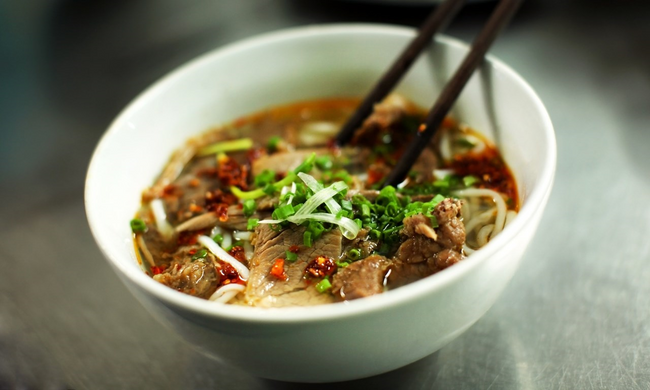
Vietnamese pho (Dreamstime)
Pho is a Vietnamese staple – a quick, tasty meal made from four simple ingredients: clear stock, boiled beef, rice noodles and herbs or green onions. In Vietnam, you’ll find it served on street corners and in upscale restaurants, as well as in every family home.
Hanoi has gained a reputation as the pho capital of Vietnam. Every restaurant here boasts a secret recipe. Take your time searching for the best – that’s part of the fun! But if you want our advice? Head to Lo Duc in the French Quarter and sit yourself down at Pho Thin.
This unassuming pho house, with wooden benches and laminated tables, does things a little differently – such as stir-frying the beef in garlic before adding it to the soup. Local foodies insist it gives the pho an unusual smokiness, one you won’t found in other restaurants. Pho Thin is always packed, but once you’re inside, you’ll know it was worth the wait.
8. Understand Vietnam’s bloody past in Ho Chi Minh City
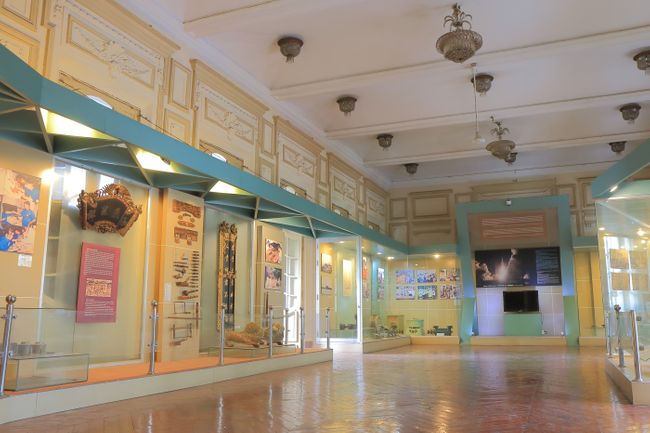
Ho Chi Minh City Museum, located in the Gia Long Palace (Shutterstock)
More than 60% of Vietnam’s population was born after the end of the Vietnam War in 1975. But that doesn’t mean its war-torn history is ignored. As a nation, Vietnam has moved on, but the sacrifices made by both sides of the conflict are still remembered all over the country, particularly in Ho Chi Minh City.
Ho Chi Minh City Museum has many informative exhibitions, and explains the country’s bloody past through photographs, artefacts and memorabilia. It’s sensitively done, without glossing over the atrocities, and (rather ironically) is housed in the Gia Long Palace, where Ngo Dinh Diem spent his final hours in power before his assassination in 1963.
The War Remnants Museum is a more grisly – but equally essential – reminder of local atrocities. From eerie bomb remnants and first-person accounts by war veterans to a bloodied guillotine and photographs of horrific napalm burns, this is a chilling reminder of life not-too-long ago.
9. Go to church, Vietnamese-style
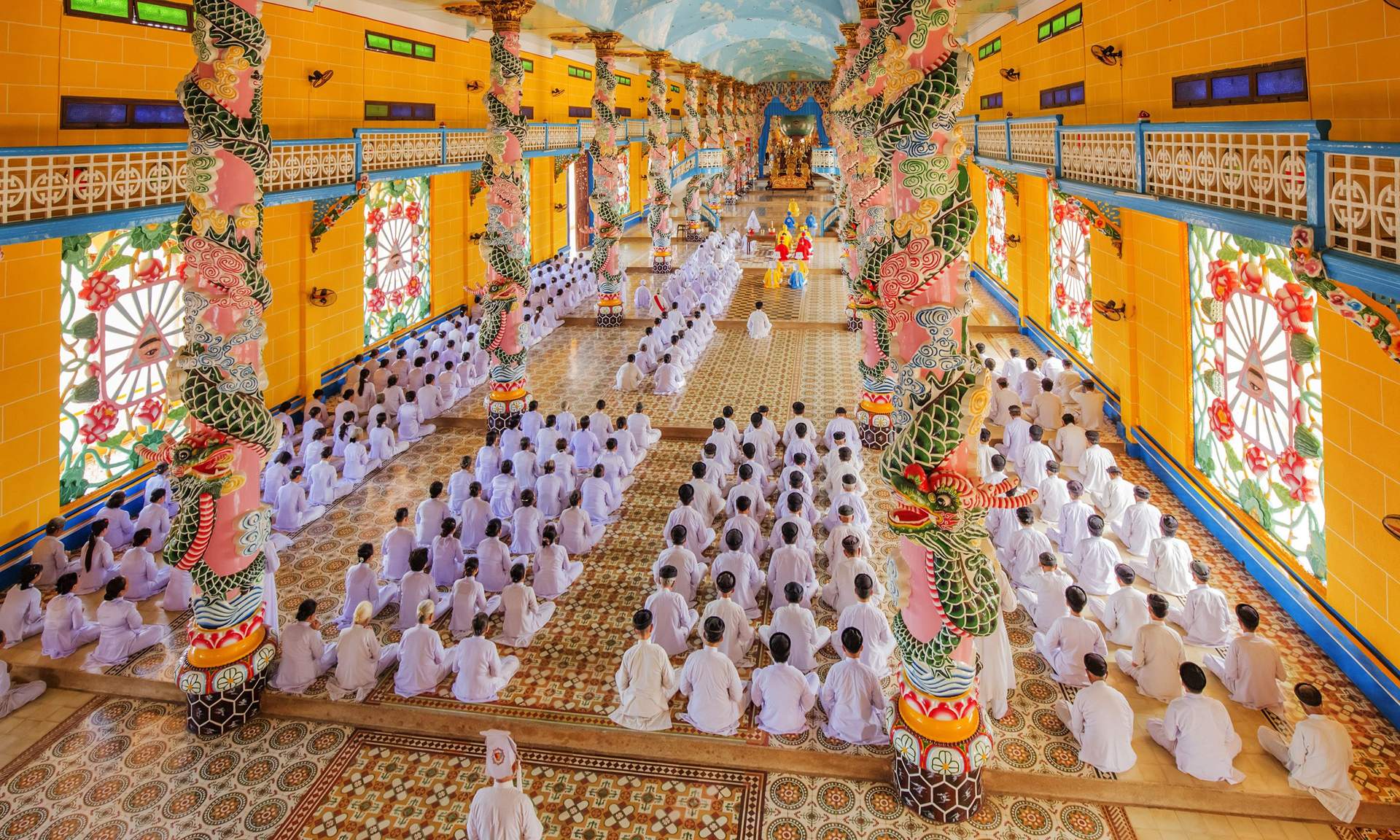
Worshippers inside Cao Dai temple (Shutterstock)
Tây Ninh, a busy town on the Mekong Delta, is perhaps the most unlikely holy city on the planet. Here, amongst the busy streets stalls and noisy traffic sits Cao Dai Temple, the Holy See of the Cao Dai religion.
Caodaism is a Vietnamese hybrid religion founded in the 1920s. It fuses Christianity, Buddhism, Taoism, occult and Islam with the ultimate aim to break free of the cycle of life and death. The sect reveres, among others: Jesus, Buddha, Mohammed and even French novelist Victor Hugo.
From a distance, the temple’s towers resemble a parochial church. But closer inspection reveals an eclectic facade with sword-brandishing gods, swastikas, a Communist red star and an Orwellian all-seeing eye.
Prayers are conducted four times a day, with the one at noon popular with day-trippers from Ho Chi Minh City.
Read next: Vietnam’s seven most beautiful temples
10. cycle around hue.
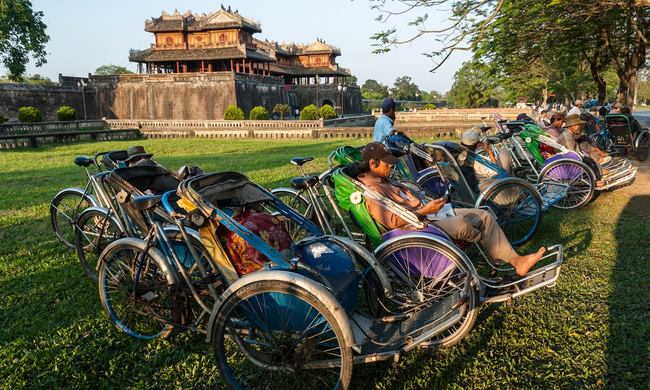
Cyclo drivers in Hue (Dreamstime)
Halfway between Hanoi and Ho Chi Minh City, Hue marked the divide between the north and the south during the Vietnam War. Set upon the pretty Perfume River, it has always played an important part in Vietnamese history and is dotted with important historical sites.
It is also a great place to cycle. Set off in the cool of the morning and head three kilometres out of town to the Tiger Fighting arena. It was Vietnam’s version of the Colosseum, a place where elephants and tigers would fight to honour the strength of the monarchy. Next, head to Tu Duc Tomb before reaching Vong Canh Hill – the best spot for panoramic views of the Perfume River.
From Vong Canh Hill, it’s downhill to one of Hue’s most atmospheric pagodas, Tu Hieu, which is located in a tranquil and picturesque pine forest. Swing by the tomb of Minh Mang, the second emperor of the Nguyen dynasty, before heading back to town.
Upon reaching the walled fortress of the Imperial Citadel, you have two choices: take a leisurely cycle through the UNESCO World Heritage Site and Vietnam’s version of the Forbidden City, or enjoy a relaxing drink next to the Perfume River.
Sound too much like hard work? You find any number of cyclo drivers nearby to do all the effort for you.
11. Find romance at Sapa’s love market
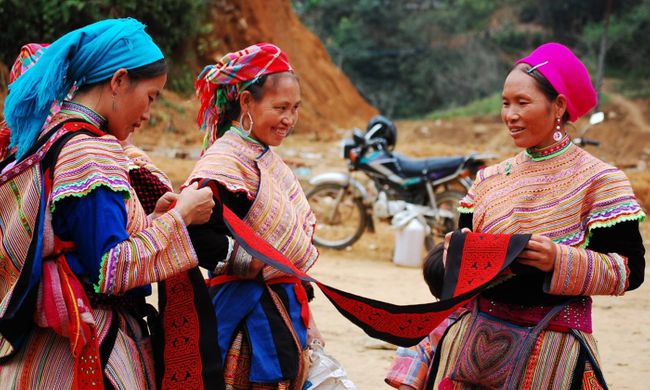
H’mong women at a market in Sapa (Dreamstime)
The market town of Sapa, in Vietnam’s mountainous north, first became popular as a French hill station in the 1930s. Set on a 1,650m-high mountain ridge, the town boasts fabulous views of the Hoang Lien Mountains and a colourful market attended by hill tribes from the surrounding countryside every Saturday.
The town has become increasingly popular with tourists, but there are still old traditions hidden in its secret corners. One of those is the Love Market, where Dao (and H’mong) men and women come from miles around to sing songs of love to each other. It was originally held at the end of trading at the Saturday markets, but over-zealous visitors taking intrusive photos has driven the tradition underground.
The Love Market still exists, but now it takes place in secret locations in the dead of night, well away from the gaze of visitors. But if your interest is genuine and you can find a local willing to trust you, the romance can still be found.
12. Sail past the Tam Coc rice fields
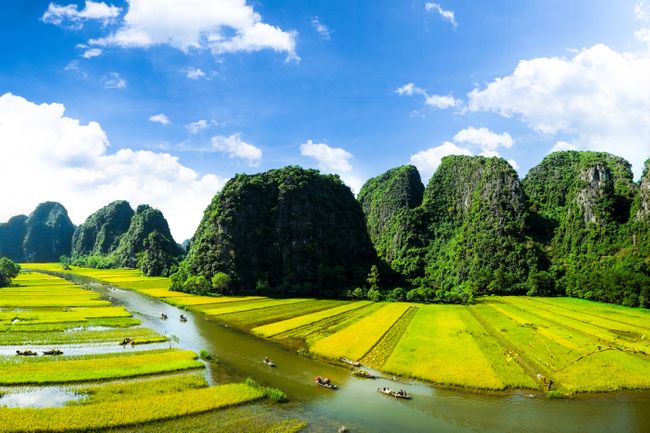
The Ngo Dong River and rice fields in Ninh Binh (Shutterstock)
In 2014, the Tràng An Scenic Landscape Complex in the northern Vietnam’s Ninh Binh province was inscribed as a UNESCO World Heritage Site. No wonder to anyone who has seen it with their own eyes: dramatic limestone karsts and sweeping, deep green valleys, often with boats floating along the Red River Delta.
The village of Tam Cốc-Bích Động (often referred to simple as ‘Tam Coc’) falls under this complex, and its famous rice paddies enjoy the same UNESCO-listed status. Undoubtedly, the best way to experience them to take a slow, languorous boat ride along the Ngo Dong River, admiring the otherworldly view as you go.
Getting to Tam Coc is easier than ever. Admittedly, the area has become more popular with visitors in recent years – for good reason. Buses and trains from Hanoi to Ninh Binh take about three hours, while organised day tours and two-day trips are available, if you’d prefer to take the pressure off planning your excursion.
However you get there, you’ll want to spend at least a day here, if not longer, advises Wanderlust ‘s Jackie Scully. “Head to Hang Múa while you’re in the Ninh Binh province and you’ll be rewarded for climbing the 486 stone steps with an amazing viewpoint. Go early to avoid the heat.”
13. Spot rare primates in Cat Tien National Park

Primates hanging out in Cat Tien National Park, Vietnam (Shutterstock)
Cat Tien National Park in southern Vietnam is a wildlife lover’s dream: a 720 sq km biosphere reserve, comprised of botanical gardens and lowland forest, offering an abundance of rare creatures and birdlife, all kept safe and sheltered in a number of sanctuaries and rescue centres.
Golden-cheeked gibbons, silvered langurs and native pygmy lorsies are among the rare primates to be spotted in Dao Tien Endangered Primate Species Centre. Cat Tien Bear Sanctuary homes tens of sun bears.
Asian elephants and clouded leopards are also among the rare sightings wildlife watchers have recorded in Cat Tien. Birders will have their hands full, too, with Asian barred owlet, blue-rumped and bar-bellied pittas, and orange-necked partridge sightings – just to name a few – very possible.
Some of the park’s animal residents come alive when the sky goes dark, so if you’re hoping for a unique wildlife encounter in Vietnam, consider staying the night in one of Cat Tien’s homestays or hotel accommodation, and embark on a nighttime drive.
An added bonus? Those on a day trip will be zipping back to Ho Chi Minh City by then, which is approximately three hours and 30 minutes away by car, so you’ll have more of the park to yourself.
14. Marvel at Ban Gioc Waterfall
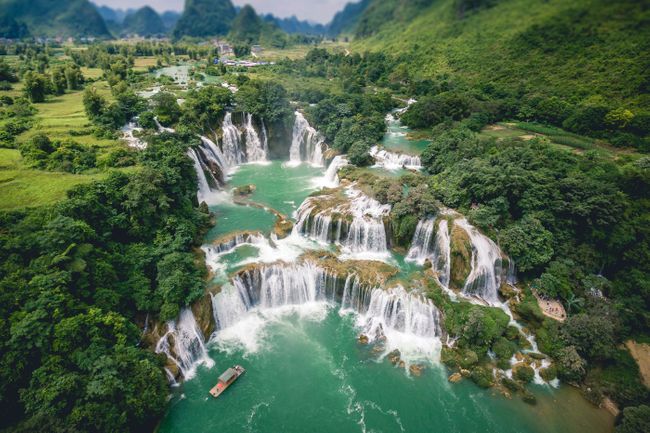
The magnificent Ban Gioc Waterfall (Shutterstock)
Ban Gioc is the name of not one, but two colliding waterfalls along the Quay Son River – an iconic way to mark the Vietnam-China border, in the Trung Khanh District, Cao Bang on Vietnam’s side, and Daxin County, Guangxi on China’s.
Here, you’ll be taking in one of South-East Asia’s most breathtaking natural sights. Its sheer size (70m tall, and 208m wide) is marvel-worthy in itself, but the way the falls cascade down its rocky, limestone face is most eyecatching. If you’re up for a climb, it is possible to trek up to the ‘falls high points, as long as you’re equipped with the appropriate walking gear.
Once you’ve soaked up the immense views, there’s plenty to see and do in the Cao Bang region, which sits high up in the mountainous north-east of the country. Caves to explore, local homestays to experience, and more majestic waterfalls beckon.
15. Admire the Golden Hands Bridge in Da Nang
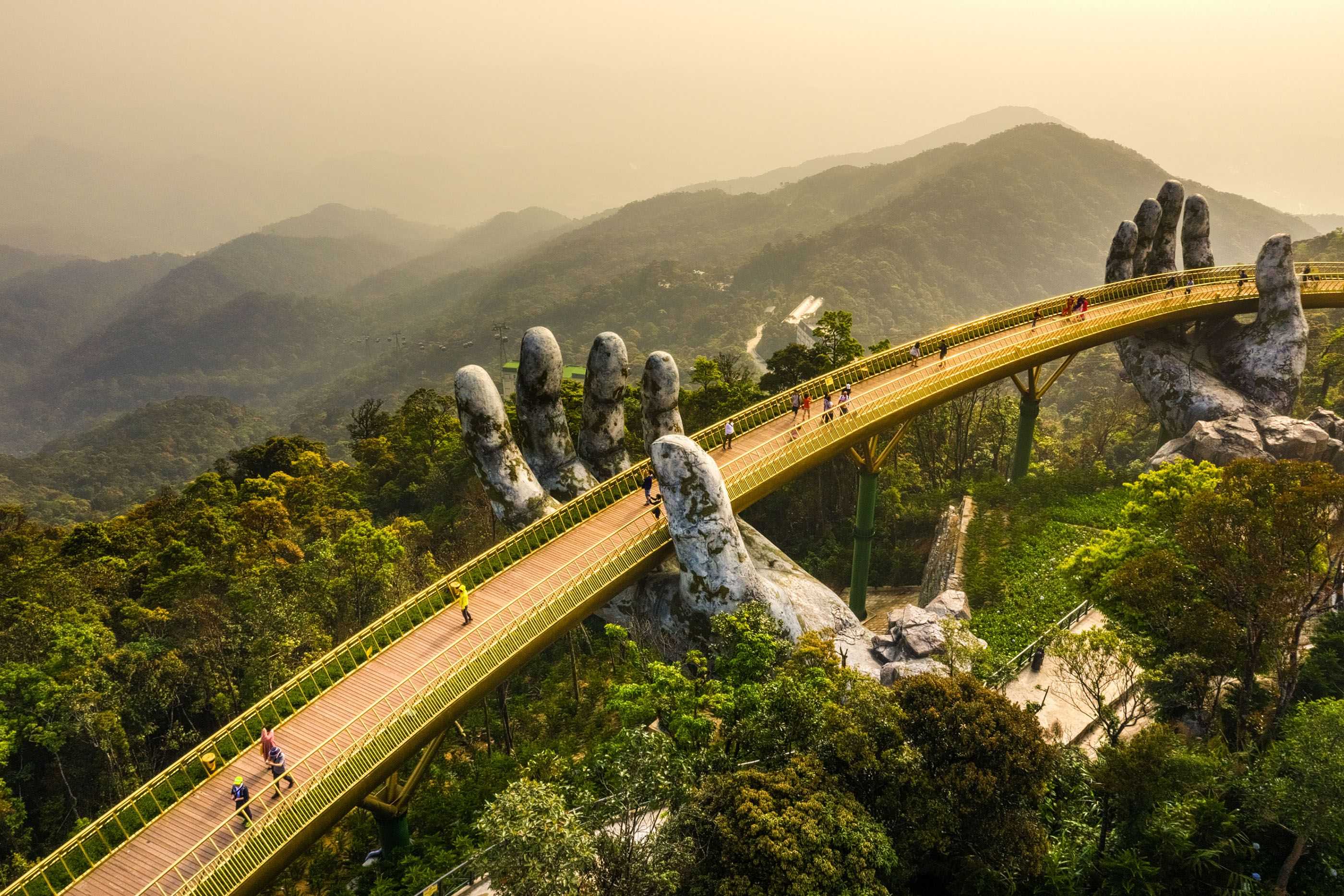
The Golden Hands Bridge in the Ba Na Hills, Da Nang (Shutterstock)
Have you ever seen a bridge quite like this one? The Golden Bridge (or Golden Hands Bridge, or Giant Hands Bridge) in the Da Nang province is one of a kind.
Pedestrians can stroll across the 150m-long pathway, high above the gorgeous greenery of the seemingly-endless Ba Na Hills, and feel like they’re being held in the sky by two humongous, God-like stone hands. As it happens, the stone hands are not held up by God himself, but by a sturdy st eel frame and fibreglass.
The reality-warping structure was created to attract more visitors to the Da Nang region, and surely no-one can refute its social media success. There are well over 124,000 images of the bridge on the #GoldenBridge hashtag alone.
If you went to Vietnam and you didn’t post a picture of the Golden Hands Bridge on your Instagram page, did your trip even happen at all?!
16. Embrace tranquility on Phu Quoc Island
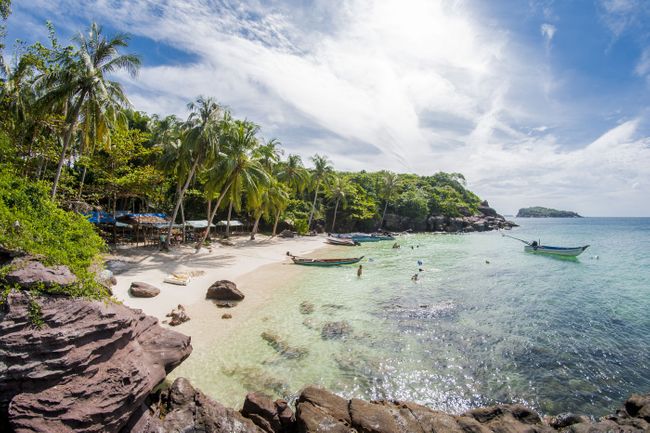
A peaceful beach on Phu Quoc Island (Shutterstock)
Off the coast of Cambodia lies the idyllic Vietnamese island of Phu Quoc: a haven for travellers hoping to get away from the hustle and bustle of Vietnam’s cities.
There’s no shortage of things to see and do on Phu Quoc. Wildlife lovers can head to Vinpearl Safari Care and Conservation Park, to meet, elephants, white Bengal tigers, macaques and silver langurs, among others. Head out into nature, with a hike through the dense forests of Phu Quoc National Park, and admiring the gentle trickle of Suoi Tranh Waterfall.
Once you’re all walked out, ride in the incredibly long cable car to Hon Thom Nature Park, or sit back and relax on the pristine white sands of Sao Beach, Ong Lang or remote Khem Beach. Surrounded by palm trees and forest, you’ll feel like you’re sitting on the edge of paradise.
17. Live with the locals in Mai Chau
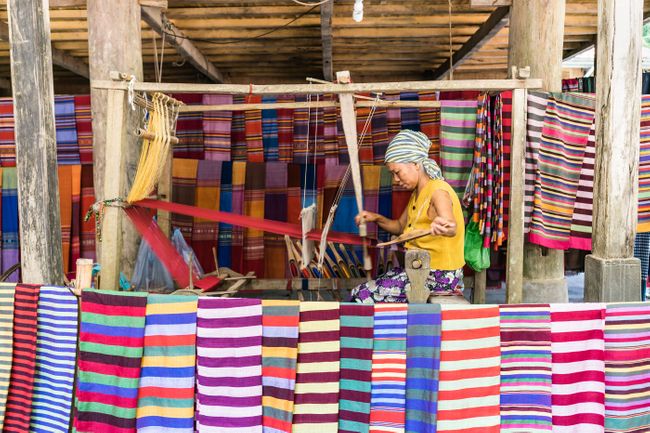
A local in the Mai Chau Valley village of Lac (Shutterstock)
Go beyond the tourist trail to the rural north-western province of Hòa Bình. Here, you’ll have the opportunity to explore the Mai Chau Valley, enclosed in mountains and skirted by rice fields. A ‘hidden gem’, if we ever saw one.
To get a small sense of everyday life in this part of the country, stay with a local, White Tai family in a homestay. Your best bet is one of two villages: Lac or Poom Coong. Whichever you choose, you’ll be waking up to the site of rice paddies and the unbelievably-green Vietnamese countryside each morning. The Vietnamese Tourist Board highly recommends choosing your homestay near Hieu, for its idyllic scenery.
Once you’re settled, it’s time to appreciate the White Tai community’s way of life. Cycle through Mai Chau on a rented bike, or pop to the markets to purchase exquisitely-bright, locally-woven textiles. If you can take your eyes off your village’s natural wonders, a day trip to the glistening, under-appreciated Hoa Binh Lake makes for an excellent trek.
You may also like:
- Alternative Places to Visit in Vietnam
- 10 of the best things to do in Thailand
- The best things to do in Cambodia
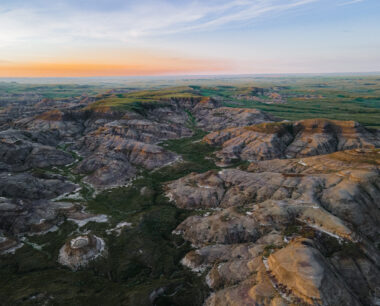
Uncover wild Saskatchewan’s culture, nature and cuisine

Travel Green List 2024: Sustainable travel destinations in North America & The Caribbean

The ultimate wildlife guide to Australia
Explore more.
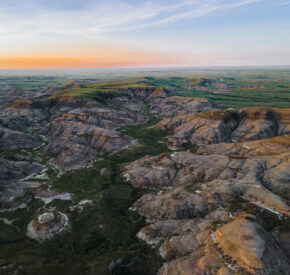
Sign up to our newsletter for free with the Wanderlust Club, full of travel inspiration, quizzes, events and more

Vietnam Travel Guide
Last Updated: April 29, 2024
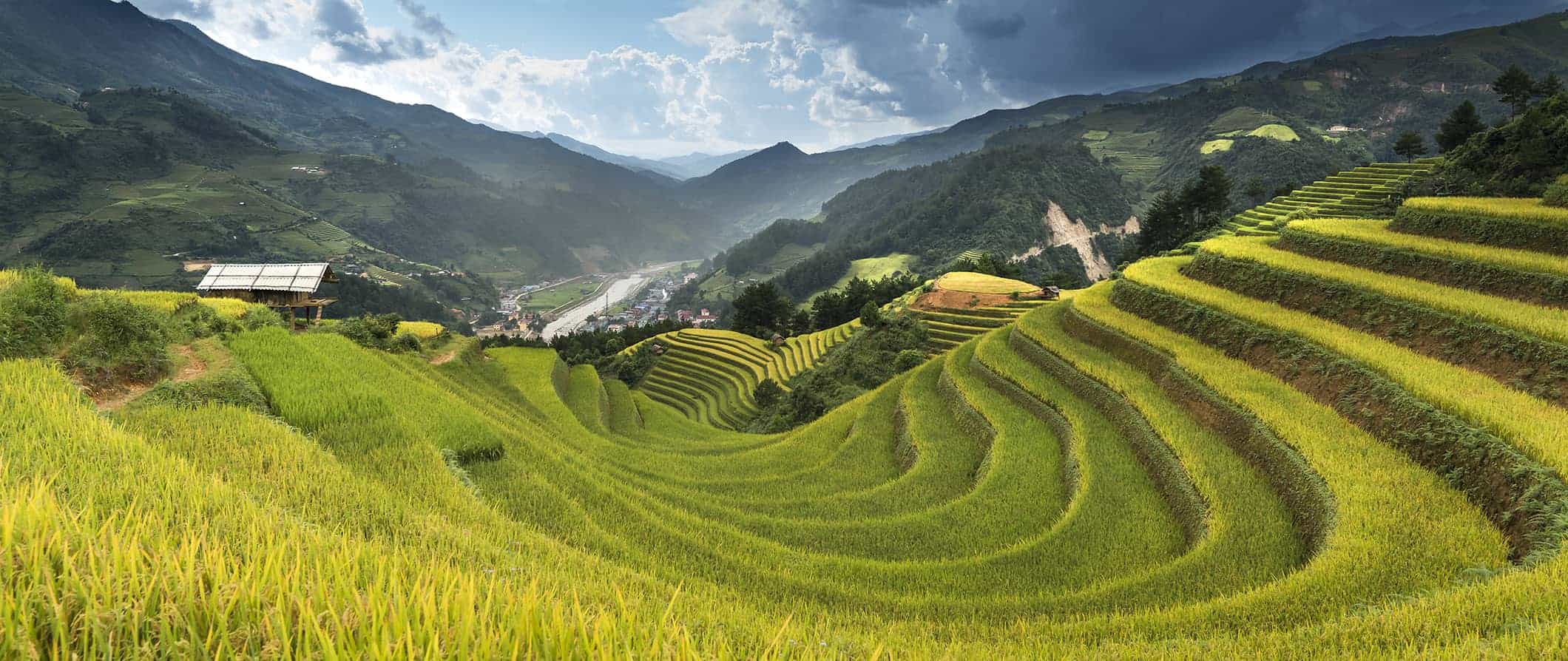
Most people either love or hate traveling in Vietnam. When I first went, there was a negative attitude towards foreign travelers (for good reason), lots of scams, and just not a lot of good vibes. But, since that trip many years ago, the country has changed a lot: it’s embraced tourism, people have opened up more, there’s fewer scams, and Ho Chi Minh City has even become a hub for digital nomads.
From exploring the Old Quarter of Hanoi to the delicious food and fancy garments of Hoi An , Vietnam has a lot to see and do so take your time. Don’t rush your trip.
This budget travel guide to Vietnam can help you plan your trip and ensure you make the most of your visit.
Table of Contents
- Things to See and Do
- Typical Costs
- Suggested Budget
- Money-Saving Tips
- Where to Stay
- How to Get Around
- How to Stay Safe
- Best Places to Book Your Trip
- Related Blogs on Vietnam
Click Here for City Guides
Top 5 things to see and do in vietnam.
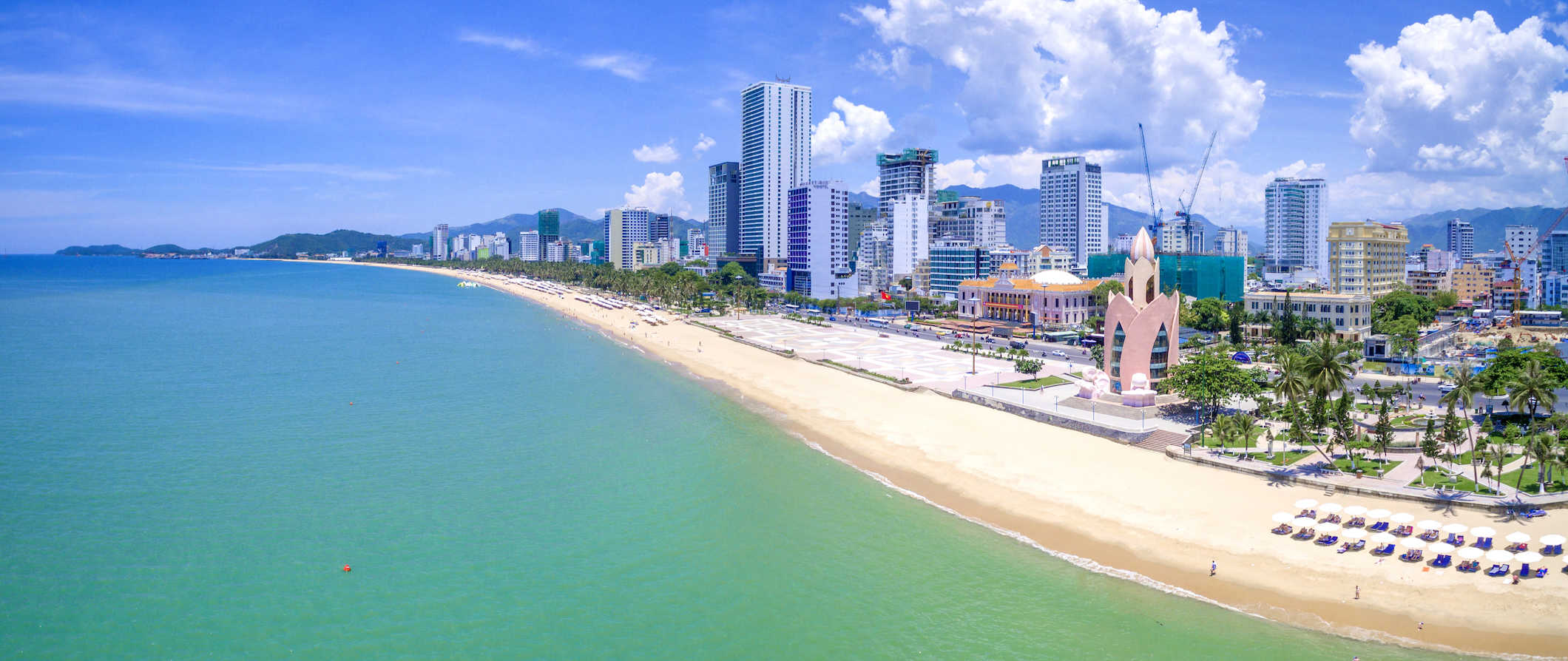
1. Tour the Mekong Delta
The delta is a 60,000-kilometer (37,000-mile) long web of interconnected waterways, which spans three Vietnamese provinces and has been used since the 4th century BCE. What I love about this area is it’s filled with small villages, pagodas, mangroves, and orchards. The best way to experience the area is to go on a boat or bike tour, where you’ll experience rural Vietnamese culture. Some of favorite things include the Cai Rang floating market for the colorful fruits and veggies and vibrant atmosphere; Vinh Trang Pagoda for its impressive golden exterior and lush gardens; and the incredible Sadec Flower Village that is stunning and serene, even if you’re not a flower enthusiast. Spend a few days really getting to know the region outside the hustle and bustle of the cities. Day trips on the river start at around 575,000 VND per person.
2. Wander Hanoi
Vietnam’s capital dates to the 3rd century BCE when it was the capital of the ancient nation of Au Lac. I love to wander around the narrow streets of the Old Quarter. It’s a great place to get a feel for the city as there are tons of vendors, smells of street food, people watching, and bustle. Some of my favorite places to visit include the One-Pillar Pagoda, the Imperial Citadel of Thang Long, and the Hanoi Water Puppet Theater. Be sure to check out the history museum to learn about French colonialism and Communist rule (from the Vietnamese perspective) as well as the Ho Chi Minh Mausoleum. Hanoi is also a good base for doing multi-day tours to Ha Long Bay.
3. Explore Ha Long Bay
This iconic region is home to more than 3,000 islands and is one of the country’s most popular tourist destinations. The towering limestone islands are covered in lush jungles and surrounded by calm emerald waters. A UNESCO World Heritage Site, it’s located 2-3 hours from Hanoi and travelers can take multi-day boat cruises around the islands (most are 2-5 days). During the cruise, you’ll visit floating markets, incredible beaches, massive caves, and either sleep onboard your boat or on one of the many islands. Just keep in mind that this area is super popular and is often overcrowded. Cheap tours start around 1,200,000 VND while a mid-range tour costs around 3,000,000-4,500,000 VND. Just remember that you get what you pay for and the cheaper boats might be a bit run down.
4. Hang out in Hoi An
Hoi An was a thriving port city between the 15th and 19th centuries and the architecture is incredibly well preserved (the entire Old Town is a UNESCO World Heritage Site). It was easily my favorite place in Vietnam because I loved walking around, taking a thrilling sidecar trip in the countryside, and of course, Vietnamese cooking classes, which are great because you learn to prepare fresh fish caught right there. This place is famous for its tailors so if you’re looking to buy some custom made clothes at an inexpensive price, this is the spot to do it in. They will even ship it back to your home country.
5. Get adventurous in Sapa
This is northern Vietnam’s premier trekking area and it’s hugely popular with all sorts of travelers. Sapa is famous for its hill tribes, lush vegetation, beautiful hiking trails, and breathtaking mountains. If you’re looking to experience the scenery and outdoor recreation opportunities Vietnam has to offer, this is the place. This area is rich in culture because it is comprised of 85% ethnic Vietnamese minority groups that have different colorful traditional dress and unique styles of houses. To avoid the tourists, come during the off-season or take longer hikes to parts the crowds don’t go to.

Other Things to See and Do
1. take a free walking tour.
The first thing I do when I visit a new destination is take a free walking tour. It’s the best way to get the lay of the land, see the main sights, and connect with a local guide who can answer all my questions. Both Hanoi and HCMH (the two largest and most popular cities in the country) have a few free tours available that cover the main highlights and are a great primer to the country (Hanoi Free Walking Tours and Saigon Free Day Tours are two companies worth checking out). Just remember to tip your guide at the end!
2. Crawl through the Cu Chi Tunnels
This extensive network of tunnels spans nearly 310 miles (500 kilometers). It was utilized by the Viet Cong during the Vietnam War. Tours involve a description of the tunnels, after which tourists are allowed to crawl about the maze and fire AK47s at shooting targets. It’s a sobering experience and not one meant for anyone claustrophobic. However, if you want to better understand the terror of the Vietnam War, this is a must-visit. Admission is around 100,000 VND per person.
3. Relax or find adventure in Dalat
Dalat is nestled in the hills of the Central Highlands and is popular with tourists who want to relax in the mountain air and those who want to participate in a host of adventure sports (such as rock climbing, ziplining, and rappelling). The hills around Dalat are filled with traditional tribal villages, which you can tour as well. Expect to pay around 2,000,000 VND per person for a full day of ziplining and rappelling around waterfalls.
4. Visit Cuc Phuong National Park
South of Hanoi lies Vietnam’s first National Park, Cuc Phuong. Covering 222 square kilometers (85 square miles), this place is home to over 2,000 species of trees and some truly rare wildlife including the Clouded Leopard, Delacour’s Langur and Owston’s Civet. It was my favorite park in all of Vietnam and the only place I didn’t find hordes of tourists. The entrance fee is 50,000 VND.
5. Explore Ho Chi Minh City
Also known as Saigon, Ho Chi Minh City is Vietnam’s largest city and is definitely worth exploring. Ho Chi Minh is the place to really gain an understanding of French colonialism as well as the US headquarters there during the Vietnam War, which you can learn more about at the War Remnants Museum. Like most cities in Vietnam, you’ll be met with the roar of motorbikes speeding through colonial streets. I loved Ben Thanh Market, which is a must-see for amazing food and there is a great buzz of activity within the place. Don’t miss your chance to get the best Pho soup in Ho Chi Minh, that means some of the best is right on the side of the street.
6. Get active in Mui Ne
Despite being a fishing village, Mui Ne has a significant tourism scene due to its popularity as a wind- and kite-surfing destination. The best highlight for me aside from the beach was riding on the rolling sand dunes similar in size to the Saharan ones and also the Jeep Tour to the Fairy Stream through a canyon, which is not something you get to do very often! Also, don’t miss the 9th-century Po Shanu Cham Towers with beautiful views of the Phan Thiet coastal town. Mui Ne is definitely worth checking out for a day or two when you’re passing by on the bus because it has a nice chill vibe to it, friendly people, and beautiful sunsets.
7. See My Son
My Son is a set of Hindu ruins in Vietnam that date back to the Cham Empire. The Champas ruled over Central Vietnam from the 3rd to the 19th century. The temples here are of incredible historical importance, but they have been largely reclaimed by the surrounding jungle, and have fallen into a great state of disrepair. Don’t come here expecting something as marvelously preserved as Borobudur or Angkor Wat. The entrance fee is 150,000 VND.
8. Visit the caves in Phong Nha-Ke Bang
Hang Son Doong is reputed to be the world’s largest cave and is located in Phong Nha-Ke Bang National Park. It was discovered by a local in 1990, and “rediscovered” by a British caving team in 2009. You can arrange trips to see this stunning cave in all its glory with stalactites and stalagmites, an inner cave forest, and even cave pearls. You’ll be blown away by its beauty. Entrance to the caves is around 150,000 VND per person.
9. Check out the rice terraces
Outside of connections to the Vietnam War, the stereotypical image of Vietnam is of the many rice paddies. You can find these in the Muong Hoa Valley. If you’ve never visited rice terraces, you should make a point to see them in Vietnam. Visit them to learn about rice production and take stunning photographs of the unbelievable Vietnamese countryside. Expect tours to cost around 600,000 VND per person.
10. Relax in Hue
Hue is generally passed by, making it a bit of a quieter stop along the tourist trail. Stroll along the beautiful Perfume River and into the Imperial Citadel. Don’t miss the Tu Hieu Pagoda and the Tombs of the Emperors, which mostly date from the 19th and 20th centuries. Some of the main tombs to see are the Tomb of Minh Mang, the Tomb of Tu Duc, and the Tomb of Khai Dinh.
11. Take a cooking class
Vietnamese food is delicious and the best way to learn about these incredible dishes is to take a cooking class. You’ll not only learn how to make some of these tasty meals but you’ll get to interact with a local chef who can teach you about their history and cultural significance. Many cooking classes also include a visit to the local market where you’ll shop for ingredients. Prices vary but expect to pay at least 800,000 VND per person.
12. Tour the former DMZ
The Vietnamese Demilitarized zone was the dividing line between the Communist north and anti-Communist south during the Vietnam War. It was in use from 1954 to 1976. These days, you can take a tour of the DMZ from Hue and learn about the conflict from expert guides who were actually involved in the war (or survived it as civilians). You’ll see secret tunnels, learn about military surveillance, and get insight about the conflict from a perspective not often shown in the media. Full-day tours from Hue start around 2,500,000 VND.
13. Buy a motorbike
If you’re an adventurous traveler, buy a motorbike and drive the length of the country. This is considered the best way to travel Vietnam by veteran backpackers who like to get off the beaten path. You can buy bikes in Hanoi or HCMC at either end of the country and then make your way to the opposite end, stopping along the way over the course of a few weeks. While it’s not for everyone, this mode of travel offers the most freedom as you’ll be able to visit a lot of places that the buses and trains don’t stop at. You can buy a bike for as little as 4,800,000 VND, and then you can sell it once your trip is done to recoup some of the cost. There are always backpackers looking to buy a bike in HCMC and Hanoi.
14. Sample the local coffee
Vietnam is the world’s second-largest coffee producer (after Brazil) exporting a whopping 1.5 million tons of it per year (after rice, it’s their biggest export). Even if you don’t drink coffee (I don’t), trying fresh coffee here is a must. Whether you just hop arounds cafes, do a tasting experience in Hanoi of HCMC, or head out to one of the many coffee plantations, learning about this vital crop (and also sampling it fresh) is an experience not to be missed. Expect a half-day plantation tour (with lots of samples) to cost around 700,000 VND.
For more information on specific cities in Vietnam, check out the following guides:
- Hanoi Travel Guide
- Ho Chi Minh City Travel Guide
- Hoi An Travel Guide
- Nha Trang Travel Guide
Vietnam Travel Costs
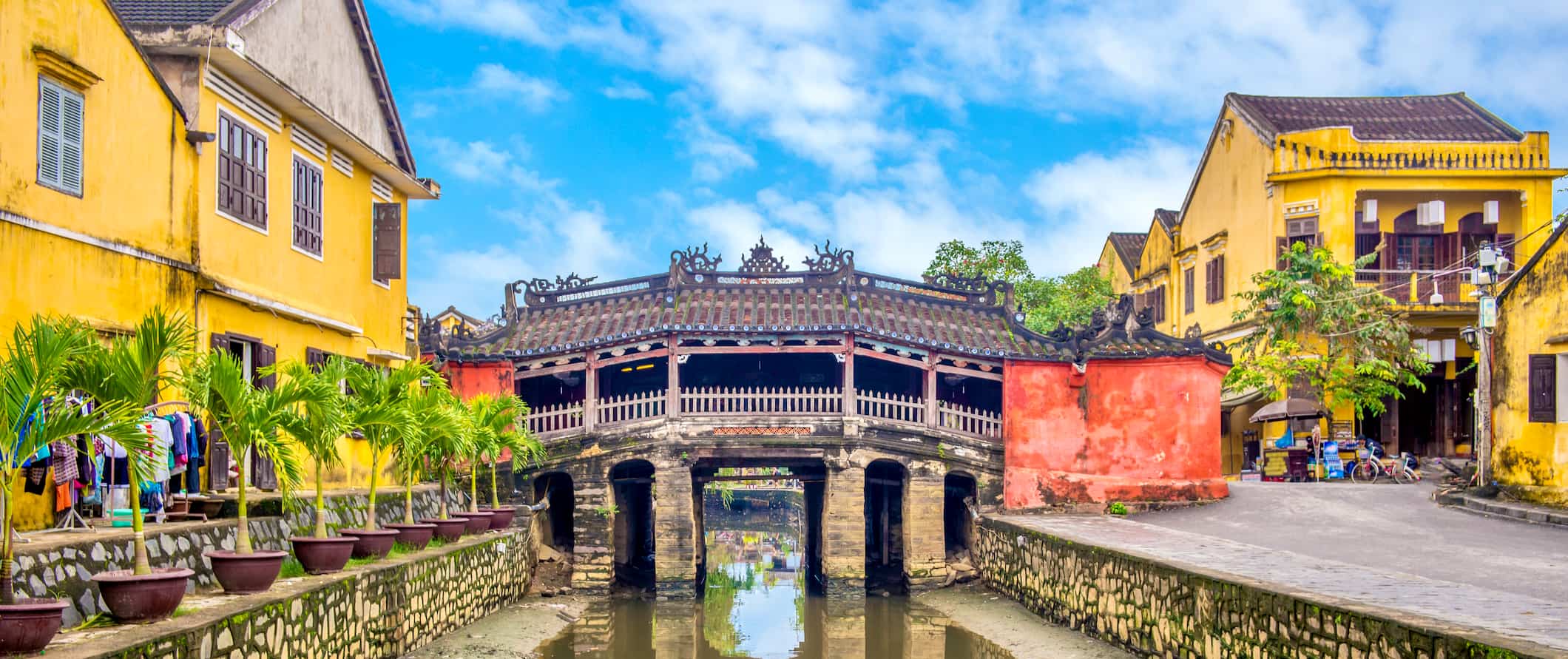
Accommodation – Hostels start at around 100,000 VND per night for a dorm room. These can be a bit rustic and no-frills. For a hostel with more amenities, such as free breakfast or a a free happy hour (as well as improved cleanliness), expect to pay double. Private rooms cost at least 350,890-425,000 VND per night for a double room. Most hostels include free Wi-Fi, and many also include free breakfast or free beer during certain hours of the day. Self-catering facilities are not very common since eating out is so cheap.
For those traveling with a tent, wild camping is not legal in Vietnam. While it is still possible to do as enforcement is sparse (especially if you’re sleeping in a hammock), I also wouldn’t recommend it. Insects and animals can be an issue, there are lots of landmines still undiscovered out in the brush, and robbery can occur. Stay safe and stick to hostels.
For a budget hotel with a double bed, expect to pay around 225,000 VND per night. This usually includes free Wi-Fi and free breakfast.
On Airbnb, a private room costs at least 325,000 VND per night. For an entire home or apartment, prices begin around 600,000 VND. Prices double when not booked in advance so plan accordingly
Food – Vietnamese cuisine is fresh, flavorful, and uses a lot of herbs and vegetables. Rice and noodle dishes are common as are various soups such as the iconic pho (a beef noodle soup). Wonton soup, meat curry, fresh French bread (known as bahn me , and grilled fish are just some of the popular dishes you’ll encounter. Standard ingredients include fish sauce, lemongrass, chili, lime, Thai basil, and mint.
You can get a bowl of pho or a rice dish for 20,000 VND. Street food is the cheapest and the most delicious food option in the country.
Most sit-down restaurants are also inexpensive at around 45,000-95,000 VND. The fancier (and more touristy) the restaurant, the more expensive.
Western food is also more expensive, usually around 110,000 VND for a fast food meal, so skip it if you’re on a budget.
If you want to splash out on a fancy three-course meal, expect to spend around 250,000 VND.
A liter of water at a convenience store is about 15,000 VND, while beer or soda is about 20,000-35,000 VND.
For those looking to cook their own meals, expect to pay at least 400,000 VND per week for basic groceries. Be sure to shop at the local markets to get the cheapest and freshest food. That being said, food is so cheap in the country that it’s simply easier – and cheaper – to just eat street food, especially as most hostels and hotels don’t have shared kitchens.
Backpacking Vietnam Suggested Budgets
On a backpacker budget, you can visit Vietnam for 600,000 VND per day. This budget covers a stay in a large hostel dorm, eating street food for all of your meals, limiting your drinking, taking the bus, and doing free activities in each destination. If you plan on drinking, add another 20,000-40,000 VND to your daily budget.
A mid-range budget of about 1,125,000 VND per day covers staying in a cheap hotel, eating street food and at the occasional sit-down restaurant, enjoying a few more drinks, taking the occasional taxi to get around, and doing more paid activities such as museum visits and water upper shows.
On an upscale budget of 2,460,000 VND, you can stay in a nice hotel, eat out for all your meals anywhere you want, enjoy lots of drinks, and more taxis, and do whatever tours and activities you want, including a multi-day trip to Ha Long Bay. This is just the ground floor for luxury though. The sky is the limit!
Vietnam Travel Guide: Money-Saving Tips
Vietnam is a very affordable country. In fact, it’s one of the cheapest in Southeast Asia. Even with the explosion of tourism in the last few years, it still remains very affordable. You’ll be hard pressed to spend money if you’re sticking to non-Western food, cocktails, and hotels. However, if you’re looking to travel even cheaper and save some money, here are some tips:
- Eat delicious street food – The street food here is excellent and cheap, and you can watch it being cooked in front of you. Stick to the local food and you’ll save money. The street-side pho, bread, sandwiches, donuts, and bananas are your best deals.
- Late-night travel – If traveling on long journeys, try to take the late-night “sleeper” buses or trains as these will save you the cost of a night’s accommodation. Depending on the company, you may even have a chance to comfortably lie flat as you ride through the dark countryside to your next destination.
- Take the tourist bus – It is actually cheaper to take the tourist bus around the country than taking local transportation because of the “tourist” price you get at the bus station. Tickets from one end of the country to another are very affordable.
- Fly for cheap – Vietnam’s low-cost airlines VietJet and FlyVietnam are extremely inexpensive. This is a great option for people with limited time to explore different regions of Vietnam. Both airlines frequently offer special deals and at the time of writing this, Hanoi to Da Nang is just 820,000 VND!
- Bargain hard – Tourists tend to be charged more than locals for everything from cyclos (a three-wheel bicycle taxi) to clothes to street food. Bargain harder than you would ordinarily, and don’t underestimate the value of walking away.
- Avoid paying tourist prices – Before you leave the hostel, ask them to estimate how much what you want to do should cost. How much should a ride to the museum cost? How much should I pay to have a gown like this made? They will be able to give you bargaining guidelines.
- Bring a reusable water bottle – The tap water in Hanoi is not safe to drink. To save money and reduce your plastic use, bring a reusable water bottle with you. LifeStraw make a reusable bottle with a built-in filter so you can be sure your water is always safe and clean.
Where to Stay in Vietnam
To help you save money on accommodation, here’s a list of my recommended hostels and budget hotels in Vietnam:
- Mad Monkey (Hoi An)
- Hoi An Golden Holiday Hotel (Hoi An)
- Little Hanoi Hostel (Hanoi)
- San Palace Hotel & Spa (Hanoi)
- Hanoi House Hostel & Travel (Hanoi)
- Ccasa Hostel & Coffee Bar (Nha Trang)
- The Hideout (HCMC)
- Orchid’s Saigon Hotel (HCMC)
How to Get Around Vietnam
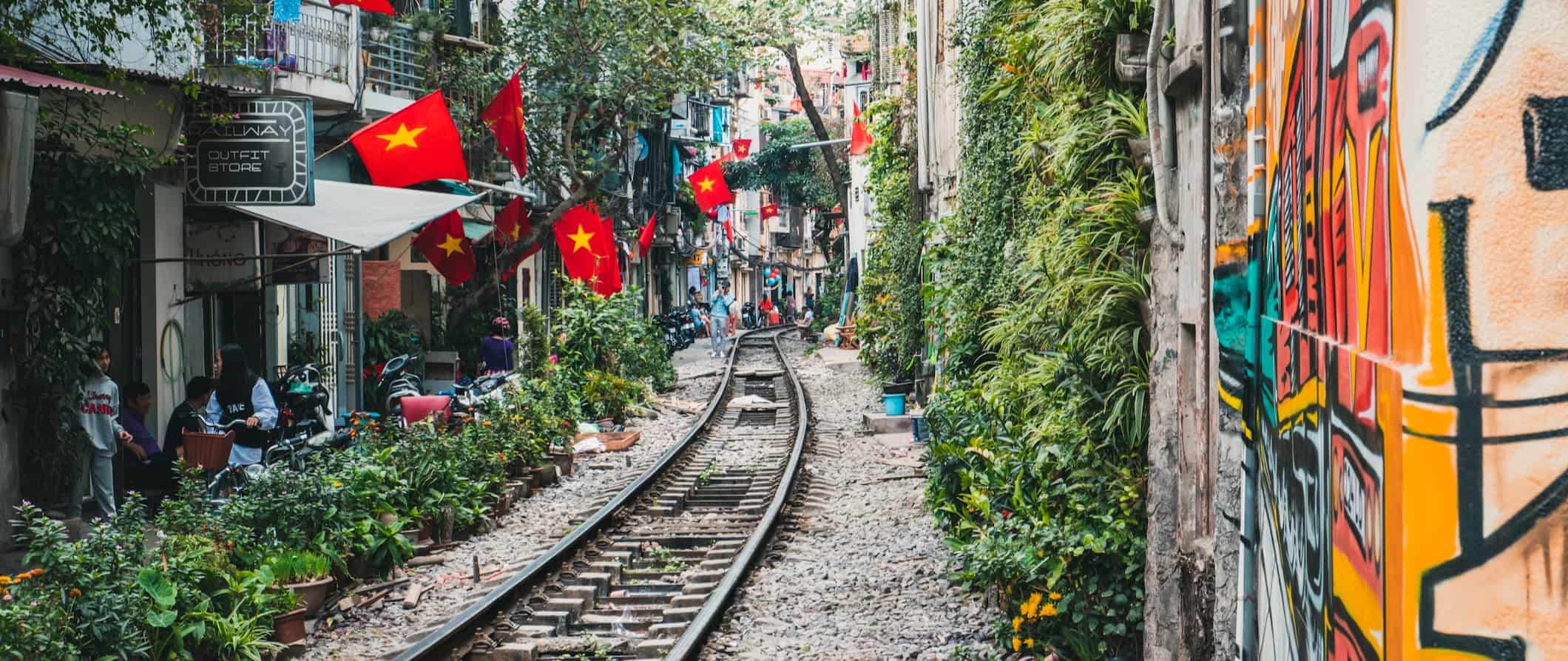
Public transportation – Larger cities in Vietnam (such as Hanoi and HCMC) have reliable and safe public transportation. In Hanoi, there are buses that cover most of the city and generally have stops near all the major tourist sites. Tickets are paid for in cash on the bus and generally cost 7,000-15,000 VND depending on how far you go. HCMC also has a large network of buses, with tickets costing up to 10,000 VND (again, depending on how far you travel).
Cyclos (a bicycle rickshaw) is one of the cheapest ways to get around. A short ride costs as little as 12,000 VND, while a longer night ride costs upwards of 40,000 VND. A more popular option is the ze om , a motorbike taxi that has fares starting from 15,000 VND. You’ll have to hold on tight though (and make sure you wear a helmet as accidents are common).
Train – A lot of people love taking the train in Vietnam because it’s safe, affordable, and comfortable and, although some routes might be slow, you’ll get some amazing views of the Vietnamese countryside. The rail network also covers most of the country, so you can get just about everywhere you want to go (except the Central Highlands and the Mekong Delta). You can use the website Baolau to research train schedules and book your tickets. A train journey between Ho Chi Minh and Hanoi (which spans the entire length of the country) starts at 1,000,000 VND for a soft seat (not a berth). The journey takes three days. Hanoi to Hue costs around 600,000 VND and takes around 13 hours while HCMC to Nha Trang costs around 500,000 VND and takes 8 hours.
Bus – It’s easy to find long-distance hop on, hop off bus tours running the length of Vietnam. You can hop on or off at any stop along the way. They cater to tourists, but locals actually use this service too since it’s super affordable. Prices depend on route and operator but generally, Hanoi to Ho Chi Minh is between 815,000-1,600,000 VND.
To find bus routes and prices, use BusBud .
Flying – Flying domestically in Vietnam is a good idea if you’re looking to fit a lot into a shorter trip. For example, a flight from Hanoi to Ho Chi Minh City takes two hours while the train ride would take at least 30 hours. One-way flights around the country start at around 590,000 VND.
Car rental – Vietnam is very easy to navigate by bus, so I don’t really suggest renting a car here — especially because traffic in the cities is very hectic and accidents are common. That said, car rentals are affordable, costing around 500,000 VND per day. An IDP (International Driving Permit) is required. For the best car rental prices, use Discover Cars .
When to Go to Vietnam
In the southern part of Vietnam, the dry season lasts from December to late April/May while the rainy season occurs from May to the end of November. The rainy season usually just means brief heavy downpours in the afternoon, although sometimes the Mekong Delta will flood. The dry season is the best time to visit but keep in mind that it’s winter up north and it’s going to be a lot colder in the north than the south. Rainy season isn’t that bad either but, like the name implies, it rains a lot.
May through November is still a good time to visit. Temperatures rarely dip below 20°C (68°F), but they can sometimes get as high as 40°C (104°F) in the hottest months (March to the end of May). The south especially gets very hot and humid during this time but it’s perfect beach weather!
Along the central coast, the rainfall pattern differs quite a bit. In the northern part of the region (like Hué and Da Nang), the rain lasts from September to February. February to May is the best time to visit this area. Temperatures soar from June to August, often in the high 30s°C (80s°F).
In Northern Vietnam, the weather is most pleasant from October to December.
The weather in Vietnam varies so much per region so it’s hard to pick the best time to go. But generally, it’s recommended to visit sometime between September-December and March-April if you’re hoping to get an overall experience in the country.
How to Stay Safe in Vietnam
Vietnam is an incredibly safe place to backpack and travel. Violent crime is really, really rare. Petty theft is the most likely thing to happen to you here. Always keep your valuables secure when out and about just to be safe. Lock your windows and use common safety sense, especially in bars at night and in touristy areas.
Traffic in the major cities (specifically Hanoi) is super hectic and there are virtually no rules of the road. There are also millions of motorbikes and scooters here (literally). For that reason, take extra caution when crossing the street. It’s best to just walk as directly and calmly as possible and let the traffic weave around you. If you’re not comfortable doing that alone, follow locals when they cross.
If renting a bike or riding on the back of one, make sure you always wear a helmet. Accidents are incredibly common here, both in the traffic-heavy cities but also in rural areas where roads can be less than optimal.
There are some common scams in Vietnam, such as the motorbike scam where vendors try to charge you for pre-existing damage to your bike rental. When renting anything, take photos and videos beforehand just in case.
Be sure to always count your change. The money is similar looking here so oftentimes people will “mistakenly” give you the wrong change hoping you won’t notice that the 200,000 VND bill you just got is actually only 20,000. Always count your change here!
Most scams here are really just people trying to try to nickel and dime you and try to get you to spend extra money since they know, as a tourist, you have more than they do. You can read about common travel scams to avoid here .
Solo female travelers should generally feel safe here, however, the standard precautions apply (never leave your drink unattended at the bar, never walk home alone intoxicated, etc.). Use common sense when using dating apps while traveling and meet in public places.
Street food here is very safe, but whenever you’re not sure of where to eat simply find somewhere where there are locals eating. If it’s good (and safe) enough for them, you should be fine. Avoid meat that looks uncooked or that has been out in the sun too long. Always wash your hands before and after eating just to be safe.
If you experience an emergency, dial 113 for assistance.
Be sure to make copies of your important documents in case of theft.
The most important piece of advice I can offer is to purchase good travel insurance. Travel insurance will protect you against illness, injury, theft, and cancellations. It’s comprehensive protection in case anything goes wrong. I never go on a trip without it as I’ve had to use it many times in the past.
Vietnam Travel Guide: The Best Booking Resources
These are my favorite companies to use when I travel. They consistently have the best deals, offer world-class customer service and great value, and overall, are better than their competitors. They are the companies I use the most and are always the starting point in my search for travel deals.
- Skyscanner – Skyscanner is my favorite flight search engine. They search small websites and budget airlines that larger search sites tend to miss. They are hands down the number one place to start.
- Hostelworld – This is the best hostel accommodation site out there with the largest inventory, best search interface, and widest availability.
- Agoda – Other than Hostelworld, Agoda is the best hotel accommodation site for Asia.
- Booking.com – The best all around booking site that constantly provides the cheapest and lowest rates. They have the widest selection of budget accommodation. In all my tests, they’ve always had the cheapest rates out of all the booking websites.
- Get Your Guide – Get Your Guide is a huge online marketplace for tours and excursions. They have tons of tour options available in cities all around the world, including everything from cooking classes, walking tours, street art lessons, and more!
- SafetyWing – Safety Wing offers convenient and affordable plans tailored to digital nomads and long-term travelers. They have cheap monthly plans, great customer service, and an easy-to-use claims process that makes it perfect for those on the road.
- LifeStraw – My go-to company for reusable water bottles with built-in filters so you can ensure your drinking water is always clean and safe.
- Unbound Merino – They make lightweight, durable, easy-to-clean travel clothing.
Vietnam Travel Guide: Related Articles
Want more info? Check out all the articles I’ve written on Vietnam travel and continue planning your trip:
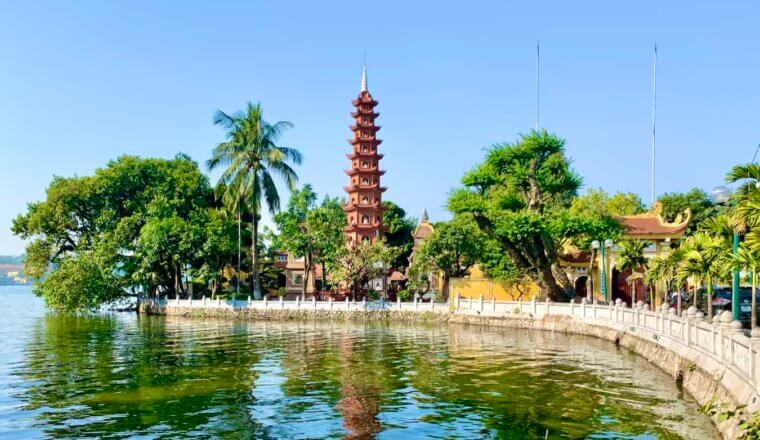
The 6 Best Hostels in Hanoi

Is Southeast Asia Safe for Travelers?
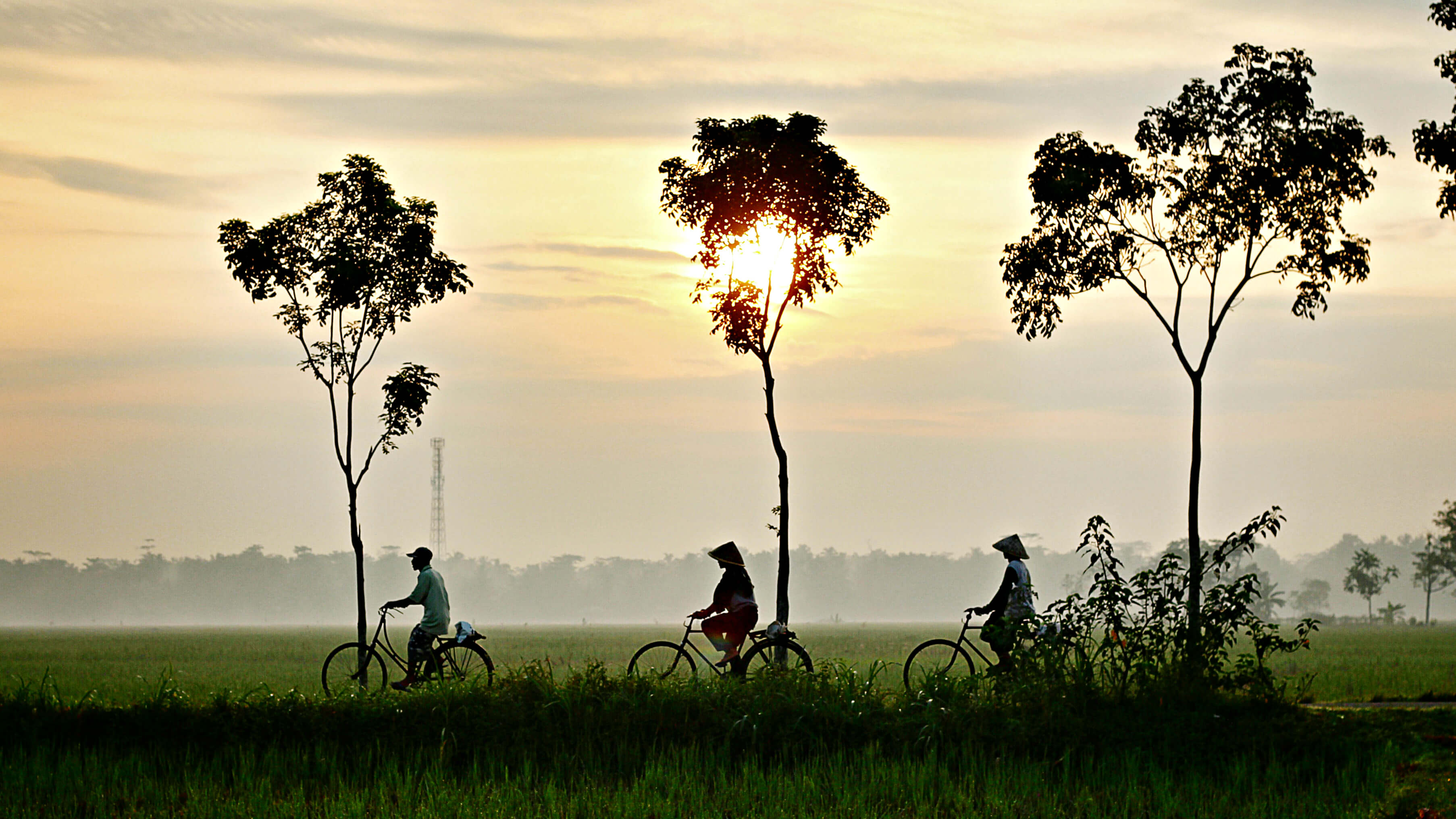
Biking the Mekong Delta in Vietnam
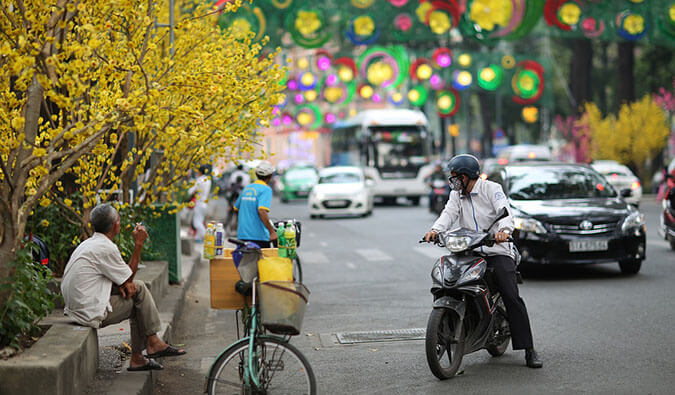
Why I’ll Never Return to Vietnam
Get your free travel starter kit.
Enter your email and get planning cheatsheets including a step by step checklist, packing list, tips cheat sheet, and more so you can plan like a pro!

- Where To Stay
- Transportation
- Booking Resources
- Related Blogs
You are using an outdated browser. Please upgrade your browser to improve your experience.
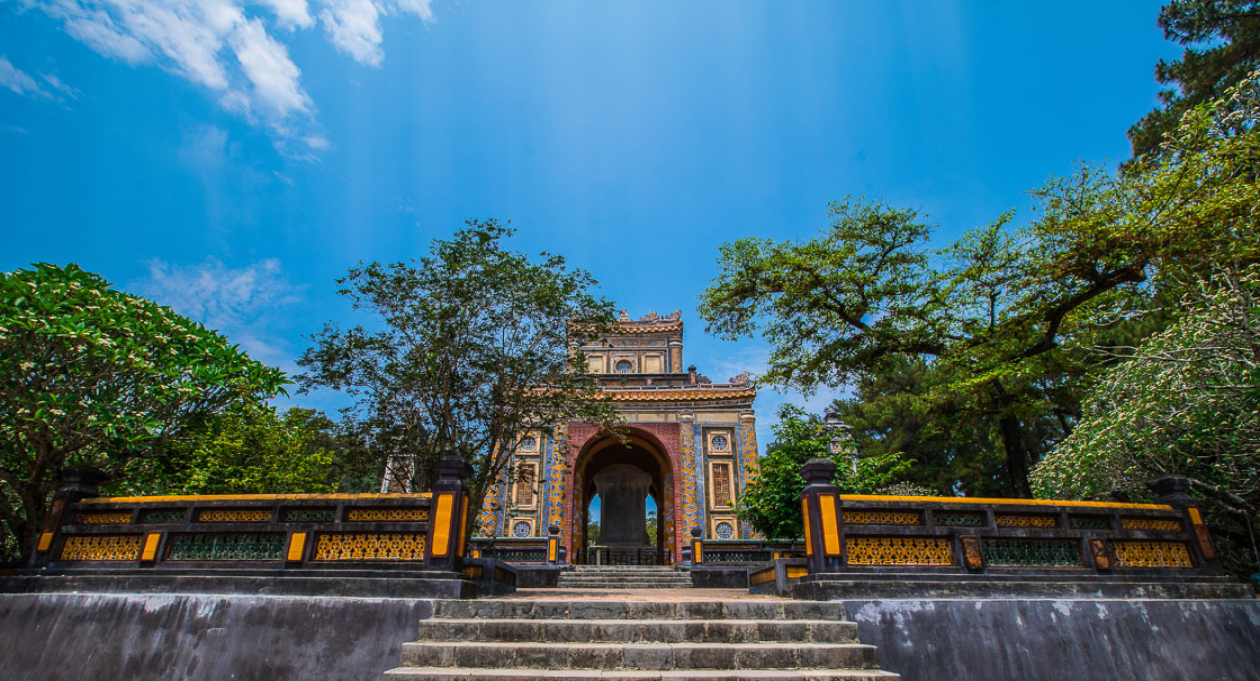
- 5 must-see heritage sites in Vietnam
Photo by Christian Berg
For culture lovers, every small moment of discovery is a step closer to understanding a new and different way of life. Scattered throughout the country , Vietnam's UNESCO Heritage Sites are jackpots for these moments of discovery. Each one promises exceptional beauty and exceptional insight into Vietnamese culture. Of the eight UNESCO World Heritage Sites found in Vietnam, here are five you absolutely must not miss.
The complex of hue monuments.
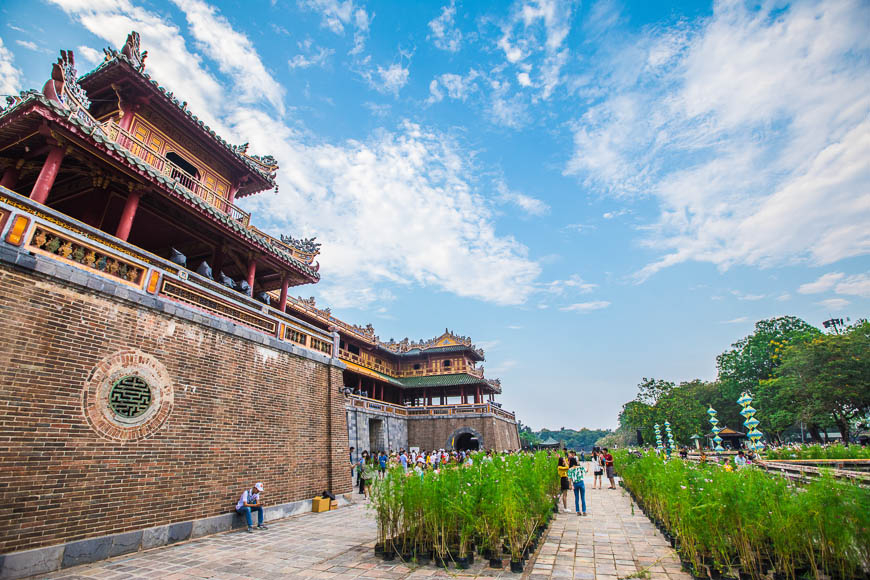
In the central city of Hue you'll find the last vestiges of the Nguyen Dynasty. Here, against a backdrop of forested hills with a meandering river at their feet, the Nguyen emperors erected administrative offices, military headquarters, palaces, temples and even their own tombs.
Vietnam’s feudal capital was strategically built along the banks of the Perfume River, with easy access to the sea. Taking inspiration from Beijing’s Forbidden City, the structures within the citadel were carefully laid out to be in cosmological alignment with the five elements, cardinal points and colours.
Take a leisurely amble around the complex and watch Imperial Vietnam come to life in full colour. Imposing statues, priceless treasures and intricate mosaics wait around every corner. Although the Nguyen Dynasty ended in 1945, the symbolic significance of the Hue Monuments–once the political, cultural and religious heart of Vietnam–still echoes today.
TIP: Be sure to charge your camera, as there are more photo opps here than you can count. Want to see more? Rent a bicycle and cycle to the tombs, soaking up views of Hue’s countryside on the way.
My Huế from Vietnam Tourism Board on Vimeo .
Trang An Landscape Complex
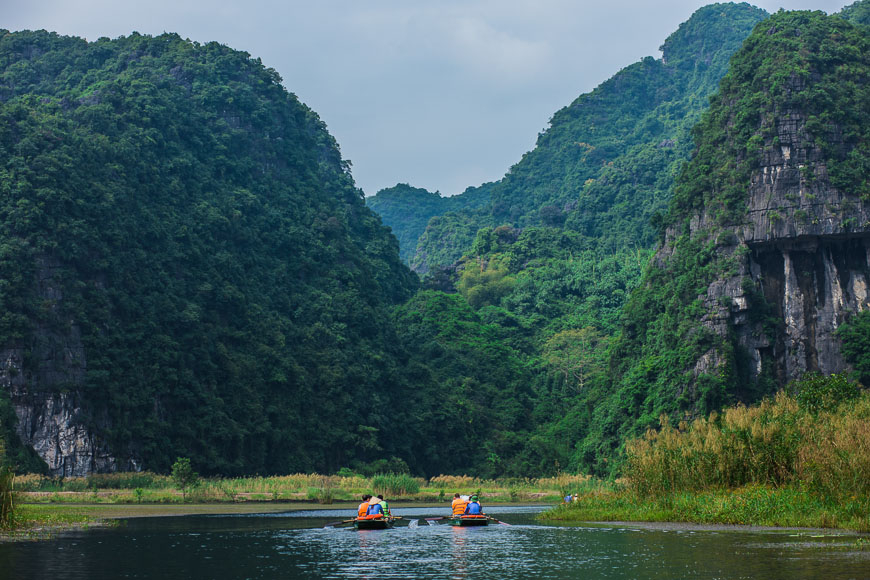
Ninh Binh has long enchanted visitors with a melding of sacred temples, serene countryside, and dramatic karsts. Three elements come together to render this one of Vietnam's top heritage sites: the Hoa Lu Ancient Capital -- the national seat of power in the 10th and 11th centuries -- the Trang An Scenic Complex, and the Hoa Lu Forest.
Ninh Binh's sublime landscape is made of karst peaks and towers, which rise steeply up from the valley below, itself covered in tranquil waterways and lush rice paddies. Traditional sampans rowed by local guides glide gently along the current, beneath dripping grottoes and past dense rainforest. Take a short climb to the mossy pagodas and viewpoints on the cliffs, and you'll have the entire panorama at your feet.
Hoi An Ancient Town
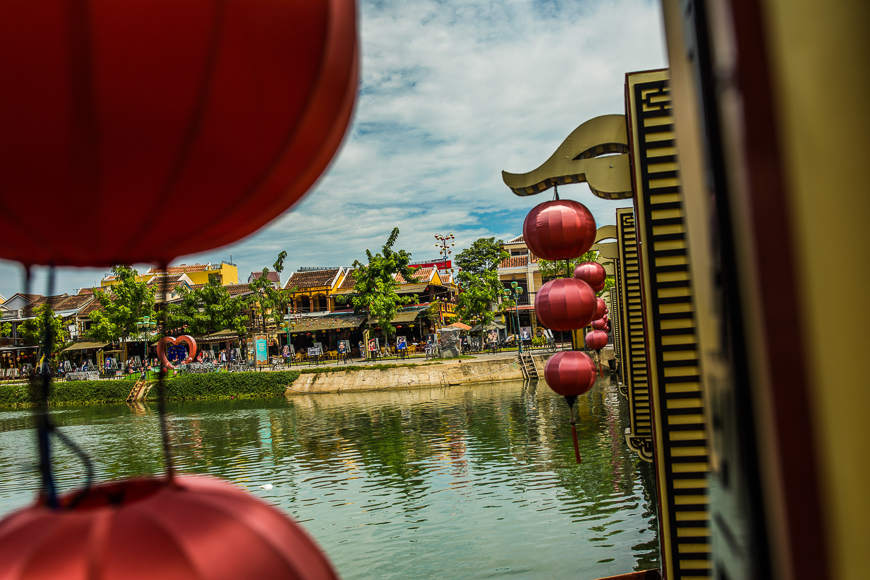
Hoi An was once a bustling trading port, welcoming merchants from far across the seas. Between the 15th and 19th centuries, Chinese, Japanese and Europeans settled along the banks of the winding Thu Bon River. Today, 30 hectares of this ancient town is preserved as a UNESCO Cultural Heritage Site.
Hoi An’s unique fusion of cultural influences reveals itself within its narrow streets. Weathered shop-houses squeeze shoulder-to-shoulder alongside ancestral homes, their tiled roofs decorated in exotic wood carvings. Tucked away from the old ferry quay, you’ll find an open market, pagodas and a timber bridge that once connected the town's Japanese and Chinese communities. Hoi An is even better in the evenings, when the faded streets glow in the light of thousands of lanterns.
TIP: Time your visit to Hoi An on a night with a full moon, and join the throngs of locals enjoying dragon dances, boat rides and moonlit revelry on the riverbanks.
Ha Long Bay
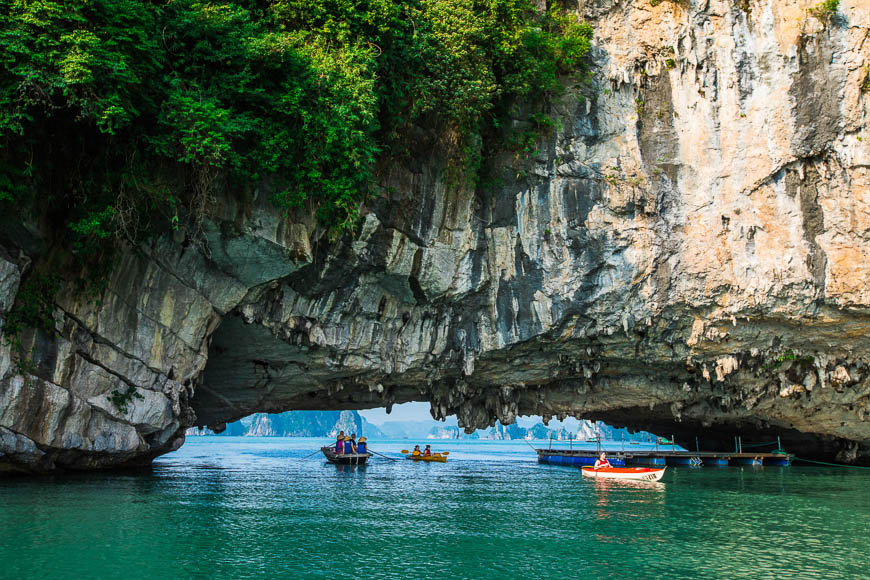
It’s no surprise Ha Long Bay is home to as many legends as it is islands. The name ‘Ha Long’ means ‘descending dragon’ and Vietnamese tell a tale of a dragon that descended from the sky, spitting out thousands of pearls that became the islands and islets we see today.
This spectacular bay and Natural Heritage Site stretches across the Gulf of Tonkin, 165 km from Hanoi. Hidden among more than 1,600 limestone formations, are secret grottoes, sparkling beaches, and jaw-dropping caves. The best way to go is on an overnight cruise. Mornings are for watching the sunrise, practicing tai chi or sightseeing in the caves. Afternoons are spent swimming, kayaking or simply relaxing on the sun deck. Evenings arrive with striking sunsets and soothing sea breeze, and leave behind a sky riddled with stars.
The scenery in the bay is enhanced by the local life that continues in this dream-like setting. Floating villages rest on rafts, children row to school, men fish for a living, and women cook and sell their wares–all in the company of Ha Long’s majestic karsts and emerald waterways.
TIP: Ha Long can be sunny and clear, cold and frigid, or foggy and misty depending what time of year you travel. Check the weather first to make the most of your time in the bay.
Phong Nha-Ke Bang National Park
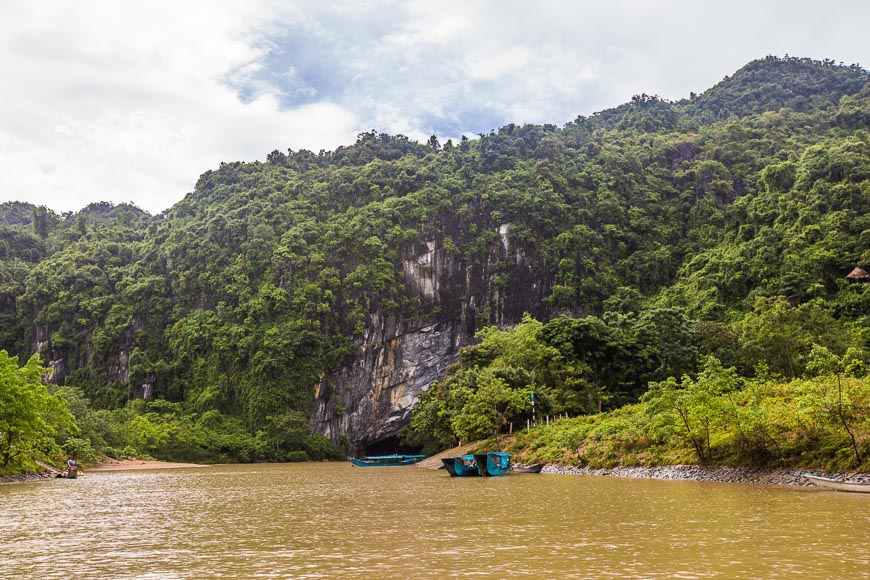
Part of the Annamite Mountain Range in Quang Binh Province, Phong Nha lures adventure lovers with an outstanding limestone karst ecosystem. The national park covers 126,236 hectares of dense tropical forest, enormous caves, and underground rivers.
Phong Nha lays claim to the second-largest cave in the world, Hang Son Doong, and is home a wide array of cave types, such as terraced caves, intersecting caves, and suspended caves. Multi-day excursions will take you deep into these spectacular caverns, where you can dive into glowing rock pools and camp beside subterranean rivers. For more gentle exploration, local boats will ferry you noisely through Phong Nha Cave and down the winding Son River.
Apart from scientifically important caves, Phong Nha-Ke Bang National Park shelters a large number of endemic species. Asiatic black bear, tigers and saola have all been spotted within the UNESCO-protected area, giving nature lovers even more reason to put Phong Nha on their itineraries.
Want more Vietnam travel ideas? Sign up for our newsletter to receive our best stories in your inbox.
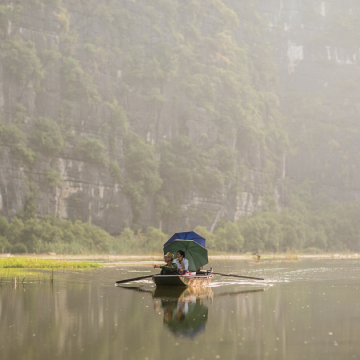
- You are here:
- Things to do
Create an account
Already have an account? Click here to sign in
By clicking submit, you agree to our Privacy Policy and Terms of Use
Sign in with your social accounts
Sign in with your email
Forgot password? Click here to get it back
Don't have an account? Sign up here
Forgot Password
The entered email has subscribed for Vietnam Tourism monthly newsletter

- Customized Tour
Top must-visit places in North Vietnam
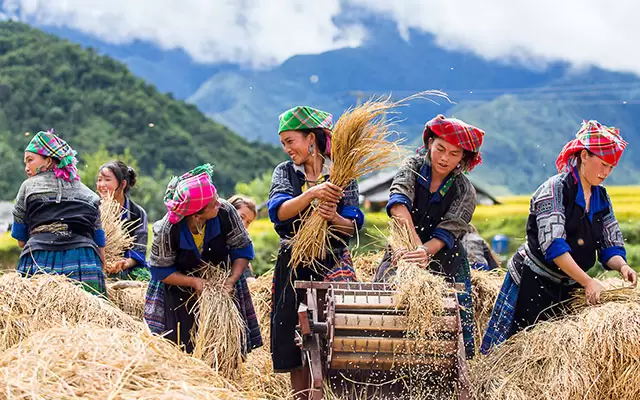
North Vietnam takes its pride of Hanoi’s charming capital, majestic mountain ranges, mist-entwined peaks, lush valleys, centuries-old rice terraces, diverse ethnic groups and turquoise stunning islands. No matter where you go, you will definitely find something special here. Let’s plan a trip with Vietnam Travel’s list of top must-visit places in North Vietnam.
Table of Contents
2. Ninh Binh
3. mai chau, 5. ha giang, 6. cao bang – ban gioc waterfall, 7. halong bay, 8. cat ba island.
It is undoubtedly that Hanoi is definitely a must-visit place in North Vietnam. Its well-preserved French colonial buildings, ancient oriental pagodas, historic temples, unique museums, peaceful lakes and a lot of other amazing spots will leave you enchanted. This capital city is a perfect place to explore on foot or take a cyclo to stroll through hidden alleyways and bustling markets of Hanoi’s charming Old Quarter, try local specialties and sample delicious Vietnamese cuisine just like the way the locals do. Hanoi is an eclectic mix that offers something for everyone. Be sure to allow a minimum of 2 or 3 days to discover the hidden beauty of Hanoi and visit all key sites here such as the Ho Chi Minh Complex , the Presidential Palace, the nearby One Pillar Pagoda , the Temple of Literature – the 1st university of Vietnam, West Lake, the sedate Tran Quoc Pagoda , Quan Thanh Temple …
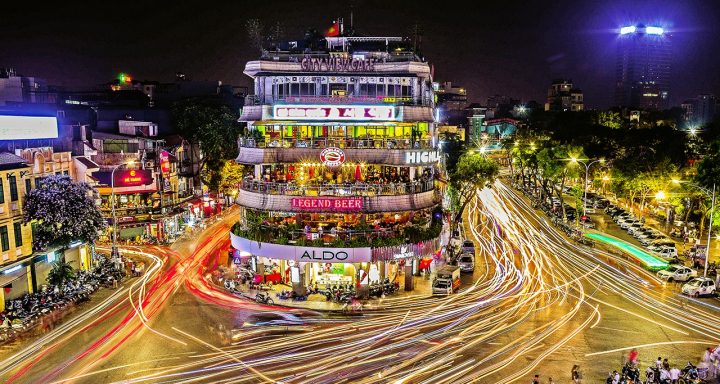
Dong Kinh Nghia Thuc Square
Read more: Top Hanoi Attractions
Often referred to as “Halong Bay on land”, Ninh Binh is another worth-visiting place in North Vietnam. Only 2 hours driving from Hanoi, Ninh Binh is an ideal option for a day trip if you do not have much time. Any trip to Ninh Binh should certainly include a boat trip in Trang An or Tam Coc to admire limestone formations, lush foliage and relaxing landscapes along peaceful river waterways through a series of dark grottoes. It takes about 2 hours. Other than that, you can visit some highlights in Ninh Binh such as Bai Dinh Pagoda – the largest pagoda in Vietnam, Bich Dong Pagoda , Hoa Lu Ancient Capital, Phat Diem Cathedral, Mua Cave, and Cuc Phuong National Park .
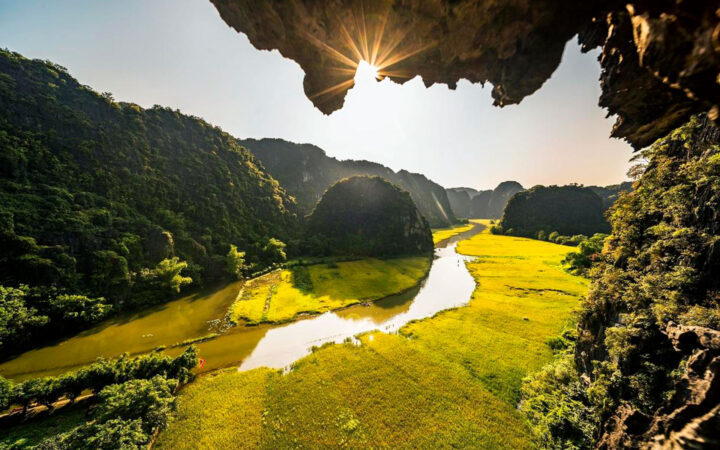
Ngo Dong River: The beautiful river in Tam Coc, Ninh Binh
Read more: Things to do in Ninh Binh
With a close proximity to Hanoi, Mai Chau is a wonderful place to get away the bustling city life and experience the tranquility of the mountainous village. You can choose to relax at Lac or Poong Cong villages, rent a cycle to ride around the rural villages, through rice paddies and you find your own peaceful moments. Besides, this beautiful mountainous area with thick jungle, bamboo groves, tea plantations and waterfalls lends itself to fantastic walks and short treks to remote ethnic villages such as Hang Kia, Pa Co…
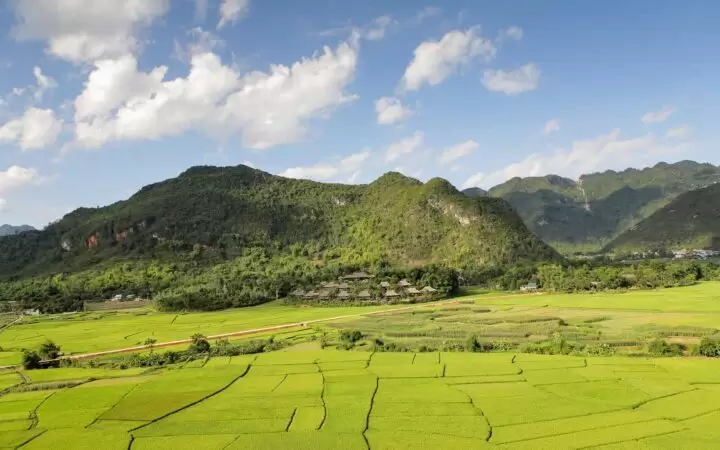
Green Rice FIeld in Mai Chau
White and Black Thai people are the biggest ethnic groups in this region who build and live in wooden stilt houses. It is highly recommended to spend at least one night at stilt house homestay to gain an insight into the local customs and culture. You have chance to interact with local people, join dinner with the host and enjoy traditional dance in the evening.
Sapa makes a statement with the surrounding mountains, the beautiful terraced rice fields as well as the richness of cultural diversity with many ethnic minorities. It is no better than taking a guided hike through yawning valleys decorated with terraced rice fields and pass through remote hill tribe villages like Cat Cat, Y Linh Ho, Lao Chai, Ta Van, Ta Giang Phinh… Ethnic local market is also an ideal place to experience the daily life and familiarize yourself with the cultures of the H’mong, Dzao and Dzay people who populate the region. You can spend time to visit Bac Ha market on Sunday, Coc Ly market on Tuesday, Can Cau market on Saturday… with a variety of goods from local fruits, vegetables, honey and corn wine to colorful fabrics, clothes and embroidered items, horses, cows and buffalo.
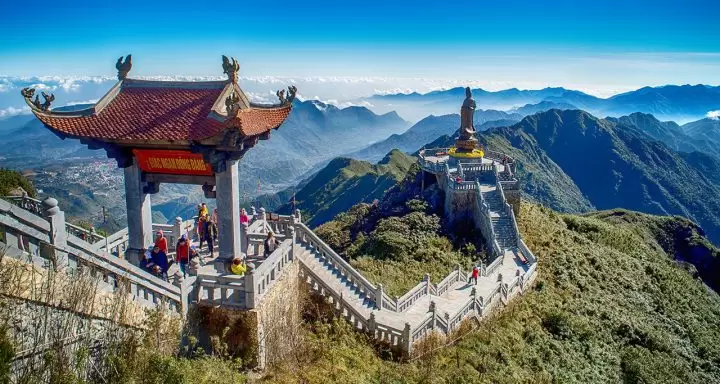
Read more: Sapa Attractions
Ha Giang is a mountainous province in northeastern Vietnam, about 300km from Hanoi. It shares a 270km long border with Yunnan province of southern China, and thus is known as Vietnam’s final frontier. Nearly 90% of the population in Ha Giang is ethnic minorities who create a unique and rich cultural heritage of the area. Traditional practices and habits of these ethnic groups are very diverse and interesting helping attracts many travelers who are keen on exploring these unique aspects.
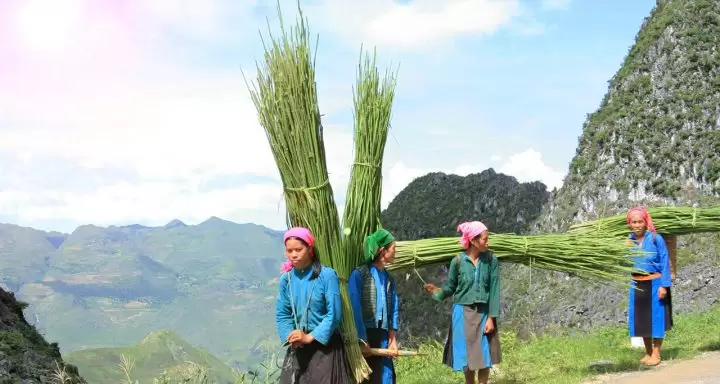
Ha Giang is best explored as a road trip on two wheels, soaking up the majesty of the landscape and the atmosphere of the remote towns and minority villages. The trip from Yen Minh to Dong Van Karst Plateau Geopark , then across Ma Pi Leng Pass , one of 4 great passes in Vietnam to Meo Vac will surely give you the unforgettable experience.
Located in a remote area of Northern Vietnam, Cao Bang is well-known for its high biological diversity with abundant endemic flora-fauna species and ecosystems with 5 major river systems and 47 lakes. It is home to 9 different ethnic groups, namely, Tay, Nung, Mong, Kinh, Dao, San Chay… and each minority has its own special crafts, traditional festivals, folk arts, traditional customs and way of living. It makes Cao Bang more famous for its culture richness.
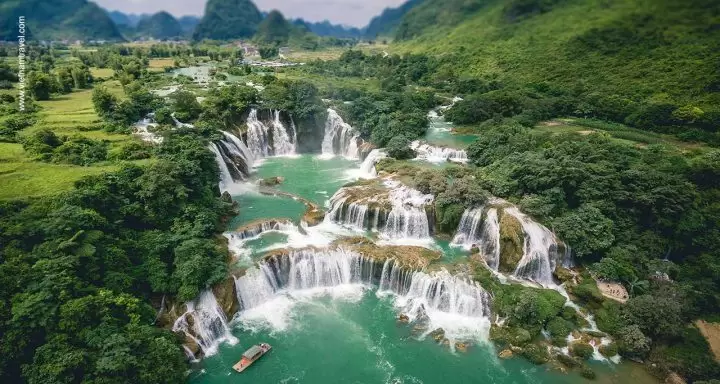
Ban Gioc Waterfall (Cao Bang Province).
Cao Bang offers numerous outstanding landscapes and historical sites that you should not miss such as Pac Bo historical site, where President Ho Chi Minh lived and worked the early days to lead Vietnam’s revolution; Ban Gioc waterfalls, the largest breathtakingly majestic waterfalls in Vietnam , Nguom Ngao Cave, Thang Hen lake system, Phat Tich Truc Lam Ban Gioc Pagoda and etc.
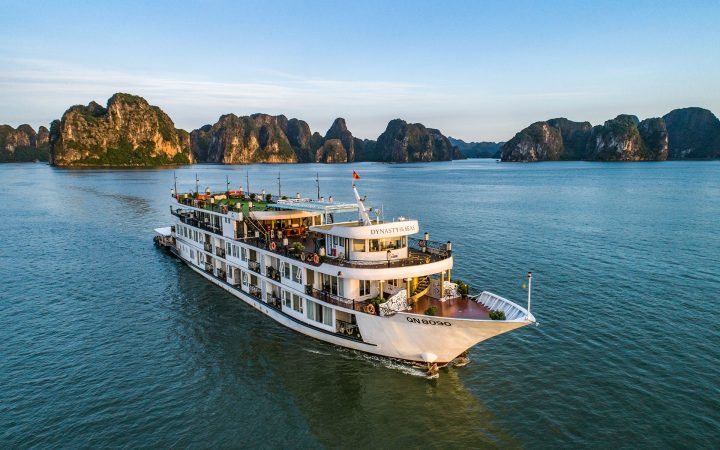
No visit to the North Vietnam is complete without a trip to Halong Bay, one of the Seven World Wonders of Nature with over 2,000 limestone islands and cliffs. Though there are many ways to explore Halong Bay , it is best to board on an overnight cruise which entitles you to soak up the spectacular scenery. You have chance to get a close touch to natural and magnificent beauty of many karst cliffs, rocky spires and hidden caves as well as admire the vaporous clouds of mist, clear turquoise water. Spending time to relax and enjoy a cocktail on the sundeck is not a bad idea. But for those who are looking for some interesting activities, Halong Bay has to offer, including: visiting fishing villages by rowing boat, kayaking around the bay, exploring hidden caves, swimming, squid fishing at night…
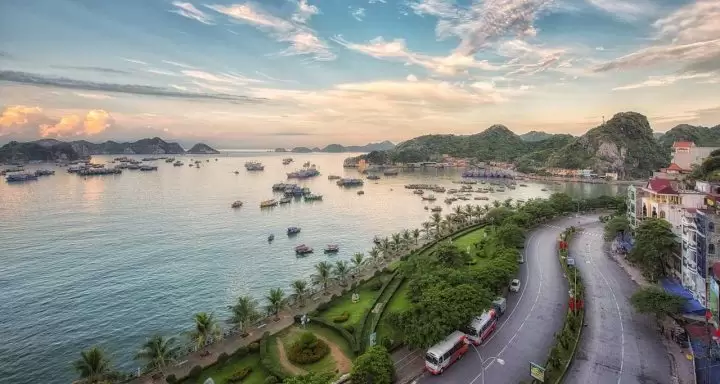
Surrounded by Bai Tu Long Bay and Ha Long Bay, Cat Ba Island appeals a number of travelers who want to explore its beautiful natural scenery of sea and island. It features on three beautiful Cat Co cove beaches which boast the soft yellow sand and crystal clear water, luminous waves and bracing winds. While Cat Co 1 and 3 are linked by a cliff side path that’s a great to stroll anytime, the other is quieter, more pristine and perfect for romantic getaways. Here tourists can take part in some adventurous activities such as taking a motor boat or kayaking to sail to small islets, hiking through the national park or cycling around the island. Cat Ba Island is best to visit from April to November when the weather is perfect for beach break. But it is very crowded in summer time between June and August with a lot of domestic tourists and hard to book accommodation.
Read more: Cat Ba Island
Related Posts
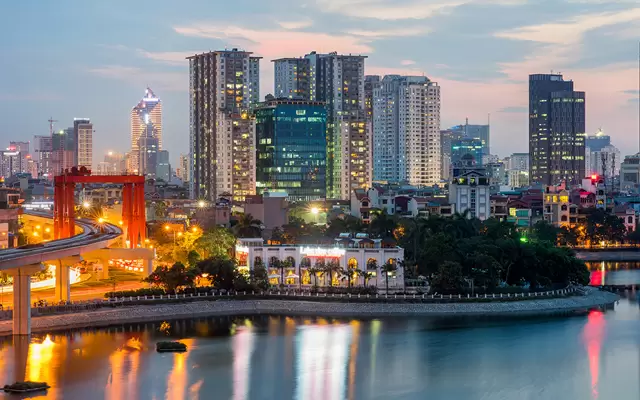
North Vietnam Itinerary: Where to go?
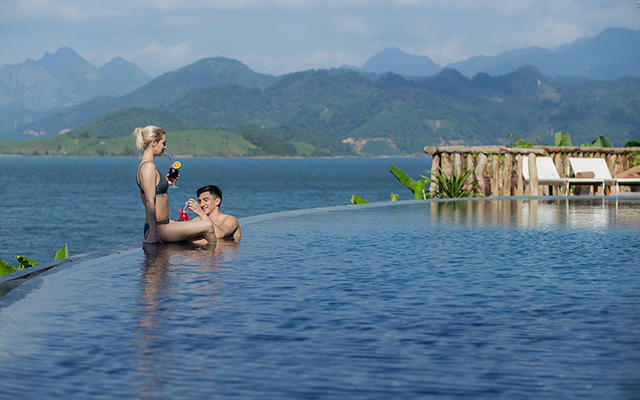
Top 5 Infinity Swimming Pools In North Vietnam
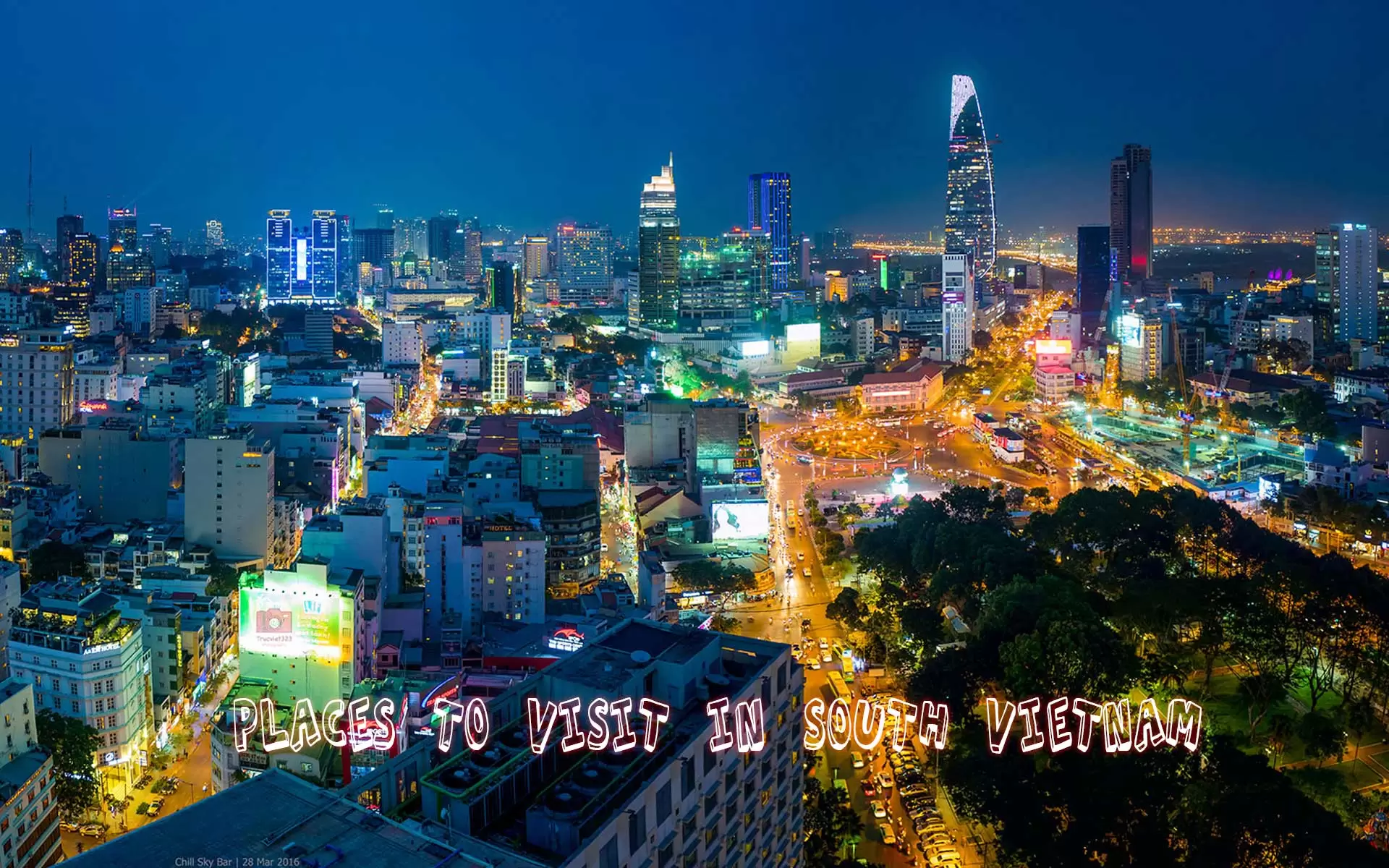
Places to visit in South Vietnam
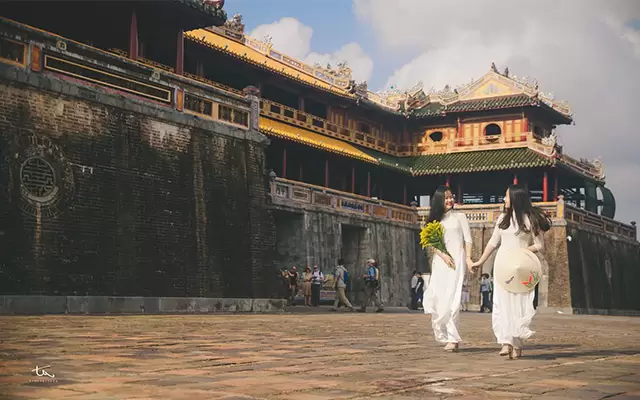
Highlight Destinations in Central Vietnam
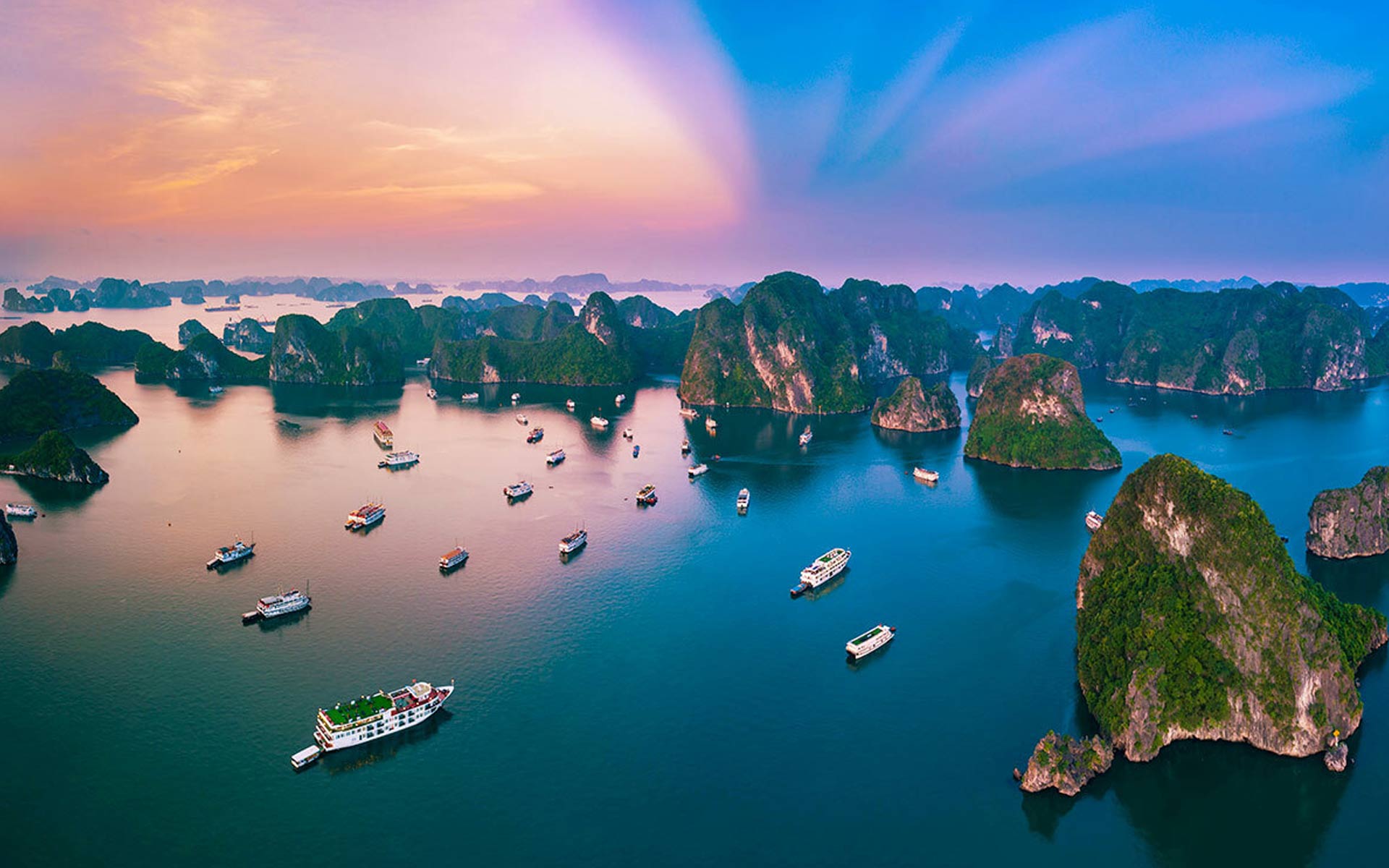
Best places to visit in Vietnam

Vietnam Weather: General information & Best Time to Visit
Leave a Comment Cancel comment
Request a free quote, thank you we have received your travel request. you will receive an email shortly. please check your email and verify the information. your request will be processed after your confirmation..
You have chosen a tour duration longer than 20 days. Please specify the exact number of days you want to travel in the message box below, so that we can have enough information and make a program for you. Thank you for your cooperation.
You have selected a number of travellers greater than 20. Please let us know the exact number of people in your group in the message box below so that we can quote you accurately. Thank you for your cooperation.
You have selected a number of travellers and duration greater than 20. Please let us know the exact number of people in your group and the exact number of days in the message box below so that we can quote you accurately. Thank you for your cooperation.
- Vietnam Travel Guides
- Travel Planning
- Festivals & Events
- Food & Drinks
- Tourist Maps
- Travel Blog
- Travel News
Our Recommendations

Guideline to get Vietnam E-visa

50 Things You should Know before Traveling to Vietnam

Best Vietnam Private Tours you should know before traveling

Info for travelers on Covid-19 in Vietnam: Entry requirements & Restrictions
You May Also Like
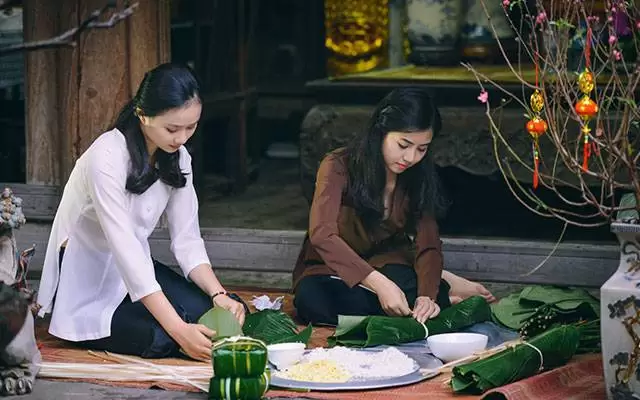
Seasons in Vietnam
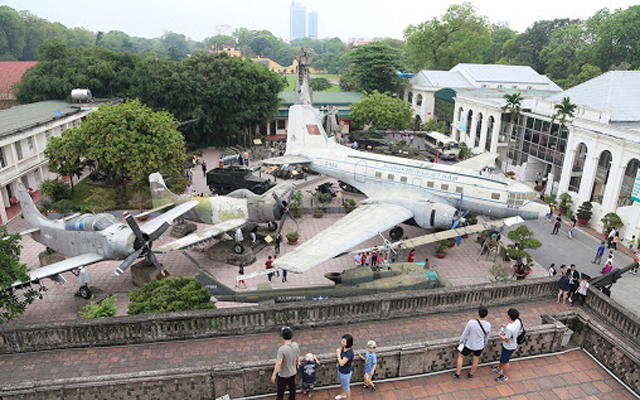
Vietnam Military History Museum
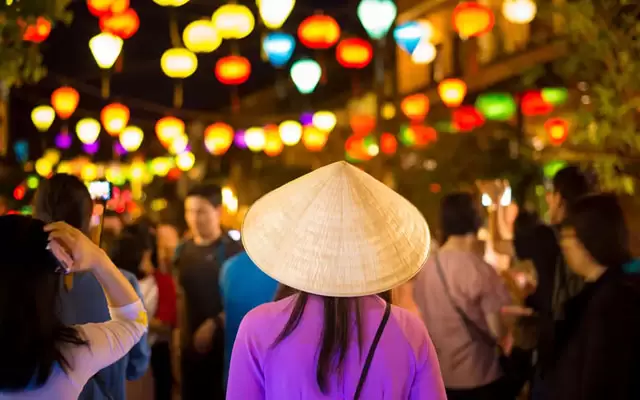
Hoi An Night Market – A Shopping Paradise
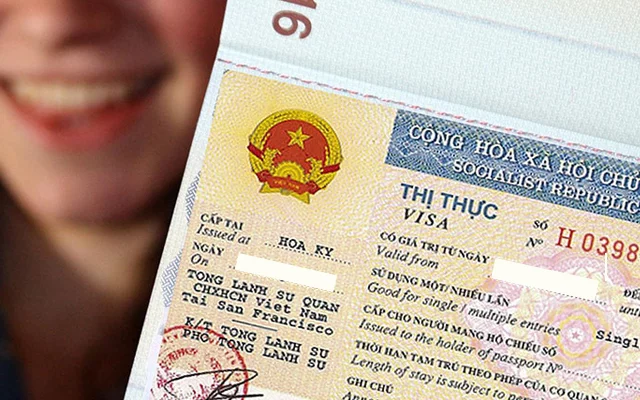
How to get a Vietnam tourist visa?
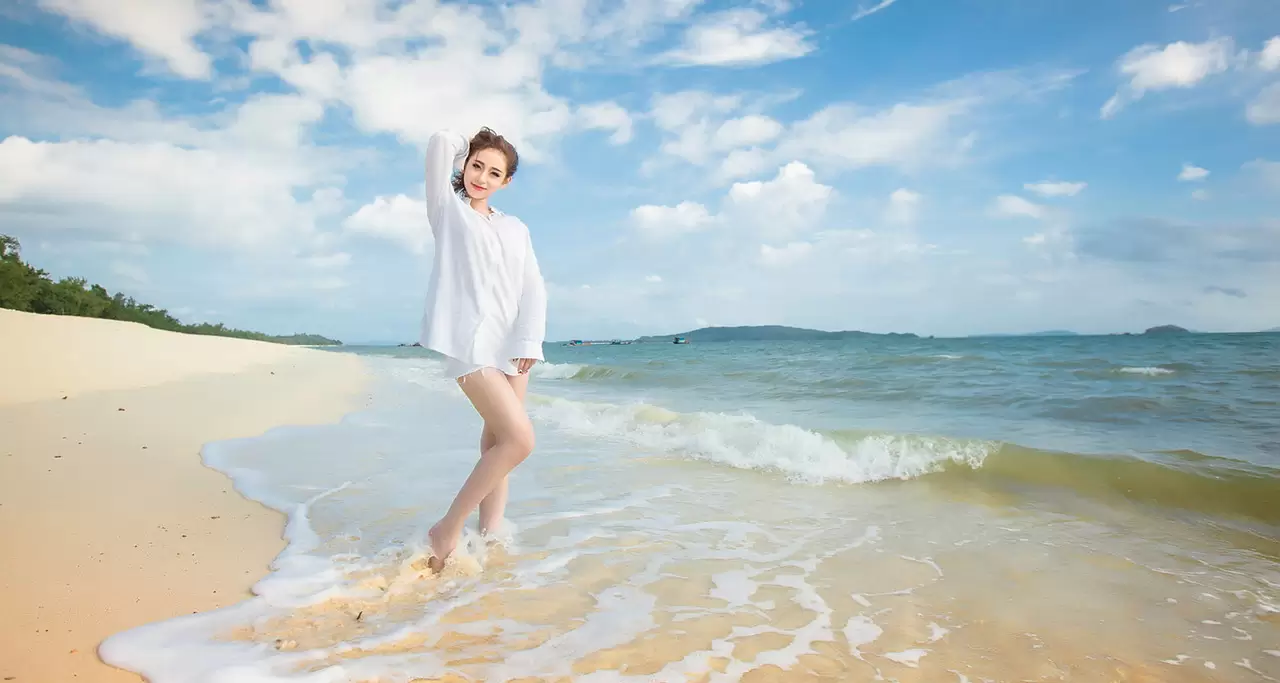
Vietnam Beaches – A Guide to the Best and Most Beautiful Coastlines
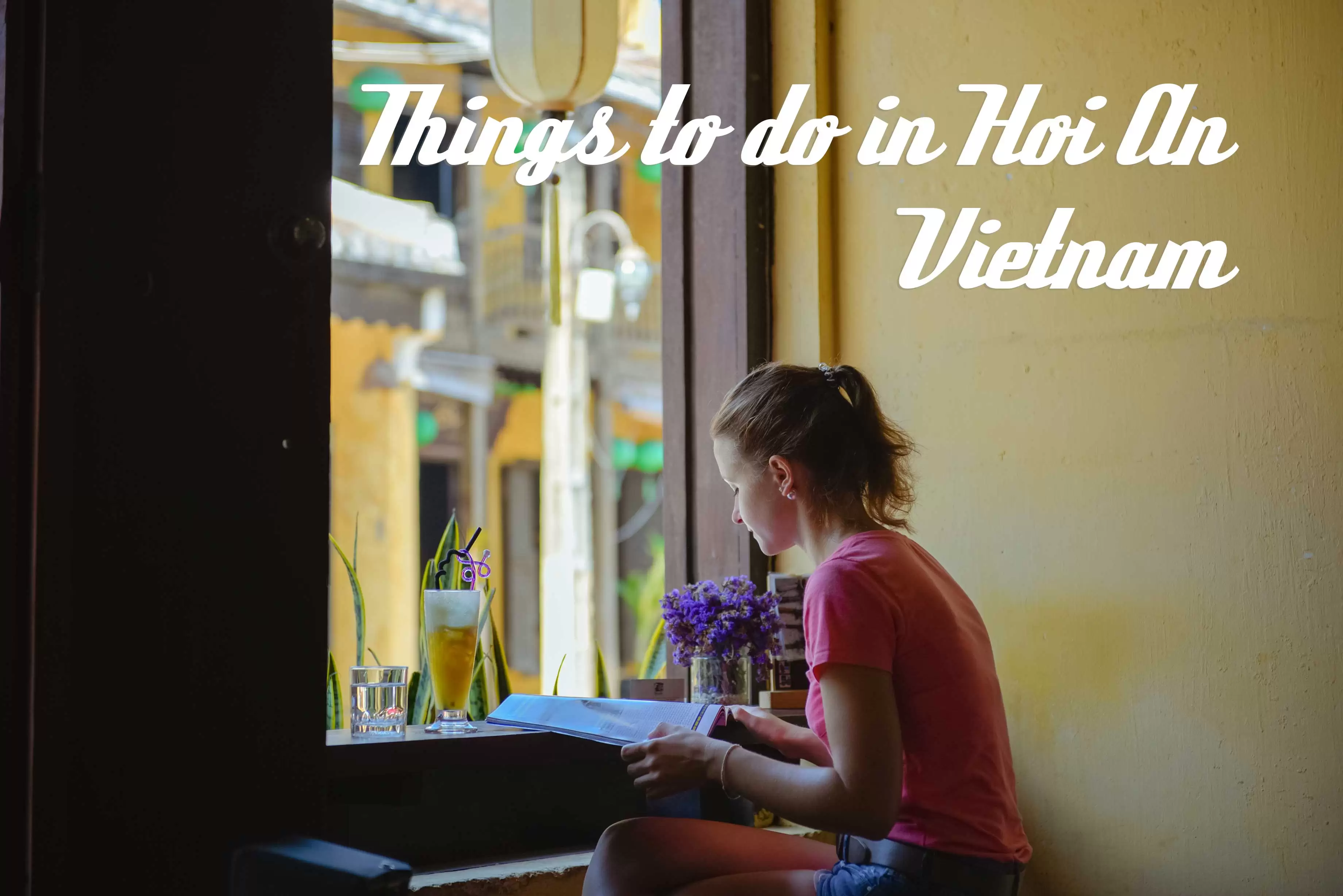
Things to do in Hoi An
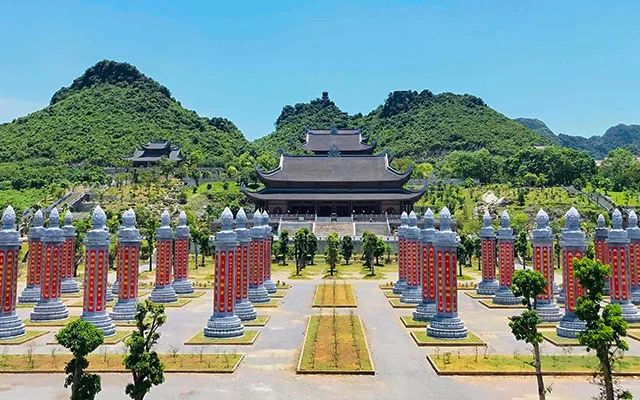
Tam Chuc Pagoda
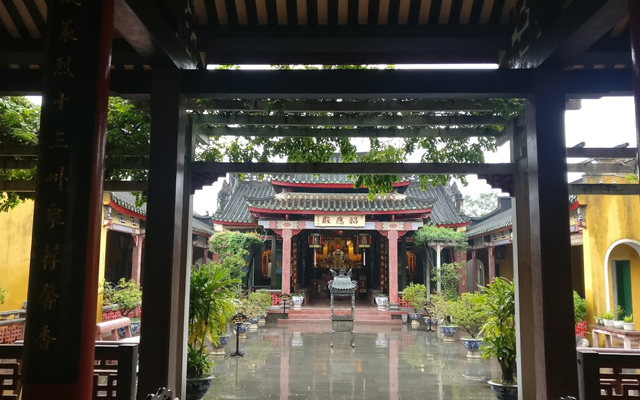
Tan Ky Old House
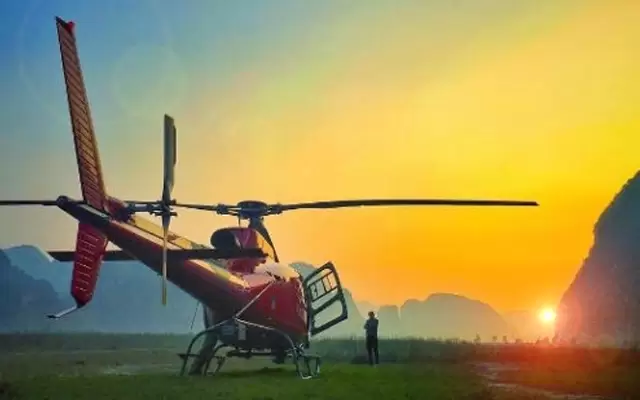
Things to do in Ninh Binh
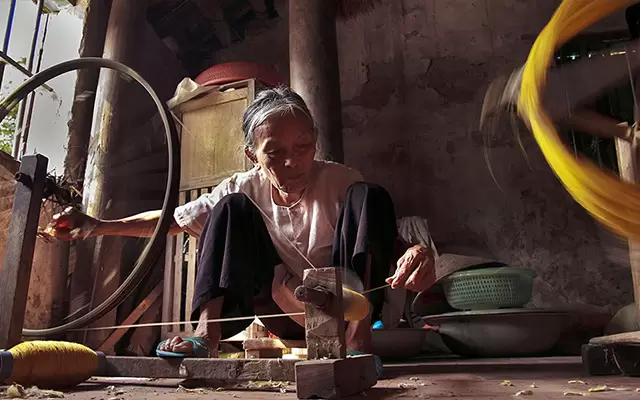
Van Phuc Silk Village Hanoi
The Enchanting Journey Through Vietnam: A Must-Experience Travel Adventure
- Last updated May 27, 2024
- Difficulty Beginner
- Category Travel

Vietnam is a country steeped in history and culture, with a breathtaking landscape that captivates all who visit. From the bustling streets of Hanoi to the tranquil waters of Halong Bay, this enchanting journey through Vietnam is a must-experience travel adventure. Get ready to immerse yourself in the vibrant street food scene, explore ancient temples and pagodas, and soak in the beauty of lush rice terraces and pristine beaches. Whether you're a history buff, a foodie, or simply seeking a new and exciting adventure, Vietnam has something for everyone. So pack your bags and prepare to be mesmerized by the beauty and charm of this incredible destination.
What You'll Learn
Rich cultural experiences: exploring vietnam's history, traditions, and cuisine, breathtaking natural landscapes: from halong bay to the mekong delta, bustling cities and vibrant markets: the energy of hanoi and ho chi minh city, authentic local interactions: homestays, street food, and motorbike adventures.

Vietnam is a breathtaking destination that offers a plethora of rich cultural experiences. From exploring the country's fascinating history to immersing yourself in its vibrant traditions and indulging in mouthwatering cuisine, Vietnam has something to offer for every traveler.
One of the highlights of traveling in Vietnam is its captivating history. The country has a long and complex past, and there are plenty of historical sites to explore. One must-visit destination is Hanoi, the capital city, which is home to the famous Ho Chi Minh Mausoleum. This imposing structure houses the embalmed body of the revered leader and provides a glimpse into Vietnam's communist history.
Another historical site that should be on your itinerary is the ancient town of Hoi An. This UNESCO World Heritage site is renowned for its well-preserved architecture, reflecting the fusion of indigenous and foreign influences over the centuries. While strolling through the narrow streets of Hoi An's Old Town, you can admire the charming yellow buildings, visit ancient temples, and witness traditional crafts being practiced by the locals.
In addition to its history, Vietnam is also a country rich in traditions. One way to immerse yourself in the local culture is by participating in the vibrant festivals that take place throughout the year. One of the most famous events is the Tet festival, which celebrates the Vietnamese Lunar New Year. During this time, the streets come alive with colorful parades, traditional music, and dance performances. It is an incredible opportunity to experience the Vietnamese zest for life and their deep-rooted customs.
Of course, a visit to Vietnam would not be complete without indulging in its mouthwatering cuisine. Vietnamese food is renowned for its fresh ingredients, bold flavors, and unique balance of sweet, sour, salty, and spicy tastes. One iconic dish that you must try is pho, a flavorful noodle soup that is a staple in Vietnamese cuisine. Other must-try dishes include banh mi (a Vietnamese sandwich), nem (fried spring rolls), and ca kho to (caramelized fish).
To truly delve into the culinary scene, consider taking a cooking class where you can learn how to prepare traditional Vietnamese dishes from scratch. It is a wonderful way to not only savor the flavors of Vietnam but also learn about the ingredients and techniques that make its cuisine so special.
In conclusion, traveling in Vietnam offers a plethora of rich cultural experiences. From exploring the country's history at historical sites such as the Ho Chi Minh Mausoleum and Hoi An's Old Town to immersing yourself in traditional festivals like Tet, Vietnam has a lot to offer. And let's not forget the mouthwatering cuisine that is sure to leave you wanting more. So pack your bags, embark on a journey, and get ready to experience the rich cultural tapestry of Vietnam.
Exploring the Variety of Products Available at Travel Centers of America: Are Belts One of Them?
You may want to see also
When it comes to breathtaking natural landscapes, Vietnam has it all. From the famous Halong Bay to the sprawling Mekong Delta, this country is a paradise for nature lovers and adventure seekers. Here's a guide to some of the most stunning natural wonders that you can explore on your trip to Vietnam.
Halong Bay: Located in the northeast of Vietnam, Halong Bay is renowned for its emerald waters and limestone karsts that rise dramatically from the sea. This UNESCO World Heritage site is best explored by taking a cruise and sailing through the maze of islands. You can marvel at the sheer magnificence of the towering karsts and explore beautiful caves such as Thien Cung and Sung Sot. Don't forget to indulge in some kayaking and swimming in the crystal-clear waters of the bay.
Cat Ba Island: For those seeking a quieter alternative to Halong Bay, Cat Ba Island is the perfect destination. This largest island in Halong Bay offers stunning beaches, pristine jungles, and breathtaking views of the surrounding karsts. You can rent a motorbike or bicycle to explore the island and visit attractions like the Cat Ba National Park, where you can spot wildlife and hike through lush forests.
Phong Nha-Ke Bang National Park: Situated in central Vietnam, Phong Nha-Ke Bang National Park is a paradise for adventure enthusiasts and nature lovers. The park is home to the world's largest caves, including the Son Doong Cave, Hang En, and Paradise Cave. You can take guided tours to explore these magnificent caves, go jungle trekking, or take a boat ride along the Son River to admire the park's natural beauty.
Sapa: Nestled in the Hoang Lien Son Mountains in Northwest Vietnam, Sapa is a picturesque town surrounded by stunning rice terraces and quaint villages of ethnic minority groups. The landscapes here are truly awe-inspiring, with terraced fields cascading down the hillsides. You can trek through the rice terraces, visit ethnic minority markets, and stay overnight in a homestay to immerse yourself in the local culture.
Mekong Delta: Located in the southern part of Vietnam, the Mekong Delta is a vast maze of rivers, canals, and lush green rice fields. This region is often referred to as the "Rice Bowl" of Vietnam, as it produces a significant portion of the country's rice and agricultural products. You can take a boat tour along the Mekong River and visit floating markets, fruit orchards, and traditional craft villages. Don't miss the chance to taste fresh tropical fruits and delicious local specialties.
In conclusion, Vietnam offers a wide range of breathtaking natural landscapes that will leave you in awe. Whether you choose to explore the karsts of Halong Bay, venture into the largest caves in Phong Nha-Ke Bang National Park, or soak in the beauty of the Mekong Delta, you're guaranteed to have an unforgettable experience in this stunning country. So, pack your bags and get ready to embark on a journey of a lifetime in the natural wonders of Vietnam.
Your Complete Guide to Traveling from Hong Kong Airport to Macau
When it comes to vibrant and bustling cities, Hanoi and Ho Chi Minh City (formerly known as Saigon) in Vietnam are at the top of the list. These two cities offer a unique blend of history, culture, and energy that can't be found anywhere else in the world. If you're planning a trip to Vietnam, be sure to include a visit to these two dynamic destinations for an unforgettable experience.
Hanoi, the capital city of Vietnam, is a fascinating mix of old-world charm and modern development. The city is known for its narrow streets filled with motorbikes, street vendors, and historic buildings. One of the must-visit places in Hanoi is the Old Quarter, where you can wander through the labyrinthine streets and soak up the atmosphere. The Old Quarter is also home to Hoan Kiem Lake, a peaceful oasis in the heart of the city. Take a stroll around the lake and visit Ngoc Son Temple, which sits on a small island in the middle of the lake.
Another must-see attraction in Hanoi is the Temple of Literature, Vietnam's first university. Built in 1070, the temple is dedicated to Confucius and honors the country's scholars. The temple complex consists of beautiful courtyards, pavilions, and ancient stone tablets engraved with the names of scholars who passed their exams.
If you're a history buff, be sure to visit the Ho Chi Minh Mausoleum, where the embalmed body of Vietnam's revolutionary leader Ho Chi Minh is preserved. The mausoleum is a solemn place and provides a glimpse into Vietnam's turbulent past.
When it comes to food, Hanoi is a food lover's paradise. Be sure to try the city's famous dish, pho, a delicious noodle soup with tender slices of beef or chicken. There are also many other street food vendors serving up delectable treats such as banh mi sandwiches and bun cha, a grilled pork and noodle dish. Exploring the city's street food scene is an adventure in itself.
On the other hand, Ho Chi Minh City is a vibrant metropolis that never sleeps. Here, you'll find a mix of modern skyscrapers, French colonial architecture, and bustling markets. One of the must-visit places in Ho Chi Minh City is the Ben Thanh Market. This iconic market is a hub of activity, selling everything from fresh produce and spices to clothing and souvenirs. Make sure to brush up on your bargaining skills as haggling is expected here.
For a taste of history, visit the War Remnants Museum, which provides a sobering perspective on the Vietnam War. The museum exhibits photographs, artifacts, and documents that depict the devastating effects of war.
If you're looking for a bit of tranquility amidst the chaos, head to the Notre-Dame Cathedral Basilica of Saigon and the Central Post Office, both located in the heart of Ho Chi Minh City. These architectural landmarks, dating back to the French colonial period, offer a serene respite from the city's hustle and bustle.
When it comes to food in Ho Chi Minh City, you'll be spoiled for choice. From street food stalls to upscale restaurants, the city is a food lover's paradise. Don't miss the opportunity to try dishes like banh xeo (Vietnamese pancakes), bo la lot (grilled beef wrapped in betel leaf), and com tam (broken rice with various toppings). You can also indulge in a bowl of delicious Vietnamese coffee, either iced or hot, at one of the city's many trendy cafes.
In conclusion, a visit to Hanoi and Ho Chi Minh City is a whirlwind experience that will leave you energized and inspired. From the bustling streets and vibrant markets to the historical landmarks and mouthwatering cuisine, these cities have something for everyone. So pack your bags and get ready to immerse yourself in the unique energy of Hanoi and Ho Chi Minh City.
Exploring Job Opportunities: The Journey from San Bernardino to China
Vietnam is a country that offers a wide range of authentic local experiences for travelers. Whether you are staying with a local family in a homestay, trying out delicious street food, or embarking on motorbike adventures, you are guaranteed to have an exciting and memorable time.
One of the best ways to immerse yourself in Vietnam's culture and traditions is by staying in a homestay. Unlike staying in a hotel, a homestay allows you to live with a local family and experience their daily life. It gives you the opportunity to gain insights into the local customs, traditions, and way of life. You can learn how to cook traditional Vietnamese dishes, participate in daily activities such as farming or fishing, and even learn some basic Vietnamese language from your hosts. This type of accommodation provides an invaluable cultural exchange that cannot be replicated in any other setting.
Another must-try experience in Vietnam is the street food. Vietnamese cuisine is famous worldwide for its fresh flavors and unique combinations of ingredients. The best way to savor the authentic taste of local dishes is by eating at street food stalls or small local restaurants. From the world-renowned pho, a flavorful noodle soup, to bún chả, grilled pork with rice noodles, and bánh mì, a delicious sandwich with various fillings, the options are endless. Not only are these street food options incredibly delicious, but they are also very affordable, making them perfect for budget travelers. Exploring the vibrant street food scene in Vietnam is like embarking on a culinary adventure where every bite offers a new and exciting flavor.
For thrill-seekers and adventurers, motorbike adventures in Vietnam are a must. This mode of transportation is widely used by locals and offers a unique way to explore the countryside. Whether you choose to independently navigate the winding roads of the North or join a guided motorbike tour, you are in for an adrenaline-filled and breathtaking experience. Riding through picturesque landscapes, passing by rice terraces, remote villages, and stunning beaches, you will get a chance to encounter authentic local life at every turn. The freedom and flexibility that comes with traveling by motorbike allow you to stop at your own leisure, interact with locals, and discover hidden gems off the beaten path.
In conclusion, traveling in Vietnam offers a multitude of opportunities for authentic local interactions. Whether you opt for a homestay, indulge in street food, or embark on motorbike adventures, you are sure to have a unique and unforgettable experience. Don't miss out on the chance to immerse yourself in Vietnam's rich culture, taste its delicious cuisine, and explore its beautiful landscapes.
Common Reasons Why Drivers Licenses are Invalid for Airport Travel
Frequently asked questions.
Vietnam has a tropical climate, with warm temperatures year-round. The country experiences two main seasons - the dry season and the rainy season. The dry season typically lasts from November to April, with warm and sunny weather. The rainy season occurs from May to October, with heavy rainfall and occasional typhoons.
Vietnam is generally a safe country to travel in. Like any other destination, it is important to exercise caution and be aware of your surroundings. Petty theft can occur in popular tourist areas, so it's advisable to take necessary precautions and keep an eye on your belongings. It is also recommended to check travel advisories and follow local regulations for a hassle-free trip.
Vietnam has a well-connected transportation system, with various options for getting around. The cities have public buses and taxis, while motorbike taxis and cyclos (cycle rickshaws) are also available for shorter distances. Train travel is popular for longer journeys, with comfortable sleeper trains between major cities. Domestic flights are also an efficient way to cover longer distances within the country.
Vietnam has an abundance of beautiful destinations to explore. Some must-visit places include Hanoi, the capital city known for its historic charm, Halong Bay with its stunning limestone karsts, Hoi An with its ancient town and lantern-lit streets, Hue for its imperial history, and Ho Chi Minh City (formerly Saigon) for its vibrant atmosphere. The scenic landscapes of Sapa and Ninh Binh are also worth a visit.
Vietnamese cuisine is renowned worldwide for its bold flavors and fresh ingredients. Pho (noodle soup), banh mi (baguette sandwich), and spring rolls are some popular dishes. Vietnamese cuisine also features a wide variety of street food, such as banh xeo (savory pancakes), bun cha (grilled pork with rice noodles), and com tam (broken rice). Don't forget to try the famous Vietnamese coffee and fresh fruit smoothies.

- Cagri Burak Author Reviewer Traveller

- Duke Trotter Author Editor Reviewer Traveller
It is awesome. Thank you for your feedback!
We are sorry. Plesae let us know what went wrong?
We will update our content. Thank you for your feedback!
Leave a comment
Travel photos, related posts.
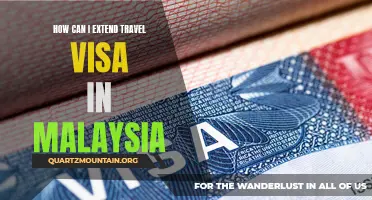
Tips for Extending Your Travel Visa in Malaysia
- Apr 13, 2024

The Ultimate Guide: How to Travel from Moscow Airport to the City
- May 18, 2024

Smart Tips for Saving Money on Family Travel with Kids
- May 13, 2024
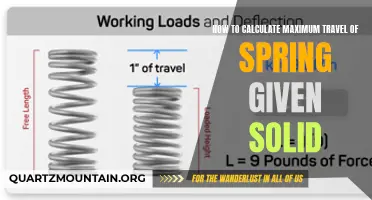
Determining the Maximum Travel of a Spring Using Solid Measurement
- May 08, 2024

Can I Travel with Any Stroller in an Airport?
- May 15, 2024

Signs that Indicate You May Be on the Travel Blacklist
- May 11, 2024
You will be redirected to your dashboard shortly. We will also call you back in 24 hrs .
- Trang An Vietnam Your Perfect Holiday Spot Amidst Nature
30 May 2024
Imagine being surrounded by golden rice fields, huge limestone mountains, majestic caves and pristine blue rivers inviting you for a long walk or a scenic boat ride. Sounds right out of a fairy tale? Not at all. The panoramic landscape of Trang An, Vietnam , is ready to offer you all this. Popular as ‘Halong Bay on land’, Trang An will free your mind with its mesmerising combination of natural beauty and rich heritage. In 2014, Trang An was recognized by UNESCO as a World Cultural and Natural Heritage Site. Therefore, the Trang An, Vietnam landscape complex is significant among nature lovers and environment enthusiasts.
What To Expect At Trang An Vietnam
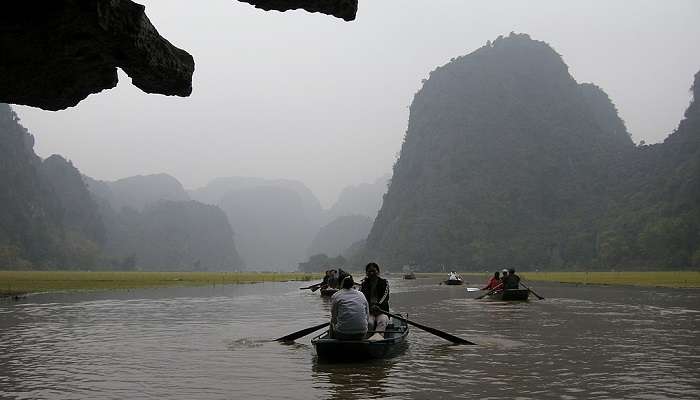
Image Credit: Vyacheslav Argenberg for Wikimedia Commons
Explore the majestic limestone karsts with boats. These huge mountains create a remarkable backdrop against the golden paddy fields. These limestone mountains offer many riddles to solve. A boat ride is the best way to enjoy the vibe of Trang An, Vietnam. It will take you to a peaceful escape from the rushed and boring life in the city into the embrace of the Vietnamese countryside. Besides its natural beauty, Trang An, Vietnam is the key centre of many cultural and historically significant attractions. Several ancient pagodas, temples and historical sites dot the landscape.
For outdoor adventure seekers, there are many activities to enjoy, such as hiking, cycling, and exploring the limestone caves. The stunning flora of the area makes it a perfect setting for discovery and exploration activities. Trek on the rugged limestone landscapes, cycle alongside the meandering waterways and rice fields and breathe in the area’s essence.
Must Read: Places To Visit In Vietnam With Family
The Attractions Of Trang An Vietnam
The tourist attractions of Trang An in Vietnam offer its visitors a diverse experience, each representing the region’s unique features. Below are some of the top tourist attractions of Trang An:
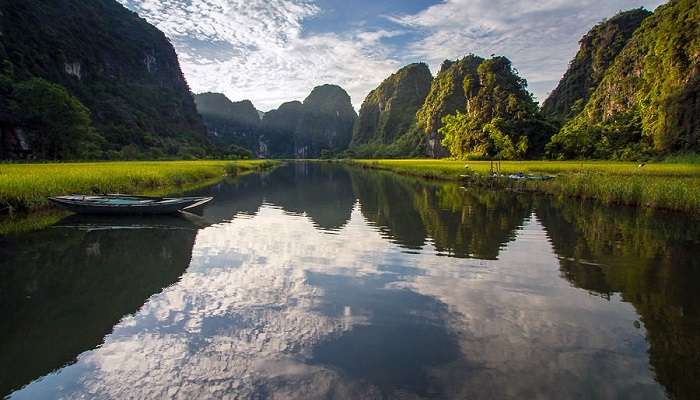
Image Credit: Hoang Giang Hai for Wikimedia Commons
Located near Trang An, Vietnam, Tam Coc is one of the best places to visit. Tam Coc means ‘three caves’. It is named after the three caves in the region, which you can see during a boat ride. The place is also popular for its limestone formations. Tam Coc stands tall against the backdrop of rice fields, making it a picturesque setting overall.
Best Time To Visit: March and June. Entry Fee: 120,000 VND
2. Bai Dinh Pagoda
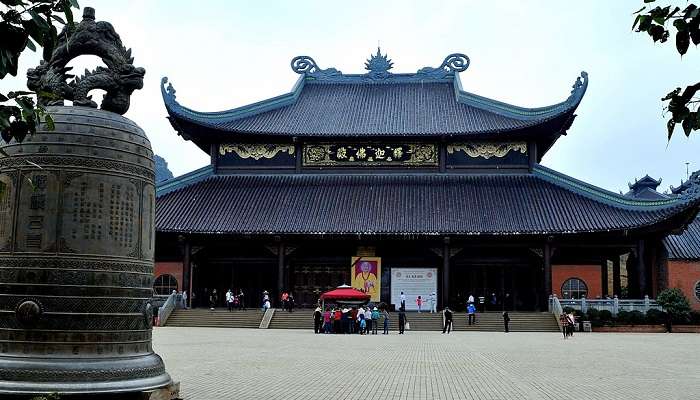
Image Credit: VŨ HÙNG for Wikimedia Commons
One of the largest Buddhist complexes in Vietnam, Bai Dinh Pagoda is one of the most revered religious sites in the province of Ninh Binh. The site is indeed a must-visit for cultural enthusiasts, as the Pagoda will certainly win their hearts with its stunning architecture, fine engravings, and panoramic green surroundings.The pagoda is unique in many ways. Its complex contains the largest gilded bronze Buddha. Moreover, it has the longest Pagoda Complex in Trang An, Vietnam, and the highest number of Bodhi trees in its vicinity.
Best Time To Visit: January to March Entry Fee: Free
Suggested Read: Lakes In Vietnam
3. Mua Cave
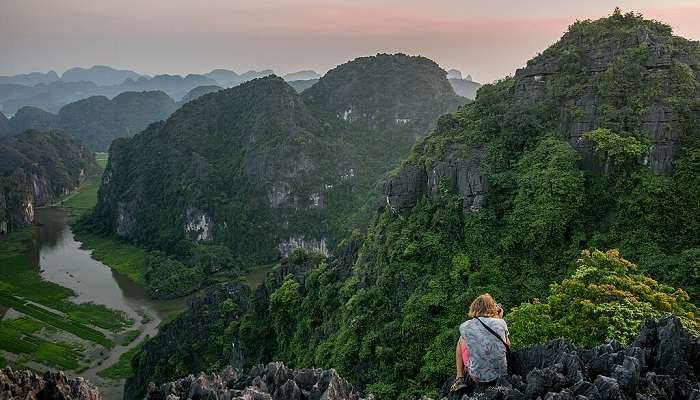
Image Credit: Eila Lifflander 3ilaliff for Wikimedia Commons
Enjoy the hiking experience at Mua Cave at the limestone mountain’s peak and the breathtaking countryside views. There are a series of steps that you need to climb to reach the summit. But the effort will truly be worth it because you will be rewarded with stunning views of rice fields, zig-zag rivers and limestone formations. Whether you reach the cave at sunrise or sunset, you will capture some Instagram-worthy panoramic shots from Mua Cave.
Best Time To Visit: November to April Entry Fee: 100,000 VND
4. Van Long Nature Reserve
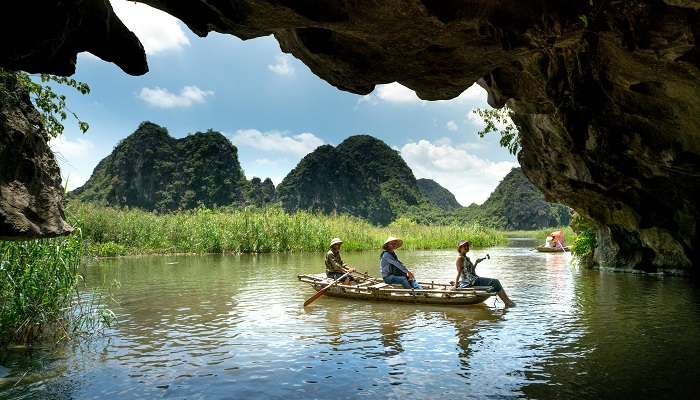
Image Source: pexels
If you are an ecotourism enthusiast, Van Long Nature Reserve can be your perfect destination. Its serene beauty and peaceful setting will remove the stress of your mundane city life. It is considered the largest wetland in the Northern Delta. This nature reserve is famous for its diversity and being home to many rare animal species. The Van Long Nature Reserve is the centre of attention for many researchers, from all over the world. The entire area of Van Long Nature Reserve is not accessible to humans, and about 4 ha is frequently submerged underwater. However, you can take a boat around the Seancerine wetland area and witness the biodiversity and abundant natural beauty of Van Long Nature Reserve. Interestingly, some movie King Kong—Skull Island scenes were shot in the nature reserve.
Best Time To Visit: November to April Entry Fee: 40 000 VD
Suggested Read: Places To Visit In Vietnam
5. Trang An Film Studios

Movie buffs must not miss a fun visit to the Trang An Film Studios. Numerous Vietnamese and international films have been shot in this studio. You can understand the filmmaking process and see the iconic film sets up close. In 2017, Trang An was the filming location for The blockbuster Kong—Skull Island. Many exotic locations of Trang An appear in the movie.
In the movie, the mystic peaks and rivers are transformed into the monstrous homes of several supersized monsters and King Kong. In fact, the entire Ninh Binh province is a popular destination for movie producers not only from Vietnam but also around the world. Its lush green scenery becomes an ideal romantic setting for domestic and foreign filmmakers. For the Hollywood movie Peter Pan, Warner Brothers selected Trang An’s beautiful rice fields as one of its locations.
Best Time To Visit: January to March Entry Fee: 300K VND
When To visit Trang An Vietnam

The best time to visit Trang An, Vietnam, to explore the region fully is during the dry season. This time, you will enjoy the weather since it is not too humid but largely pleasant, ideal for sightseeing and outdoor activities. The cooler temperatures make outdoor activities like boating, hiking and cycling enjoyable. This season, the skies are clear, with little to no rainfall.
However, if you prefer some Sun and warmer weather, March to April offers a much more dynamic landscape after the winter months. However, the wet season, from May to October, sees higher temperatures, more humidity, and frequent rains. You may find the landscape lush green in this season, but all the fun adventure activities, such as boating, cave exploration, and hiking the limestone mountains, may be unavailable.
Suggested Read: Tam Coc In Vietnam
Local Food At Trang An Vietnam
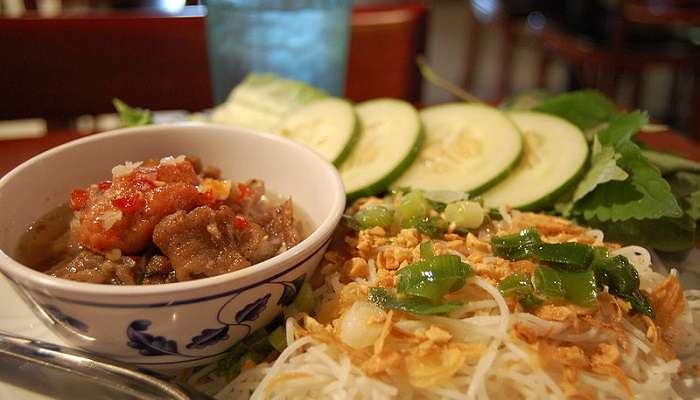
Image Credit: Stuart Spivack for Wikimedia Commons
Trang An, Vietnam will not just allure you with its natural beauty; its delicious local cuisine also has its charm to find its way to your stomach and arouse your palette. Some of the popular Vietnamese dishes are aromatic goat meat dishes, stir-fried mountain snails with lemongrass, crispy burnt rice,grilled fish and so on. Moreover, you can try fresh spring rolls, grilled pork and vermicelli combo on your Trang An, Vietnam trip.
Further Read: Caves in Halong Bay
Trang An, Vietnam, is a land distinctly marked with lush greenery and rich cultural heritage. Its stunning landscape is a perfect mix of natural and cultural elements. From Naturalists to adventure seekers, this place has something for everyone. Now that you have all the essential information about the Trang An Landscape Complex in Vietnam, plan your trip to Vietnam today.
For our editorial codes of conduct and copyright disclaimer, please click here .
Cover Image credit: Richard Mortel for Wikimedia Commons
Frequently Asked Questions About Trang An Vietnam
What is Trang An in Vietnam?
Trang An is a scenic landscape complex in the Ninh Binh province of North Vietnam. Famous for its natural uniqueness and diversity, it is recognised as a UNESCO World Heritage Centre.
What is the best time to visit Trang An, Vietnam?
Though May to October is ideal for a visit to Trang An, Vietnam as after winter the summer landscape of the region looks refreshingly vibrant. But, the best time to visit, which is preferred by most tourists, is from November to April, when the weather is pleasant and there is nothing that holds you back from exploring Trang An, Vietnam to the fullest.
What are the key attractions of Trang An, Vietnam?
The key attractions which beckon tourists from around the world are Trang An Landscape Complex, Trang An Film Studios, Mua Cave, Van Long Nature Reserve, Bai Dinh Pagoda, Tam Coc Caves and more.
How long does it take to tour Trang An Vietnam?
It would take no less than three hours of boat tour through the caves in the limestone mountains and enjoy the panoramic natural beauty.
When to go to Trang An?
The best time to go to Trang An is the beginning of the year, from January to March, the weather is cool during this time. This is also the festive season at Bai Dinh pagoda.
People Also Read:
Places To Visit In Ireland Places To Visit In Berlin Places To Visit In Germany
Recent Posts

Enjoy The Vibrant Nightlife At Ta Hien street

Bai Dinh Pagoda Is One Of Legendary Buddhist Complex

Temple Of Literature In Vietnam Venerating Scholars

Top 7 Things To Do In Hoi An For A Wonderful Experience
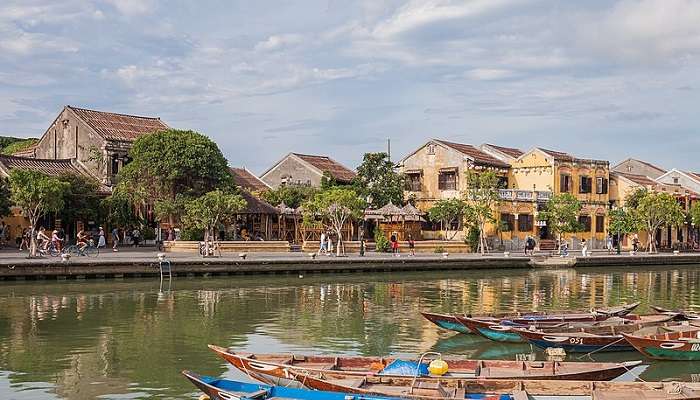
Places To Visit In Hoi An That Are Truly Stunning
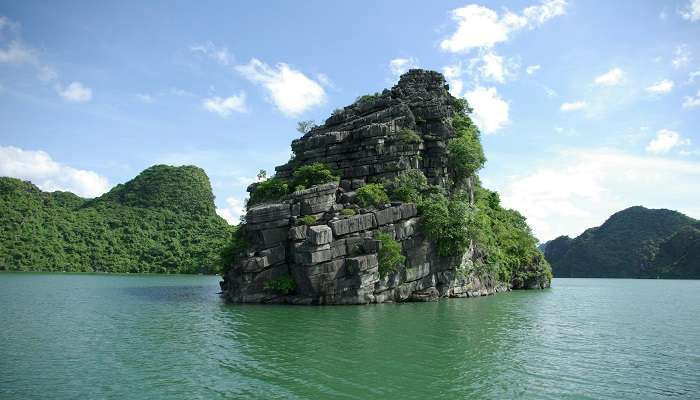
Places To Visit In Vietnam With Family For A Memorable Experience
Trending Blogs

20 Mysterious Places In India To Visit In 2024 More Bizarre Than The Bermuda Triangle

10 Scariest Roads In India That Are A Driver’s Nightmare

101 Places To Visit In India Before You Turn 30 in 2024

35 Exotic Places To Visit In December In India 2024 To Enjoy A Surreal Vacation

60 Best Honeymoon Destinations In India In 2024

95 Best Honeymoon Destinations In The World In 2023 For A Romantic Escape!
Best Places To Visit In India By Month
Best places to visit outside india by month.
- TravelTriangle
- International
- Vietnam »
- Tour Packages
- Honeymoon Packages
- Family Packages
- Budget Tour Packages
- Luxury Tour Packages
- Adventure Tour Packages
- Group Tour Packages
- Maldives Tour Packages
- Bali Tour Packages
- Dubai Tour Packages
- Singapore Tour Packages
- Thailand Tour Packages
- Europe Tour Packages
- Sri Lanka Tour Packages
- Tour Packages From Delhi
- Tour Packages From Mumbai
- Tour Packages From Bangalore
- Tour Packages From Chennai
- Tour Packages From Kolkata
- Tour Packages From Hyderabad
- Tour Packages From Ahmedabad
- Thailand Tourism
- Bali Tourism
- Singapore Tourism
- Maldives Tourism
- Mauritius Tourism
- Dubai Tourism
- Europe Tourism
- Hotels in Thailand
- Hotels in Maldives
- Hotels in Mauritius
- Hotels in Bali
- Hotels in Dubai
- Hotels in Singapore
- Hotels in Sri Lanka

- Forgot your password
- Join Lotusmiles Now
- Search Search Search
Select Region and Language
Country/Region
Best Fare Finder
Hplsecondmegamenu.
- Flights from San Francisco to Ho Chi Minh City
- Flights from San Francisco to Ha Noi
- Flights from San Francisco to Da Nang
- Flights from Ho Chi Minh City to Da Nang
- Flights from Ho Chi Minh City to Hanoi
- Flights from Hanoi to Da Nang
Top Destinations
- Ho Chi Minh city
Popular Countries
- Flights to Vietnam
- Flights to Japan
- Flights to Cambodia
- Flights to Thailand
- Flights to Taiwan China
- Flights to Singapore
- All Countries
Timetable & Route map
- Worldwide route map
The experience
- Business class
- Premium Economy class
- Economy class
- Inflight entertainment

- Baggage calculator
- Hand baggage
- Free checked baggage
- Excess baggage
- Special baggage
- Restricted baggage
- Baggage claim
- Online check-in
- Kiosk check-in
- Telephone check-in via hotline
- Airport check-in
Airport & Transit
- Airport guides
- Lotus lounge
- SkyPriority
Travel Guide
- Travel document
- Entry and exit/transit regulations
How to book a flight & make payment
- How to book air tickets online
- Payment methods
- How to refund tickets
- How to change tickets
- How to cancel bookings
Book a flight & Manage booking
- Book a flight
- Manage booking
Fare conditions
- Fare types & rules
- Taxes, fees, charges & surcharges
Additional services
- Vietnam Airlines Sky Pass
- Advance seat selection
- All additional services
Special services
- Travelling with pets
- Special meals
- Infants and children
- Unaccompanied minors
- Passengers with disabilities
- Pregnant passengers
- Passengers with medical conditions
- Special service charges
Member benefits
- Introduction
- Membership benefits
- Membership eligibility
- Lotusmiles Enrollment
- Manage my account
- Family account
- LotuSociety
- Mile accumulation regulations
- Banking and Finance Partners
- Other partners
- Claim your miles
- Spend and Earn
- Accumulated miles redemption
- Purchase tickets by cash and miles
- Miles redemption for award tickets
- Redeem miles for baggage awards
- Redeem miles for upgrade
- Other miles usage
- Donate miles
Buy & Transfer miles
- Buy qualifying miles
- Buy & Transfer bonus miles
Products & Offers
- Lotus lucky number
- Lotus insurance
- Lotus offers
- Search Vietnamairlines.com
- Useful Information
- 15+ Best Attractions to Visit in Da Nang Vietnam | 2023
- 25 Must-Visit Attractions in Hue Vietnam for First-Timers | 2023
- Best Month to Visit Hanoi & Wonderful Things to Do There!
- When Is The Best Time to Visit Da Nang Vietnam?
- Best Time to Visit Ho Chi Minh City - Advice from Locals
- Best Time to Visit Vietnam & Wonderful Things to Do There!
- Top 5 best places near Hanoi to visit
- 15+ Top Cities to Visit in Vietnam for Your Journey
- Coolest Time to Visit Vietnam & Things Not to Miss!
- Noi Bai Airport to Hanoi Old Quarter: Distance & 4 Best Transport Options
- The Detailed Guide to Travel to Hoi An by Plane
- 20 Enchanting Hanoi Sites to Visit for Travelers
- Advantages & Disadvantages of 3 Ways to Get from Hanoi to Hoi An
- Is Ho Chi Minh City Worth Visiting? Pros and Cons Guide
- Is Ho Chi Minh City Safe for Tourists? Safe Travel Tips for First Timers
- Is It Safe to Visit Vietnam? Facts about Vietnam & Safety Tips
- 15 Best Places to Visit in Hanoi at Night: A Guide to the City After Dark
- 15 Unmissable Places to Visit in Ho Chi Minh City
- 20 Most Must-see Places to Visit in Hoi An (2024 Guide)
- Incredible things to do in Da Nang - Vietnam
- A Traveler’s Detailed Guide to Travel from Hanoi to Ho Chi Minh City
- Hanoi to Hue | Pros and Cons of Traveling by Flight, Train, Sleeper Bus
- Travel to Ho Chi Minh City - A Guide for Newcomers
- Visit Hanoi: A Comprehensive Travel Guide
Hoi An Ancient Town: A Comprehensive Tourist Guide
Visit Hoi An Ancient Town to explore its charming lantern-lit streets, historic architecture, vibrant markets, and rich cultural heritage. An unforgettable experience awaits!
Let’s visit Hoi An Ancient Town and discover the allure of a UNESCO World Heritage site in Vietnam. With its meticulously preserved architecture, narrow, lantern-lit streets, and tranquil ambiance, Hoi An has rightfully earned its place as a top tourist destination, attracting visitors from across the globe. By sharing useful information about famous attractions, exciting activities, and valuable tips to make the most of your memorable journey, this comprehensive guide serves as your trusted companion for your Hoi An adventure.
An Introduction to Hoi An Ancient Town
The best time to visit hoi an ancient town.
We suggest visiting Hoi An Ancient Town between February and May when it is usually pleasantly cool and with less rainfall. During this time, you might have chances to engage in significant local festivals such as An Bang Flower Festival and the Hoi An Cultural Festival.
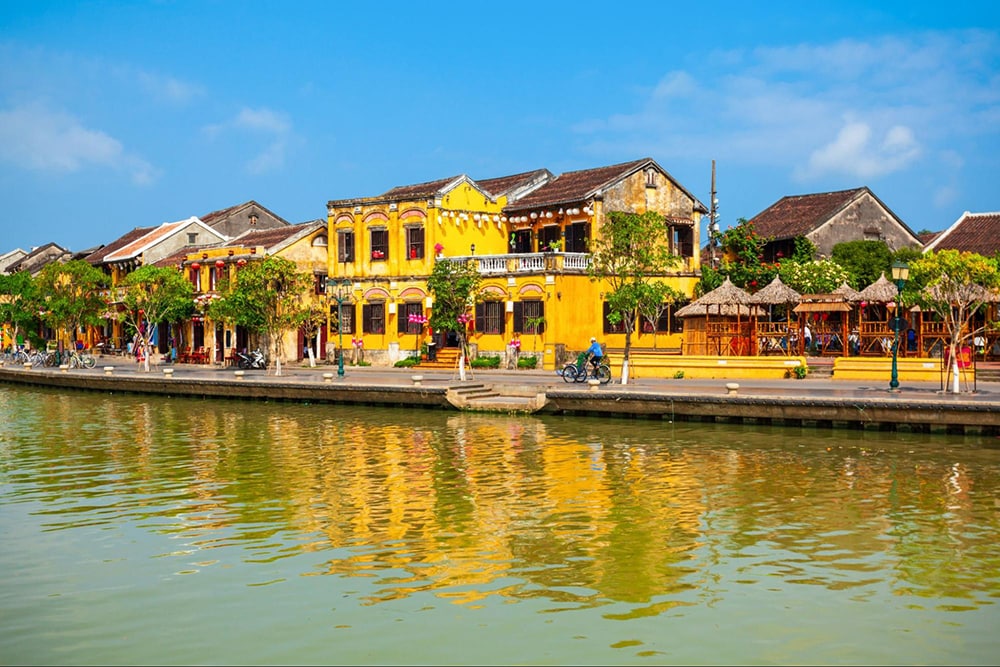
A beautiful sunny day in Hoi An Ancient Town
Alternatively, August to October is another ideal period if you prefer less crowds and more affordable travel prices. It offers opportunities to unveil historical landmarks and savor local cuisine without the overwhelming tourist influx.
Must-join Festivals in Hoi An Ancient Town
As mentioned, Hoi An Ancient Town is known for its rich cultural heritage, showcased by many vibrant festivals.
Wandering Soul Day (Vu Lan)
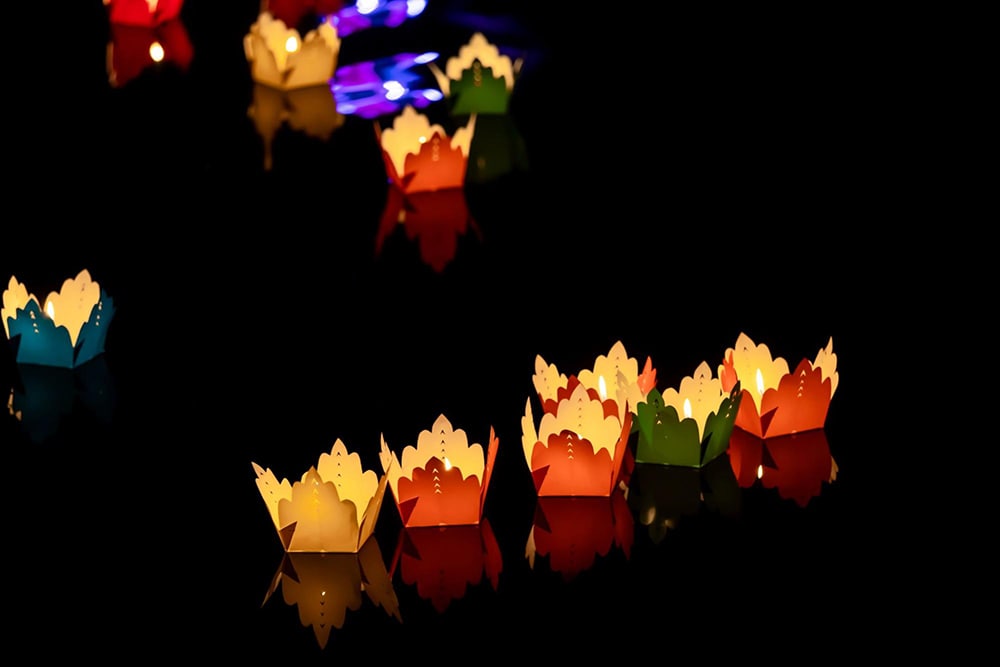
Colorful floating candles on Wandering Soul Day
- Time: The 15th day of the seventh lunar month;
- Place: Pagodas and temples e.g Japanese Covered Bridge, Quan Cong Temple.
Wandering Soul Day, or Vu Lan, is a festival of Vietnamese people to honor their ancestors and wandering spirits. While attending this festival, you not only immerse yourself in the local cultural traditions but also pay homage to your ancestors.
During the festival day, tourists and the locals usually go to the Japanese Covered Bridge and Quan Cong Temple within the ancient town to make offerings (e.g. flowers, fruits, food, incense, ghost money, etc.) and participate in traditional rituals.
Another significant activity is releasing lanterns or small boats with lit candles on rivers or lakes. This symbolizes guiding the wandering souls back to the realm of the afterlife and bringing those souls to heaven.
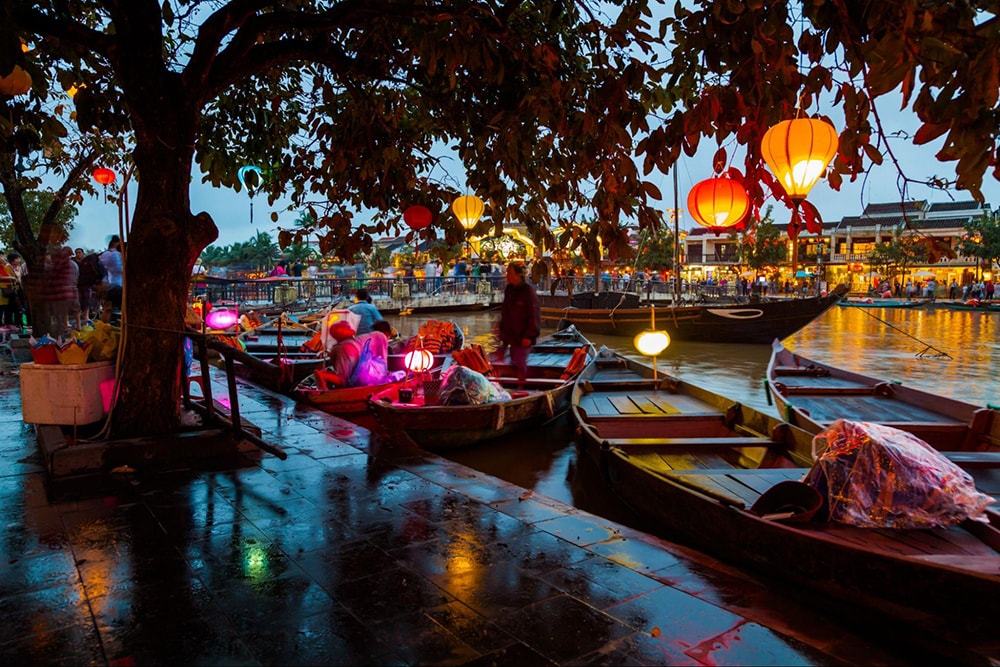
An important spiritual festival to show gratitude towards deceased parents
Since the festival is typically a religious activity in the ancient town, it is vital to show your respect and follow the local customs:
- Dress in modest attire that covers your shoulders, chest, and knees;
- Observe the locals quietly and follow their behaviors;
- Do not make loud noises or disruptions during religious rituals;
- Remember to ask for permission before you take photographs of ceremonies.
Whale Worshiping Festival (Cau Ngu)
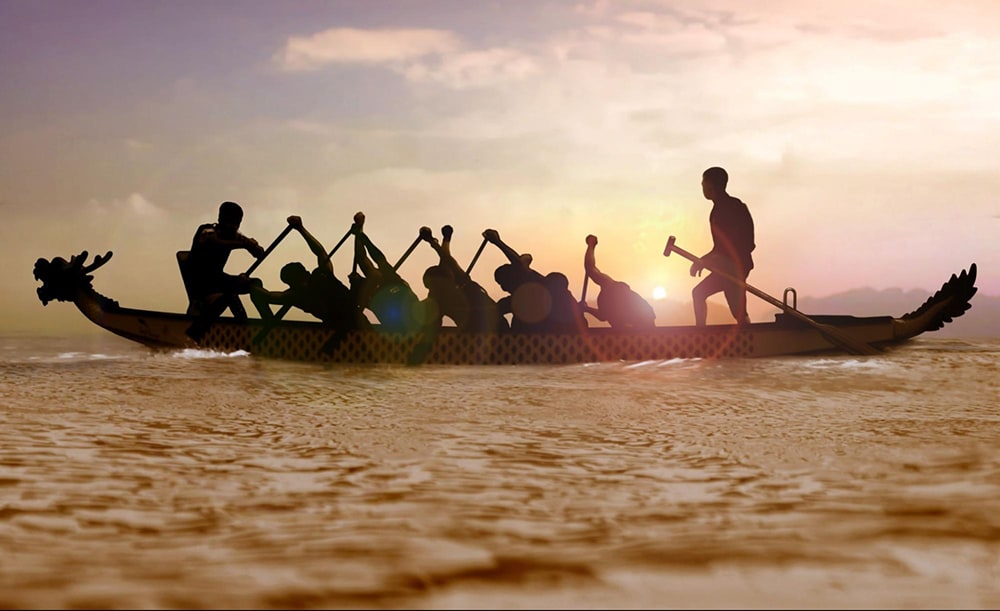
Dragon boat racing is a typical activity in the festival
- Time: The second week of the third lunar month;
- Place: Whale temples and the sea.
Every year, between March and April, the fishermen in Hoi An celebrate a significant worshiping ceremony, for two or three days, to pay homage to the Whale God and pray for all upcoming safe voyages and bumper fish hauls.
On the first day, the locals usually gather at the whale temple for numerous art and traditional practices. For example, there are “boi singing” performances (known as the Southern classic opera) during which people row a boat on the ground illustrating the daily fishing activities and sing to show gratitude to the whale.
On the next day, most participants will join a procession of boats from the whale temple to the sea. If you are lucky enough, you might catch a sight of the procession from the Ancient Town, taking the below notes:
- Visit the Ancient Town early because the procession usually happens at dawn;
- Always show a respectful demeanor during the ceremony and maintain silence;
- Be careful not to obstruct the procession and stay within the designated areas.
Nguyen Tieu Festival
- Time: The 15th day of the first lunar month;
- Place: The Ancient Town.
Since 2023, the annual Nguyen Tieu Festival has been officially recognized as a cultural heritage of Vietnam due to its distinctive features and cultural significance. Participating in this festival offers an opportunity to pray for peace and prosperity in the New Year.
In addition, the authority holds many activities on the venus of the Ancient Town, referring to the 2023 Nguyen Tieu Festival’s agenda for reference.
Similar to participating in other festivals, you should keep some main notes in mind:
- Respect the cultural heritage and local customs;
- Be careful of your surroundings to avoid any obstruction to the ceremonies;
- Prepare enough water and adequate food to experience a long-day festival.
Dragon Boat Festival (Long Chu)
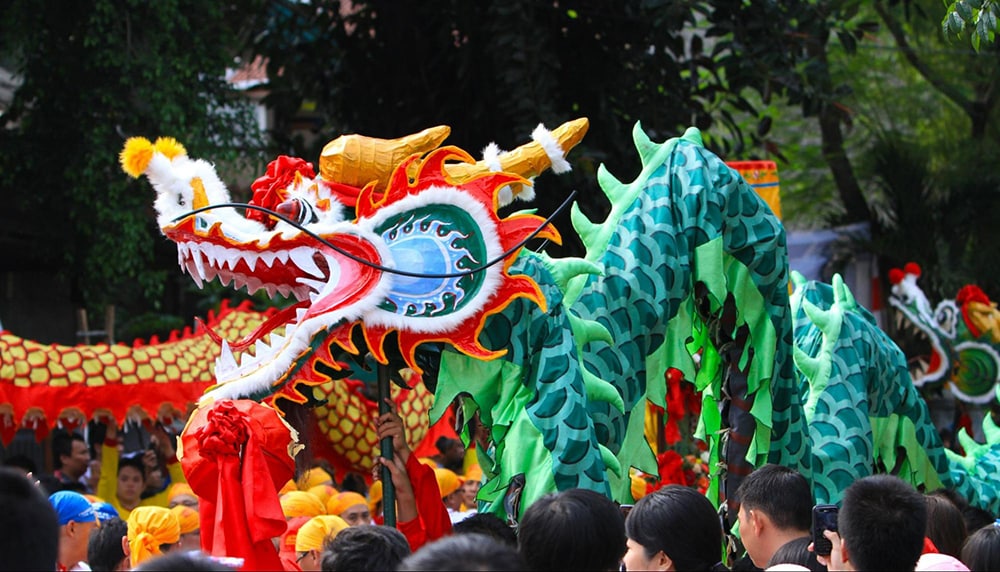
The festival not only promotes unity and patriotism but also preserves cultural customs
- Place: Coastal villages in Hoi An.
The Long Chu Festival, also referred to as the Dragon Boat Procession Festival, carries significant symbolism of kings, gods, and generals, while also serving as a means to ward off evil spirits and ensure the people's well-being and happiness. The Long Chu boats, meticulously constructed by talented bamboo craftsmen, usually feature a dragon shape with flags and lanterns placed inside.
The shamans, who act as the ceremony hosts, conduct rituals involving the burning of incense and placing talismans to ward off spirits, followed by casting spells to banish them into the sea. Furthermore, the local community engages in singing, dancing, and theatrical performances to commemorate the departure of unfortunate circumstances.
Usually, there is also a forging procession on the Thu Bon river near Hoi An Ancient Town, which is a great chance to familiarize yourself with the local customs. If you join the festival, remember to show respect for the religious practices during the event.
Lady Thu Bon Festival
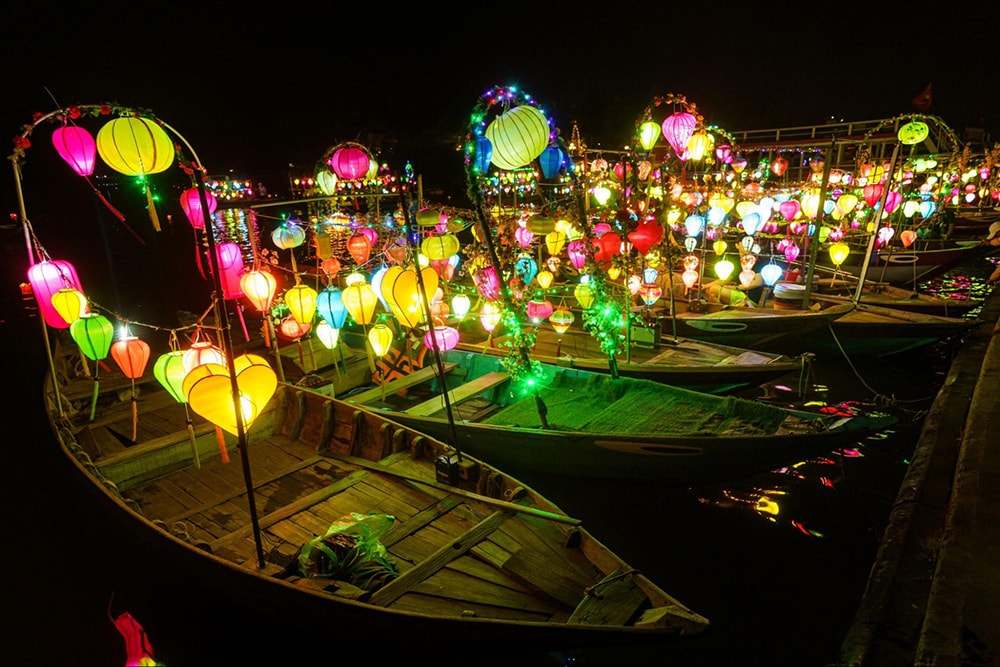
The above view of Thu Bon River is such a captivating scene
- Time: On the 12th - 13th days of the second lunar month;
- Place: Thu Bon River and Lady Thu Bon Temple.
The Lady Thu Bon Festival is a cultural celebration that honors Lady Thu Bon, a revered local deity who safeguarded the region. Legend tells of her selfless act to rescue her village from floods, leading to her divine status as the guardian of the Thu Bon River and its surroundings. The festival serves as an expression of gratitude and seeksLady Thu Bon's blessings, encompassing protection and prosperity.
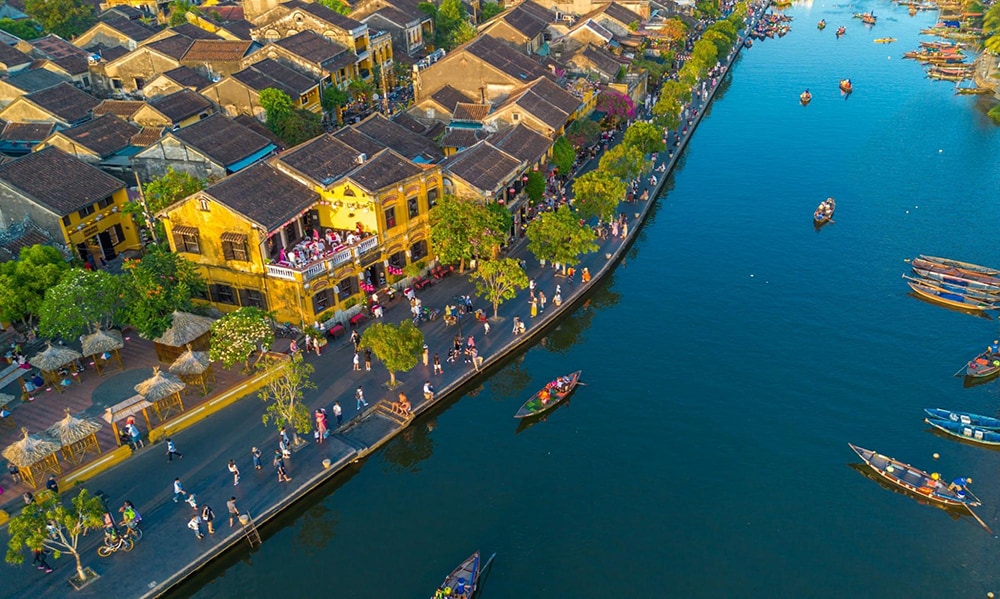
Tourists riding on Lady Thu Bon River
Participants engage in rituals and offerings at the Lady Thu Bon Temple, showcasing their gratitude and seeking blessings. A boat procession on the river, traditional performances, lantern lighting, processions, and parades are among the highlights.
The festival also offers food and craft stalls, fostering community engagement and providing an opportunity to celebrate, interact, and preserve the region's cultural heritage through religious and spiritual activities. Since the festival is usually very crowded, you should be mindful of your belongings.
Mid-Autumn Festival (Trung Thu)
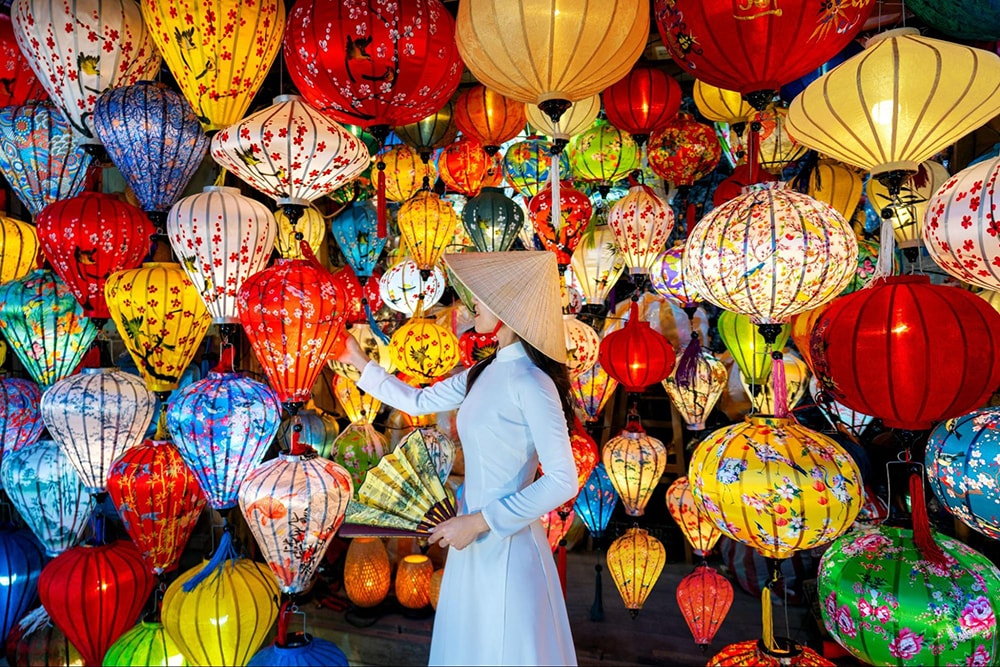
The Ancient Town becomes extra colorful in Mid-Autumn Festival
- Time: On the 15th day of the eighth lunar month;
- Place: Hoi An Ancient Town.
If you visit the Ancient Town in late September or early October, you might have the opportunity to take part in the Mid-Autumn Festival, a traditional occasion for Vietnamese people to gather with family and pay tribute to abundance and blessings.
Streets of the town are usually decorated with vibrant lanterns, symbolizing unity and good fortune where the locals and tourists happily indulge in festive meals, and appreciate the full moon while enjoying cultural performances, processions and parades. There are also customs such as moon worshiping ceremonies and the release of floating lanterns on the river, creating a magical and captivating atmosphere.
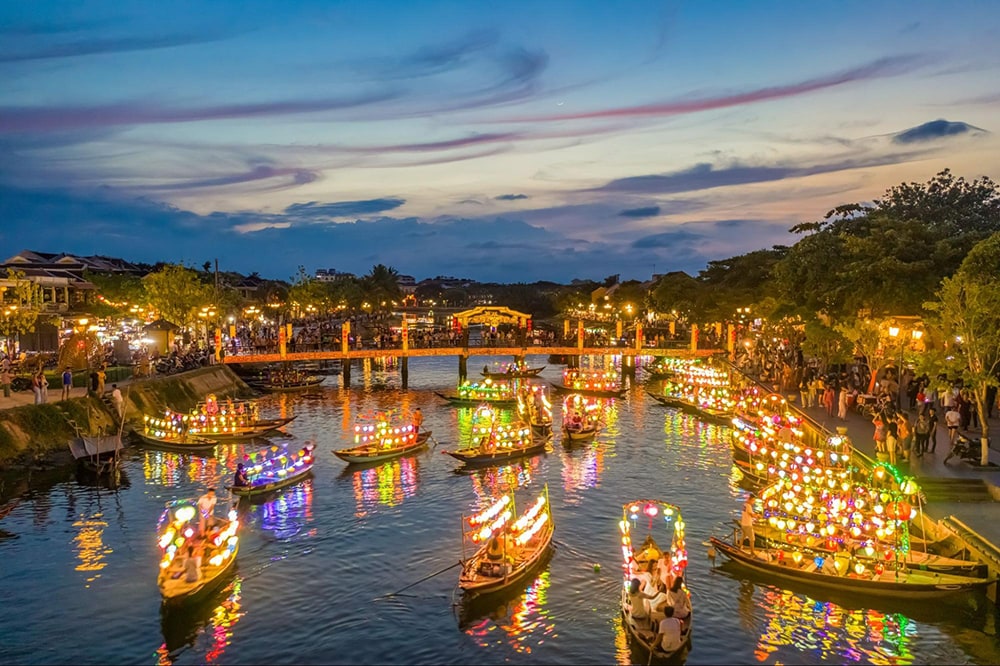
People gather together to enjoy the festival
Keep in mind that the specific activities and traditions during the Mid Autumn Festival in the Ancient Town can differ depending on the location and local customs. To obtain the most accurate and current information, it is recommended to consult local sources or event organizers.
10 Things to Do Around Hoi An Ancient Town
Although the ancient town is not too large, there are unlimited activities you can enjoy to make the most of your travel time. The following are the most noticeable things!
Take a stroll through The Ancient Town streets
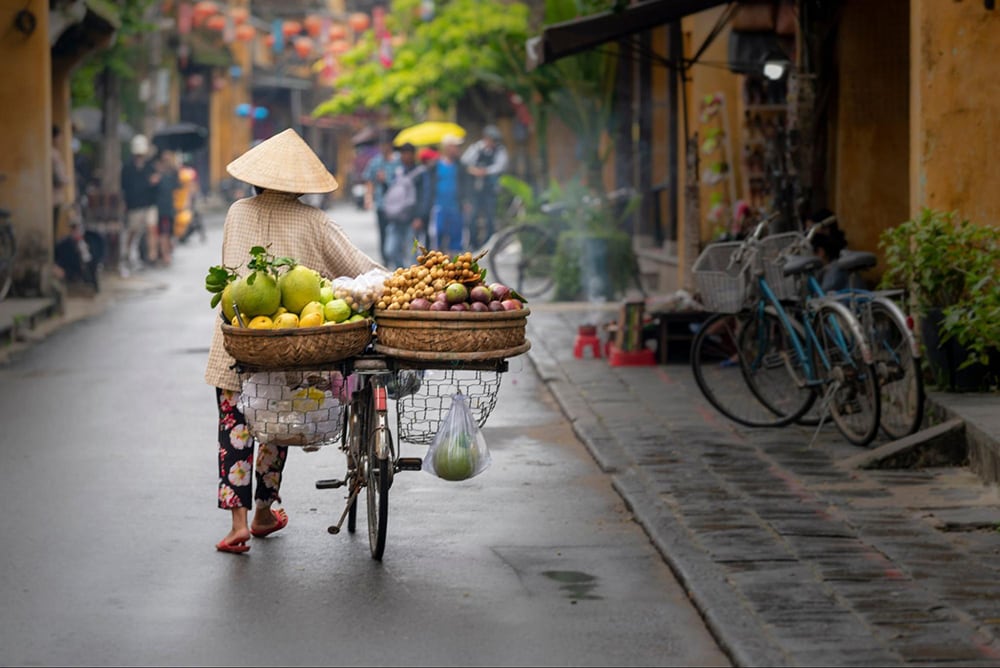
The quiet and peaceful Ancient Town’s street in the shoulder season
As you stroll through The Ancient Town's streets, you'll encounter a fascinating blend of architectural styles, including Chinese, Japanese, and European influences. Admire the intricately carved wooden facades, colorful lanterns, and charming storefronts. There are numerous shops and boutiques where you can find local handicrafts, silk products, and tailor-made clothing.
While you walk around the town, do not forget to explore the well-known destinations and sample the delightful street food and traditional Vietnamese dishes at the many quaint cafes and restaurants lining the streets.
- Tan Ky ancient house;
- Phung Hung old house;
- Guangdong Assembly Hall;
- Pagoda Bridge.
Admire the architecture of the Japanese Covered Bridge
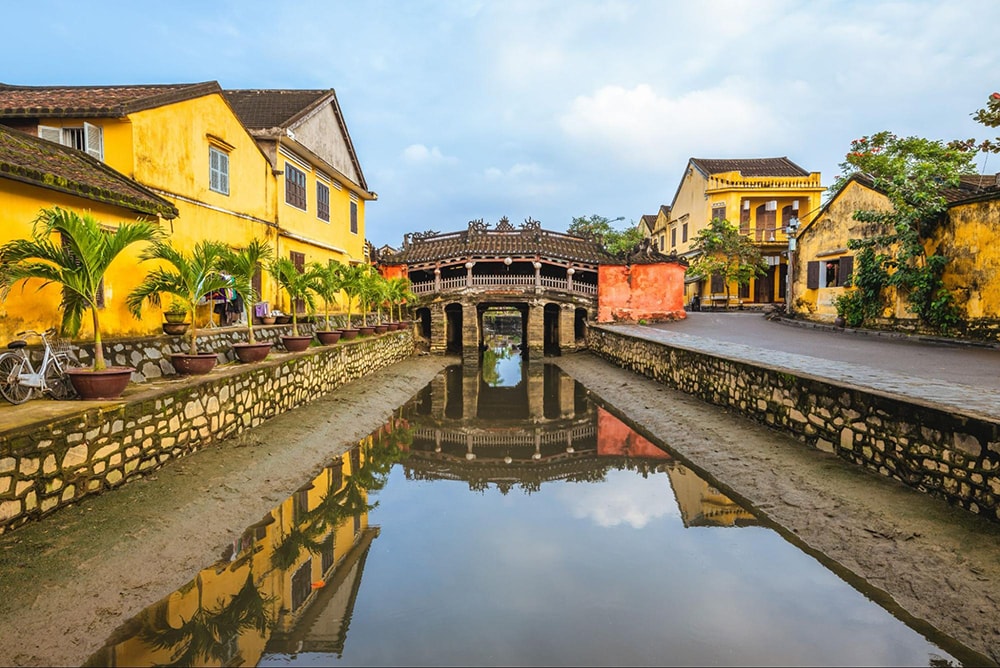
The Japanese Covered Bridge is a remarkable architectural marvel
Originally constructed in the 16th century, the bridge served as a link between the Japanese and Chinese quarters of Hoi An, symbolizing the harmony and cultural exchange between the two communities. Today, it stands as a testament to the city's past and offers a picturesque backdrop for photographs, allowing visitors to immerse themselves in the rich history and captivating architecture of The Ancient Town.
The bridge serves as a focal point for various festivals and events in Hoi An, such as Mid-Autumn Festival or Lunar New Year when it is adorned with lanterns and decorations, creating a magical ambiance. Check the local calendar to see if there are any upcoming festivities coinciding with your visit and join in the celebrations.
Take a Boat Ride on the Thu Bon River and Hoai River
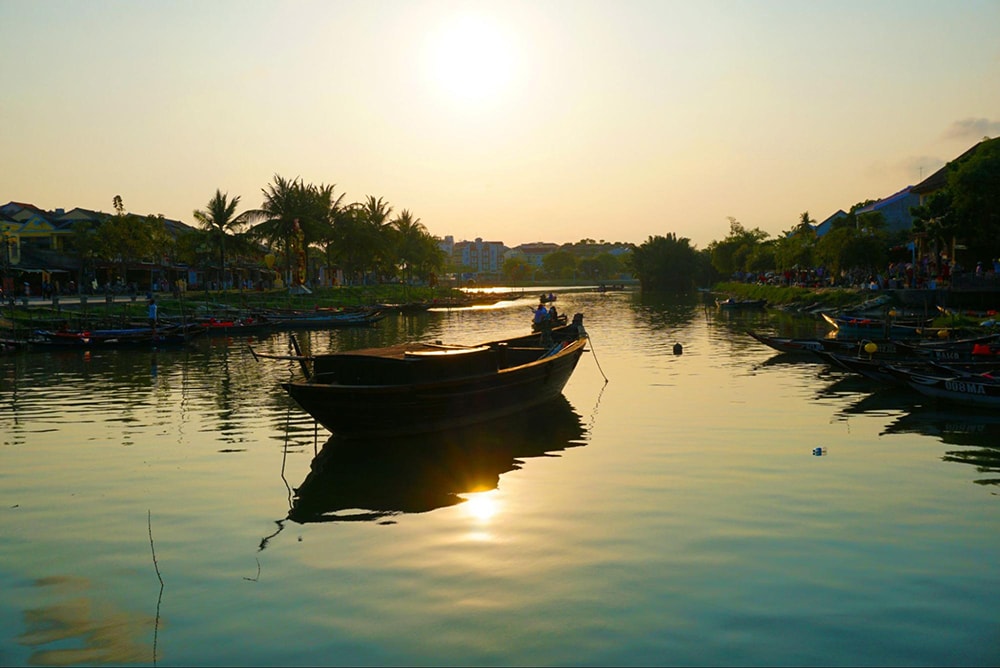
Admire the tranquil town while riding a boat on Thu Bon river
Under the Japanese Covered Bridge is the Thu Bon river where you might indulge in a picturesque boat ride and be treated to stunning views of the countryside, riverside villages, and iconic landmarks. Witness the traditional boats, colorful fishing nets, and the reflection of the renowned bridge, all adding to the enchantment of the experience.
The boat ride also takes you through the lively Hoai River, giving you a chance to soak in the vibrant atmosphere of Hoi An Ancient Town, with its charming houses adorned with lanterns, bustling street performances, and mouth watering street food. Particularly, during the sunset, the sky is painted with vibrant colors, creating a breathtaking backdrop for your river journey or in the early morning, the rivers are usually calm, and the air is cool and refreshing.
Attend a Cooking Class

Let’s witness chefs make traditional Vietnamese food and even join hands to make some
For food lovers, we suggest embarking on a local culinary adventure by attending a cooking class. Hoi An is known for its mouthwatering dishes, and a cooking class provides a wonderful opportunity to uncover the secrets behind these cuisine treasures such as pho, banh mi, and fresh spring rolls, discovering the art of creating harmonious flavors and incorporating fragrant herbs and spices.
Beyond the culinary expertise, attending a cooking class in Hoi An provides a unique cultural immersion, offering insights into the local way of life, traditional cooking methods, and the cultural significance of ingredients.
Visit the Assembly Halls
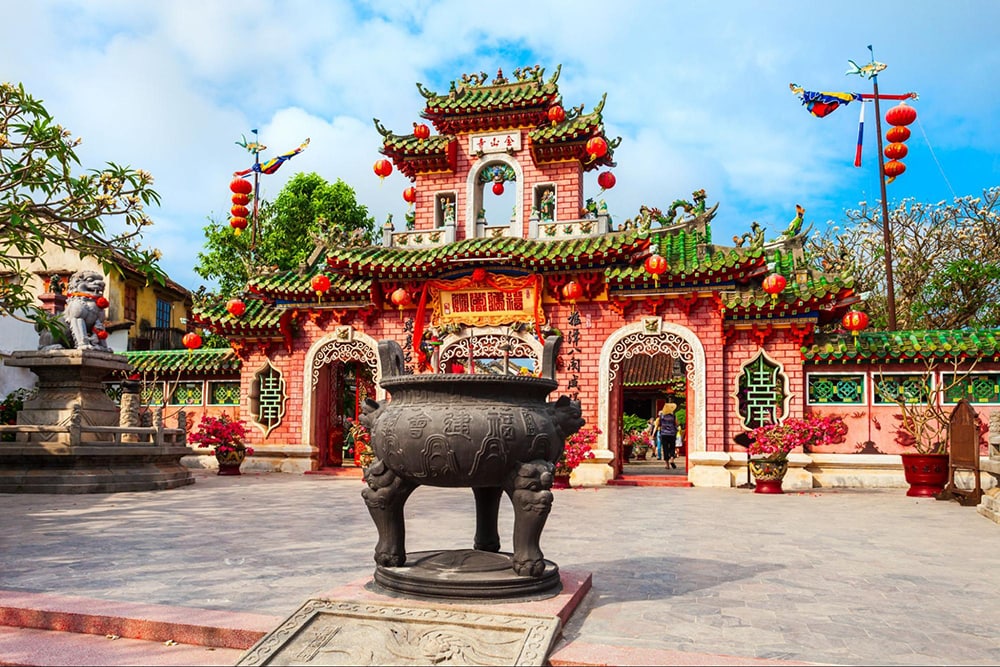
The Fujian Assembly Hall, a stunning architectural gem dedicated to the sea goddess
Or, provided you are history-adventurers, do not forget to visit Assembly Halls built for decades, each of which offers a distinctive architectural style, historical significance, and vibrant community atmosphere. Most halls feature rich heritage of Chinese communities in the Ancient Town.
Here are a few notable Assembly Halls for your reference:
- Fujian Assembly Hall (Phuc Kien);
- Quang Trieu Assembly Hall;
- Trieu Chau Assembly Hall;
- Cantonese Assembly Hall.
Relax on An Bang Beach
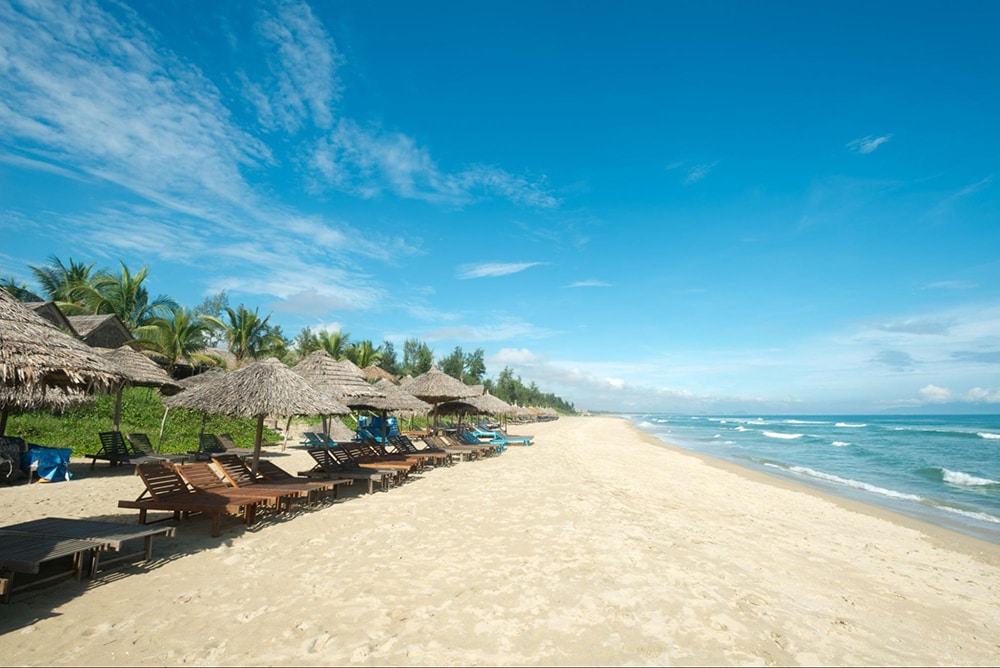
An Bang Beach offers you with an idyllic escape from the bustling city
Situated just around 5 kilometers to the east of the Ancient Town, the pristine An Bang beach offers a peaceful retreat from the vibrant city atmosphere. There are a variety of activities to cater to different preferences, from thrilling water sports to taking leisurely strolls along the shoreline, or simply reveling in the breathtaking coastal views. Additionally, you can explore the nearby fishing village to gain insights into the local way of life, or treat your taste buds to delectable seafood dishes at one of the beachfront restaurants.
If possible, you should plan a visit on weekdays rather than weekends and on dry days when there are fewer visitors, providing a more relaxed and uncrowded beach experience. You'll have more space to unwind, lounge under the sun, or take a leisurely stroll along the shore.
Cycle to Tra Que Vegetable Village
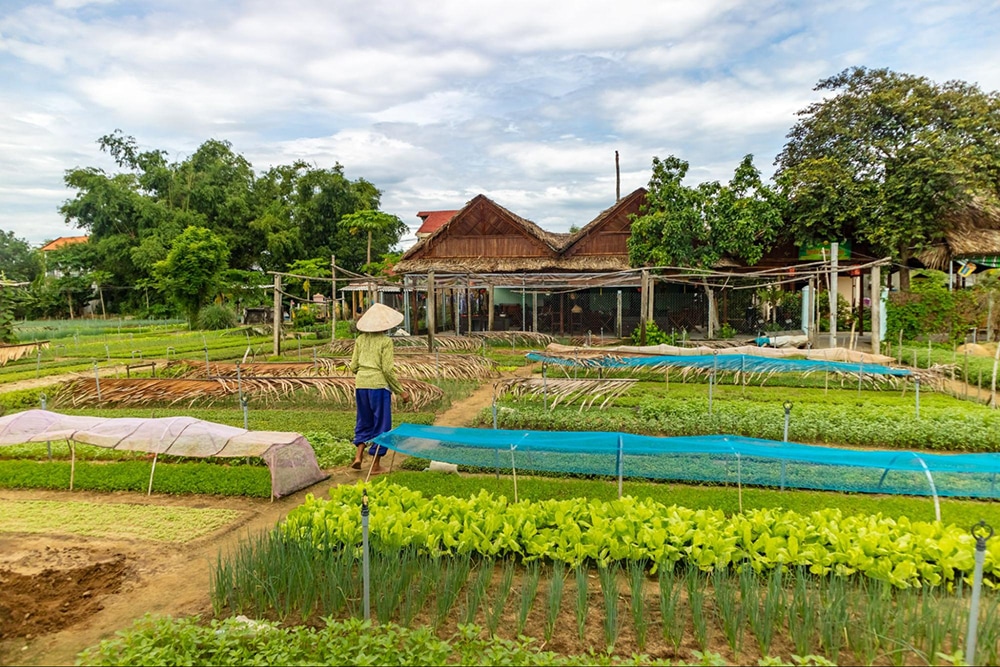
A vegetable village is only 4 kilometers from the town center
Tra Que Vegetable Village is easily reachable by bicycle in 20 minutes from the center of the Ancient Town. On the way, you might admire picturesque paths, passing by lush rice fields, charming villages, and waterways and your destination treats you with vibrant fields of herbs and vegetables.
Just engage in interactive activities such as assisting local farmers to discover the principles of organic farming, and even trying your hand at planting or harvesting vegetables. This experience will deepen your understanding of the dedication and hard work involved in cultivating the fresh ingredients.
Get Custom Tailored Clothing

Cleverful tailor in Hoi An
In recent years, Hoi An’s tailors have gained a reputation among foreign tourists for its remarkable ability to produce custom clothing within a short timeframe. The process itself is a delightful immersion. Browse vibrant fabric selections, discuss intricate details with expert tailors, and witness the meticulous transformation from vision to garment.
Unlike mass-produced clothes, each stitch embodies craftsmanship and reflects your unique preferences. For a seamless experience, remember to be clear about your expectations and budget, and don’t be afraid to bargain or walk away if you are not happy with the result.
Below are some well-known tailor shops to make your custom clothes before you get back to your country:
- Yaly Couture;
- A Dong Silk;
- Be Be Tailor;
- Kimmy Custom Tailor;
- Thu Thuy Silk.
Visit the Lantern Market and buy souvenir
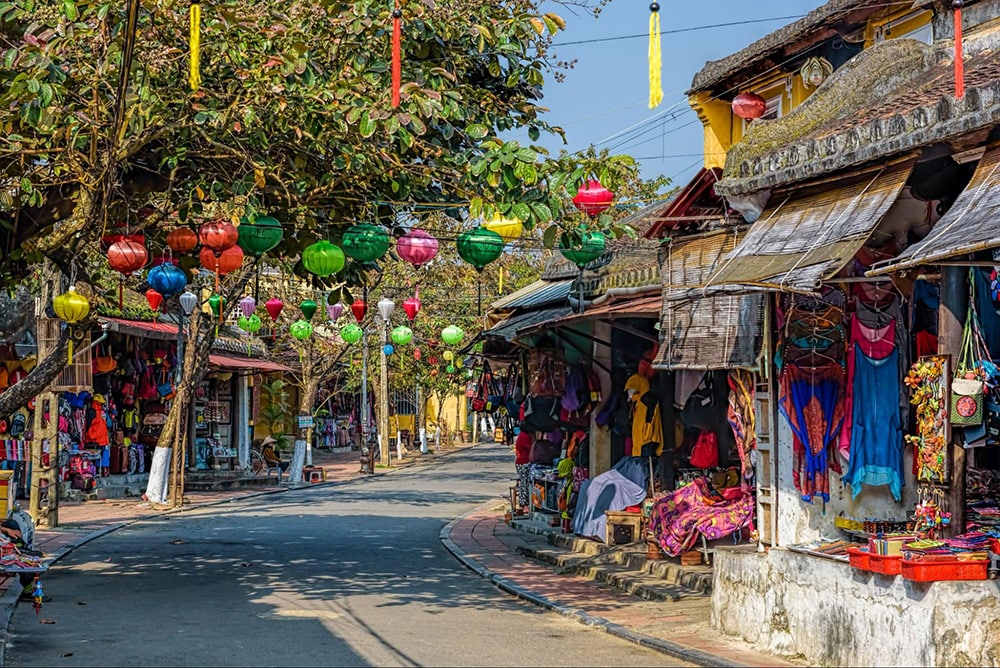
Hoi An Lantern Market where you can buy souvenirs home
The market is a wonderful place where you can discover the local culture and lifestyles. It presents a wealth of cherished mementos that embody the essence and character of the old town.
There, you might also explore the bustling stalls adorned with exquisitely crafted lanterns, intricate handicrafts, and authentic Vietnamese artworks, offering an abundance of unique and memorable keepsakes to choose from.
Take a Day Trip to My Son Sanctuary
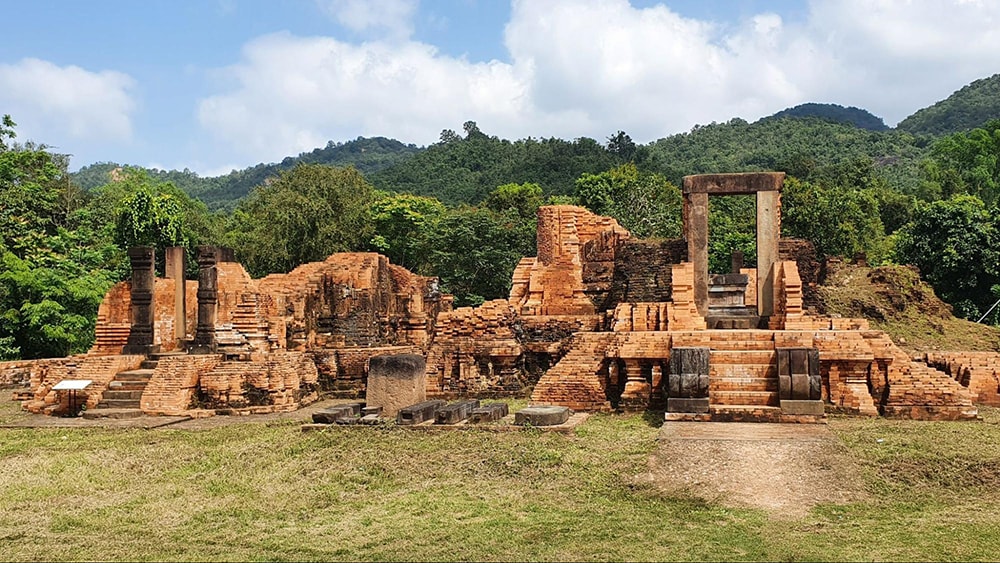
The sanctuary holds immense historical and cultural significance
My Son Sanctuary is a UNESCO World Heritage site, located 40 kilometers away from the center of Hoi An town. It features a complex of Hindu temples dated back to Champa civilization in the 4th - 14th centuries.
A visit to My Son Sanctuary allows you to delve into Vietnam's rich past, exploring the unique architectural style of stone carvings and spiritual ambiance, and learning about the cultural traditions of the Champa people.
Watch Hoi An water puppet show
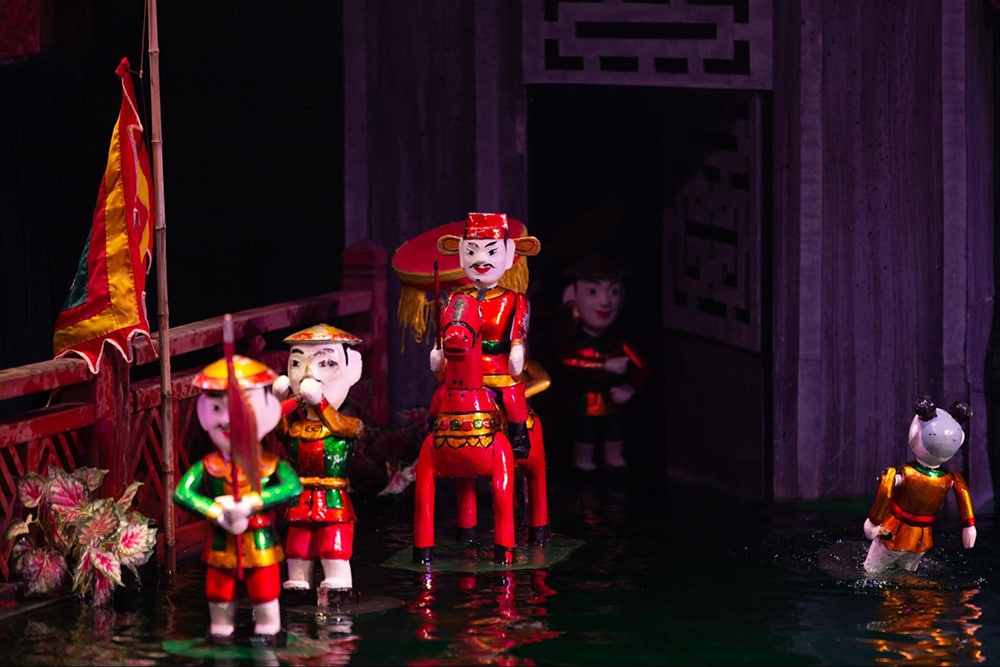
Water puppet show - a unique storytelling art of Vietnamese people
The water puppet show is a captivating attraction in Hoi An, introduced to visitors in late 2015. Alongside well-known performances from Vietnamese water puppetry, such as Uncle Teu's Prelude, Dragon Dance, Fishing, Boat Race, Eight Fairies Dance, and Children Swimming, there are also plays that highlight the cultural essence of the Quang Nam region, including Apsara Dance and the Legend of Monster Cu.
The water puppet show is suitable for audiences of all ages, making it an excellent choice for families. Children, in particular, are often enthralled by the colorful puppets, lively music, and playful performances. Thus, if you are looking for a family activity, do not forget to check the schedules of Hoi An Theater and enjoy the water puppet show!
Experience galleries at Art Theatres
Galleries provide a glimpse into Hoi An Ancient Town diverse artistic traditions
If you have a deep passion for art or curiosity about Hoi An's cultural heritage, galleries provide an enthralling exploration of the region's artistic heritage. Take your time to admire the exquisite beauty and masterful craftsmanship showcased in the displays, allowing yourself to be transported to the very essence of Vietnamese culture and the artistic legacy of Hoi An.
There are several places to view galleries and explore the local art scene:
- Hoi An Fine Arts Museum;
- Precious Heritage Art Gallery Museum;
- Couleurs d'Asie Gallery;
- Moon River Art Gallery.
Enjoy the Hoi An Memories show
Hoi An Memories is an impressive cultural evening show held in an open-air theater in Hoi An. During a maximum of 70 minutes, the audience is treated to a grand display of lights, music, dance, and storytelling that brings to life the history and cultural heritage of the old town.
Throughout the show, you will have the opportunity to experience dynamic dance performances, traditional music, and captivating multimedia presentations that breathe life into the stories of Hoi An. The performance beautifully portrays different facets of the city's cultural legacy, delving into its beginnings as a thriving trading hub, the infusion of diverse cultural influences, and the remarkable resilience of its inhabitants.
Have some drinks at Fender Live DJ & Live Music Bar

Clubs in Hoi An offer a lively environment to socialize with friends
Fender Live DJ & Live Music Bar offers a dynamic and lively nightlife option in Hoi An, inviting you to unwind, have a great time, and create lasting memories as you enjoy delicious drinks and excellent music.
There, you savor a variety of beverages while enjoying the talented musicians and DJs who perform there. Whether you prefer classic cocktails, cold beers, or unique concoctions, the bar provides a diverse selection to cater to different preferences.
>>> Read more: 20 Most Must-see Places to Visit in Hoi An
“Must-Try” Dishes in Hoi An
Hoi An cuisine is a delightful blend of Vietnamese, Chinese, and European influences, resulting in a distinct and flavorful culinary experience. The town's rich history as a bustling trading port has contributed to its diverse range of dishes and ingredients. From street food stalls to upscale restaurants.
Note: Prices are for current reference and may change over time.
Hoi An Ancient Town - Transportation guide
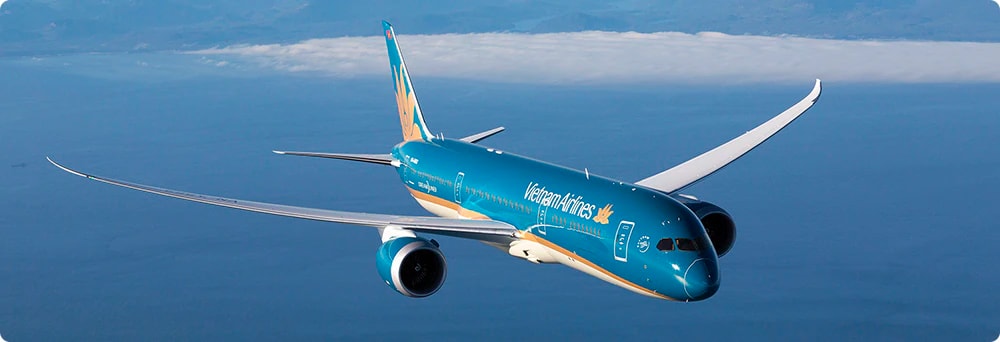
Can you fly to Hoi An? (Source: Vietnam Airlines)
How to get to Hoi An Ancient Town?
In Hoi An Ancient Town, there is no airport available for travelers. Therefore, you typically arrive at Da Nang International Airport, located in the city of Da Nang, which is approximately 40 kilometers away.
BOOK A FLIGHT
Once at Da Nang International Airport, visitors have several transportation options at their disposal, including express coaches, buses, taxis, and more, to reach your intended Ancient Town.
How to travel around Hoi An Ancient Town?
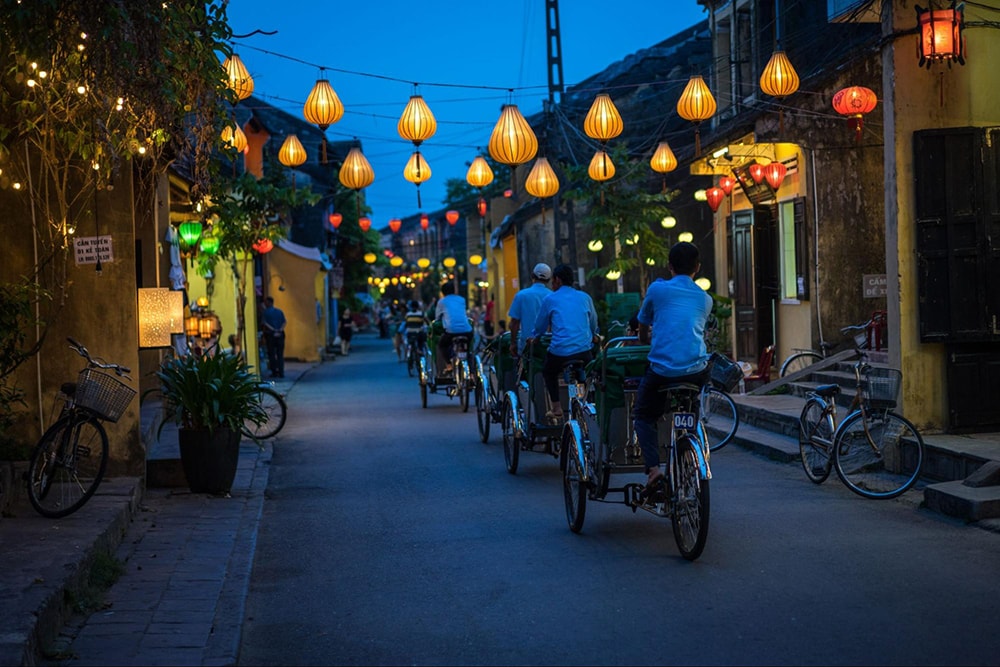
Take a cyclo around the ancient town
Once you reach the center of the Ancient Town, you might select one of the following transportation options. Just note that motorized vehicles are restricted from entering the town during specific hours. However, bicycles, electric scooters, cyclos, and walking as means of transportation are still allowed.
Note: Please note that prices as shown are valid at the time of publication and are subject to change without prior notice.
Other tips to explore Hoi An Ancient Town to the most
Below are several important considerations to keep in mind when planning a visit to Hoi An Ancient Town in order to ensure a smooth and enjoyable trip:
Check the weather forecast before the trip: check the weather forecast and ensure appropriate attire is prepared;
Carry local currency while traveling: ensure you possess sufficient Vietnamese Dong (VND) in cash for smaller purchases and street vendors. ATMs are typically accessible throughout the town;
Learn some basic Vietnamese words and phrases: enhance your communication experience by learning and practicing key Vietnamese phrases such as greetings, expressions of gratitude, and inquiries about pricing;
Be assertive: politely decline unwanted offers with "Không, cám ơn" (No, thank you). Sellers appreciate the genuine interest;
Bargain respectfully: compare prices across shops before buying souvenirs. Maintain politeness and understanding during price negotiations. Tipping is not customary in Vietnam;
Support local crafts: opt for authentic souvenirs made by local artisans to preserve traditions.
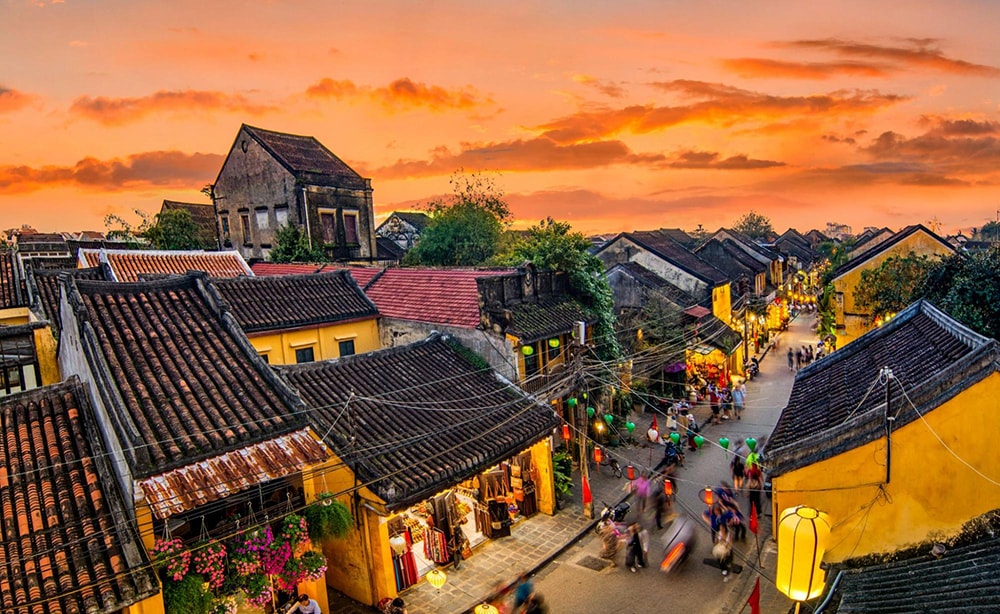
A glance at Hoi An ancient town’s corners from above
If you have a chance to visit Hoi An Ancient Town in the near future, you will not regret it. The town offers an enthralling expedition immersed in cultural heritage and historical importance, featuring the dynamic streets, time-honored architectural marvels, and hospitable residents of Hoi An are bound to make an enduring impression on your soul!
About Collection and Use of Personal Information
Passengers are required to have adequate travel documents for all flights on all concerned airlines and to abide by national laws and regulations. Vietnam Airlines does not take responsible if passengers are denied entry into any country.
Please visit here for more details.
Agreement Policy
YOU ARE ABOUT TO LEAVE VIETNAMAIRLINES.COM
Otp verification.
This website is using cookies. For the best possible web experience, please provide your authorisation to use our cookies and to permanently remove this message
Click here to find out more about the cookies we use and how to manage them

A Luxury Ambassador Halong Bay Cruise In Vietnam
“So well run,” says the London couple celebrating their 30th anniversary aboard our Ambassador Halong Bay cruise. The family of 14 dining nearby – reuniting from Atlanta, San Diego and Ho Chi Minh City (the former Saigon) — joyfully proclaim the food, “Delicious!” Brothers from Melbourne praise the friendly young staff and “excellent service.”
Cruising Vietnam’s Halong Bay in the Gulf of Tonkin is a bucket list adventure for travelers from around the world. Picture yourselves superimposed on an Asian landscape painting – the backdrop of emerald green water and mist-shrouded mountains is epic.
Why Halong Bay Is a Must-See Destination
Halong Bay is one of the world’s best examples of limestone eroded by the sea and wet tropical climate. Pillars, towers, cones and cave shaped karst formations blanketed in green jut from crystal-clear waters. These unusual formations earned it a UNESCO World Heritage designation in 1992.
Located in the north of Vietnam in the Gulf of Tonkin, the 43,400-hectare (167 square-miles) geological and biological wonder comprises 1,600 islands and islets. Travelers from around the world come to take selfies in the Instagrammable landscape that attracts thousands of honeymooners annually. Some visitors look for the location of the tragically romantic, Oscar-winning 1992 film starring Catherine Deneuve, “Indochine.” Others seek out clues to Peter Jackon’s action-packed, blockbuster “King Kong: Skull Island” (2017).
Ambassador Cruises runs two of the very few five-star cruise ships plying Halong Bay. Mulitgenerational families and all ages will appreciate itineraries that spend one, two or three relaxing days at sea.
Day Tripping Halong Bay on a 1 Day Cruise
A cruise on Halong Bay is the perfect way to sample Vietnam’s most famous national heritage site. The 165-km (102 miles) drive east from Hanoi to Ha Long takes about 2.5 hours thanks to a highway completed in 2018. It’s possible to make the journey as one very long day trip.
But spending just a day cruising Halong Bay is simply not enough. True, the new Ambassador Cruise II (built 2021) provides a fine day cruise option for up to 500 guests. Ship geeks will appreciate the workmanship of the 500-ton steel craft. Five decks and a basement measure 90 meters long, 16 meters wide and 19 meters high.
Larger than its many competitors, Ambassador II’s sleek design and onboard amenities appeal to those looking for a more upscale experience. The ship’s size appeals to those afraid of getting seasick on the calm bay. The mobility-impaired have an elevator. Selfie-takers will love the over-water glass bridge jutting 20 feet out from the bow. Guests enjoy soaking in the large jacuzzi as the boat sails past karst obelisks. Be sure to leave plenty of time to indulge in fine dining at two restaurants and two bars, one with live music.
Day-trippers sail by Ho Dong Tien Cave, Trong Cave, Me Cung Cave and the Cua Van Floating Village. The only stop at Titov Island is reached by tender. Go for a swim or ascend hundreds of steps for the best views overlooking the bay.
Onboard an Overnight Ambassador Halong Bay Cruise Ship
We traveled as guests of Ambassador Cruise Lines. Given our limited schedule, we opted for a one-night cruise aboard the smaller Ambassador Cruise I . Its ideal size — 120 beds in 46 cabins — guaranteed plenty of distractions for families but never a wait for meals or activities.
Cabins of dark teak wood are very spacious. Deluxe ones have a comfortable seating area, large closets, a grand bathroom and a stock of bottled water in glass bottles. Picture windows and comfortable balconies provide endless views of Halong Bay – just what we came for.
However, that view can be compromised. Environmental concerns are very real. Rain and wind can drive plastic and other debris out into the bay from shoreline villages – a very dismaying sight. Thousands of cruise ships and fishing vessels do their part in tossing litter overboard as well. Single use plastics are banned on the bay and Ambassador refills your waterbottle at meals. But there is much more to be done.
Ambassador Cruise’s Attention to Detail
Attention to detail makes every Ambassador Halong Bay cruise a classy experience. Passengers crossed the gangway under a hand-tossed cascade of rose petals. In the Piano Lounge, Jason Le, the activity director, greeted us in fluent English as well as Vietnamese and put everybody at ease.
Our luggage and the day’s schedule waited in our cabin. At the elaborate seafood lunch buffet, a crew member asked about food restrictions. She noted my allergy to coriander, often served raw to garnish Vietnamese dishes, and brought me special portions, when needed, of each dish.
The always attentive service guaranteed that tenders were ready for excursions with a life jacket at every seat. A chilled washcloth and a glass of ginger tea with lemongrass greeted us as we reboarded the ship.
Why Choose a One-Night Halong Bay Cruise
Ambassador I sails one- and two-night itineraries. The one-night cruise includes optional excursions to visit a pearl farm (and shop for jewelry, of course.) Alternatively, take two-person kayaks out on the calm bay to explore the shoreline.
Later, the ship calls at Titov Island , named for a cosmonaut who dedicated the touristic development with then-President Ho Chi Minh. We found Asian guests like to swim at the crowded sand beach while Westerners hiked up to a temple for panoramic vistas of the bay.
Staying overnight means that after your excursion, you can lounge on the ship’s sun deck, enjoy happy hour, take a cooking class or just nap.
The favorite excursion on any Ambassador Halong Bay cruise is to Sun Sat Cave . Steps to access the entry make it unsuitable for the mobility impaired. But if you’re unsure whether it’s worth the climb, trust us — the enormous geological wonder constantly surprises. Explore each turn to find new twists, tunnels, caverns and spooky vistas.
Why Choose a Two-Night Halong Bay Cruise
Families who stay an extra day sail a different itinerary, deeper into the Bay. They see more sights and explore other caves. Most important, the ship sails farther away from the many other tourist cruise ships plying Halong Bay.
Multigenerational families appreciate the extra time for more activities together. Try squid fishing after sundown. Kayak the bay and visit a local fishing village with your guide. Enjoy the spa treatment or Vietnamese massage we were too busy to try. Children of all ages appreciate the rare chance to chill out and reconnect with family, WiFi-free, for another 24 hours.
Many just relax. We noted more than a few dads who got onboard, took a long nap and awoke only to eat and disembark. (Luckily, they woke up to eat.)
Dining is a Fine Art on this Ambassador Cruise
Ambassador Cruise launched its first vessel in 2018 with a dinner catered by a Michelin-starred chef. They have kept an elevated approach to dining ever since, serving delicious, healthy and varied cuisine included in rates. The friendly staff ask about and respect religious and/or vegetarian preferences among the international crowd.
Passengers are greeted with a breakfast buffet of Western and Asian foods, ranging from congee rice porridge to steamed buns and fresh pastries.
Don’t miss the lunch buffets designed for seafood lovers. Sample crispy prawn, grilled oysters, squid salad and green mussels in the Vietnamese style, or more Continental fare such as grilled sea bass.
Dinner is more formal, dare we say romantic, with an a la carte menu. This is the time to watch and marvel at the multigenerational families gathered at large tables. Wine, cocktails and beverages are available for a fee.
Savor the Journey to The Ambassador Halong Bay Cruise
Getting to Halong Bay on their luxury transport is part of the fun for families. A comfortable, air-conditioned shuttle is included in all rates. These black and gold minibuses whisk guests straight from their hotel to the port of Ha Long through Hanoi’s Old Quarter and the New City. The landscape suddenly turns rural, revealing Vietnam’s lush rice paddies.
When the view wears thin, restless kids can log on to WiFi and distract themselves. The two rest stops, huge and spotlessly clean, feature snack, lunch and coffee stalls. Vast supermarkets are cultural attractions packed with fresh and dried fruit, biscuits, chocolates and savory chips in unimagined flavors. Packaged foods, most produced for export, are all safe to eat.
On arrival in Ha Long, check your luggage, get stateroom keys and take a closer look at the port. Condos are popping up along the shoreline as weekend homes for Hanoi’s affluent families and foreign investors.
Just like the elegant Ambassador Halong Bay cruises, the sleek transport, sophisticated highways and contemporary real estate are all signs of Vietnam’s rapid transition into an international destination.
Trip Planning Details for an Ambassador Halong Bay Cruise Vacation
Any hotel concierge or travel agent can arrange your Ambassador Halong Bay Cruise. Or, you can book it yourself at their website . Their multilingual agents are helpful and can be reached at [email protected] or by phone at +84 1900 3045 from within Vietnam.
Rates vary according to the duration of your cruise and size of your party. Several packages with spa, flightseeing and other add-ons are available on the website. For basic rates, the Ambassador Cruise II is priced from US$92 per person. Overnight Ambassador Halong Bay on Ambassador Cruise I start at US$180 per person in a double room; kids pay about US$80 depending on the age.
Advance booking, especially during weekends and school holiday periods, is strongly advised.
The post A Luxury Ambassador Halong Bay Cruise In Vietnam appeared first on My Family Travels .

23 things to know before visiting Vietnam

Aug 7, 2023 • 10 min read

Read on for all the key things to know before you visit Vietnam © Elizaveta Galitckaia / Shutterstock
Adventures abound in Vietnam . You can climb the heights and scuba dive the lows, immerse yourself in culture or just kick back on the sand, confident in the knowledge that a fantastic meal is waiting for you at the end of the day. But there are things to know before you go, to avoid pitfalls in paradise. These are our top tips.
1. Pack for the climate
Perhaps the most important consideration when planning a trip to Vietnam is the weather. The south of the country sits firmly in the humid tropics, but the climate becomes increasingly temperate as you head north, and the highlands around Sapa can be downright chilly in winter. If you plan to visit both halves of the country, bring some clothes for the cooler highlands as well as the steamy Mekong Delta .

2. Be rain ready
Vietnam is soaked by the southwest monsoon from May to September and the northeast monsoon from October to April, so check the weather in the areas you plan to visit. Trekking in the northwest and boat trips in Halong Bay , for example, can be a soggy experience in July and August, but this is a great – if popular – time to bask on the central beaches. Even in the rainy season, it doesn’t rain all day, every day, so bring a raincoat or umbrella and make the best of the smaller crowds and lower prices.
3. Investigate the visa options
There are numerous ways to arrange the paperwork for a visit to Vietnam, some cheaper and quicker than others. You may not need a visa at all for a short trip, and electronic visas and visas on arrival are available for many nationalities – much less hassle than going to the embassy in person. Read up on the visa requirements before you book your flights, to avoid paying more than you need to, or getting held up by red tape.
4. Get your jabs
As with anywhere in the tropics, there are tropical illnesses to be aware of in Vietnam. See your doctor at least a month before you travel to get up to date with vaccinations, and arrange anti-malarial medication if you plan to visit rural areas.
Mosquitoes can also carry dengue fever, so bring repellent. On arrival, avoid drinking tap water and use antibacterial hand gel to reduce the risk of stomach bugs; a medical face mask can reduce the risk of respiratory infections and help with pollution in big cities.

5. Book ahead for Tet and the holiday peak
Booking transport, accommodation and tours ahead of time is not essential, but it’s a good way to avoid disappointment if you come at a busy time , such as July and August on the central coast. If you plan to be in Vietnam during the Tet (Lunar New Year) festival in late January or early February, having transport and accommodation in place before you arrive is a very sensible precaution.
There is a caveat, however – book directly with operators where possible. If you go through an agency, you’ll pay more, and some travelers have reported not getting the services and standards they were expecting when booking through third parties.
6. Factor sleeper buses and trains into your itinerary
Domestic flights in Vietnam are inexpensive but there are less polluting alternatives. When planning long-distance travel , don’t overlook the country’s overnight trains and buses – you’ll save the cost of a night’s accommodation and cover big distances, without eating into your sightseeing time. Reserve a fully horizontal berth for a more comfortable night’s sleep – both buses and trains have them. The booking site 12Go Asia is a good place to start investigating the options.
7. Give Vietnam the time it deserves
Vietnam measures 1650km (1025 miles) from the Chinese border in the north to the Mekong Delta in the south, so you’ll need plenty of time to get from A to B. Road and rail transport can be slow, and there are lots of places where you’ll want to stop as you travel between the major hubs. If you only have a short time, focus your itinerary on a small area – Hanoi and around, say, or Ho Chi Minh City (HCMC) and the Delta.
8. Respect religious spaces
When visiting Buddhist, Hindu, Confucian and Taoist temples, churches and other religious buildings, dress respectfully – it’s best to cover your legs and upper arms, and you may need to take off your shoes and hat to enter. Never touch anyone on the head, and avoid pointing the soles of your feet towards another person or any Buddhist statues – both signs of disrespect in Buddhist culture.
9. Don’t lose face
As in many other parts of Asia, Vietnamese culture places considerable emphasis on "saving face" – in other words, avoiding situations that might cause individual or collective loss of dignity and respect. Public outbursts and arguments can cause everyone involved to lose face, so keep a sense of perspective, and try not to get angry when confronted by inconveniences as you travel.

10. Do right with your chopsticks
There are several taboos associated with using chopsticks. Leaving your sticks sticking upright in a bowl of food is considered unlucky, as it resembles offerings of incense sticks made for the dead. Using chopsticks of uneven length is also frowned on, as is tapping your bowl with your sticks (associated with beggars requesting alms). If you eat in a group, use clean chopsticks (or the reverse ends of your own chopsticks) to pass food to others.
11. Eat like a local
Food is practically a religion in Vietnam, but locals focus their energy on the evening meal, where multiple dishes are shared between diners, with the whole family getting involved. Rather than ordering a single main course, choose a spread of dishes for the table and sample a rich mix of flavors and textures. If you need a boost between meals, street food snacks can be found everywhere, or just grab a nutritious sinh tố (fruit shake) or a cup of local drip-brewed ca phe (coffee).
12. Don’t go overboard with displays of affection
Public displays of affection are not a big part of Vietnamese culture, for couples of all orientations. Kissing, hugging and even holding hands in public can raise eyebrows, so tone down the romantic gestures while you’re in the country. On the plus side, despite lingering legal inequality, LGBTIQ+ couples generally face few problems in Vietnam, and Hanoi and Ho Chi Minh City (HCMC) both have lively scenes.

13. Be a respectful photographer
Always ask before taking photographs of people, particularly in minority villages. Many people find it intrusive, and by asking first, you’ll know if people are comfortable being included in your travel photos. In tribal areas, some villagers ask for payment for photos, which is fair enough... how would you feel if strangers kept sticking a long lens into your front porch?
14. Don’t get dragged into Vietnamese politics
Another time to think twice before pulling out your camera is during public demonstrations and political rallies. Critics of the government can face harsh punishments – demonstrations in 2018 against laws allowing the authorities to monitor online communications led to over 100 arrests. Play it safe – steer clear of political gatherings and avoid conversations about politics with local people.
15. Be a fair bargainer
Haggling is a fact of life in Vietnam, particularly at markets and souvenir shops, and you may pay over the odds if you accept the first price suggested. However, bargaining should never be a confrontational process – treat it as a game and counter the starting price with a lower counter offer, and see how the seller responds. With a bit of back and forth, you should reach a mutually acceptable price – and if you don’t, you can always decline politely and try another vendor. There’s little point haggling over tiny sums of money – if you pay 5000 dong (US$0.20) over the going rate, consider that you can probably afford it.
16. Know your loos
Western-style sit-down toilets are increasingly common in Vietnam, but you’ll often have to pay to use public loos, and paper is rarely provided. Carry your own, or use the hose or water jug provided. Bring antibacterial hand gel or soap; many bathrooms only provide running water.
17. Don’t let touts take you for a ride
Commission-seeking middle men (and middle women) pop up almost anywhere tourists gather, and Vietnam has its share. Be wary of touts who encourage visitors to use certain tour agencies, hotels, shops and transport companies in touristy parts of Hanoi, Ho Chi Minh City and Hoi An. If you use their services, you’ll pay more to cover their fee.

18. Avoid the sex tourism industry
Sex tourism is an unwelcome legacy of the American War, but it’s usually easy to spot – and avoid – places where the sex trade takes place. Be wary of bars, karaoke lounges and massage parlors with scantily clad staff and lots of pink or red neon. Note that some hotels refuse to allow foreign men to share rooms with Vietnamese women – which can lead to headaches for genuine couples with an Asian partner.
19. Give drugs a pass
Illegal drugs aren’t hard to find on the traveler circuit in Vietnam, but the penalties, if you’re caught by the police, can be severe – even for possession of small amounts. Many travelers have ended up in Vietnamese jails for drug offenses, and the death penalty can be applied in drug cases. If you are inclined to toke while you travel, it’s only a short hop to Thailand , where the consumption of marijuana in food and drinks has been decriminalized for now.
20. Shop responsibly
Vietnam has some wonderful crafts and art forms that make for great souvenirs, but stick to modern pieces; it’s illegal to take antiques out of the country. Also be watchful for souvenirs made from animal parts, such as shell, horn, bone, teeth and feathers. Such items are usually taken from wild animals, and you could fall foul of the Convention on International Trade in Endangered Species (CITES) .
21. Be smart about crime, not anxious
Opportunistic crime can occasionally be a problem, particularly in crowded cities where pickpockets and bag-snatchers on motorcycles take advantage of the unwary, but this isn’t a problem unique to Vietnam. Activate your big city precautions, and watch your belongings on busy public transport or in bars and cafes (using a phone or laptop at an outside table is unwise). Handbags with a single strap are a popular target for ride-by bag snatchers – a daypack or messenger bag is a better option.
22. Be wary of American War ordnance
Horrifying volumes of munitions were dropped over Vietnam during the American War, and unexploded ordnance continues to kill and maim people every year. Well-traveled areas are usually safe, but be cautious about stepping off roads and paths in rural areas. Don’t climb into bomb craters and never touch old explosive devices – they can remain deadly for decades.
23. Be typhoon smart
Vietnam is hit by periodic typhoons between May and November, with the biggest risk of storms from August to September. If you travel during the typhoon season, monitor local weather reports, and head inland from the coast if a direct hit by a big storm is predicted. In the event of flooding, contact your embassy or consulate and follow advice from the local authorities.
Explore related stories
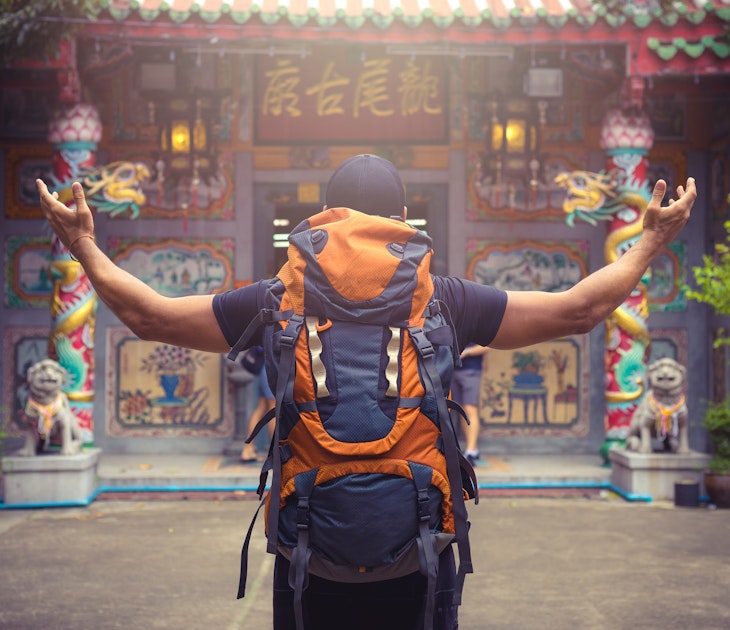
Festivals & Events
Apr 8, 2024 • 6 min read
With three seasons – hot, rainy and (comparatively) cool – Bangkok offers very different experiences throughout the year. Here's the best time to visit.
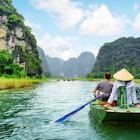
Mar 14, 2024 • 10 min read

Feb 24, 2024 • 8 min read

Feb 23, 2024 • 7 min read

Feb 22, 2024 • 5 min read

Feb 3, 2024 • 7 min read
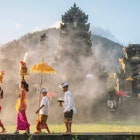
Jan 17, 2024 • 6 min read

Jan 17, 2024 • 8 min read

Jan 11, 2024 • 4 min read

Jan 5, 2024 • 20 min read

COMMENTS
10. Ha Giang. Best for mountain views. Trekking to the minority villages in the hills around Sapa is one of Vietnam's top draws, but the country's trekking capital feels rather commercialized these days. Hikers have to walk further every year to find the rural idyll that first drew people to the northwest.
12. Enter the world's largest cave in Phong Nha. Phong Nha-Ke Bang National Park in north central Vietnam is a lost world of jungles and caverns, including the world's largest, Hang Son Doong. The scale of this wonder of nature is simply mind-blowing - a 747 airplane could fly through the cave's main tunnel.
4. Phong Nha-Ke Bang National Park. Phong Nha-Ke Bang National Park. One of the best places to visit in Vietnam for caving, World Heritage-listed Phong Nha-Ke Bang National Park is a dramatic karst mountain formation honeycombed with huge caverns, which are home to superb stalactite and stalagmite displays.
Table of Contents. The Best Things to Do in Vietnam. 1) Explore the World's Biggest Caves in Phong Nha. 2) Check Out Vietnam On a Motorbike. 3) Learn About the Local Culture. 4) Cruise the Mekong Delta. 5) Sandboard Down the Sand Dunes in Mui Ne. 6) Walk the Streets of Hoi An Ancient Town. 7) Go on a Vespa Tour.
There are over 500 caves in Phong Na, but only 30 are accessible to visitors. The most popular are the Phong Nha Cave, Tra Ang Cave, Paradise Cave, Dark Cave, Hang E Cave, Elephant Cave, Hang Over Cave and the Son Doong Cave. Some are easily accessible while others require a guide and even a zip line across a river!
4. Hike Hang Múa Peak in Tam Coc. The natural paradise of Tam Coc, a small town in the beautiful Ninh Binh Province, is one of the best things to do in Vietnam. Here, hundreds of limestone karsts tower out over calm rice paddies. As a result, the area has been famously nicknamed 'Ha Long Bay on land'.
1. Hanoi. Hanoi is the capital of Vietnam and is the second-largest city in terms of population (Ho Chi Minh City is number one). It is the jumping-off point to visit the beautiful surrounding areas of Sapa, Halong Bay, and Ninh Binh, but it's worth spending a few days in this bustling city as well.
Vietnam's best sights and local secrets from travel experts you can trust. Lonely Planet. Destinations. Planning. Inspiration. Shop. Search. Saves. Open main menu. Vietnam ... Must-see attractions. War Remnants Museum. Ho Chi Minh City. To understand the US invasion of Vietnam, and contextualize its devastating impact on the country's civilians ...
6. Lake of the Restored Sword (Hoan Kiem Lake) 13,685. Bodies of Water. Admission tickets from ₹412. A rare breed of turtle enjoys this popular lake almost as much as countless locals and tourists. Hoan Kiem Lake is a dynamic daily tableau, from morning walks amid locals doing exercises on the shore, to young couples water-gazing on park ...
Here are the top 10 places to visit in Vietnam nominated in 2022. Map of the best places to visit in Vietnam. 1. Ha Long Bay. Off Northeast Vietnam, Ha Long Bay was designated as one of the World Heritage Sites in 1994. For many reasons, Ha Long Bay has to be on your list when you travel to Vietnam. Having been known for thousands of limestone ...
Best Places to Visit in Vietnam Map. 1. Ho Chi Minh City. Ho Chi Minh City is a modern metropolis full of history, tourist attractions, and it is a great place for you to start your journey in Vietnam and get the hang of what the country is all about. The city itself is like any other big city in Southeast Asia: it comes with traffic jams, is ...
Ha Long Bay. The discovery of Ha Long Bay is a must for any traveler who visits Vietnam for the first time. Ha Long Bay, located in the Gulf of Tonkin, within Quang Ninh Province, is 165 km from the capital Ha Noi. Historically, the name Ha Long represents a myth of a dragon that flew down from heaven to protect the Vietnamese people from invasion.
Spend a few days in its urban centres, and you'll see why so many travellers are taken with Vietnam's captivating energy. In the streets and you'll encounter chaotic markets and colonial-era cafes, sparkling malls, hip rooftop lounges, and tidy boutiques. At least once in your stay, do as the locals do and enjoy an evening of barbecue and beer ...
21. Ba Be National Park. Shades of green, with a pop of blue. With postcard-perfect views and many endangered animals, including the Asian black bear and short-tailed pangolin, Ba Be National Park is a beautiful place to visit in Vietnam. It's made up of lush forests, towering karsts, and serene lakes.
9. Go to church, Vietnamese-style. Worshippers inside Cao Dai temple (Shutterstock) Tây Ninh, a busy town on the Mekong Delta, is perhaps the most unlikely holy city on the planet. Here, amongst the busy streets stalls and noisy traffic sits Cao Dai Temple, the Holy See of the Cao Dai religion.
Live fully in Vietnam. Vietnam opens its door widely to welcome visitors all around the world! Starting from 15th August 2023, Vietnam extends e-visa validity to 90 days and unilateral visa exemption will be valid in 45 days! We are more than happy to welcome you all here and admire our stunning landscapes, free your soul on white sandy beaches ...
Top 5 Things to See and Do in Vietnam. 1. Tour the Mekong Delta. The delta is a 60,000-kilometer (37,000-mile) long web of interconnected waterways, which spans three Vietnamese provinces and has been used since the 4th century BCE.
Ninh Binh has long enchanted visitors with a melding of sacred temples, serene countryside, and dramatic karsts. Three elements come together to render this one of Vietnam's top heritage sites: the Hoa Lu Ancient Capital -- the national seat of power in the 10th and 11th centuries -- the Trang An Scenic Complex, and the Hoa Lu Forest.
Hanoi is the capital and largest city of Vietnam, and it is a must-see destination for anyone visiting the country. Here are some of the top things to do while exploring Hanoi: ... Contact Vietnam Travel for more details and the best offers. A Vespa tour is a great way to see the sights of Hanoi and Saigon. You can zip around the bustling ...
More comfortable than buses and cheaper than flights, train travel is another option for getting around Vietnam. A railway line spans the length of the country, following the coastline from HCMC all the way to Hanoi and beyond. It's a must for rail enthusiasts, with the ride considered amongst the most amazing train journeys in the world.
Cao Bang - Ban Gioc Waterfall. 7. Halong Bay. 8. Cat Ba Island. 1. Hanoi. It is undoubtedly that Hanoi is definitely a must-visit place in North Vietnam. Its well-preserved French colonial buildings, ancient oriental pagodas, historic temples, unique museums, peaceful lakes and a lot of other amazing spots will leave you enchanted.
Vietnam is a country steeped in history and culture, with a breathtaking landscape that captivates all who visit. From the bustling streets of Hanoi to the tranquil waters of Halong Bay, this enchanting journey through Vietnam is a must-experience travel adventure. Get ready to immerse yourself in the vibrant street food scene, explore ancient ...
1. Tam Coc. Image Credit: Hoang Giang Hai for Wikimedia Commons. Located near Trang An, Vietnam, Tam Coc is one of the best places to visit. Tam Coc means 'three caves'. It is named after the three caves in the region, which you can see during a boat ride. The place is also popular for its limestone formations.
>>> Read more: 20 Most Must-see Places to Visit in Hoi An "Must-Try" Dishes in Hoi An. Hoi An cuisine is a delightful blend of Vietnamese, Chinese, and European influences, resulting in a distinct and flavorful culinary experience. The town's rich history as a bustling trading port has contributed to its diverse range of dishes and ingredients.
For basic rates, the. Ambassador Cruise II. is priced from US$92 per person. Overnight Ambassador Halong Bay on. Ambassador Cruise I. start at US$180 per person in a double room; kids pay about US ...
1. Pack for the climate. Perhaps the most important consideration when planning a trip to Vietnam is the weather. The south of the country sits firmly in the humid tropics, but the climate becomes increasingly temperate as you head north, and the highlands around Sapa can be downright chilly in winter. If you plan to visit both halves of the country, bring some clothes for the cooler highlands ...
1,562 likes, 27 comments - vietnamtravelers on May 24, 2024: "Hanoi train street is a must visit when in Vietnam ️ Is Vietnam on your 2024 bucket list? : @wellness.amber Vietnam".